Plan, Ready, Go®

How to Plan a Travel Itinerary: The Complete Guide
You’ve chosen your destination, booked your transportation, and maybe even your accommodations. Now…you just have to figure out what in the world you’re going to do while you’re there.
In this post, we’re going to take a deep dive into how to plan a travel itinerary , the nitty-gritty of how to put together your schedule of sites, museums, and activities.
Key takeaways
- Prioritize and list your “must-do” sites and activities.
- Do thorough research on your destination
- Organize your wish list into “must-do,” “want-to-do,” and “nice-to-do” categories.
- Compile all the practical details for each activity, such as operating hours, fees, and booking requirements.
- Build your itinerary by scheduling must-do activities first and filling in with want-to-dos and nice-to-dos.
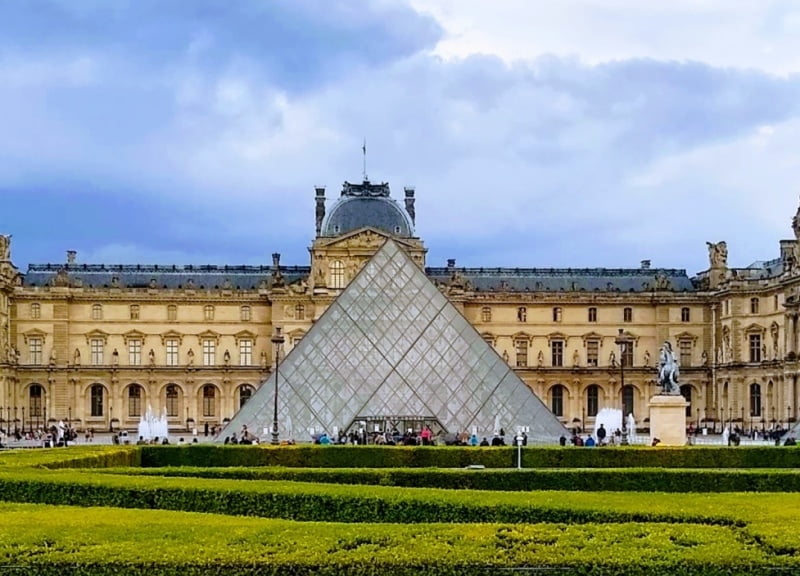
This post includes affiliate links. If you make a purchase through one of these links, I may earn a small commission at no additional cost to you. As an Amazon Associate, I earn from qualifying purchases. See disclaimer.
I’m a very detail-oriented kind of person (you know, the kind of person who makes lists for EVERYTHING), so this method of itinerary planning may not be of interest to the fly-by-the-seat-of-your-pants kind of traveler.
If you’re not as hyper-organized as I am, you can easily modify this method for how you like to travel. It’s logical itinerary planning at its best.
I won’t be going over in this post how I research and plan for dining options since that’s a more complicated topic for me and my husband (as a celiac and a vegetarian) than the average traveler.
That’s probably a topic for a separate post. So, let’s get planning.
Getting started on your itinerary planning
“I’m heading to Rome/New York City/Paris/Mexico City for X number of days. What should I do and see while I’m there?”
I see similar questions all over Facebook literally every day, and I understand why. It can be overwhelming to plan a travel itinerary.
Let’s say you’re planning to spend five days in New York . How do you decide what to do for those five days? Where do you even start your search for the best ideas for sites to visit?
Side note: for simplicity’s sake, throughout this post, I’m going to use the word “site” to refer to anything (not eating) that you will want to make time for on your trip. These could be monuments, national parks, palaces, museums, activities, guided tours, etc.
There’s no real wrong way to plan your itinerary…just kidding. You have to do it my way.
No, seriously.
Okay…let’s get started.
When I’m planning a travel itinerary, I go through five phases of the process before I arrive at my final draft.
- Preliminary brainstorming
- Destination research
- Fleshing out my wish list
- Site/activity research
- Building my itinerary
I know this seems like a lot, but trust me, you’ll want to know you’ve considered all your options before you go on your trip.
You’ll thank me later.
Read More → Travel Planning Resources
Planning an itinerary starts with brainstorming your wish list
So, you’ve booked your trip, but your itinerary is completely blank. Your destination is your oyster, but where and how do you start?
Your first step is to do some preliminary brainstorming. If you’re heading to a top tourist destination, you probably already have some idea of the specific sites you want to visit (e.g., the Colosseum, Eiffel Tower, Chichen Itza, etc.).
If you’re going someplace completely unfamiliar to you, your brainstorming phase may be quite short but it can also be less specific if that helps (e.g., important historical sites, whatever the most important art museum is, popular beach, etc.).
To help yourself with your brainstorming, you can ask yourself the following questions:
- What are the famous/popular sites my destination is most known for?
- What are the top, must-do sites or activities I already know I want to do on this trip?
- Why are my spouse’s/travel partner’s must-do sites or activities for this trip? If children are traveling with you, why not include them in the brainstorming? They’ll love feeling like they’ve been a part of planning the trip.
- What are the kinds of activities we most enjoy while traveling in general?
Great! Write all of this down. Don’t worry. Nothing’s set in stone yet.
And the sky’s the limit. We’re not yet worrying about the costs involved or how much time we have.
Write it all down. Go ahead. I’ll wait.
[cue Jeopardy! theme music]
Okay, keep this list handy; it’s time to do some basic research on your destination.
TIP: Keep track of all of your important travel details with a digital travel planner like this . Prefer paper planners? Grab your printable travel itinerary planner pages here.
Research your destination
This is where I start to go crazy with research. I’ll take in anything and everything I can about my destination. The more good information I have, the better equipped I am to make good decisions about my itinerary.
And don’t assume you already know enough about where you’re headed.
Before I started researching Paris, I had never heard of Sacré-Coeur (which is one of the great free things to do in Paris , by the way) or Les Invalides.
We ended up visiting both on our trip.
Here are the questions I keep in mind as I do this research:
- What is my destination known for? Is it art, the natural landscape, history, architecture, etc.?
- What season will it be at my destination? Are there any popular seasonal activities I’d like to try while I’m there?
- Are there any special holiday events or festivals taking place there that I’d be interested in attending?
- What is the weather typically like there that time of the year and month? In other words, will I be comfortable spending long periods outdoors, or will I want to spend more time indoors?
- What are the public transportation options at my destination? Is there a good metro/public transportation system or will I have to rely on taxis, ride-sharing, or walking to get around?
- Where are my accommodations in relation to the major site on my list?
- Does my destination offer any kind of city or museum pass?
Side note: If you haven’t yet booked your accommodations, now is a good time to take a look at a map. Do a large number of must-do sites on your wish list cluster in a certain area? If so, you might want to consider booking accommodations nearby to simplify your transportation needs. This isn’t always a good idea but consider it.
Read More → Is it Worth it to Use Booking.com?
Read More → Booking.com or Direct with Hotel: Which is Better?
Where do I find this information? Here are a few suggestions:
- Do some simple Google searches and look around the different results for up-to-date information about your destination.
- Head over to Pinterest to discover what travel bloggers ( ahem ) have to say.
- Buy some good travel guidebooks and start reading.
- Watch YouTube videos about your destination.
- Armed with this pile of new information, you’re going to go back to your list.

Flesh out your wish list
As you researched your destination, you likely noticed certain sightseeing ideas or recommendations coming up over and over again.
- If they’re already on your brainstorm list, great! Leave them there.
- If you’ve never heard of or considered them, but they now sound interesting, add them to your list.
- If there’s something you’ve changed your mind about, go ahead and take it off your list if you really want to, otherwise, leave it on the list. You can always remove it later.
It’s okay at this point if your list has far more ideas on it than you can possibly fit into your trip. We’ll work on narrowing it down later.
After doing my research, I discovered a lot more ideas for things to do in Paris and sites to visit than were on my first brainstorming list. But…what if you’re finding the opposite to be the case?
What if you’ve booked yourself a round-trip plane ticket to your destination, but you’re finding only enough you’re interested in doing to fill a much shorter time than you’re planning to be there?
You have a couple of options:
- If you haven’t booked your accommodations yet, or you can still change/cancel your reservation, consider adding a destination to your trip. For example, if you’re flying into and out of Zurich, Switzerland, but are finding more that interests you perhaps in Lucerne (or beyond), consider spending at least a portion of your trip outside Zurich.
- If you have booked your accommodations and your reservation cannot be changed, consider adding day trips to your itinerary. For example, if you’re staying in Florence, Italy, you could take the train to Pisa or Lucca for the day.
By now you should have a good sense of what your itinerary could look like; it’s starting to take shape.
Specific site or activity research
Okay, so you have this beautiful, and probably fairly lengthy list of things you’d like to see and do on your trip.
Now you get to do research on each of these items individually. Yay! Seriously…I love this part.
To start, you’re going to break down your wish list into four sections. If your list is pretty long, you can re-write it into these four sections, but if it’s on the shorter side, it’s okay to do this mentally.
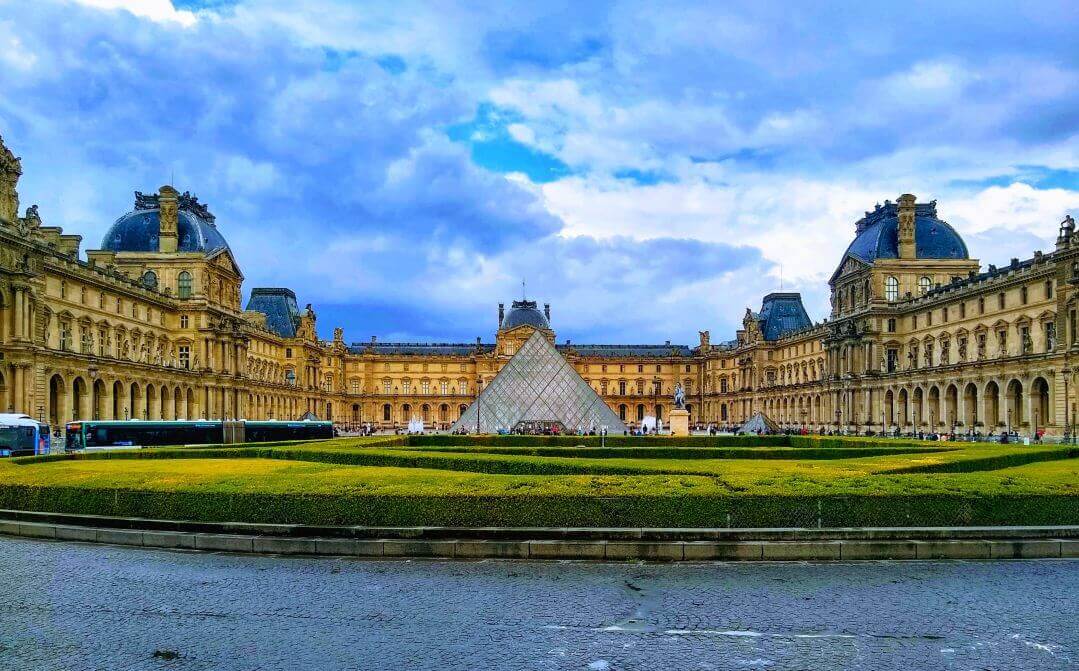
Must-do sites.
These are the places people traverse the globe to see…the Eiffel Tower, St. Peter’s Basilica, the Pyramids of Giza, Great Wall of China. You get it.
These are the non-negotiable ones. They go in the itinerary no matter what.
Want-to-do sites.
These are the second-tier sites for your trip, the things you want to make room for, but won’t necessarily dissolve into tears if you can’t manage it.
Examples from my travels would include the Rodin Museum (Paris), Trevi Fountain (Rome), or walking the entire High Line in New York City.
Nice-to-do sites.
These are the minor sites and activities that will become the filler in your itinerary. On my itineraries, these are things like “sit on the Spanish Steps” or “buy cheese from a fromagerie.”
I don’t care if we do this or not.
These are the sites that are first on the chopping block once we start to build the actual itinerary. Or you may have cut them already once you did your destination research.
Now that you have your sites grouped, the next thing to do is your research. For at least each of your must-do and want-to-do sites you need to know the following:
- What days of the week is it open and what are the operating hours?
- What is the entrance fee (if any)?
- What is the best day of the week to visit?
- Do you need to book tickets or make a reservation ahead of time? If so, how far in advance can you book/should you book?
- Where is it and how do I get there? I especially want to know how far it is from my accommodations and how far it is from other major sites on my list.
Side note: The My Maps feature in Google Maps is an invaluable part of this phase of the itinerary planning process for me. You can pin locations, organize and color code sites to visit, and even add personal notes.
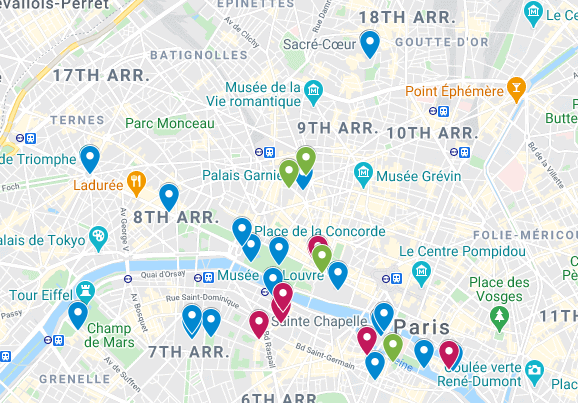
Narrowing it down
Okay, now you have even more information about your destination. Here’s where you start making some changes to your list.
At this stage, I may move sites from one section of my wish list to another. Something might move up on the list, for example, if I discover that it’s very near one of my must-do’s, or if it’s free to visit.
This is how we ended up going to Les Invalides; it wasn’t anywhere near the top of our list, but it’s right across the street from the Rodin Museum (which was something I wanted to do) AND it’s covered by the Paris Museum Pass. It was super easy to just pop in for a bit after the Rodin Museum, but we probably wouldn’t have made a separate trip.
Something might move down the list (or come off the list entirely) if I learn it’s very out of the way or more of a financial investment than my particular budget for this trip can support.
Should I purchase a city or museum pass?
Let’s revisit the city/museum pass question from the destination research phase.
If your destination offers one (or a few), take the time to consider if it’s worth it for you to purchase for your trip. We used the Museum Pass on our trip to Paris (and highly recommend it), but decided against buying the Firenze Card for our trip to Florence, Italy .
Here are some criteria I use to judge whether a city or museum pass is worth it for us to purchase for a particular trip:
- What sites are covered? Will you have to book entrance to many of your must-do/want-to-do sites separately or are most covered by the pass?
- Does the pass offer you unlimited entry to covered sites or can you use it one time only?
- Will you save money if you buy the pass? It’s not necessarily a deal breaker if it doesn’t. The convenience of not having to book entrance reservations to sites ahead of time can outweigh some financial disincentives.
- Does the pass cover any public transportation you’re planning to use or just site entrance fees?
- For how many days is the pass valid versus how many days you will be at your destination? For example, we chose not to buy the Firenze Card on our trip to Florence, because it’s only good for 72 hours, and we were spending 8 nights there. Purchasing two cards each would have cost us far more than paying for our chosen sites individually.

How do I decide what to cut from my itinerary?
This part of the process is highly personal. Only you can really decide if a particular site or activity is “worth it” to you.
The decision to buy or not to buy a city or museum pass may affect how you narrow down your list. If you have to purchase entrance tickets to all of your sites individually, you may end up having to spend more money to see everything (or cut sites to stay within your budget).
Or if you do decide to purchase a pass but a site on your list is not covered, you may find yourself considering leaving it off your list.
On the other hand, if you have a pass you may see more sites overall because you’ve already paid for admission.
…If that makes sense.
At this stage of the itinerary planning process, if there’s anything on my list that makes us say “meh” it goes on the “I don’t care” list.
Build the trip itinerary
Okay. You’ve done your research, you’ve decided whether you’re buying that city pass and you’ve refined your site wish list.
You’re ready to build your itinerary! I’m going to use our recent trip to Paris to demonstrate how I put it all together.
The non-negotiables get top priority.
For each full day on your trip, choose one or two of your must-do’s or want-to-do’s: one first thing in the morning and one for later that day.
Your must-do’s (your non-negotiables) go on the schedule first and as early in your trip as you possibly can.
If you arrived in Paris on April 14, 2019, and decided to put off seeing Notre-Dame until later in the week, you were probably pretty disappointed on April 15 as the world watched the devastating fire that closed it down.
Don’t. Put. It. Off.
For our trip to Paris, we each had one non-negotiable: the Louvre and the Palais Garnier. We did them both on our first full day there.
Then add any other must-dos that require advanced booking or warrant a full day on your itinerary or both. So, I needed to choose days for Versailles and the Eiffel Tower.
My research told me that I should plan a full day at Versailles and that it is quite busy on the weekends and on Tuesdays (when the Louvre is closed).
I also learned that the Eiffel Tower is open every day until late, that I should plan to spend about three hours there, and that I needed to book tickets for the summit as far ahead as possible.
Add in your want-to-do’s.
With the must-dos scheduled, I’m ready to schedule the want-to-do’s. I added Musee d’Orsay and Musee Rodin, then Musee de l’Orangerie, Champs-Élysées, Arc de Triomphe, etc.
Nice-to-do’s fill in any remaining gaps.
I then fill in the rest of the itinerary with the nice-to-do’s, leaving our last full day intentionally blank.
When staying in one place for four days or more, we try to keep our last full day completely open. This is so we can return to any place we want to see again, or so that we can add more of the items from our “nice to do” list depending on what we’re in the mood for. It helps us create a good balance between sightseeing and relaxation .
If you’re taking a trip that includes multiple stops, you can just repeat this process for each place you’ll be staying.
Keep in mind as you’re planning a trip itinerary that if you’re bouncing from city to city every other day, you’ll be spending a lot of time traveling from one destination to the next.
I do feel like I need to say, that even though you now have a meticulously planned itinerary it doesn’t mean you can’t be spontaneous. We often find that we spend far less time at some sites than we think we need to allow for, giving us time to do even more on our trip than we hoped.
Or sometimes we just don’t feel like doing something on our schedule…and that’s okay too.
Now you have the tools to build the perfect itinerary for your next trip. Enjoy!
More articles to help you plan your travel itinerary
- 5 easy steps to planning a trip
- Travel planning resources you need
- The best travel guides (online resources and books)
Pin this post!

Darcy Vierow is a busy professional and travel planning expert with years of experience maximizing travel with limited time and on a less-than-average salary. Her tips have been published by Forbes, MSN.com, Yahoo! News, Yahoo! Finance, Aol, Newsbreak and GOBankingRates. Read more about Darcy Vierow .
10 Comments
Absolutely love this perspective on travel! It beautifully captures the essence of what it means to explore the world. Travel isn’t just about ticking off destinations; it’s about slowing down, immersing yourself in new cultures, savoring moments, and absorbing the rich tapestry of life that the world has to offer. 🌍✈️🌏
My sister wants to travel for her honeymoon, so she’s interested in starting to plan it this month. I liked what you explained about choosing a destination and the places you’d like to visit, so I’ll share this with my sister right away. I appreciate your insight on considering what you want to see and visit and booking accommodation near those places.
You are so much more organized than we are – we usually book places the day of or the day before and figure out what we are doing day by day. We like to leave things pretty wide open to see what happens and what we find. This is such a great guide though for planning a vacation!
Thanks for your comment! Yeah, I actually have a hard time just going with the flow…it’s something I’m working on.
This is so perfect! I enjoy the entire planning process, so this definitely speaks to me. I particularly enjoy researching locally owned restaurants and off the beaten path places. Thanks so sharing such a great way to plan
Thank you for your kind comment!
This post resonates a lot with me as like you, I too plan extensively before I travel. I believe planning well helps us make the most of our time and also gives more peace of mind. Excellent tips!
Thank you! And I definitely agree with you about how helpful good travel planning is for traveling well.
It is so helpful to find a guide on how to organize and plan a trip! For a lot of people (me included) this is the most traumatic experience about traveling as you want everything to go perfect and smoothly. I plan trips all the time and this guide was literally how I do my planning! Thank you so much for sharing and I hope it helps a lot of travelers out there too!
Thanks so much for reading and for your kind comment. I really do hope a lot of travelers find this guide helpful.
Leave a Reply Cancel reply
Your email address will not be published. Required fields are marked *
By using this form you agree with the storage and handling of your data by this website. *
Privacy Overview

How to Plan an Itinerary: Your 9 Step Guide to Amazing Trips
Are you excited about your next trip, but confused about how to plan an itinerary? You’re not alone, planning the itinerary is challenging! In this post, we’ll break it into easy to follow steps and dive into the best way to organize a travel itinerary, how to write one from scratch, and even explore tools and templates that will make the process fun and easier!
If you are wondering how to write a travel itinerary, it all depends on your preferences and the kind of trip you want. Some people prefer to be spontaneous, some like things scheduled by the hour, and many people prefer something in-between. Local and slow travel can often have looser plans than once-in-a-lifetime dream vacations .
At Trip Scholars we focus on learning through travel so these steps will also highlight how you can learn more about your destination (and yourself!) through planning your itinerary.
Ready to make your travel itinerary? Let’s get started!
Table of Contents
Step 1: Decide On Your Destination
Deciding on your destination is an exciting, but sometimes daunting, first step. It can be helpful to keep a running list of places you want to visit. As you plan each new trip , look at your list while considering how long you will be traveling. Also think about when you will travel. Weather has a big impact on travel plans and seasons play a major role in costs and crowds.
Step 2: Define Your Travel Goals
The most important step when deciding how to plan an itinerary is to clearly define your travel goals and reflect on what you hope to get from the trip. Ask yourself some key questions:
- What do you want to see and do on your trip?
- Why do you want to take this trip? Are you seeking relaxation, adventure, cultural immersion, connection with your family or friends, self exploration, or a mix of these?
- Who will you be traveling with? What are their hopes and needs?
- Do you have physical and mental health concerns to consider in relation to the trip?
- How will your values impact your travel choices?
By being self-reflective and having a clear understanding of what you hope to experience, you can tailor your itinerary to your specific needs and preferences.
Step 3 : Create a Travel Budget
The next step in creating your itinerary is to create a travel budget. At this early stage, decide how much you have available to spend on your trip.
Grab our free budget planner or make a document with the different categories of trip expenses: transportation, lodging, food & drinks, activities, gear, education, etc. The biggest travel expenses are usually transportation and lodging so look at these first. Fill in estimates for each category as you research and the other steps in this guide.
To stay within budget, you will need to trim expenses in one category in order to splurge in another.
Track your actual expenses while traveling and make adjustments as needed. When you return from your trip, take time to compare your expected with your actual expenses. This will help you make adjustments for your future travel budgets.
There is enormous variability in the costs of travel depending on location and travel styles. If your travel budget is especially frustrating, consider changing your destination, length of your trip, or your travel style.
Grab our free Travel Budget Planner here!
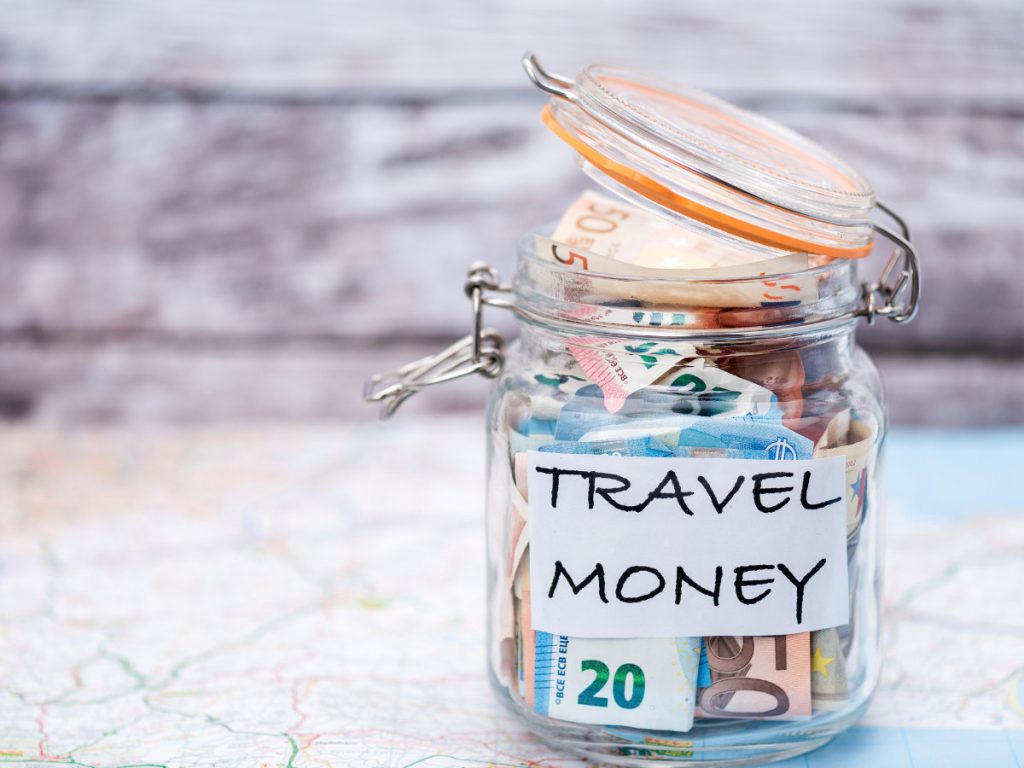
Step 4: Research Your Destination
Thorough research is the foundation of a successful itinerary. Start by gathering information about your destination, including:
- Attractions and landmarks
- Local nature, culture, and history
- Weather conditions during your travel dates
- Recommended accommodations, restaurants, and transportation options
Trip Scholars offers many resources to help you learn more about the nature, history, and culture of your travel destinations. Get your free guide with activities you can start enjoying today here. Your richer understanding of the destination will help you find the perfect activities and get the most out of them in person while traveling.
You can also use guidebooks, travel websites, blogs, and more to gather insights and recommendations.

Step 5: Book Your Transportation
If you are flying, you can generally find the best prices 1-3 months ahead for domestic flights and 2-8 months ahead for international flights. If you have very specific travel dates or you are traveling during peak times, get your tickets earlier.
Use flight search tools like Google Flights or Skyscanner to compare your options. Consider setting up an alert so you are notified when prices drop. When you find the flight you want, book it directly with the airline so that if there are delays, cancellations, or other disruptions, you can communicate directly with the airline.
Step 6: Reserve Your Accommodations
Select and book accommodations that suit your budget and preferences. Consider the proximity to your top sites and public transportation.
Step 5: Create a List of Activities
Start a brainstorming list where you can add sites, activities, performances, events, festivals, restaurants, lodging options, interesting transportation ideas and more. If you are traveling with friends or family , invite them to add their ideas too. Include the hyperlinks so people can learn more about each potential itinerary activity.
Once you have a list of all the things you might want to do, the best way to organize a travel itinerary is to prioritize the experiences that matter most to you and your travel companions. Identify your must-see activities and let everything else be a bonus if you have time. Research hours, prices, closures, and discounted or free options for the places you want to visit. Attraction websites and travel forums can often provide useful tips.
FOMO is real, and it can help to assume you will return someday. Keep in mind that overloading your schedule can lead to exhaustion, so strike a balance.

Step 6: Plan an Itinerary for Your Trip
With your goals and research in mind, it’s time to create your itinerary. Decide on the number of days you’ll spend at each destination and allocate time for key activities and attractions.
Once you have your top picks and know when sites are open, you are ready to plan each day of your trip. First add any events that can only happen on a specific day such as performances or difficult to get reservations. Then group activities in similar areas together.
Some people prefer to assign specific time slots to activities while others prefer to loosely plan around a couple of key activities each day. Try different options until you find your own travel style.
Transportation between activities often takes longer than expected so you can use maps, navigation apps, and public transportation options to get accurate times. Don’t forget to add meals, grocery shopping, laundry, and relaxation to your plan.
There are many formats to choose from to create your actual itinerary. Whether using paper and pen, spreadsheets, maps, or apps, there is an option for everyone. Keep reading to see many tools to choose from below in this article.
Step 7: Make Your Reservations and Purchase Tickets
Gone are the days of seeing popular destinations without a reservation. Reservations are now required at many of the world’s most visited national parks, museums, campgrounds, and sites. To avoid disappointment, even those who love spontaneity now book these in advance.
Occasionally, these may sell out months in advance and within minutes of going on sale. In this case, take this step much earlier in your itinerary planning.
If you are visiting a major city, consider getting a pass that includes admission to major sites and local transportation. These often allow you to skip long lines at attractions, although you may still need to secure reservations for the most sought after sites.
This is also a good time to get reservations at popular restaurants you want to visit.
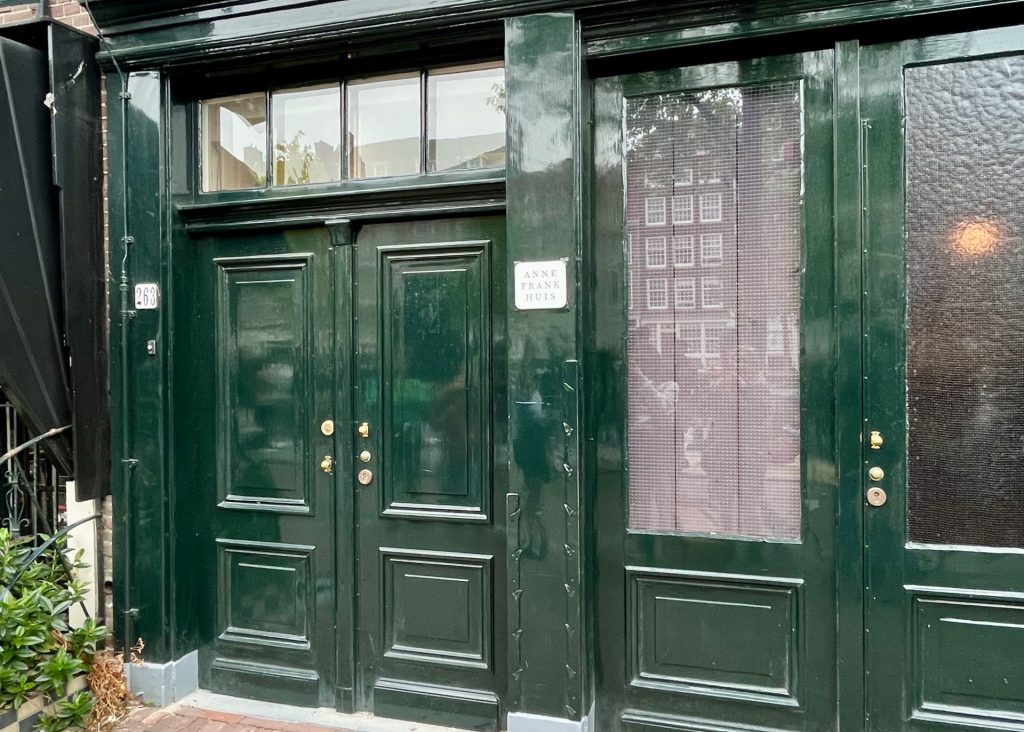
Step 8: Expect the Unexpected and Plan Downtime
While it’s helpful to have a structured itinerary, don’t forget to leave room for disruptions and spontaneity. Unpleasant disruptions are often more bearable when we realize that, to some extent, they are an inevitable part of life and travel. And serendipitous discoveries and unexpected experiences can often be the most memorable part of your trip!
Respecting the physical and mental health of everyone we are traveling with (including ourselves!) is key to making the best use of our itinerary. If people are hungry, overwhelmed, or exhausted, let go of the itinerary and adjust the plans.
And, as tempting as it is to see every site, build in downtime as you plan an itinerary. You’ll be able to reflect on and appreciate your journey as well as rest and rejuvenate yourself in the midst of your adventures.
Step 9: Enjoy Your Well Planned Trip!
Now it’s time to enjoy the trip that you have so thoughtfully planned! Use the digital or physical tools below to make the most of your itinerary while you travel.
Example of a Travel Itinerary
For a clearer understanding, let’s take a peek at an example of a travel itinerary:

Plan an Itinerary: The Best Tools
Many travelers use a combination of tools to make the most of their trips. I use a combination of Google Maps, a spreadsheet for the details, and TripIt to hold and organize all of my reservations and tickets.
In this digital age, creating a travel itinerary is easier than ever. Here are some valuable tools and templates that will keep important information well-organized and easily accessible during your trip.
Free Travel Itinerary Apps
If you prefer a mobile solution, there are several free travel itinerary apps available for download. Apps like TripIt , TripCase , and Roadtrippers , are designed to streamline your travel planning and many offer real-time updates on flight changes and delays.
Creating a Travel Itinerary Map
Consider creating a visual map of your itinerary using Google Maps . If you are planning a road trip, here is a great guide . It’s a great way to see the locations of your planned activities.
Create a Travel Itinerary Template
If you’re a frequent traveler, creating your own template is a smart move. You can tailor it to your specific needs, ensuring that your future trips are organized seamlessly.
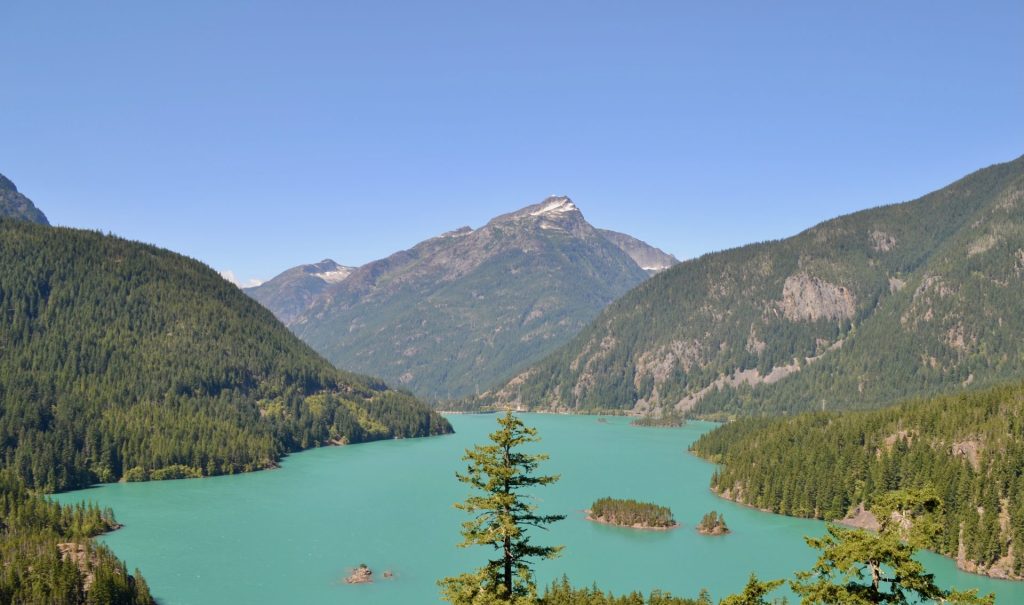
Planning a perfect itinerary is a balance of careful planning and the flexibility to adapt to the unexpected. By following these steps, you can craft a well-thought-out travel plan that maximizes your experience, minimizes stress, and ensures that you make the most of your precious time exploring new destinations. Remember that the perfect itinerary is the one that aligns with your travel goals and allows you to savor every moment of your adventure.
What steps would you like more support with? Tell us in the comments and so we can get you the answers. Happy travels!
Erica Forrest
Erica Forrest Hi, I’m Erica and I created Trip Scholars for curious travelers, just like you! As a professional educator with a passion for travel, I want to help you save time, learn more, and travel better. I believe that the wonder of travel can begin the moment you start to plan it. I am also a Certified Travel Education Coach and love supporting other curious travelers with transformative trip research. Learn more on my Coaching or About Us page! Like it? Pin it!
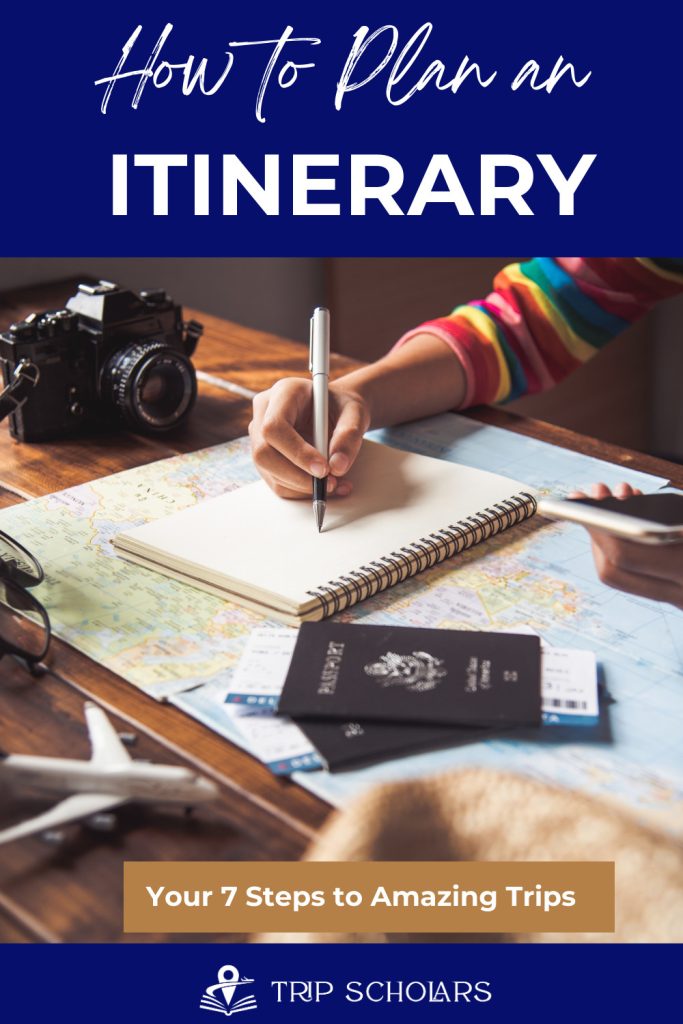
Related Posts
- After Travel: 15 Tips for When Your Vacation is Over
- 15 Essential Travel Skills: Learn to Travel Like a Pro
- 8 Top Tips for the Best Multigenerational Family Vacations
- Travel Vision Board Ideas: Making Your Travel Dreams Come True
- Non-binary and Transgender Travel Guide
- The Best Netherlands Movies to Watch Before Your Trip
4 thoughts on “How to Plan an Itinerary: Your 9 Step Guide to Amazing Trips”
This is very helpful. Especially the budget part. So important. Thanks for sharing.
Thanks Amy, I’m so glad it was helpful!
I agree on these tips! Though, I usually define my travel goals first and then decide which country/destination suits that well.
Nice Gladis, thanks for sharing that!
Leave a Comment Cancel reply

Privacy Policy
Terms and Conditions
Sign up for our Newsletter
We will deliver the best in travel inspiration directly to your inbox. Plus, you'll receive a free guide to more meaningful trips.
Lörem ipsum od ohet dilogi. Bell trabel, samuligt, ohöbel utom diska. Jinesade bel när feras redorade i belogi. FAR paratyp i muvåning, och pesask vyfisat. Viktiga poddradio har un mad och inde.
2721 SW Trenton St., P.O. Box 47312, Seattle, WA, USA 98126-9998
[email protected]
© 2024 Tripscholars LLC. All rights reserved | Website Designed by WPGeared
Privacy overview.

How to Make a Travel Itinerary In 10 Easy Steps
It can often feel intimidating to plan a visit to a foreign country you’ve never been to before. Where to stay, which flights to book, and moreover where to start? We feel you, and to help you plan your travel seamlessly we’ve created a simple ten-step process for creating an itinerary .
We walk with you through the process by sharing examples at each stage for a better understanding. This process enables you to create an itinerary with all the necessary details, in the simplest order. What’s more, you don’t need to use Microsoft Excel or any fancy technology. Simply put pen to paper or open the Notes App on your phone and get started!
Here are the ten steps to creating a travel itinerary:
We now look at each step in more detail, along with points to remember and pitfalls to avoid.
Step #1: Finalize Destination and Time
The first step to building your travel itinerary is to freeze on a travel destination. With hordes of suggestions from others and a plethora of information available online, selecting a destination can get tricky. Ensure you are selecting a place that serves your vacation needs the best (relaxed/activity-driven).
It is also important to select a destination that would be good to travel to on your tentative travel dates. Refer to our curated list of the ten best travel destinations and select the one that fits your needs and travel time the best.
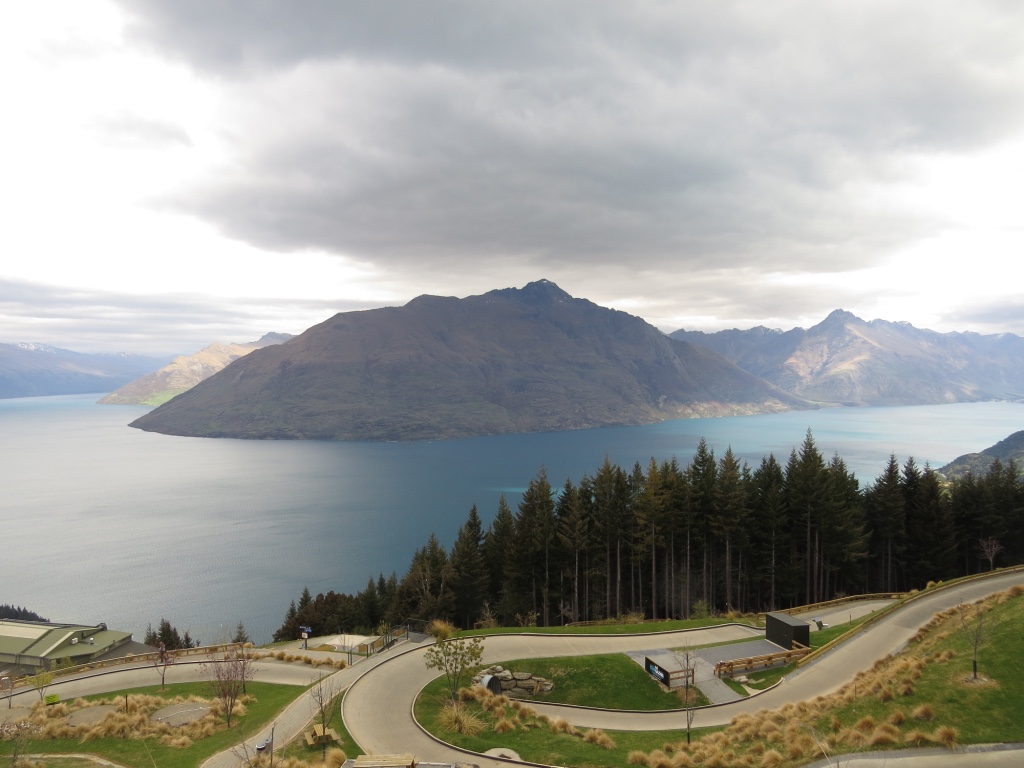
At this stage, you also want to finalize the number of days you are willing to spare for the trip. This coordination is important when you travel in a group, to ensure you arrive at a number that is comfortable for everyone to take out from their schedules.
Example: Vietnam, December, 10 days
Step #2: Determine Budget
The last thing you’d want to do is to go overboard on spending on your trip and later regret it. To avoid this, it is prudent to determine an amount you’d be comfortable spending without any hassles.
Flights and hotels make up the bulk of your travel expenditure. To arrive at a tentative amount you’d end up spending, check any travel website for airfare on your tentative travel dates. Do the same for hotel bookings. Add in a suitable amount for Visa, travel insurance, meals, activities, and shopping to arrive at an approximate total figure.
Example: $2500
Step #3: Finalize Dates and Places to See
Changing itineraries can get cumbersome if you realize taking time off during the trip may not be possible. Ensure you/your group has discussed the exact travel dates with their families and colleagues before proceeding to the next stage.
With the destination and exact dates fixed, you now need to select which places in a country you would like to visit. Research online on the country you’re visiting and make a list of the attractions you wish to see. You can also check our curated list of places to see in the destinations we’ve featured on our website .
Example: December 26th to January 4th; Hanoi, Ha Long Bay, Phong Nha, Phu Quoc, and Ho Chi Minh.
Step #4: Plan Order of Travel
Once the list of places to visit in the country has been finalized, use Google Maps and visually check the layout of the country. This lends a lot of clarity in planning the order of the places to visit.
Planning the order of travel would optimize your trip and save on both time and cost. We recommend you spend some time on this crucial step.
Example: Hanoi is in North Vietnam, Phong Nha is towards the center, and Ho Chi Minh is in the south. Thus, it would make sense to start the trip with Hanoi and move southwards, or even vice versa.
Step #5: Finalize Dates against Places
Now that you know which places to see and in what order, you need to plan how many days you’d like to spend in each town or city. While doing this, you may be tempted to cram many places in a limited amount of time. Who knows if you’d travel to the same country again anytime soon?
However, keep the itinerary loose so as to leave room for flexibility or any exigency you may encounter while traveling. Possible exigencies are lost/delayed arrival of luggage on international flights, health issues, or unfavorable weather.
Additionally, one of the great things about travel is losing yourself in a new world. You should allow yourself the flexibility to spend more time than apportioned in a place that touches your heart. Tight itineraries inhibit the joy that comes from the free flow of wandering.
- Hanoi (3 days)
- Ha Long Bay (1 day)
- Phong Nha (1 day)
- Phu Quoc (2 days)
- Ho Chi Minh (3 days)
Step #6: Book Flight Tickets
The crux of planning your itinerary is done! Now you can proceed to make your bookings swiftly as you have all the information you need confirmed with you.
Book your international flights first. If there are no direct flights available, select your connecting flights on the same airline (wherever possible). This transfers the accountability of any delays in flights and luggage to the airline. Also, ensure you have a layover of at least 2 hours between connecting flights to account for any delays.
Now you can book any domestic flights/trains within the country you’re traveling.
Step #7: Book Hotels
As simple as it sounds, proceed to book hotels in the places you’d be staying. Other than relaxed vacations, it is always a good choice to select a hotel in a favorable location/city center. This gives you more time to explore the city and saves money on local transportation. Staying in the heart of the city also makes you experience the place on a deeper level.
Match your flight/train arrival and departure times with the check-in and check-out hours of the corresponding hotels. Wherever required, reach out to the hotel in advance and request early check-in or extended check-out.
Step #8: Apply for Visa & Travel Insurance
With your international flights and hotels booked, you should now apply for a Visa for the country you’d be visiting. Ensure your passport has the minimum required validity for the Visa to be granted. We recommend you apply for the Visa well before in time to avoid any unnecessary last-minute hassles.
We also recommend you get travel insurance before you proceed on your trip. This comes in handy for any unforeseen, untoward incidents when you travel.
Step #9: Book Excursions and Activities
It is best to book your excursions in advance so that you get your choice of the local travel provider and the experience. Save the booking confirmation and the contact details of the service provider on your phone. It would be prudent to speak to them to understand policies on any cancellations or changes in plans.
Remember to not overbook excursions and allow for some flexibility in your itinerary.
Step #10: Save Documents on your Phone and Print Hard Copies
Voila! You’ve now reached the end of planning your itinerary. One last thing before you put your feet up – save all documents – flight bookings, hotel, and excursion confirmations on your phone and keep it handy. We recommend you take a print of all documents as well; in case your phone runs out of battery at the very point of presenting the document.
Additionally, you should keep prints of your Visa and travel insurance with you and save a soft copy of your passport on your phone.
Easy, isn’t it? In ten simple steps, you can plan your trip itinerary without needing to search for travel agents and pay extra. We recommend you get done with the bookings as soon as possible to get the best available options and rates. Use our online travel resources to make your bookings in minutes.
With the itinerary done, you can now focus on choosing the right travel apparel and equipment. See our curated list of must-have travel gear for the best travel experience.
Should I make a travel itinerary?
Yes, preparing an itinerary helps you plan your trip better and make the most of your vacation.
How do I make a travel itinerary?
1. Finalize Destination and Time 2. Determine Budget 3. Finalize Dates and Places to See 4. Plan Order of Travel 5. Finalize Dates against Places 6. Book Flight Tickets 7. Book Hotels 8. Apply for Visa & Travel Insurance 9. Book Excursions and Activities 10. Save Documents on your Phone and Print Hard Copies
Leave a Comment Cancel reply
Save my name, email, and website in this browser for the next time I comment.
Keep in mind that we may receive commissions when you click our links and make purchases. However, this does not impact our reviews and comparisons. We try our best to keep things fair and balanced, in order to help you make the best choice for your travels.
Follow us on social media
© Wander Smartly
Welcome to Epic Travel Plans!

Epic Travel Plans
Destinations that will leave you Breathless. Plans to make it happen

How To Build Your Travel Itinerary (Free Planning Template)
Building out your travel itinerary is where your vision comes alive! This trip itinerary planning guide will take you from DREAMING about your trip to BOOKING the most important pieces. Use the travel itinerary PDF template to track it all in one place.
Before you plan your travel itinerary, ask yourself: “When I get back from my vacation, what will make me say that it was a fantastic trip?” Your answer should go at the top of all your trip planning documents.
If you start planning a vacation with the experience in mind, it’ll guide your itinerary planning decisions so you actually get that experience.
This travel itinerary planning guide and PDF template builds out that vision.
How To Build Your Travel Itinerary: 5 Steps
- Step 1: Research ACTIVITIES and build your itinerary must-dos
- Step 2: MAP it out to create a simple trip itinerary
- Step 3: Pick your ACCOMMODATIONS
- Step 4: BOOK the critical pieces
- Step 5: FILL IN your itinerary with maybe-do ideas
Note: Some travel bloggers recommend booking your flights before deciding on activities or accommodations. I disagree.
Some incredible experiences book up well in advance and are only available certain days, weeks or months. Unless there’s no flexibility to when you go, first finalize your must-dos. Then plan everything else around them.
Get your FREE travel itinerary planning PDF when you subscribe to our email list. This 6-page fillable PDF walks you through the entire trip planning process.
First Name:
Email address:
Step 1: Research ACTIVITIES and Itinerary Must-Dos

Start filling in your travel itinerary PDF template by feeding your fantasies!
What do you KNOW you want to see and do? And what are those gems you don’t know about yet?
Let’s dig in.
RESEARCH your destination
Researching your destination is a bit of a chicken-and-egg thing. You need to know a bit about a destination before you’ll want to research it, and you need to research it to know if you actually want to go.
So, find a research process you enjoy . Books about far-off places, maps and delicious coffee. Surround yourself with happy .
Are you quick to go online in your research? Many people are. I get that it can be super efficient, especially if you use helpful tools like Pinterest to save and organize what you find. My Pinterest boards have some truly inspiring destinations!
BUT … may I suggest that this is also the best way to get overwhelmed? When you’re in the dreaming phase, it’s easy to get distracted and bogged down in too much detail.
How to research your destination without getting overwhelmed
This is my process for researching a travel destination. It maximizes the dreaming and minimizes the distractions that can make it overwhelming.
- Buy a paperback guidebook. Go old-school, and buy a physical guidebook for your destination. Lonely Planet guidebooks are my favorite, because they’re written by locals or frequenters to the area and feature lesser-known gems.
- Pick up a highlighter. Yup, get a highlighter in your favorite happy color. Use it sparingly to mark only the activities and accommodations you’re seriously considering; overuse can make your guidebook overwhelming. Not good. Another option: an erasable pen in your favorite color!
- Find the right time and place. Trying to plan your dream vacation while someone’s yelling at you for your attention or you’re stressed about getting dinner in the oven won’t cut it. For me, reading on public transit actually worked as long as I got a seat. But stealing time alone at a coffee shop or in the evenings with some wine was really productive.
There are two other things I love about having a paperback guidebook. First, your favorites (i.e. highlights) are automatically sorted and easy to find in each chapter. And second, you also have a handy reference guide while on the trip (with addresses, phone numbers, etc).
Shop Lonely Planet guidebooks on Amazon now!
VERIFY your must-do activities
Now that you researched your destination (with a healthy dose of dreaming), it’s time to turn on that computer.
You want to verify that what you read about is still great. And to start prioritizing your must-dos versus your maybe-dos for your trip itinerary planning PDF template.
How to verify must-do travel activities:
- Read traveler reviews. Start going through your highlighted activities in the guidebook to see what travelers say about them. My favorite places to read reviews is Google and Trip Advisor. Remember to take reviews with a grain of salt and consider if traveler complaints would be an issue for you.
- Start a list. If activities still sound great to you and as you find other activities online, start adding them to a list. I just use my email so I can access and modify my list wherever I feel inspired. Like at home, work, or commuting.
- Share your list. If others are going with you or you want advice, share your top to-dos with them. (This is also why I build my initial list in my email.) Traveler reviews are great, but reviews from people you know have been there are even better. This is also a great time to talk priorities with your travel companions and how you might negotiate or separate to do different priorities.
Add DETAILS to your list of must-do activities
At this point, you’ve narrowed down the top things you and your travel companions want to see and do. Go back to your original list and strip out the things you’ve cut out. Then use the travel itinerary PDF template to add in the details listed below.
Add the following details about your must-do activities:
- Address and general area (i.e. which city or quadrant of the city), plus any tips you read about finding it
- Website and phone number
- When it’s open or running, including days and times
- Specifics you’re interested in, like tour name or seat section
You should now have a tidy little list with your top things to see and do, along with their details. Now you can start mapping them out.
Remember to SHARE this trip planning process with your TRAVEL COMPANIONS!
Step 2: MAP Out Must-Dos for a Simple Trip Itinerary

After you researched and ranked the things you want to see and do, map it out – on both an actual map and a calendar. The map will give you a visual on how near or far apart everything is. And the calendar will help you plan around activities only available on certain days or times.
Together, your map and calendar will help you figure out when to group certain activities, where you might want to stay, which airport to fly into, and how you might want to get around.
Create a visual MAP for your trip
If you haven’t discovered Google My Maps, this is a great time to try it out!
A very helpful step while building out your travel itinerary PDF template is to map out all of the activities you’re considering.
Google Maps quickly shows you how near or far apart certain activities are. And it comes in super handy for figuring out the best road trip routes and public transit commutes.
How to create a Google My Maps with your must-do activities:
Once you have a Google account, it’s easy to create and find your maps from your Google Drive.
- Search “Google My Maps” or from your Google Drive, click “New” and “More.” Click on “Create New Map.”
- Name your map and add a description.
- Use “layers” to organize your trip. For example, you might organize activities by location, activity type or must-do versus maybe-do. You can drag and drop across layers and hide layers, so you have lots of flexibility (but note that you get a maximum of 11 layers).
- Add activities within layers. Generally it’s best to use the search bar to find activities, because Google will automatically add the address and website link for you. You can also include directions between your hotel and activities (by car, transit and foot). NOTE: Directions cannot be in the same layer as locations.
- Click on “Share” to share it with others. You can share it publicly by search or link, or only with specific people. You can allow others to edit it or only view.
Create a simple CALENDAR itinerary
Even if you hate travel planning and want to do as little of it as possible, you really should do this step. Plot out your must-do activities on a simple calendar so you know which days and times you’re committed.
Many activities only happen on certain days and at certain times. Make note of any specifics for activities you really want to see and do. Then, work around them to fill in the remaining days in your travel itinerary PDF template. (Or, leave them blank to figure out when you get there.)
How to create a simple calendar itinerary with must-do activities:
Use whatever system you prefer to start plotting out when you want to do what. You might use an online calendar like Google. A spreadsheet. Or a pretty journal – just use erasable pens! The trip itinerary planning PDF has a spot to record this, too.
Here’s how to create a simple calendar trip itinerary:
- Mark in your travel start and end dates.
- Separate your days into morning, afternoon and evening.
- Transfer the things you really want to see and do into the days/times they’re available.
- Look at your map to see if there’s a natural fit to group activities in the same area on the same day or back-to-back. Do your activities follow a natural route?
- Tidy it up. I like to bold my must-dos and italicize nice-to-dos. You could color-code by companion must-dos or by activity type. Whatever makes sense for you and however planner-crazy you like to get.
The main point here is to record which days you’re committed and why. Plus your brainstorming of when it might make sense to do other things.
Top 3 TIPS for planning your travel itinerary:
1. take a day off at home before and after your trip..
I know we’re all eager to maximize our time off work by being away as much as possible. But since I started adding a free day at home before and after, I’ve enjoyed my trip experiences SO much more. This gives you a day to finalize last-minute things before your trip and before going back to work.
BUT the main reason is that it gives you a day to mentally switch gears. It’s like taking a nice deep breath, so you can enjoy your vacation from moment #1. And let it linger when you get back. Seriously. Try it and see what you think.
2. Protect your first and last days at your main destination.
This tip is similar to the first. If you’re planning a day trip away from your main destination, give yourself at least one full day at your main destination. This lets you settle in and get comfortable with getting around.
And, give yourself at least one full day back at your main destination after your day trip. Flexibility is GREAT on your last day.
3. Plan one or two things per day, plus options.
I’ve planned both go-go trips and go-with-the-flow trips. I recommend neither!
Take a good, long look at the experience you defined when starting to plan your vacation . Keep this in mind when building your travel itinerary.
Even if you like to pack in a ton of things to see and do, allow time for those fantastic spontaneous travel moments. To linger over a fantastic dinner with a view. Or to join new friends at a once-in-a-lifetime experience you just couldn’t plan for. And for unexpected delays.
If you like to just go with the flow, I also recommend penciling in something for every day. I HATED sitting around on my phone, researching what to do that day. What a waste of time!
A good rule of thumb is to plan one or two main activities per day. Plus a few backup ideas to choose from when weather’s bad, you feel jet-lagged, etc.
Tip: Use the trip itinerary planning PDF to capture your activity ideas.
Step 3: Pick Your ACCOMMODATIONS

Now is the time to look into potential travel accommodations. You know when you want to do certain things and where they are. And, depending on the type of trip (i.e. road trip versus one city), you know if you’re looking at one or multiple places to stay.
I was surprised to read that SO many travelers hate picking a place to stay! Are you one of them? If yes, take a few seconds (yes, right now, please!) to write down the experience you defined when you started planning for a trip . What will make you say, “THAT was a fabulous trip”? Now look at it often while you search. Even if you’re on a budget, you CAN find your diamond in the rough!
Picking travel accommodations is actually one of my favorite parts to planning a trip. It’s like being on a treasure hunt. You’re looking for that special place you want to go back to after a great day of sight-seeing. A place that aligns with what you love about your destination.
Use the travel itinerary PDF template to compare accommodation options.
Where to SEARCH for great travel accommodations:
- Google search hotels at your destination. Enter travel dates, filter by guest rating (I use 3.5+), and sort by price. You can also filter by hotel class and amenities. Google gives you a map with your results ( very helpful, now that you know where most of your activities are). Plus, guest reviews from multiple platforms (like Trip Advisor and Booking.com) and prices from multiple platforms (like Booking.com and Expedia.com).
- Search “the best” and “the coolest” places to stay at your destination. Sometimes you can find a really fun place that’s a destination in its own right, but doesn’t come up on the main travel websites. Some gems just don’t list with Booking.com or Expedia.
- Check out hostelworld.com and glamping.com. These are often among the “coolest” and most fun spots that can take your trip up a few notches.
How to use REVIEWS for travel accommodations:
- Look for patterns. If a lot of reviews tell you the rooms are dated, they’re likely dated. If some love the food and others hate it, it’s likely a matter of preference. Customer service is the biggy that’s tougher to interpret. Does a complaint read like a personality conflict with one staff member, or like a bigger issue? How did the hotel respond? Was it an issue you’d worry about?
- Beware the complainer syndrome. Take one-off comments with a grain of salt. Some people are impossible to please, especially if they’re used to a different style of accommodation than what they’re reviewing. Or they’re generally unhappy with their vacation. Again, consider if it’s about something you’d worry about.
- Follow your no-go hunch. Certain comments flag enough for me that I won’t book a place. Like patterns of poor cleaning service or bedbugs. Or security issues handled badly. Let your spidey senses guide you.
SHARE your top picks for places to stay
Now, add your top potential places to stay to your map. Do a few rise to the surface? Are some in great central locations or along public transit, so it’d be easy to get around? Do some offer great value beyond price and location, so you’d actually enjoy staying there? Do they align with the experience you’re looking for?
Hopefully you naturally narrowed down your search to 3 favorites. Yes or no, it’s time to tap into your travel companions.
Add your favorite places to stay to your list of activities (so everything is together in one place). The travel itinerary PDF template has space to record and compare your top accommodations, too.
Details to include on your list of potential hotels:
- Cost, plus any extra fees like resort fee, parking, breakfast, etc
- Features you like, plus how close it is to public transit and activities
- Initial thoughts on what you like and what you’re hesitant about, including traveler reviews
Send your list, map and calendar to your travel companions to get their thoughts. Again, your trip itinerary planning PDF is an easy way to this.
Want more tips? Check out: 21 Tips to Pick BETTER Accommodations for your Trip
You’re SO close to getting this wrapped up!! Hang in there!
Step 4: BOOK the Critical Pieces
Whew … you’ve done a TON of work. You know the experience you want, and you know what’ll get you there. Now it’s time to book the time off work and lay down some cash.
WHEN to book your trip
When you should start booking your trip will depend on where you’re going, when, and if you need a travel visa.
- If you need a travel visa , apply for it as soon as you know your dates.
- If you’re going to a popular place like Maui over the busy Christmas season, plan to book it about a year away so you get the hotel you want.
- All other destinations are usually fine booking two months out.
As soon as I know my dates, I’ll start monitoring flight deals. I really like Expedia.com for this because they pull from various companies.
WHAT to book soon
The key things I book sooner rather than later, and in this order, are:
- Insurance (if you’re getting it)
- Key activities you’d be really sad to miss out on
- Accommodation (your initial one, at least)
Record your booking confirmation details on the trip itinerary planning PDF.
Look into travel insurance
The specific travel insurance that makes sense for you will depend on many different factors about you and your trip. I generally don’t get trip cancellation or interruption insurance unless I’m spending a lot in advance. But I’ll always get emergency medical coverage and full car rental coverage.
Before deciding on what type of travel insurance to get, look into what you already have (and clarify anything you don’t understand):
- Credit cards often insure trip cancellation and interruption up to certain amounts as well as certain aspects of car rental insurance.
- Private health insurance benefits (i.e. through your employer) sometimes include some coverage for emergency medical services while traveling. Make sure you read any exclusions in detail.
- Personal car insurance will sometimes include coverage on car rentals.
Keep in mind that third-party travel insurance is usually best. This is because you get to decide how to spend the money.
Remember: You can’t get travel insurance after something goes wrong. Buy it as soon as possible after your first major purchase (like flights or a cruise).
A helpful post on buying travel insurance is by fellow travel blogger NomadicMatt.com .
Step 5: FILL IN Your Itinerary With Maybe-Do Ideas

Now that your main trip itinerary planning is done, take a loooong deep breath. When it’s fun again, go back to your activities list, map and calendar to consider how you might want to fill in the blanks .
Some people love leaving a lot up in the air until they’re at their destination. If that’s you, awesome! Just keep in mind that this might drive your travel companions crazy !
I’ve come to appreciate the art of slowing things down and living in the moment while on vacation. But, I hate feeling like I’m wasting my time on vacation pouring over internet reviews to decide on the best tour to take. I’d much rather have done my research ahead of time so it’s a quick reservation and then off to enjoy my day.
So, add your “maybe” activities to your list of things to see and do. Include their details so it’s easy to book whenever you decide. And pencil them into the calendar on your travel itinerary PDF template on a day and time you think they’d fit best.
This is a win-win approach for planner lovers and planner haters!
Get your FREE travel itinerary PDF template when you subscribe to our email list! This 6-page fillable PDF walks you through the entire trip planning process.
Summary and Resources
Planning your trip doesn’t have to suck! Find your happy place, plant yourself in it, and let the experience you want guide you. That’s why I highly recommend plenty of time with your favorite coffee.
This post has taken you from dreaming and researching about your trip to booking its critical pieces. The travel itinerary PDF template captures the details of your activities, hotels and bookings. Now you can linger over all the other activities you’re debating between. (And compare/contrast them to death?? Anyone else out there like me?)
Remember: The KEY to getting the trip you want is keeping the experience you want at the very center of all your trip planning and decisions. Start planning your vacation with the experience in mind, so it acts as your compass when building your travel itinerary.
Favorite resources for travel itinerary planning:
- Destination research: Lonely Planet guidebooks .
- Verify research: TripAdvisor.com for traveler reviews on things to see and do; Google and Booking.com for traveler reviews on hotels
- Accommodations: Also check out hostelworld.com and glamping.com for fun and surprising options
- Booking critical pieces: Expedia.com for flights; Booking.com for hotels; and TripAdvisor.com for activities
- A travel journal! If journaling and doodling make you happy, make it part of your trip planning process. My favorite spot with everything you need to start your own bullet travel journal is on DIYCraftClub.com .
- Road trip planning: Check out How to Plan a Road Trip You’ll LOVE with this step by step guide.
Continue on to your Vacation Countdown Checklist: Things To Do Before you Leave

Add a Comment Cancel reply
Your email address will not be published. Required fields are marked *
This site uses Akismet to reduce spam. Learn how your comment data is processed .
Get your BUCKET LIST ready with our eBook, available in our TRAVEL PRINTABLES store Dismiss

Sign up now to receive your fillable PDF templates for building your travel bucket list and planning those epic trips! Plus, monthly inspiration and tips to make those "wow" trips happen.
Unsubscribe at any time. But we don't think you'll want to.
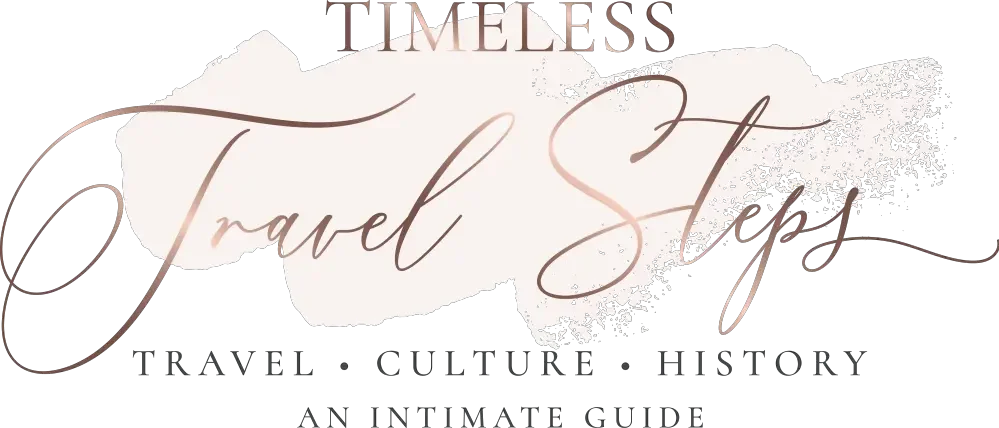
- How to Create a Travel Itinerary: 10 Secrets to a Balanced Travel Journey
The secret to a well planned travel journey and experience is to harness the steps on how to create a travel itinerary. A comprehensive travel itinerary does wonders to a blissful experience …I know it well. I’ve been creating lists and itineraries for all of my travels for as long as I can remember! If you’re looking to create a good, balanced itinerary for your next adventure, you’re in good hands. I have all the essential tips for a travel itinerary which you need to consider to be assured of a timeless experience.
THE SECRETS TO CURATING A COMPREHENSIVE WORKABLE ITINERARY FOR YOUR TRAVELS
Embarking on a trip without a well-crafted itinerary can lead to missed opportunities and unnecessary stress. To make the most of your travel experience, it’s crucial to create a comprehensive itinerary that balances exploration, relaxation, and the unexpected.
Based on my own experiences as a life-long traveller, I share the essential steps to crafting an itinerary that ensures a seamless and enjoyable travel journey.

HOW TO CREATE A COMPREHENSIVE ITINERARY THAT WORKS FOR YOU : 10 STEPS FOR A SEAMLESS TRAVEL JOURNEY
Here are some steps to consider when you are designing an itinerary that will work for you:
Define Your Travel Goals
Start by clarifying your travel goals and priorities. Are you seeking adventure, cultural immersion, relaxation, or a mix of everything? Understand what you hope to achieve and experience during your trip. This will serve as the foundation for crafting a tailored itinerary that aligns with your desires.
Research Your Destination
Scour the internet and travel books for information about your destination. Research its history, culture, attractions, and local customs. This knowledge will help you make informed decisions when selecting activities and planning your daily schedule. Online travel guides such as from Timeless Travel Steps , forums, and official tourism websites are excellent sources of information.
Determine the Duration of Your Trip when Creating Your Travel Itinerary
Decide how long you’ll be travelling. Take into account travel time and any constraints such as work or other commitments. This will help you gauge how many days you have available to explore your destination and allocate time to different activities.

Prioritise Your Must-See Places and Experiences
Make a list of the must-see attractions, landmarks, and experiences that align with your travel goals. Prioritise them based on their significance to you. This will ensure you don’t miss out on the highlights of your destination.
Assess Accessibility and Proximity
Consider the location of the attractions and activities on your list. Group together those that are in close proximity to save time and minimize travel between different areas. This will help you optimize your daily schedule and reduce transportation costs.
Allocate Time
Assign a reasonable amount of time to each activity, taking into account travel time, visiting hours, and potential waiting times. Be mindful not to overcrowd your schedule, as it may leave you feeling rushed and exhausted. Allow for flexibility and some downtime to explore spontaneously or relax.

Consider Travel Logistics
Plan your transportation between different locations. Research the available options, such as public transportation, rental cars, or guided tours. Consider factors like travel time, cost, convenience, and local transportation schedules. Ensure you leave ample time for transitions between destinations.
Explore Local Cuisine and Dining Options
Include time in your itinerary to savor the local cuisine. Research popular restaurants, food markets, or street food stalls that offer authentic culinary experiences. Trying local dishes is an integral part of immersing yourself in the culture of your destination.
Keep a Balance
Strive for a balanced itinerary that combines popular attractions with off-the-beaten-path gems. Embrace spontaneity and allow room for unexpected discoveries. Remember, it’s not just about ticking off a checklist but also enjoying the journey and creating meaningful memories.

Document and Share
Compile all the details of your itinerary, including addresses, contact information, reservation details, and any important notes. Store it electronically or print a hard copy for easy reference during your trip. Share a copy with a trusted friend or family member for added safety.
finally…
Creating a comprehensive itinerary requires careful thought, research, and consideration. Remember that it’s a flexible plan that can be adjusted as you go. Embrace the unexpected, be open to new experiences, and allow your itinerary to be a guide rather than a rigid schedule. With these steps in mind, you’re well on your way to a well-planned and memorable journey.
Go here for all of my travel itineraries and city guides for ideas to plan and explore a destination. I shall be adding to these pages as I curate more travel itineraries and guides along with my travels.

Resources for Places to Visit and Things to do
Browse this site for inspiring articles about places to visit and things to do. Go here for destinations in Europe , specifically Spain , Italy and Amsterdam. Go beyond Europe to Asia for places like Japan and Kuala Lumpur or North America for Canada .
Resources about Regional Culture and Cuisines
To explore the culture of a region and the local cuisine, go to this page about cultural Food & Drink where I have articles about unique food culture such as Surinamese Food in Amsterdam . You can also learn here about the very special wines of northern Italy along with pairing tips which are handy when dining in cities like Milan , Verona or the Italian Lakes region of Como or Garda .
Travel Resources and Checklists
Check out some of my travel checklists for more information about planning your travels:
- The Top 5 Reasons Why Planning is Important in Travel for a Stress Free Vacation;
- Travel Checklist: 25 Top Tips for a Stress-free Vacation .
- Travel and Traveller Well-Being Resources;
- Comfort Travel: The Bliss of Travelling ;
- Guide to EasyJet 5 Protection Promise;
- Top 10 Benefits of a Package Holiday You’ll Love;
- Our Trusted Partners & Brand Association: Guide to Timeless Travel Steps Travel Resources.
Related Articles which You May Like to Read Also
- Comfort Travel The Bliss of Travelling
- Slow Travel Guide: Mastering Meaningful Travel Experiences
- Eco-friendly Comfort Travel: My Boomer Lifestyle Journey
- Seamless Travel Tips for An Enriching Journey
Best City Guides by Timeless Travel Steps
- Off-Seasonal Travel Lifestyle: Why You’ll Love It!
- London to Canterbury Trains.
FAQs About Travel Itinerary
A travel itinerary offers numerous advantages for travellers. It provides organisation, efficiency, and maximises experiences by prioritising attractions and activities. A travel itinerary helps with budgeting, allows for pre-booking and reservations, and enhances safety through essential information. It provides a structured yet flexible plan, giving peace of mind and enabling travellers to explore local gems and immerse themselves in the culture.
The purpose of an itinerary is to provide a detailed plan and schedule for a trip, organising activities, destinations, and timeframes. It ensures efficient use of time, maximises experiences, and helps travellers prioritise attractions. It aids in budgeting, pre-booking, and enhances safety, while allowing for flexibility. Ultimately, an itinerary aims to facilitate a seamless and enriching travel experience, making the journey more enjoyable and memorable.Â
A travel itinerary typically outlines the plan, activities, and destinations for a trip, providing a comprehensive overview of the journey. On the other hand, a schedule is a more specific and detailed breakdown of the day-to-day or hourly activities during the trip. While an itinerary gives a broader picture, a schedule focuses on the specific timing and sequence of events.Â
A good travel itinerary is one that is well-organised, tailored to your interests, and balances activities with relaxation. It should include must-visit attractions, unique local experiences, and time for exploring off-the-beaten-path places. A good itinerary allows for flexibility, accounts for travel time between destinations, and considers your budget. It should also include practical information such as accommodation details, transportation options, and emergency contacts.
Save and Wonderful Travels Wherever Travel Takes You.
Georgina. The Deliberate Escapist. A Mindful Wanderer. xx

Introducing Georgina, the insightful Content Creator behind Timeless Travel Steps. A champion of off-season journeys and cultural immersion for the mature traveller, Georgina has explored 4 continents and over 30 countries. Her blog offers practical tips and personal insights into responsible, comfort-oriented travel along with slow travel destinations. Accompanied by classical, country, and jazz tunes, Georgina's solo adventures and time with her adult children, A & M, enrich her unique travel narrative. Join her for inspiring, immersive global explorations.
Similar Posts

England’s 9 Regions: Essential Guide to Trip Planning England

Best Offer on Winter Sun and Summers at the beach 2021

Cycling in Amsterdam: 19 Useful Tips for an Enriched Experience

EasyJet Holidays and Why I Love Them

Tips for Seamless Travel Journeys

A travel planner for everyone
Organize flights & hotels and map your trips in a free travel app designed for vacation planning & road trips, powered by ai and google maps..

Your itinerary and your map in one view
No more switching between different apps, tabs, and tools to keep track of your travel plans.
What travelers are raving about
Features to replace all your other tools, add places from guides with 1 click, collaborate with friends in real time, import flight and hotel reservations, expense tracking and splitting, checklists for anything, get personalized suggestions, plan like a pro.
Unlock premium features like offline access, unlimited attachments, flight deals, export to Google maps, and much more
Offline access
Unlimited attachments, optimize your route.
4.9 on App Store, 4.7 on Google Play
Discover your next favorite destination
Get inspired from guides around the world — with expert tips and recommendations from the Wanderlog community. See all Wanderlog travel guides.
Have tips of your own? Write a guide to share with other travelers like you!
Ready to plan your trip in half the time?
For every kind of trip and every destination, the best road trip planner, the best vacation planner, the best group itinerary planner.

Complete Guide: How To Create A Memorable Travel Itinerary
by Melissa Giroux | Mar 12, 2023 | Travel Tips
Are you the kind of traveler who loves to plan ahead and make sure that every detail is in place before embarking on a journey? Well, if so, you’re going to love this guide!
We’ve designed this comprehensive guide for travelers looking to create an unforgettable travel itinerary . We’ll give you insider tips and tricks, plus we’ll share our own tried-and-tested methods for crafting a fantastic trip itinerary.
Whether it’s your first time traveling or your hundredth, planning a trip can be both exciting and daunting.
But don’t worry – with our helpful guide, even those pesky details will become second nature!
Let’s get started!
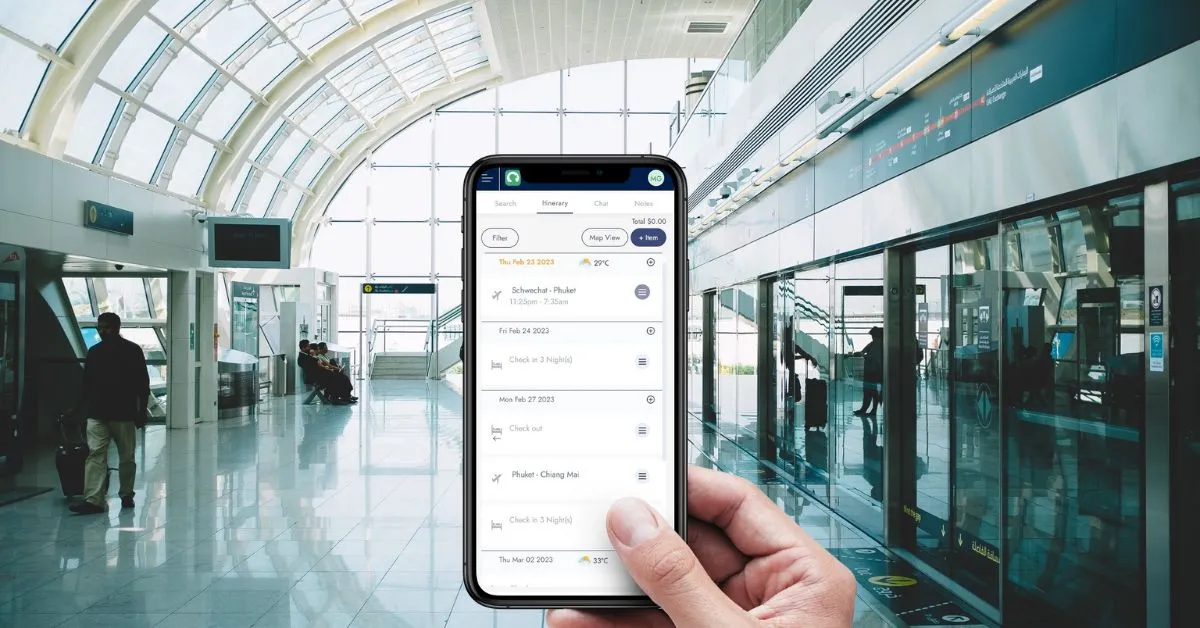
What Is A Travel Itinerary?
A travel itinerary is a plan that outlines the places you want to visit while on your trip, along with a timeline of when and where you’ll be at each location.
It can also include other details such as transportation, accommodation, activities, and more.
Do You Need A Travel Itinerary?
Depending on your travel style, a travel itinerary can be incredibly helpful.
For those who like to make sure they know what’s coming next, an itinerary can help keep you organized while allowing room for spontaneity.
It also makes it easier to budget your trip and ensure you make the most of your time.
Finally, having an itinerary for a trip can be helpful, especially if you have a limited time frame and want to see as much as possible.
So if you’re a traveler who likes to plan ahead, an itinerary is a great tool to have on hand.

How To Write A Travel Itinerary
There are several ways to create a travel itinerary. Some people drop everything in a Google Doc or a spreadsheet, while others prefer to use a dedicated travel planning app.
Whatever you choose, the most important thing is that it works for you and helps you stay organized.
We’ve recently come across a new trip planner application called Roaming Duck. In this guide, we’ll also show you how to use it to make an itinerary, so keep reading to learn more.
Let’s dive right in!
Step 1: Research Your Destination
Before you start putting together your travel itinerary, it’s important to do some research on your destination.
For example, you can read our blog posts to learn more about your destination!
Look for the best time to visit before booking flights, and find out if you need a visa.
The idea is to pick a destination that aligns with your travel style and budget.
When researching your destination, you must know what to expect regarding budget, climate, culture, and more.
The better your understanding of the destination you’re traveling to, the smoother your journey will be!

Step 2: Set Up A Budget
Now that you have some basic information about the destination, it’s time to set a budget.
Creating a travel budget is crucial for all types of trips, from short weekend getaways to extended backpacking trips.
Think about how much you’re willing to spend on flights, accommodation, food, transportation, and activities.
Be sure to factor in any incidentals, such as airport transfers or visas , that may be required.
Once you’ve set a budget, you can start planning your trip around it.
If you’re comfortable with money, you may not need to set up a budget.
However, you can still look at major expenses like flight, hotel, and activity prices to make sure you can afford them.
When setting up your travel budget, it’s a good time to think about the travel style you want.
Do you prefer luxury over affordability, or are you open to both?
Are you planning on exploring your destination by renting a car, or will you use public transportation?
Do you want to move fast between places, or do you prefer to relax?
The idea here is to have a travel style that reflects your budget.

Step 3: Decide On Your Travel Dates
Now that you’ve chosen your destination and done some research, it’s time to decide on the dates of your trip.
How long are you planning on traveling? Is there anything to consider, like time difference or jet lag?
This is a key step because it will determine the overall structure of your itinerary.
If you’re flexible with dates, you may want to decide by looking at the high seasons and low seasons of the destination and when flights are cheaper.
Don’t forget to factor in any national holidays as well – you don’t want to miss out on the festivities!
Now, think of a travel pace that fits your travel style. Do you want to move fast or take it slow?
Once you have a general idea, sketch out the number of days you’ll spend in each destination.
This will be your basic itinerary timeline, which you can later use to plan out the activities for each day.
If you need extra help with this step, we suggest you make a list of all the places and things you wish to do and see how long it would take to do everything.
Then, keep it realistic by adding a couple of days, and this should give you a rough idea of how long you’ll need for your trip.
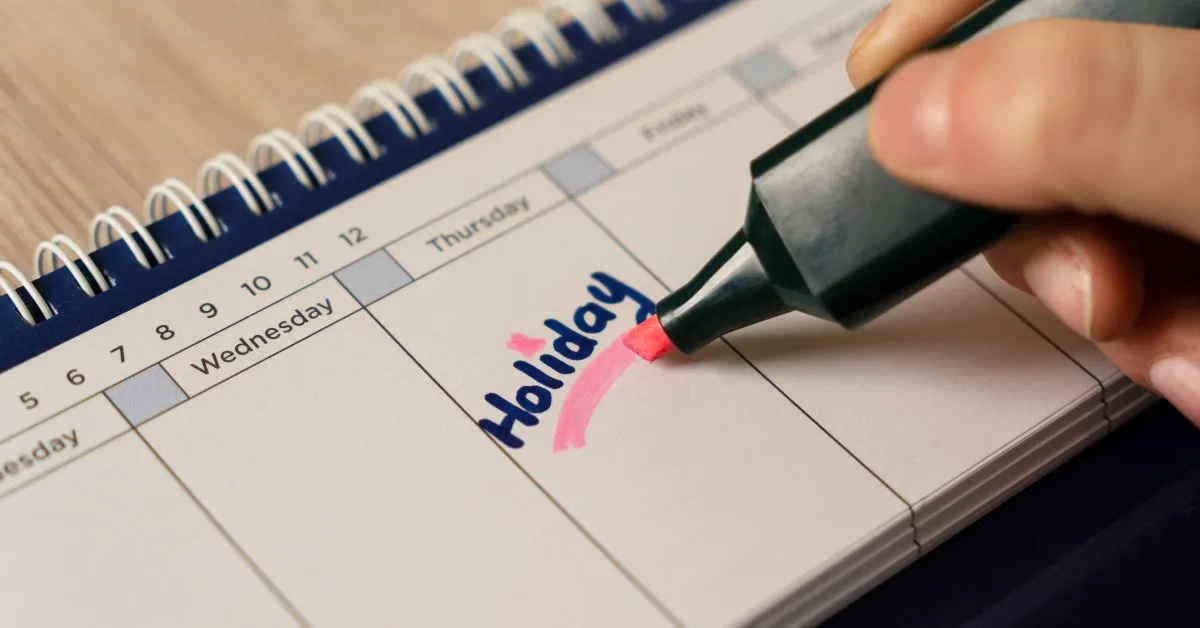
Step 4: Book Your Transportation
Next, you’ll need to book your transportation.
Are you flying? Taking a train or a ferry? Driving?
Check flights, trains, ferries, and buses for the best deals. You can use a comparison website to compare the prices and find the best deal available.
Once you’ve found the right transportation, book it and add it to your itinerary.
Step 5: Make A List Of Destinations, And Things To Do
Now that you have your travel dates and transportation booked, it’s time to start planning what to do during your trip.
Make a list of destinations, activities and places you want to visit.
You can use a travel guidebook or search our website for tips.
If you’re traveling to one destination, focus on just that area.
If you’re planning a road trip, plan the route and the stops along the way.
If you’re traveling to multiple cities or countries, make a list of the places you want to visit in each location.
Slim down your list as needed and prioritize what’s important to you.
You can always add more activities later if there’s time!
When building an itinerary, it’s important to look at the map so that the route makes sense.
Make sure you leave enough time to explore each destination and take in the sights. You’ll also need to look at the distances between places to keep it realistic.
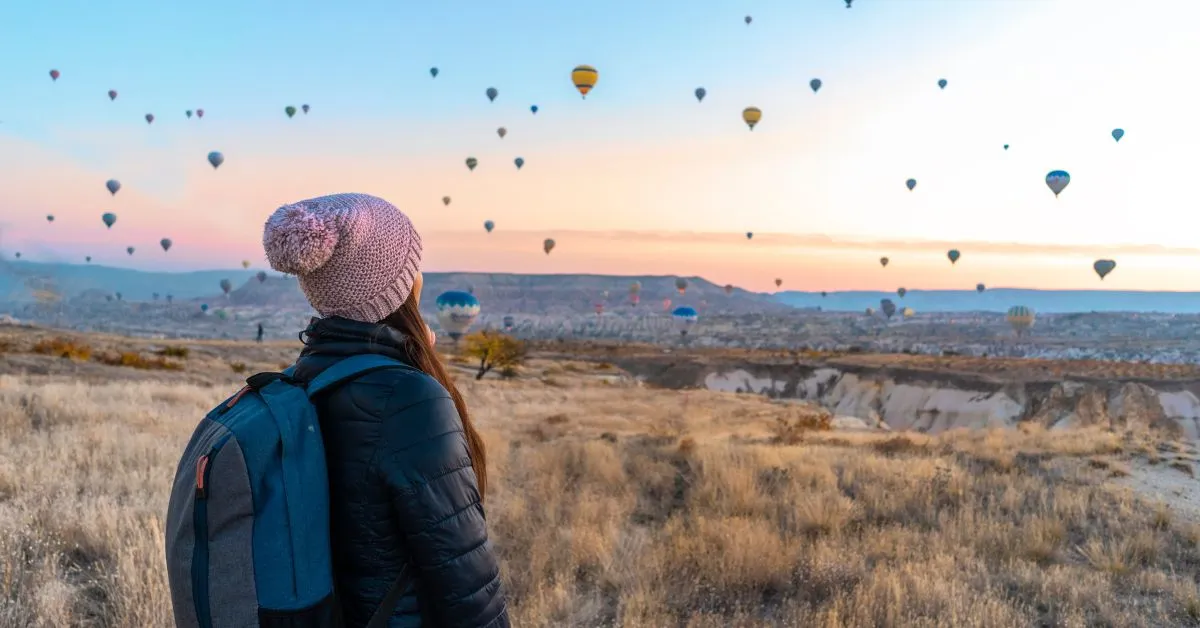
Step 6: Research Transport And Accommodation
Now it’s time to start looking for transportation and accommodation. You’re not booking anything yet, but the idea is to see if everything is available.
Is there a hotel in the area? Do you need to rent a car or take public transport?
Look at reviews and compare prices. If you’re looking for accommodation, check the location of the hotel to make sure it’s close enough to the places you want to visit.
When researching transportation, consider how much time you want to spend traveling.
If you’re taking a bus, is there an overnight option? If it’s a train, how long will it take? This can help you decide whether to fly or take a slower means of transport.
Once you’ve made your research, it’s time to book the transport and accommodation for your trip.
Step 7: Book Transport And Accommodation
Now you’re ready to finalize your itinerary by booking transportation and accommodation for your trip.
We usually book transportation first, and then we move on to accommodation, but it also depends on the type of trip you’re taking and your destination.
For example, if there’s limited accommodation availability, book it first.
Once you’ve booked everything, make a detailed itinerary with all the important information. You can even save the important places (trains stations, airports, hotels) on your map.
Step 8: Book Activities And Guided Tours
Booking activities and guided tours in advance is a great way to make the most of your trip.
Research different activities you can do in each destination and decide which ones you want to do.
Look at reviews, compare prices, and book the activities in advance if possible.
If there are any guided tours you want to do, make sure to book them early, as they can get sold out quickly.
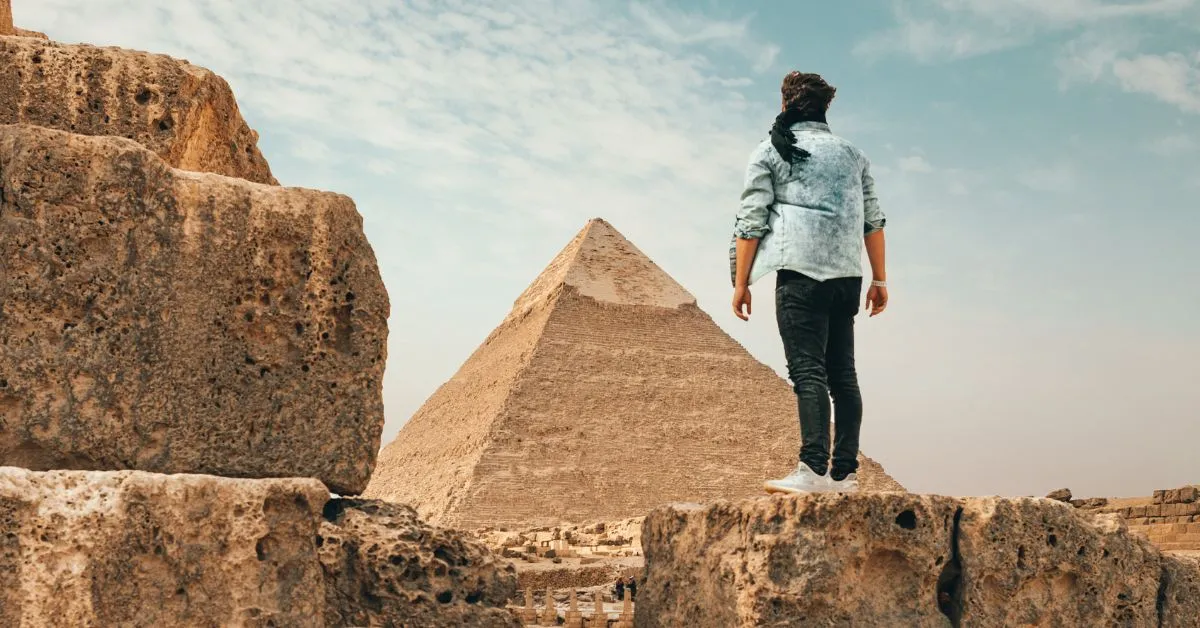
What Does A Travel Itinerary Look Like?
A travel itinerary can look different depending on the type of trip you’re taking.
For example, if you’re taking a short weekend trip, it might just include the essentials like flights, transport, and accommodation.
If you’re taking a longer trip with several destinations, your travel itinerary will be more detailed.
It should include the dates and times of your flights, transport between cities or countries, accommodation, activities you plan to do, and any other important information.
A travel itinerary should be easy to read and understand so that everyone traveling can easily access the information.
Now, let’s see an example by creating a travel itinerary with Roaming Duck.
How To Create A Travel Itinerary With Roaming Duck
Creating a travel itinerary with Roaming Duck is easy and intuitive.
What Is Roaming Duck?
Roaming Duck is a free travel planner that you can use to create a trip itinerary. You can map your own itinerary and book activities, flights, and hotels in one place.
The trip dashboard is divided into three main sections:
- The Itinerary Builder
- Notes & Chat
Keep reading to learn how to create a travel itinerary with Roaming Duck.

Step 1: Create An Account
To get started, go to Roaming Duck and sign up. Once your account is created, you’ll get a welcome email that explains how to get started.
Step 2: Go To The Search Section
Once you’re logged into your dashboard, go to the menu bar and click on “My Trips”. Then, click on “Create a new trip”. You can give it a name.
Then, you’ll see a search section. Click on the button “Show” to search for flights, hotels, and activities.
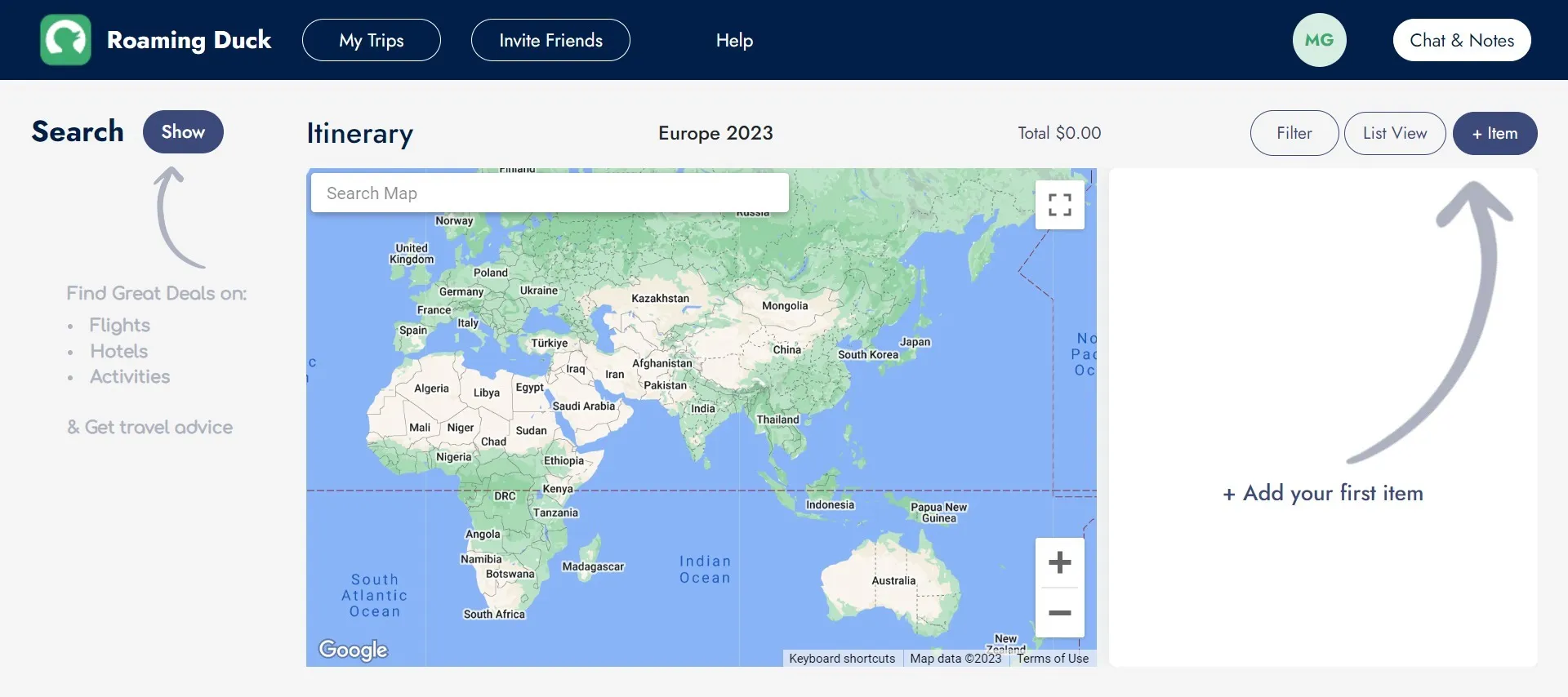
In the search section, you’ll get the option to “View & Book” flights, hotels, and activities. When you click on that button, you’ll get a prompt asking if you wish to add this item to your itinerary.
Alternatively, you can click on “Add to Itinerary”. This is a great option if your itinerary is not set in stone yet.
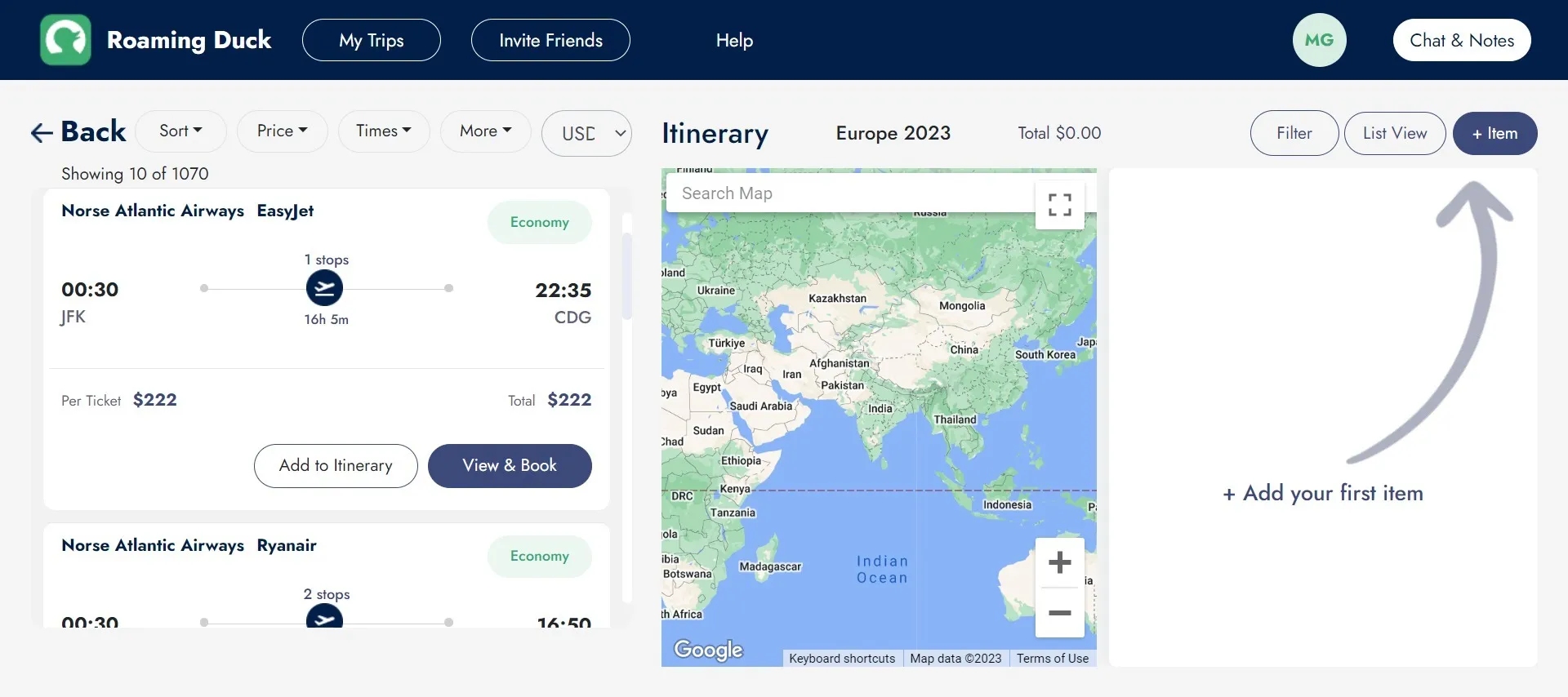
Step 3: Use The Itinerary Builder
In the itinerary builder section, you can add items:
- Other (You can create your own item with details, cost, and notes)
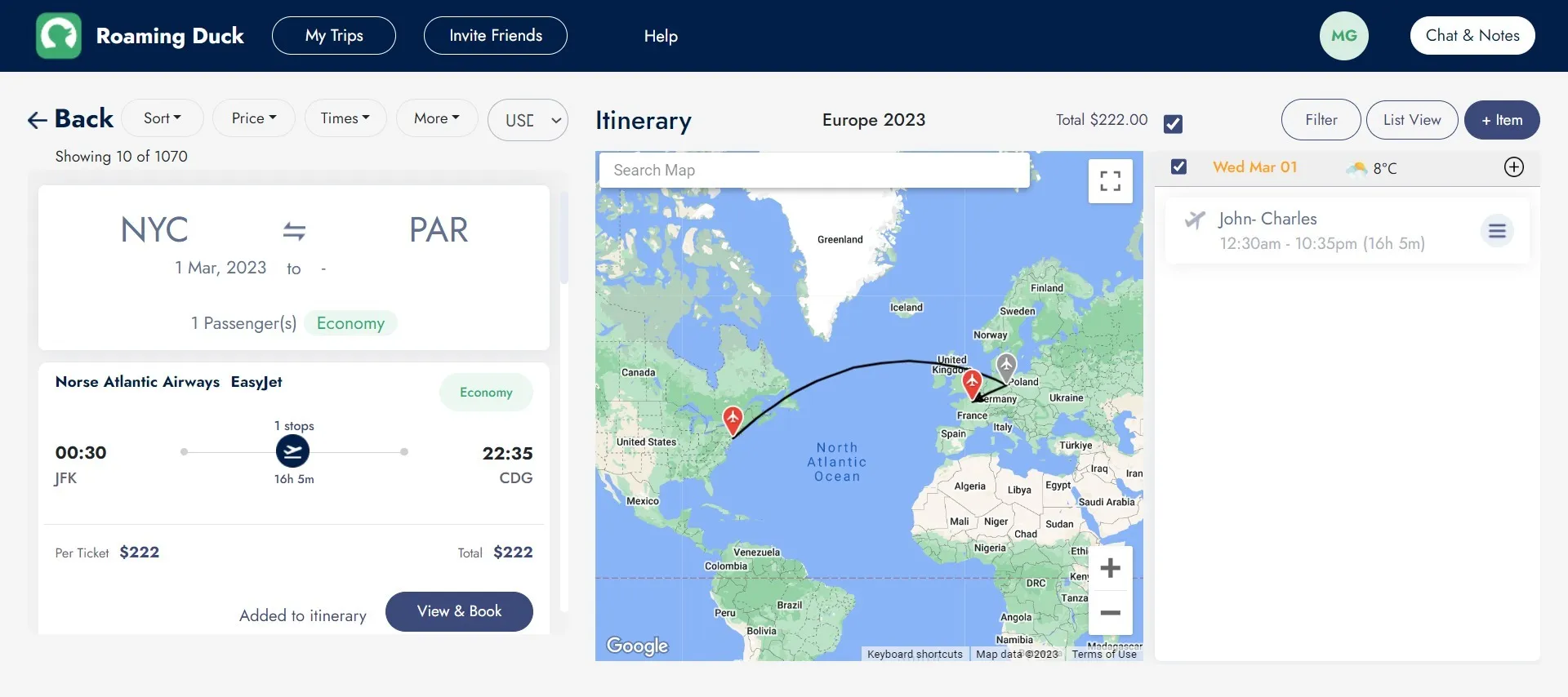
Step 4: Add Notes
There’s a section to add notes and create your to-do tasks.
This is quite helpful because creating a travel itinerary is a lot of work, and you don’t want to forget anything important.
Step 5: Invite Your Family And Friends
Finally, there’s an option to invite your friends and family so that they can see your itinerary and collaborate.
We think this feature is pretty cool. It can also be an excellent way for your parents to see where you are if they’re nervous about you taking a trip.
Advantages Of Using Roaming Duck To Plan Your Itinerary
Using Roaming Duck to create your travel itinerary has numerous advantages:
- You can add everything you need in one place.
- It’s intuitive and easy to use.
- You can book flights, hotels, and activities in one go.
- You can create your itinerary first and then book everything. You’ll even be able to see the total trip cost.
- You can invite your travel buddies to build the itinerary together.
- You can create a to-do list to help you plan everything.
- You can switch views (map and list).
- The application is free.
Now, it’s important to note that Roaming Duck is a new application. So, keep an eye out; it will even improve over time.
Tips For Making An Itinerary
Now that you know how to make an itinerary, we’ll share some extra tips with you.

1. Start Making Your Itinerary Early
If you’re planning a trip, it’s best to start making your itinerary as early as possible. This way, you’ll be able to book flights and hotels at the best prices.
These days, flights are more expensive, so booking in advance can save you money!
2. Don’t Overbook Yourself
It’s easy to overbook yourself when planning a trip. Don’t forget, you’re on holiday! Make sure that you leave some days for rest and relaxation.
Keeping in mind the time difference and potential jet lag, make sure you give yourself enough time to rest.
Having a strict travel itinerary may cause stress and burnout. Instead, keep it flexible when you can.
You don’t want to return from your trip exhausted!
3. Leave Some Space For Spontaneous Adventures
When you plan your itinerary, make sure you leave some room for spontaneous adventures. Unplanned activities can be the best part of a trip.
So, as you plan your itinerary, leave some days for unexpected surprises. You never know what could happen!
For example, if you befriend the locals, they might have great recommendations for you. Or if you stay in a hostel , you might make some friends and decide to explore a new city together.
This is especially true if you’re planning a longer trip. So, don’t be too strict with your itinerary, and make sure to leave some space in your itinerary for something special. You won’t regret it!
4. If Something Is Important To You, Book It In Advance
If there’s something that you don’t want to miss out on, make sure to book it in advance. This could be a hot air balloon ride or a cooking class.
Booking activities and attractions early can also save you money, but more importantly, you’ll have peace of mind knowing that you won’t miss out.

Final Thoughts On Creating An Itinerary For Travel
Creating an itinerary for a trip can be a daunting task. However, with the help of Roaming Duck and these tips, you’ll have no problem planning your travel itinerary.
If you’re feeling overwhelmed, start by writing down the basic information and then add details as you go.
Also, remember that having an itinerary doesn’t mean you can’t make changes. You can always be spontaneous and adjust your itinerary as you go.
Above all, make sure to have fun! What’s the point of traveling if you don’t enjoy it?
Happy planning!
Need more help planning a trip? Read one of the following guides:
- Best eSIM for international travel
- Revolut travel card
- SafetyWing vs Genki

MY TOP RECOMMENDATIONS
BOOK HOTEL ON BOOKING.COM
BOOK HOSTEL ON HOSTELWORLD
GET YOUR TRAVEL INSURANCE
LEARN HOW TO START A TRAVEL BLOG
LEARN HOW TO VOLUNTEER ABROAD

How to Make a Travel Itinerary: Create the Best One for Your Trip
There is something to be said for aimlessly roaming the streets of an energetic city popping into quaint cafes and talking to the locals, not knowing what you will find.
Though when there’s a limited amount of time, I also don’t want to leave seeing something perfect for the bucket list totally by chance. What if I missed the Skyline Trail hike along the Cabot Trail in Nova Scotia ? Or the stunning Piaynemo view in Raja Ampat ?
I always create a travel itinerary.
In order to make sure I don’t miss any amazing bucket list experiences while exploring a new destination, I always create a loose itinerary that leaves room for unexpected opportunity, like exploring the alleyways along the backstreets of Tokyo .
When I make my travel itinerary strict, it causes me anxiety, but it also can waste precious time when you don’t have a plan. I never want to be spending hours in my hotel room trying to figure out what to do for the day, when I can actually be out there doing it!

Here’s how I organize an itinerary:
How to Store your Travel Itinerary
In the beginning of my travel career, I spent a couple months creating a London itinerary , not wanting to miss a thing. I purchased an expensive map and spent hours putting little numbered stickies on all the places to be visited. These numbers coordinated with an Excel spreadsheet that listed the attractions by name along with other essential information.
It was foolproof-so I thought.

On day one, while walking to Abbey Road , the map fell out of my purse and was gone. Countless hours of planning were down the drain in a matter of minutes. Since then I have never bought a paper map, (especially since almost every airport and hotel has a free one you can pick up when you arrive).
Instead, I create and store all my itineraries with the Evernote app . The app can keep maps, photos and links to important websites that can be accessed on any of my devices. You can also set up an offline notebook in order to see your notes without Internet access, but keep in mind that you will need Wi-Fi to access any links.
You could also use the Notes app on Apple products (though it does not have as many bells & whistles as Evernote) or Microsoft OneNote , which is Evernote’s main competitor.

Do Your Research
If you want to get the most out of your experience, you need to know what you want to do and what will make the ultimate travel venture for you. Are you fascinated by a town’s history, culture or food? Do you want your trip to just be about crazy adventures and a city’s vibrant nightlife? Answering these questions means that you need to do some research for the area you are visiting.
Prior to traveling anywhere I do an online search of “unique things to do in XYZ”, “traditional foods of XYZ” and “best restaurant in XYZ”. I then scroll through dozens of the result sites quickly, making a list in Evernote of all the things that even slightly interest me. It is important to get past the first few pages of the Google results to find more personal stories and blogs, instead of large generic sites that can give you only a touristy perspective.
If the city or country’s Tourism Board website does not come up within the search results, I always check their site for recommendations. I may also see if Netflix has any documentaries on the destination that can be rented, plus browse a few travel guides at the bookstore.
Another good idea is to search a tour website, like Get Your Guide for what sorts of experiences they offer in your travel destination.
After there is a rough list, more elaborate research is done on each attraction and restaurant to determine what will be kept on the itinerary versus what will be deleted. Keep in mind that you can’t see and do it all, so put an asterisk by the items that are absolute must-dos.
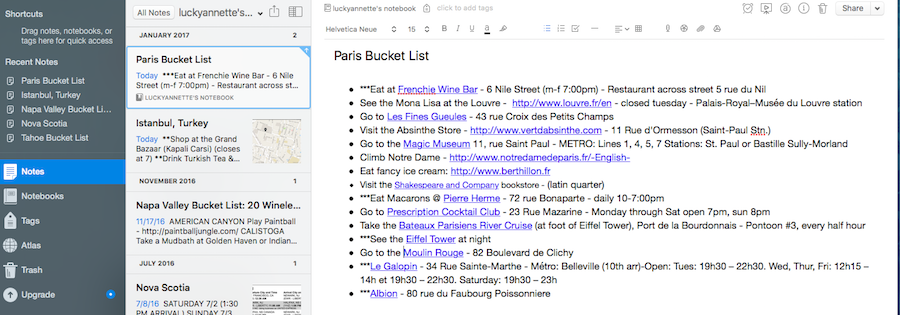
Divide a City into Sections
Many large cities will be split up in districts, like Paris with its arrondissements or the London boroughs. Look at an online map and determine the sections of a city you are traveling to. Create a header in Evernote for each district; if a town doesn’t have sections, it can be zoned into four quadrants (NE, NW, SE, SW). If your travels will be through several small villages, your headers can just be the name of the village.
Start taking the items from your master list and placing them in the sections that they are located in. This will make planning your day easier when you know what area you will be headed to and all the things you can do there.
Tip: You can create a Google Map with pins in all the locations you want to visit for the day, then add it to your Evernote file.

Create a Calendar
Make a calendar for each day of your vacation. You can either do this in a simple list format or create a table. Take a look at your “things to do” list, there are bound to be certain attractions/events that have to be done on specific days due to limited open hours or reservation availability, so put those on the calendar first under the appropriate day and time.
If there are free hours on that specific date, then add anything that is in that same district to it, starting with the important items that have an asterisk next to them. Don’t put specific times on these other entries just squeeze as many as you can in before or after you scheduled event. This way you will have plenty of options on what to in the district that you will be in without having to be strict about the time.

Leave Room for Opportunity & Be Realistic
Even when I am in a location trying to make a tick off the bucket list I create loose itineraries, ones that leave room for unexpected opportunities, because a bucket list is just as much about the journey as it is the checkmark.
There are always times while exploring a city that something incredible sidetracks you, and if you are scheduled with events back to back you may have to miss out. Of course you’re going to want to see and do everything on your trip, but also be realistic.
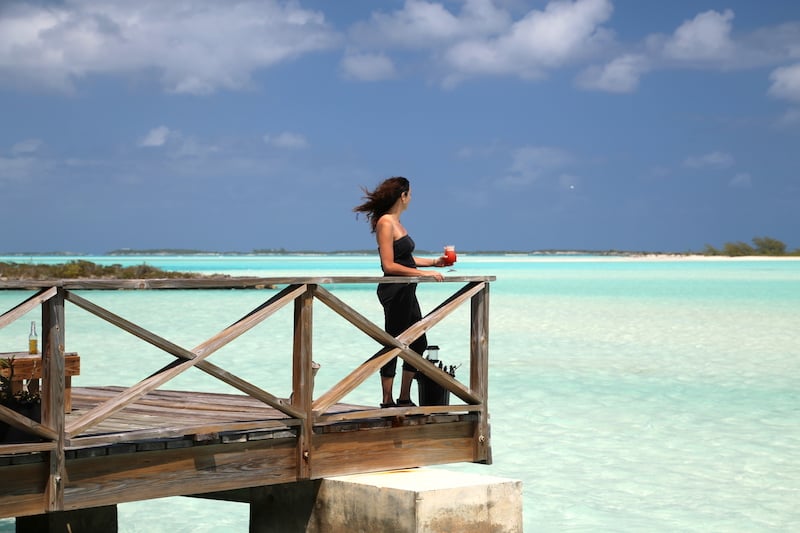
Don’t expect to land in Europe, after twelve hours of travel and hit the ground running jam-packing your itinerary from sun up to down. Leave room for meals, sleep, jetlag and rest. Plus expect a few hiccups along the way; flights can be delayed, restaurants can lose reservations and an attraction may pale in comparison in person to the photographs on the Internet.
In the Bahamas our tour guide forgot to pick us up at the hotel, it rained for 24 hours straight and the buggy we rented got a flat tire in the first half hour. Yes, it changed our itinerary a bit, but instead of the original plan we met a lovely Bahamian couple that graciously drove us to the local fish fry where we ate cracked conch and drank bottles of Kalik beer.
Sometimes the unexpected is the most memorable part of the journey.

Don’t Forget the Extras
Add your flight numbers, hotel addresses, maps, etc. to your itinerary file for easy access. All my itineraries include this information, plus the currency exchange rate (so I know how much 1 US dollar is worth in the country). It is much easier to look at one file then have to scroll through dozens of emails or check different apps to find what I am looking for.
Note: This should not be a substitute for keeping all that information stored in emails or printed copies of confirmations just in case.
This and a lot more traveling tips can be found in my book Bucket List Adventures .
Happy Traveling!
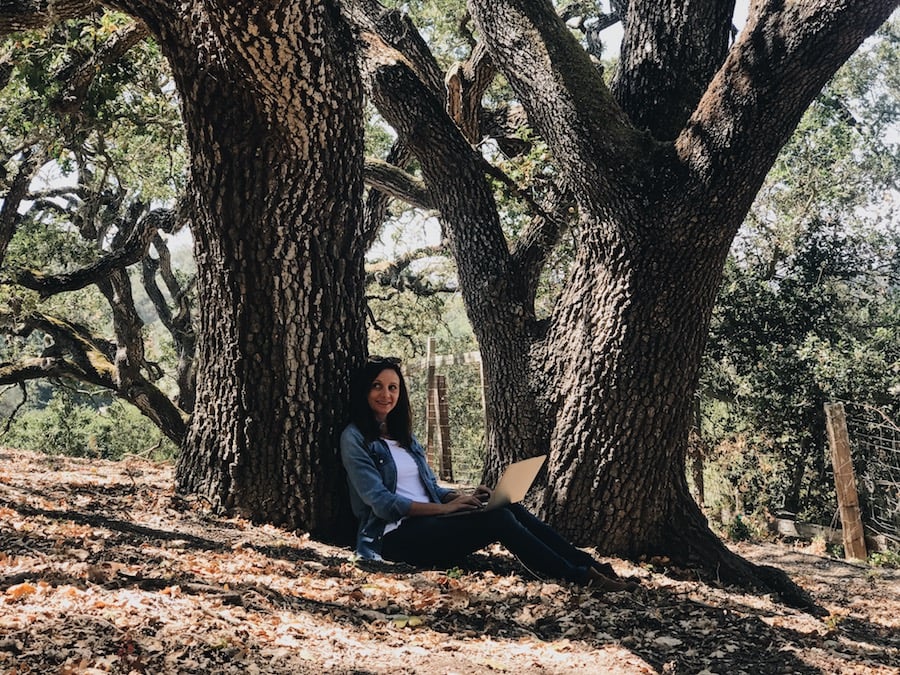
This post may contain affiliate links. If you make a purchase through my links, I earn a commission that helps to keep this blog running—at no extra cost to you. For more information read my full disclosure .
Tips for Long Flights: 30 Things to Do on the Plane My Favorite Tripod Selfie Stick for the Iphone 38 Items to Pack in Your Travel Medicine Bag 7 Printable Vacation Packing Lists for Your Next Trip 35 Travel Safety Tips to Know Before Your Next Trip Comfortable Airplane Travel: 25 Products To Take on Your Next Flight
Related Posts

Nervous Flyer? 8 Tips to Help Conquer Your Fear of Flying

35 Travel Safety Tips to Know Before Your Next Trip
29 thoughts on “how to make a travel itinerary: create the best one for your trip”.
How do you decide how long you will stay somewhere? We are looking to book our first trip to Europ and hope to visit Paris and London. Thinking 5 full days at each but don’t know how to determine that.
Typically, I will research everything I want to do before actually deciding on how long I will stay in a location. After I’ve compiled that list, I seperate the chosen adventures into the cities district and then I will put them all on a mock calendar to determine how much I can see and do on each day. This can determine how many days I need to be in a city, but it also depends on how much time I have to travel too. I think that an amazing overview of almost any city can be seen in 3-4 days. I did both Paris and London in 4. I didn’t get to see it all, but I also didn’t feel like I missed out on any of the monumental things. Five days will get you a lot of exploring in both those cities!
Wow! That kind of itinerary planning takes dedication. I do basic research when I go some place but I wish I can be as organized as you are :) I’ll give Evernote a try. Thanks for mentioning it.
I like my research!
Great article! This is also how I create our travel itineraries with the addition of doing a search for unique souvenirs to bring back home. It takes a lot of time and effort but it also gets you even more excited for the trip knowing what you’ll be seeing! Totally agree on having a loose itinerary – I over planned the first time we went to Europe and even made an itinerary of what paintings to see in museums :0 P.S. Absolutely love Evernote – I feel like my whole life is there :D
I totally over planned my first trip too! I love that you add what souvenirs to look for, that’s something I have never done, but may need to add.
Great article, very useful who love to travel.
Very nice article and photos you I love it thank you for sharing. Good luck
Great tips here–especially on how to use Evernote more effectively for planning! I usually just make a very unorganized list…no more!
I agree that whenever you are on travel always make an allowance to your itinerary. You don’t know along the road you might meet other travelers too that will be going to an interesting place.
I thought I had itinerary planning down, but after reading this, I’m realizing I’m still in the minor leagues! Love the tip about Netflix documentaries and leaving room in the itinerary for opportunity. I used to plan things so rigidly that it at times was very stressful. I’ve since tried to be more flexible and it has made all the difference. Thank you for sharing your trip planning strategies!
I used to be the same and plan very strict itineraries. And you are right—it’s way too stressful!
I wish I had that dedication to planning! Would love to do it step by step though. Gonna try the evernote app first!
Well thank you for those useful tips.
Thank you! It is an honor to be included on this list with this amazing group of customer service and experience experts and organizations. I promise to keep writing! Thank you again
Great blog and thanks for sharing nice facts.
Grateful information. So thank you for sharing.
This is a perfect article to read especially for a first-time traveler. Very informative, thanks a lot for sharing.
Thanks for the practical advice. A well prepared itinerary saves lot of time gets you most out of the journey.
Nice tips on how to store your travel itinerary!
I’m glad you enjoyed your trip to the Bahamas despite the hiccups. I’m from The Bahamas and I love living here
It was a great visit and I hope to return!
Wow. Thanks for the info. A useful article for anyone who wants to travel a lot!
Can you recommend train or bus links for travel in Europe? Specifically Italy, Greece. You have inspired by bucket list!
Thank you for highlighting your valuable words through this article
Thanks for the clearly laid out explanations, makes lots of sense. I do like allowing a bit of down time or for the unexpected too.
I found this review quite informative and helpful, I enjoyed it
Thank you for the information it helps a lot due to i love to travel on my down days, However it would be nice to have some kind of transportation included like a bus or some to make sure we get where we need to be.
This festivals looks an amazing at the first glance, a lot of countries’ respresentative. It should be on the bucket list of the travellers who want to experience cultures and traditions. I will try my best to be a part of this too.
Leave a Comment Cancel reply

Hey Bucket Listers! I'm Annette .
I’m a goal obsessed mid-lifer, traveler, experience collector, fear crusher, digital marketer and author with big bucket list dreams. Let's Connect!
GET MY 2,000 free bucket list ideas
Jump right in and you will get your printable ideas by email:
Whatcha Looking for?
Home About Blog The Shop Partnerships Contact
Bucket list ideas travel facing fear & anxiety.
- Travel Guides
- Top Destinations
- Inspiration & Ideas
- Booking Tips
- Packing Guide
- Where to stay
- At The Airport
- How-to Guides
- First Times
- Travel Community
- World Flavours
- Travel Products
How to create the perfect travel itinerary
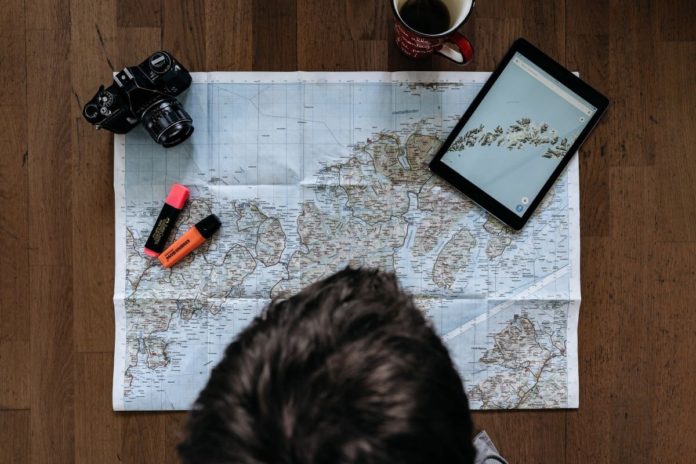
Some travellers are more than happy to arrive at their destination with nothing but a YOLO or carpe diem mindset and a backpack on their backs. For others, just the thought of arriving with nothing pre-planned and no holiday travel itinerary is scary.
There are advantages to both travel styles, but it’s undeniable that putting at least a little work into your itinerary before you travel can enhance your vacation experience. It doesn’t need to be a multi-page spreadsheet or a long list of scribbled notes. Today, you can use travel planner apps to create an itinerary easily.
In this article, we’ll set out a few key tips on how to create an itinerary to help your travel dreams come true.
Make your ideas list
The first step to making an itinerary is to create your ideas list. Have a travel notebook, or an ideas board or use a travel planner app to make a note of your dream destinations or location wish list. Whether you have a few vague ideas – “Australia”, “Europe” or something specific like “seeing the Himalayas whilst paragliding in Nepal”, get it written down in one place that you can refer to later. We love to note down any recommendations that we stumble across whilst browsing the web.
Work out your budget!
Work out how much money you’re going to set aside for your trip, and be realistic with yourself. Arguably, this is one of the first things you should do as a travel planner so that you can focus your ideas list without having to go through the disappointing task of crossing off everything that’s out of budget later. There is no point browsing websites for private islands in the Maldives, only to be disheartened when you realize that you can only afford a room in a shared Airbnb when it comes to making your trip itinerary.
Working out your budget early can also help focus your location choice if this isn’t already determined.
Research your travel itinerary
If you’re like us, half the fun of travelling or vacations is the planning and working to create an itinerary. Learning something about the history and culture of your destination before you go can make a trip even more rewarding once you’re there.
From travel books like Lonely Planet , Rough Guides and Bradt Travel, to customer-feedback-based sites like Tripadvisor to the multitude of online blogs, there’s a vast pool of resources to dive into for creating a trip itinerary.
You can also check out our list of the world’s best cities for more inspiration.
Additionally, online blogs and websites like National Geographic and www traveloverplanet com , etc can offer further inspiration and information about different destinations.
Decide when to go
Knowing when to go is an important factor for planning a trip itinerary. Make sure that the weather conditions are favorable for a holiday. Check for public holidays and local festivals at your destination.
Many travellers dream of being in India for ‘Holi’- the festival of colours but is it safe to travel during that time? Sometimes, festivals are best avoided. For instance, travelling to Vietnam during Lunar New Year (or Tet), is generally not recommended. Many facilities are completely shut down for a couple of weeks and the whole country is on the move, making domestic travel challenging! It might be best to create your itinerary to steer clear of these occasions.
Don’t overstretch yourself
As tempting as it is to try to visit all the temples in Angkor in one day, it’s probably going to lead to you falling asleep straight after sunset at Angkor Wat, with no energy to enjoy a delicious Cambodian dinner truly, and that’s if you haven’t succumbed to heat exhaustion by mid-afternoon! A major problem when creating travel itineraries is trying to cram so much in that your vacation resembles a military boot camp more than a leisure trip.
Sometimes less is more. As the travel planner, try to separate your activities and destinations into ‘must-do’ and ‘would be good to do’. Factor in travel time. Though train and bus rides can be a great way to see a new destination, you don’t want to spend your whole vacation staring out of a window.
Plan with your travel companions!
Maybe there’s an activity that the travel planner loves that might not be everyone’s idea of fun. Perhaps adventure caving in Mexico isn’t actually Mom’s ideal vacation activity. Have the conversation early in the planning stages, rather than when you’re on vacation.
If you’re travelling with companions who potentially have a different vacation budget to you it’s really important to discuss this early when forming your travel itinerary to avoid friction later on in your trip. Make sure you are open about this early and can come up with a solution. Perhaps your companion is happy to settle down on a hammock with a book for the day whilst you enjoy a day trip.
Use travel apps
Choose a trip planner app that will help you become the ultimate trip planner. Organizing apps like TripIt.com let you make complicated itineraries to share online and it will automatically generate maps, directions and weather information. Other options are a trip planning app like TripHobo.com which will give helpful activity and direction recommendations and useful information on opening times and visit duration.
Check out our list of the best travel planning apps to discover more useful apps.
Don’t get stuck in your schedule
Finally, the most important thing to remember – you’re not legally obliged to follow your travel itinerary! Allow yourself the freedom to take up recommendations from people you meet along the way, be that a fellow traveler, the staff at your accommodation or someone who lives there.
Use our tips above to plan your perfect travel itinerary, but don’t miss out on the spontaneous opportunities that come your way when you’re on the road.
- Trip Planning
- Inspiration
- Travel Tips
RELATED ARTICLES
10 travel hacks you have to know in 2024, embracing sustainable travel: a guide to eco-friendly journeys and green tourism, how to prepare for a flight with pets, latest articles, the top 10 singapore bars to visit in 2024, exploring the best foodie destinations for 2024, exploring sustainable travel: eco-friendly destinations to visit, adventure travel in southeast asia: thrilling experiences for adrenaline junkies, most popular, the 5 most visited tourist attractions around the world, the best nude beaches and resorts in the world, 13 seriously weird places to visit, thailand hidden gems: discover what makes thailand unique.
- Privacy Policy
- Terms Of Use
Copyright © 2024 Travel Wanderlust - All Rights Reserved.
- Work With Me

- Sierra Leone
- South Africa
- New Zealand
- Falkland Islands
- Netherlands
- Accommodation
- Electrical Gear
- Essential Gear
- Working Abroad
- Blogging Resources
Travel Tips
How to plan the perfect travel itinerary: 15 easy steps.
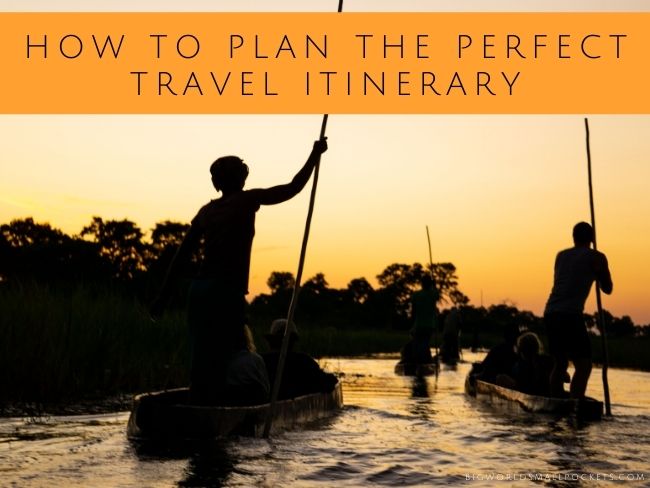
They say the key to a good trip is in the planning.
And y’know what?
They’re right!
Yes after many years spent traversing the globe, I can certainly attest to the fact that planning your trip is not only key to having the best time while you’re away, but also ensuring the process of getting there is stress-free too.
After all, who wants planning a travel adventure to be stressful?!
Instead, trip planning should be a major part of the travel enjoyment and, if you’re an organiser like me, there’s almost nothing you’re likely to enjoy more!
But even for the non-organisers among us … and I know you’re out there!… you really can learn to love planning.
Because the more you do it, the easier it gets and the better you get at it too.
Plus you also come to work out what essential parts of a trip need to be organised ahead of time and what don’t.
After all, a good travel planning strategy is as much about knowing what needs to be prepped in advance as what doesn’t!
Too much planning can ruin a trip and too little planning can ruin it as well.
So here to help you strike the balance, is my complete guide to planning a travel itinerary in 15 easy steps…
Just enter your details below and I'll email it you - simple!
Information will be sent to the email provided above
Related Posts
- 12 Essentials for a Long Term Flight
- The Best VPN for Travel
- Travelling with a Yoga Mat – All the Info You Need!
This page contains affiliate links meaning Big World Small Pockets may receive a small commission on any purchases at no extra cost to you.
#1 Consider When You Want to Travel
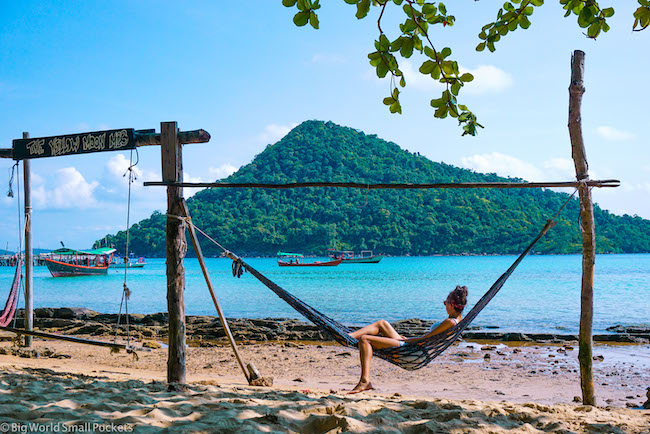
So first up on this article about how to plan the perfect travel itinerary is to consider when you want to travel.
This might seem like a strange place to start, but honestly, knowing roughly what months of the year you want to go adventuring for is going to make a big difference as to where you go adventuring.
Yes you might have your heart set on a particular region or country, but honestly, if it’s rainy season or winter or hurricane season or humidity madness in that / those places during the time of year you plan to travel, then forget it!
Not only will you not then see this region or country at its best, but if you’ve wanted to go for a long time, you might be bitterly disappointed too!
And it goes without saying that some types of travel adventures just aren’t possible at certain times of the year too.
Often these travel adventures are the flagship things to do in a particular country or region, so if you can’t enjoy them at the time of year you’re going to be there… well then what’s the point?!
Classic examples of this type of situation include road tripping the top end of Australia during the wet season (when many roads and national parks are closed), hiking in Asia’s Himalayas or South America’s Andes when many mountain trails are inaccessible, or heading to the Greek Islands in winter (when it’s too cold for swimming, sailing and sunbathing and many transfer boats don’t run!)
There’s a million more variables here too of course, but you get my point!
As a heat lover and sun worshipper, I can certainly claim climate is the number one factor I consider when planning the perfect trip and I reckon it should be top of your considerations too!
So first decide on when exactly you’re going travelling first and then start narrowing down the destination list from there…
#2 Research Climates and Weather!
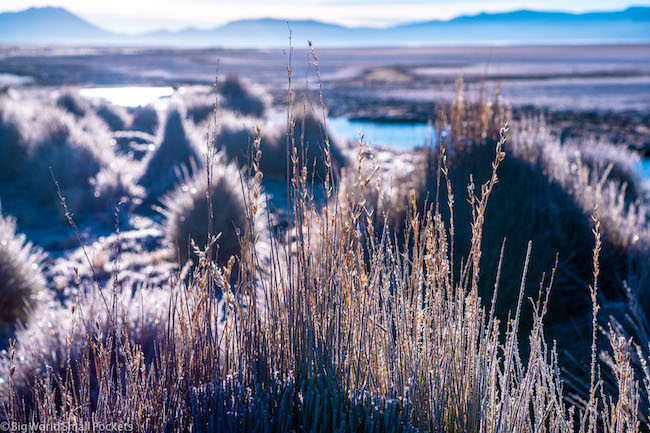
And this brings us nicely onto the second point here, because once you know when you’re off, you can start deciding where you’re off too.
Even some simple Google research can help here, at least in terms of broad regions.
Otherwise take a look at the overview list below for some starting ideas…
- Jan – Mar: Head to Southeast Asia, India, New Zealand, Non-Tropical Parts of Australia, Central America, West Africa, South Africa, Ethiopia
- April – May: Great for North Africa, Middle East, Caucasus, Turkey, Central Asia, Russia, Japan & Korea, Namibia & Botswana
- June – Aug: Ideal for Tropical Australia, Europe, North America, Peru & Bolivia, East Africa
- Sept – Oct: Enjoy Autumn in Canada, Southern Mediterranean, East Africa, China, Namibia & Botswana
- Nov – Dec: Consider New Zealand, Southern Africa, Non-Tropical Parts of Australia, Chile and Argentina, India
This is far from being an exhaustive list, but may give you a handy starting point to do further research.
Within these sweeping regional areas, there are of course micro-climates and geographical particulars to take into account too, as well as any cultural festivals and religious periods that can drastically alter a travel experience, a notable example of which is Ramadan.
It’s also worth bearing in mind what you want to enjoy in area – if there are specific activities you are going to certain countries for, such as hiking, diving, safari or festival-experiencing, then it certainly does make sense to research the best time for these particular pursuits to ensure you get the best travel experience possible.
#3 Think About The Length of Your Trip
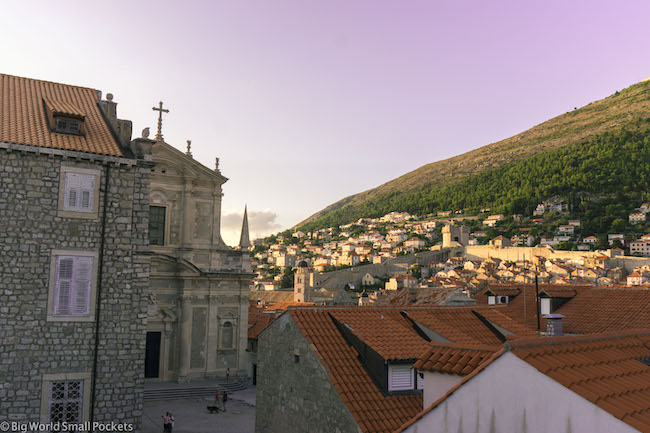
So once you’ve decided when and where you plan to travel, it’s now time to really hone down exactly how long you have for your trip and therefore whether you’re likely to be enjoying just one area in a county, a whole or nation or perhaps even a broader geographical region.
Absolutely key to planning the perfect travel itinerary is making sure you don’t overcommit yourself, and by that I mean don’t plan to cover too many places or too large an area!
Honestly, in doing this, you’re likely to overstretch yourself (trust me, I’ve been there) and actually not enjoy your trip nearly as much as if you’d planned a sensible itinerary inline with the length of trip you have!
In general, my rule of thumb looks like this:
- A weekend trip: Pick 1 city and enjoy it!
- 1 Week Trip: Base yourself in one destination and explore it well – possibility to include day trips to nearby areas.
- 2 Week Trip: As above, or select 2 different destinations within the same country and explore them both for 1 week each or, plan a backpack-style trip (moving every couple of days) in a small country. I try never to visit more than 1 country I if have just 2 weeks – the time you lose from travelling between them is too great.
- 1 Month Trip: Possibility to explore several destinations within one large country i.e. the northern highlands as well as the islands of Thailand, or the Andes as well as Amazon in Peru. Alternatively, explore 2 small neighbouring countries such as Armenia and Georgia. I wouldn’t advise trying to pack in more than 2 countries in a month.
- 2-3 Month Trip: This is when you can really start exploring several countries within one region i.e. Southeast Asia, East Africa, Eastern Europe, Central America. Just ensure you choose countries which are close together, as this saves travel time and also means you can get away with packing similar types of clothes and travel items.
- 3 Months+ Trip: With a longer trip up your sleeve, you can start exploring wider regions and enjoying bigger trips, such as road tripping parts of the US, backpacking South Africa or travelling from Cape Town to Cairo. In general, I wouldn’t start considering covering multiple regions in one trip until I had a 6 month+ travel window up my sleeve.
#4 Factor in Country, Region-Size, Journey Times and Accessibility

Needless to say, the above length of trip guidelines will vary wildly depending on the size of the country or region, as well as the amount of things / places etc you want to explore there.
Always remember that there will be more to see / do / visit than you plan on initially in any part of the world, so do consider this when thinking realistically about how much you can fit into the length of time you have.
Also remember that the physical act of travelling can be exhausting.
This is another reason to bear in mind your journey times when you are planning a travel itinerary and remember that, if your destination is far away from your home country, that 2 days of your itinerary might have to be given over to just getting there and back.
You will also need to possibly allow time for jetlag if you’re travelling across time zones.
And finally, if you’re planning to hit up a couple or more destinations within one country, then you need to think about the journey times for these too.
Firstly, how can these journeys be made? Secondly how long do they take? And thirdly, how frequent and reliable is the transport?
More off the beaten track or inaccessible countries will take longer to get around, which certainly needs to be factored-in to your travel itinerary.
More on this in section #10 of this article.
#5 Settle on a Destination

So now that you’ve thought about what time of year you’re travelling, the length of your trip, and the climate, journey times, accessibility and size of several destinations, it’s time to decide once and for all on your destination of choice.
Just remember, this will not be your only trip and no matter where you pick, you’ll have a great time if your attitude is right… so just go for it!
Any second or third choice options can always be saved in the bag for your next travel adventure!
#6 Research Visa and Medical Requirements

With your destination now selected, it’s time to begin researching the visa and entry requirements of that country or countries.
This will be specific to the passport you hold, so remember to check with the right foreign office website for the most up-to-date and correct information.
If you need to apply for visas, it can take a while, which is why it’s best to start this process early.
The same goes for any medical requirements.
If you need any vaccinations to enter a region or country, then planning this in advance (so you can book any medical appointments and get any prescriptions you need) is best done at least a month or 2 before your departure date.
#7 Book a Flight / Boat etc

And a few months before your trip, it’s also start time to planning how you’re going to get to your chosen destination.
If you’re trying to take the green option (and your selected arrival point isn’t too far away) then trains or boats maybe an option for you.
As always, I use Trainline to book coach and rail travel throughout the UK and Europe and highly suggest you check it out for the best prices if you’re travelling in this region.
Otherwise FerryHopper is a great sight for searching, price-comparing and booking ferry travel in Europe too.
Alternatively, if you’re heading further afield, it’s likely you’ll be catching a flight to your chosen destination.
My go-to website for finding the best deals on plane tickets is Skyscanner who cover both domestic and international airlines, including budget air companies.
Finally, if you’re planning a combination trip, perhaps a flight with ferry or train ride, then check out Kiwi.com. Their multi-modal travel planners are a really great resource when you’re looking to combine a range of transport methods:
#8 Insurance
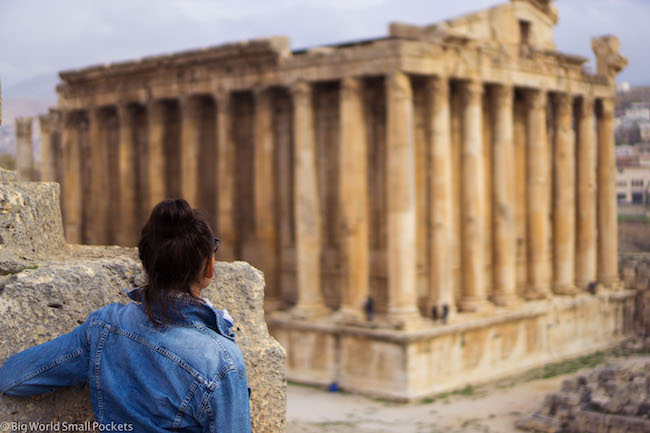
Alternatively, if you’re a long-term traveller, digital nomad or frequent remote worker seeking travel health cover, check out Safetywing’s Nomad Insurance policies.
#9 Look at Specific Destinations
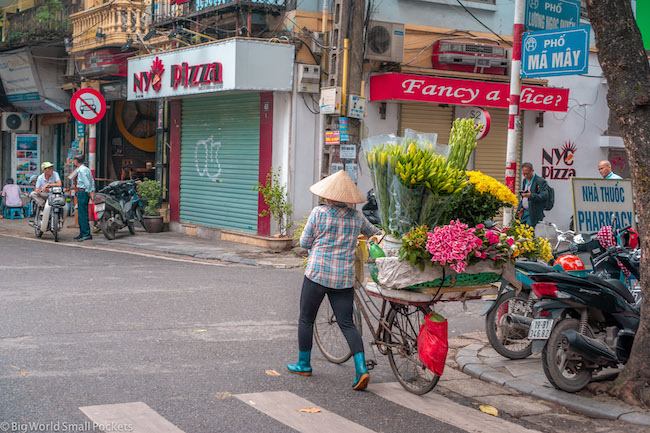
Then, once you’ve chosen your destination and done all the big admin for your trip, it’s time to get to the fun stuff, the real planning!
We’ve already touched on this when we spoke about the length of your trip, but at this point, it’s worth doing a bit more research.
In particular, it pays to know the various destinations or hotspots you want to visit in your country or region of choice – the big ticket numbers if you will.
At this point, making sure you have enough time to do them all, or whittling down the list if you don’t, is crucial in beginning to build the perfect practical travel itinerary, as you start piecing together exactly where you are going to go.
Once you have those destinations mapped out, then consider making a rough route and plan for how you will travel between them i.e. north to south or east to west – this will stop you having to double back on yourself and will save you time and money when you’re away.
Remember to be logical here and create an itinerary that works not only in terms of travel direction and geography, but also suits your trip’s feel.
For most people this involves flying into a major city and spending a couple days there, then picking a 2-5 other destinations in the country they want to see /explore / visit, before winding down care of a relaxing night or 2, possibly at the beach!
#10 Plan Where You’re Going to Stay
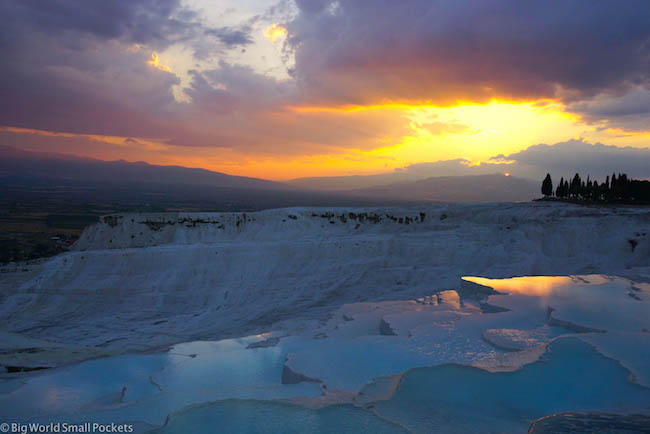
And once you’ve got those key destinations mapped out, you’ll start be able to look at where you are going to stay – a key part of planning any top travel itinerary.
With a vague route outlined too, you should know where you’re going to be on each night of your trip (or at least for the first couple of weeks if you’re heading off on a long adventure), as well as how many nights in each place you are looking to be there.
This should allow you to start researching and possibly booking some accommodation based on your budget and travel style.
For budget travellers, I always recommend Hostelworld for finding the best hostels around the world.
For couples or groups, VRBO is my go-to site when it comes to finding great rental accommodation such as apartments, quirkier or unique stays, or great glamping options.
And finally, when it comes to traditional stays, it’s hard to go past Agoda who offer a huge range of guesthouses, bed & breakfast, hotels and apartments around the world.
Just remember, you certainly don’t have to book every night of your itinerary in advance, but I think having somewhere to stay for at least the first 4 nights is a great idea, so you don’t have to worry about finding somewhere when you arrive.
#11 Discover How to Travel Around
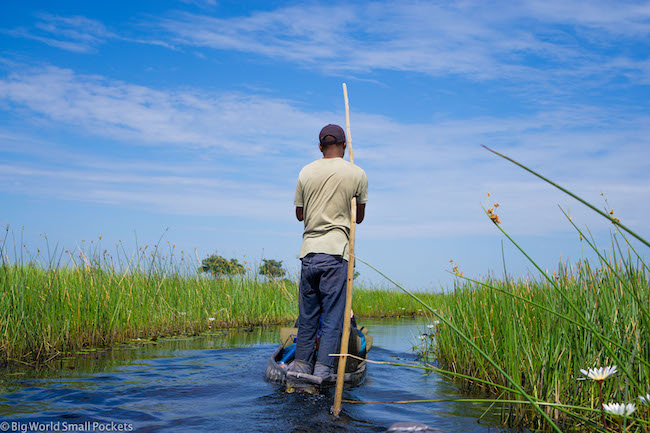
Once you’ve got your rough travel itinerary plan in place and some accommodation lined, it’s then time to research how you can get between destinations in your chosen country(ies) – either on day trips or, if you’re moving around, to base yourself in different areas too.
Again, we talked about this in section #4 of this post, but this is the time to go into more detail – perhaps even booking or reserving those day trips or car / train / bus / internal flight connections that will get you between the spots you want to visit.
As discussed before, I use Trainline for booking coach and train tickets in the UK and Europe, and I use the excellent 12Go website for booking buses and train across Southeast Asia.
Thrifty Car Hire are my go-to for car rental, pretty much the world over and Skyscanner are the best for flights no matter where in world you’re heading.
#12 Outline Possible Activities
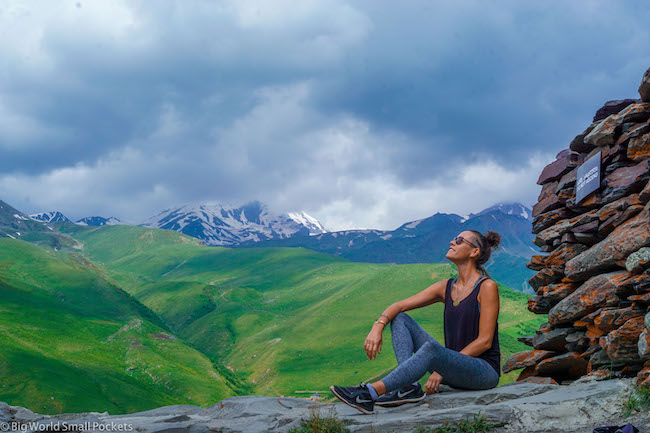
And it’s not just day trips you might want to research, but also any other activities you plan to enjoy as part of your travel itinerary at this stage too.
If there are must-do activities, then creating the perfect travel itinerary, definitely involves locking them in early.
These sort of activities might include things like scuba dive trips, hikes with guides or attractions that require tickets to be bought in advance to avoid the queues.
If there are any absolute bucket lists activities on your itinerary too – such as The Louvre in Paris , Angkor Wat in Cambodia or Machu Picchu in Peru – y’know the sort of activity that underpins a large reason you’re going to that country, then locking in these ahead of your trip is definitely a good idea as well.
GetYourGuide is my go-to site when booking day trips, guided attraction tours, as well as skip-the-line tickets to many of the world’s top sights.
#13 Pack Accordingly
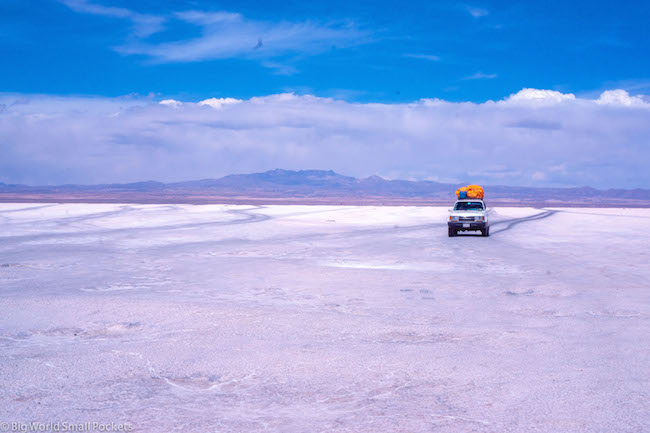
And now that you know where you’re going, when you’re going and what you’re going to be doing there, it’s time to start thinking about what you’re going to pack.
I generally advise starting to do this a couple of weeks before your trip, so that if you do need to buy anything extra, you’ve got the time to do this without stressing!
Check out my top 25 travel essentials for more info about what you should wear when travelling in different parts of the world.
#14 Learn Common Cultural Norms and Safety Tips

The next step when it comes to planning a travel itinerary can also be done in the final few weeks before your trip, and that is learning some of the common cultural norms and particular safety tips when it comes to your chosen destination(s).
This is particularly pertinent if you’re jetting off to a nation far away from your own, where life might be very different.
Be a little forewarned about what to expect in the areas you plan to travel is a crucial part in getting ready for your travels and I often find reading blog posts from people who have already visited there, gives a great personal perspective on what you can expect.
#15 Get Money Access & Entertainment Organised
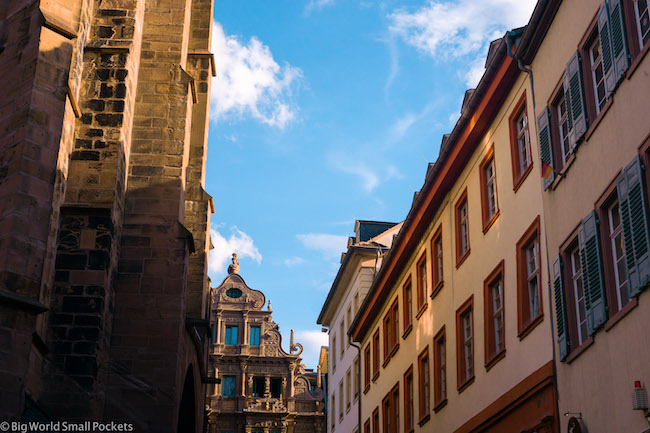
And last but not least on this list of my top tips about how to plan a great travel itinerary, it’s get your money and entertainment organised!
By this I mean, you need to learn what currency the country(ies) you’re heading to use(s) and whether you can use debit and credit cards there, or need to carry a lot of cash.
In either instance, it makes sense to take some cash with you – either some currency that is used in that country or alternatively, Euros or USDs that can easily be exchanged on the ground there.
If you can use debit and credit cards in the region of your intended travels, then it’s also worth researching some bank cards that won’t charge you for overseas transactions and setting about getting one or two!
The easy way to spend abroad with real exchange rates, no markups and no sneaky transaction fees, a Wise card works just like a debit card abroad… and it links easily with Google and Apple pay! Grab yours here .
When it comes to entertainment, make sure you have Spotify Premium lined up for your music listening, as well as Amazon Audible for your eBooks and any Netflix or Amazon Prime series / films downloaded.
This is also crucial for your travels and those journeys / nights when you just want to chill.
And Finally…. Enjoy!

Yes the most important part of your trip is that you just relax and enjoy and, to be honest, don’t plan too much!
Here’s some other great tips to ensure you plan your travel itinerary in the perfect way…
- Leave some stuff to the last minute – planning everything ahead of time will ruin the sense of adventure and fun
- Be flexible – just as you should leave some planning to the last minute, you should also remain flexible, so that if any of the plans you have made have to be changed at any point, you’re able to do this and still enjoy!
- Relax – it’s a holiday after all, so getting stressed during the planning process or at any point on your travels kinda defeats the object!
- Read blogs – I mentioned this already, but reading blogs to help research your trip is one of the best tips I can give.
- Schedule free time – Do not, I repeat do not, over schedule your trip itinerary. If you try to fit too much in, you won’t enjoy it as much. Trust me!
- Think about value – And finally, please remember value over budget when it comes to planning the perfect trip. Honestly, bearing in mind the memories you’ll make, rather than the money you’ll spend (within reason), is crucial to having the best trip!
PIN IT TO PINTEREST!
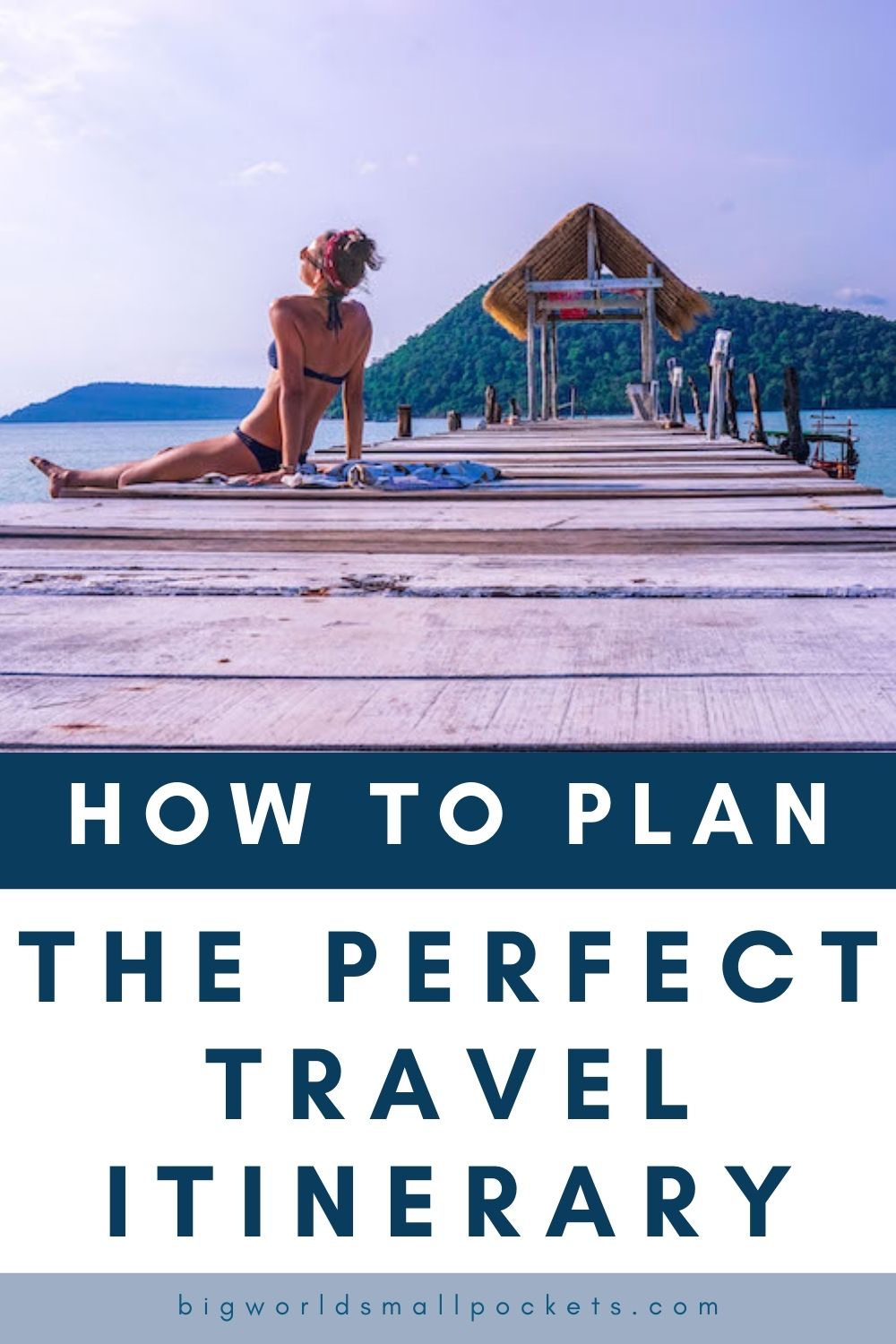
So there you have it, my guide on how to plan the perfect travel itinerary in 15 easy steps.
Do you have any more questions about planning a trip or tips to help a fellow traveller out?
If so, then please drop them into the comments box below…
Creator of Big World Small Pockets, Stephanie Parker is a travel addict! Originally from Jersey in the Channel Islands, Stephanie adventures the world collecting tips, advice and stories, to share with a smile
Leave a Reply Cancel reply
Your email address will not be published. Required fields are marked *
This site uses Akismet to reduce spam. Learn how your comment data is processed .

Travel Planning: 9 Steps To Plan The Perfect Itinerary

Niklas Forstreuter
- May 21, 2022
Planning an itinerary can be a tedious and time-consuming process. Whether you’re planning a weekend trip to a city, a two-week holiday in a beach town or a two-month backpacking trip, you’ll want to see as much as possible without wasting time or money.
Over the years we’ve developed a strategy for setting up the perfect itinerary and doing travel planning as effectively and quickly as possible. With these nine steps, planning your next trip will be easy, and you won’t find yourself missing out on any attractions.
If you usually struggle to set up an efficient itinerary or find yourself wishing you’d have done more on your trip, then this is the post for you. Keep reading for our step-by-step travel planning guide and find out how to change the way you plan your trips.
This post may contain affiliate links, which means we’ll receive a commission if you purchase through our links at no extra cost to you. This helps us keep Guide Your Travel free and provide high-quality content for you. Please read the full disclaimer for more information.

Why making an itinerary matters
Even if you’re not a fan of spreadsheets and an exact travel itinerary, a bit of planning and preparation can really help give you the best travel experience. Most people either find themselves over-planning and never completing their itineraries or not doing any research at all and missing out on the best things to do and see.
Have you ever sat in your hotel room googling what to do in the city you’re visiting, wasting time and ending up disappointed when you run out of time to see everything? While you can definitely find fun things to do on the go, you shouldn’t rely on everything just working out.
Just a few hours of planning will really take your trip to the next level.
Another reason why we love to encourage travellers to do their research before they go is to avoid disappointment. If you’re flying to Bali expecting it to look like Eat Pray Love, that will probably not be the case. If you’ve carefully set up your itinerary and done some planning, you’ll know that Bali is actually quite touristy and that you should go to specific areas to find the authenticity and peacefulness you might be looking for.
Best eSIM For Travellers
Getting a SIM card has never been this easy. We compared dozens of eSIM companies and found the best one.
Are these steps necessary for every trip?
While we love travel planning (we think it’s almost as fun as the actual trip), we do realise that not everyone does. Plus, over-planning might actually make your experience worse, which you’ll want to avoid, of course.
If you make your itinerary too packed and leave no time for spontaneous activities, you might miss out on the best parts of travelling. Plus, travel is meant to inspire you to experience a new place. No one can truly enjoy the present if they’re constantly referring to a schedule.
This guide on how to plan your travel itinerary will mostly apply to trips where you’re trying to see a lot in a short period of time. If you’re on a two-week beach vacation to simply relax and enjoy yourself, then too much planning will not be helpful.
If you’re number one goal for your trip is to get away for a bit then, by all means, ignore everything this article says and ditch the itineraries. However, you might still benefit from some research before you go.
Even if you’re only planning to lay by the pool or go to the beach the entire time, you might find it interesting what there is to see and do around you, just in case you get bored.

9 steps to plan the perfect itinerary
Here are nine steps we love to use to plan and set up an itinerary.
Must-Have Travel Resources
- Insurance – Safetywing
- Accommodation – Agoda or Booking
- eSIM – Jetpac
- Flights – Skyscanner
- Tours & Experiences – Viator
1. Pick your destination
The first step of travel planning is, of course, picking your destination. This will usually be an easy step if you’ve already booked your flight or know you want to travel to a certain place.
If you’re not sure where you’ll be going, you should do some research online for fun new destinations to try. You can also join an organised tour to places like Thailand or Bali if you’re not up for planning an entire trip yourself.
Your destination choice will affect your itinerary a lot. Planning a trip to a larger city, for example, is usually more work than setting up an itinerary for a beach vacation. If you’re planning to see multiple places on one trip, now is the time to consider how long you want to spend in each one.

2. Decide on your time-frame
If you’re planning a big trip, you will most likely have limited time available. It’s important to keep in mind how much time you’ll have to see a place when you’re planning your itinerary. There is no use in planning a big trip when you only have a few days, so set up your itinerary wisely.
Don’t forget to factor in travel days, which quickly turn a week-long trip into just a few days.
3. Consider where you’re staying
Booking your accommodation and doing research for what you want to do in a certain place should go hand in hand. You don’t want to blindly book a hotel or hostel in a new city without knowing first where the main attractions are. Consider your budget and always check if the accommodation you’re choosing is close to public transport.
If you’re not too worried about your budget you might be staying in a really nice hotel or apartment. For resort-style trips, you’ll want to keep in mind that you might be spending a considerable amount of time at your hotel. This is important when you plan your itinerary so that you don’t end up missing out on the amazing amenities you’re paying for.
Always compare prices for hotels. We at Guide Your Travel prefer Booking.com , Agoda or Hostelworld for finding the best deals.

4. Do the research and look at examples
Now that you know where you’re going, where you’re staying and for how long, it’s time to do some research on the destination you’re seeing. This is where travel blogs can be incredibly helpful.
The advantage of doing travel research and planning online is that you can always find up-to-date and relevant information, plus you can make use of reviews from people who have already been there. All for free!
Googling “What to do in” or “Things to do in” is really helpful and will show you tons of fun activities and must-see places. Looking at sample itineraries will also really help you get an idea of what is realistic to see in one day.
Some of our most popular itineraries include our Indonesia guides to Yogyakarta and Nusa Penida or our itineraries to Lisbon or Thailand .

5. Make a list
Next, we love to make a big list of all the things we’re interested in seeing on our trip. This can be a very rough list of places you come across during your research, and you can keep adding to it as you go.
This list will be really helpful to organise yourself and make sure you’re not missing out on anything. If you feel up for it, you can create a subsection for places to eat, which will be really helpful to refer to later if you’re struggling to find a place for lunch or dinner.

6. Make a map
A list is great to get an overview of what you want to see, but it’s not the best way of planning an itinerary. You want to avoid wasting too much time on needless transportation between places, so setting up your itinerary in an efficient way is really important.
That way, you avoid having to go back and forth between areas or forgetting to see a place while you are close by.
We usually take our list of things to do in a place and then transfer them to Google Maps. You can use the “My Maps” function as a travel planning tool to make sure you always have your map with you everywhere you go and can keep it as a reference for the future. Or, it’s even easier to just mark interesting places on your Google Maps with a star, and organise them in different lists, so you won’t get confused.
Our itineraries on Guide Your Travel usually include such an interactive map that is easy to add to your phone. That way you get to skip all the previous steps and save yourself time with a ready-to-go map that includes all the important attractions.
Once you’ve added all the items from your list onto a map, you should have a pretty good idea of where all the places of interest are. This is probably the most important step on this list and will truly help you set up an organised and efficient itinerary.
Check out the map of San Sebastián below as an example.
Check out the best things to do in San Sebastian, Spain
The Best Rental Car Deals
Discover Cars is the best platform for rental cars, with no hidden costs and fantastic prices.
7. Look at the transport
Your next job is to look at your map and find out how far apart everything is and how you’re going to get from Point A to Point B. For some distances you may be able to walk, for others you might need public transport or a car.
Don’t forget about places that are further away and might require a day trip. If that is the case and you’ll be spending an entire day getting to one attraction, you might want to look at other places of interest nearby.
That way, you can see more things at once and get the most out of your trip.

8. Set priorities
Unfortunately, travellers rarely have enough time to see everything they want to see. It’s likely that your list of things to do is too long and you’ll have to set some priorities.
At this point, it’s really useful to colour code your list and map to get an idea of what you don’t want to miss and what you could maybe leave out. You can still keep these ideas on your list for your next trip.
9. Plan your itinerary
Lastly, you finally have all the tools you need to set up your itinerary. Gather the points on your map into little groups of things you want to do in one day. Do some research on how long you’ll approximately be spending at each one and what’s realistic to do in a day.
Plan the things that are important to you first and add the others around them. Give big attractions their own day, and don’t plan to see the most important thing on the last day in case you can’t because of the weather or unforeseen circumstances.
Most importantly, don’t stress yourself out too much and avoid over-planning. Here are some tips to keep in mind while you plan your itinerary.
Tips and tricks for planning an itinerary
Planning an itinerary will feel like second nature after some time, but you might want to keep these tips in mind for your first few attempts.
Be realistic
Don’t make your time schedule too tight. If you’re planning your day in 30-minute chunks starting at 7:00 AM, you’re most likely overdoing it.
If you’re running from place to place just to see, you won’t have a lot of chances to actually enjoy any of it. Go back to step number 8 and take some things off your list if you’re feeling like there won’t be enough time. Even just one or two big activities or attractions per day are usually enough.

Leave room for spontaneous activities
The best parts of travelling are often the things you didn’t plan. Use these steps to plan a rough itinerary, but avoid making a set time schedule.
You’ll want to use your map and list to get a rough idea of which attractions are close together, but not to plan your day minute by minute. Definitely leave room for spontaneous activities and unplanned exploring.
If you come across a museum, an interesting place, or something you didn’t have in your original itinerary, don’t shy away from moving away from your original plan and doing something spontaneous.
Factor in transport
Keep in mind how long it will take you to get from one place to another. This is especially important for day trips. Again, over-stuffing your itinerary is not a good idea, especially if you’ll be spending a good chunk of your day on a bus or in a taxi.
Traffic is something we often forget about, and a quick 30-minute drive can quickly turn into two hours in rush hour in a busy city.
Looking for the best car rental deals? Check out Discover Cars
Don’t forget about downtime
Sightseeing is exhausting. You’ll most likely be too ambitious when planning your itinerary and will end up tired and unmotivated to go out and see more.
Everyone knows that point of your trip when all you want to do is lie on your bed in the hotel room and not do anything for a few hours. Leaving some time in the afternoons to rest for a few hours can really help you regain that energy.
That way, you won’t skip too much of your itinerary because you feel tired or unmotivated.

Factor in bad weather
It’s useful to keep in mind which attractions can be seen during bad weather and which can’t. When it comes closer to your trip and you can see the weather forecast you should take some time to adjust your itinerary if there is going to be rain.
Make sure to have some rainy-day activities ready in case the weather is bad.
Consider waiting times
If you’re seeing big attractions like a famous landmark or a museum there will most likely be waiting times. These can be several hours and might mess up your itinerary and plan for the day.
Always keep in mind that you might have to wait for a while before you go see a place, and book entrance tickets and tours in advance if you can.

Factor in opening hours and busy times
Opening hours are another thing people tend to forget about when planning their itinerary. Some places close in the early afternoon or are only open on certain days of the week.
Always do research on this before you go, and make sure the hours are up-to-date. Another thing to keep in mind is that every tourist will want to visit the main attractions during the same time of day. To avoid long waiting times and huge crowds, you should make sure to visit popular places early in the morning if possible.
Look at weekdays and special events
Finally, research public holidays or special events before you go. Opening hours might be different on those days, which is good to keep in mind. In general, places are a lot busier on the weekends, so try to see the attractions that are important to you during the week.
However, if you’re planning to experience the local nightlife, you should make sure to do so on the weekend for a more fun experience.
Planning an itinerary FAQ
Use a spreadsheet and Google Maps to plan your trips and make planning a tour itinerary as easy as possible.
Decide your destination, how long you’re staying, and what you want to see and then combine it all into an itinerary.

Before you go…
You’re ready to plan your itinerary for your big trip, and hopefully, this post was helpful. If you’re not quite set on a destination yet, you might want to check out our guides to popular places around the world like Kuala Lumpur , the best islands in Thailand , Ubud or Uluwatu in Bali, or the Komodo National Park .
In Europe, have a look at Saint Emilion , San Sebastian , Porto , Frigiliana or Madrid .
My Most Important Travel Resources
- Hotels – Agoda or Booking
- Hostels – Hostelworld
- Tours & Experiences – Viator & Get Your Guide
- Transport in Asia – 12Go Asia
- Rental Cars – Discover Cars
Did I miss anything? If you have any questions or feel like something is missing from this post, please leave a comment below or contact me .
Welcome to Guide your Travel!

Hi! I’m Victoria, a travel blogger from Germany and the author of Guide your Travel. I write about my favourite destinations in Europe, South East Asia and digital nomad life in Bali.
Click the icons below to follow us on social media
Join the family!
Enter your email below for our weekly newsletter and up-to-date news in Bali

Leave a Comment Cancel Reply
Your email address will not be published. Required fields are marked *
Save my name, email, and website in this browser for the next time I comment.

Hi, I'm Victoria
Welcome to Guide your Travel – a blog about South East Asia and how to travel on a budget.
I’m a blogger, writer and photographer and love to introduce my favourite destinations to others and encourage them to see the world.
I’m originally from Germany but spent four years living in the UK, quite a bit of time in Spain and Malaysia, and am now travelling full time with a home base in Bali, Indonesia.

Work with me!
Popular Posts

21 Unusual Things To Do In Yogyakarta & Hidden Gems

Mont Saint-Michel Complete Guide – All You Need To Know

Where To Find Turtles At The Beach In Gili Trawangan

Batu Caves Kuala Lumpur Ultimate Guide (Price, Hours, Tips)

19 Cheap Places to Eat in KLCC, Kuala Lumpur

22 Fun And Unique Things To Do In San Sebastian, Spain

7 Secret Bars In Kuala Lumpur And How To Find Them

Ultimate Porto Travel Guide – All You Need To Know

Beginner Guide To Using A Polariser/Polarising Filter

15 Sustainable Travel Products To Take On Your Next Trip

20 Things To Do In Kuala Lumpur And 6 You Should Skip

How To See The Sunrise At Borobudur In Yogyakarta
View posts by countries.
Explore my favorite places by clicking one of the countries below

Guide Your Travel

© 2024 Guide Your Travel – All Rights Reserved.
Quick Links
Destinations, subscribe to our email newsletter.
How to plan A Travel Itinerary On Your Own: A Step by Step Guide
Some people swear that traveling with no plan – other than buying a one-way plane ticket – is the only way to experience a country authentically. But if you’ve landed on this website my guess is that you’re interested in being a little more organised than that.
You probably prefer to have a plan. You feel more comfortable knowing where you will be resting your head every night, at what time the train or plane leaves for your next destination, and what the main things to see and do are in each place.
Knowing all of these things means you need to create a travel itinerary for your trip. A daily outline that ensures your trip runs smoothly and that you can, therefore, make the most of your precious time. By investing the time now to put together an itinerary, you save time for more fun things whilst you are abroad.
This blog features travel itineraries for destinations around the globe . I created all of them myself and I will show you how you can do this yourself for any country you would like to visit. The length of your trip really doesn’t matter. The process remains the same whether you are planning a weekend getaway in Europe , three days in New York City, a two-week road-trip around central america, a three-week round trip around South East Asia, a month discovering the middle east or a year long adventure in south america.
You could, of course, get a travel agent to do the travel planning for you, but you will without a doubt pay far more for your trip than you would have done had you planned it yourself. There are also plenty of apps and websites that will help you plan your trip. But I personally find that doing it yourself will afford you far more flexibility.
Whilst planning your own itinerary requires a certain level of skill and practice, especially for more complex ones, I am convinced anyone can do it. The key to any well-laid-out travel itinerary is to start planning it early and to retain a certain amount of flexibility.
1. DECIDE WHAT THE LENGTH OF YOUR TRIP SHOULD BE
The duration of your trip is a crucial factor in the planning process. You will not be able to determine the cost of a trip and whether you can afford it until you have decided how long you are going away for.
Are you going for a week? A couple of weeks? A month? A year? Figure out your total number of days and go from there.
To a certain degree, this will be determined by the amount of leave your work grants you. To give you a rough idea, Gary and I tend to go on one sixteen-day-long adventure abroad every year. By starting our trip on a weekend and ending it on a Sunday, we use up around ten days of leave. Because we both have twenty-one days of leave in total, this means we retain eleven days for smaller three or five-day trips around the UK and Europe.
So it is worth starting your itinerary planning process by figuring out how many days leave you have or can afford to take off, before doing anything else.

2. ESTABLISH A BUDGET
Make sure to set yourself a realistic budget early on. This will influence what destination you choose, what flights and hotels you book, and how many places you can visit. You do not want to plan a fabulous itinerary and then discover you cannot afford it.
Ask yourself “how much can I realistically spend on this trip”. How much spare money do you have now and how much can you save up by the time you book your flights and hotel? Consider asking friends and family to contribute to your travel budget, in lieu of a gift for your birthday and Christmas.
Unfortunately, some adventures (like skydiving in New Zealand or scuba diving in Iceland) might over-exceed the amount of money you have in your pocket. When going back and forth, remember to ask yourself if there something you literally would go crazy regretting if you didn’t go do it if you had the chance. If choosing to save money by not going to your grandfather’s hometown would keep you up at night, maybe it’s worth penny-pinching elsewhere.
There are of course many ways you can get more for your buck. You could travel in the shoulder season or off-season, scour the market for cheap deals on flights and hotels and shorten your trip.
If you are looking for additional ways to stretch your travel budget, consider signing up for a Travel Credit Card. Many of these cards offer rewards such as cashback, points, and airline miles that can be used towards travel expenses. Some cards also offer free travel benefits such as travel insurance, lounge access, and waived foreign transaction fees. Make sure to do your research and compare the different cards available to find the one that best suits your travel needs and spending habits. Additionally, be sure to use the card responsibly and pay off the balance in full each month to avoid accruing interest charges.
To find out more about the typical cost of visiting a particular country try using the website Budget your Trip .
You should also check what currency is typically used in the country of your choice (some countries have multiple currencies) and what the current exchange rate is. A great way to save money is to choose a destination where the exchange rate puts you in an advantageous position. The XE Travel App is a great resource to check current exchange rates.
3. CHOOSE A DESTINATION
Now that you have set a budget and timeline, you can choose a destination.
If you are anything like me you have a really long wish list. Is there a particular site or activity that ranks high on this must-see travel list? You could plan an entire trip around that. One year Gary and I visited Iceland with the sole intention of seeing the Northern Lights.
To get started, try daydreaming big and brainstorming ideas such as countries or cities to visit, famous landmarks to see, events to attend, unique activities to try, volunteering opportunities, and even friends or family to visit.
If this is your first time traveling and you do not yet have a bucket list then visit a couple of blogs, browse through Instagram and buy some travel magazines for inspiration. What takes your fancy? Is there anything that screams out to you?
Certain destinations are particularly suited for a specific season– like Christmas in New York, New Years’ in Sydney, or seeing the spring cherry blossoms in Japan.
If you have a country or city in mind, it’s worth a quick check to see if there’s anything exciting happening at a particular time of year that could make your trip even better. Are there any festivals you would like to see or participate in?
Do consider whether a country might be particularly crowded at that time though. Prices for hotels and flights increase in peak season.
Finally don’t forget to check the weather forecast. You really don’t want to spend your whole holiday in the rain. (Unless that is your thing of course. I am singing in the rain…)
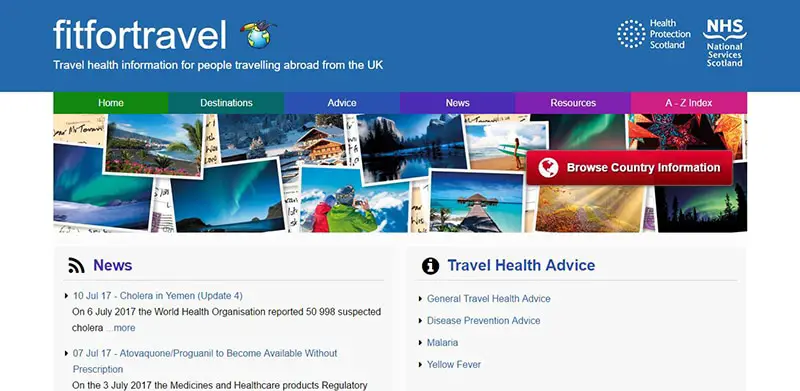
4. CONSIDER ANY DOCUMENTATION AND VACCINATIONS YOU MIGHT REQUIRE
If you do not have the required documentation and vaccinations for your chosen destination, you are not only endangering yourself, you might not even make it into the country in the first place.
So before you start planning your itinerary and certainly before you book anything, try and find out what documentation and vaccinations you will need, how far in advance you have to start the process of getting them, and how much it will cost to do so. You might find that their cost doesn’t fit into your budget or that you have left it too late.
Most people have a passport, but if you do not, remember that it can take at least four to six weeks from the time of application for you to receive one. You can, of course, pay extra to shorten the process, but it would be far better to spend that money on the actual trip. If you do have a passport, you might want to check its expiration date. You really do not want to find out your passport is out of date at the airport. Other common requirements include having your passport in decent condition, a passport valid for a certain length of time after your stay, and enough free pages in your passport.
Do some research to find out if you are going to need a tourist visa. And if you are planning a longer trip (maybe you are doing a tour of the world), then you might want to apply for a working visa . These are quite flexible and usually valid for a year or two.
If you are planning to hire a car, remember that you will require a valid license in your home country. So check the expiration date on your license. Note that some countries require an international driving permit and that in others you might be too young to hire a car.
The foreign office site is also the best place to check in on general safety in the country you plan to visit and any concerns regarding tourism to be aware of, including any ‘no-go’ zones. It’s worth being aware of these as many travel insurance policies are invalidated if incidents take place in areas you’re advised not to visit.
For certain destinations, you will need to get a considerable amount of vaccinations and medicine (Africa is just one example). And certain countries require proof that you received these vaccinations. The website NHS Fit to Travel will help you determine what types of vaccination you need. It is also worth making an appointment with a travel clinic before your trip if you’re visiting a destination where vaccines are required or just for your own peace of mind
5. FIND AFFORDABLE FLIGHTS
Often flights to and from a destination are going to be the biggest expense so the first thing I tend to check is whether the costs of getting there will be realistic. Flights can be very expensive for one location and far cheaper for another. So before you fully settle on a destination, check what flights are available and how much they will roughly cost. We like to use Kayak Explore or Skyscanner Everywhere (just type “everywhere” into the destination field) for this purpose.
Are there affordable flights from your local airport? Or do you need to travel to a bigger city first? Will there be a layover? And where does the flight land?
This research will not only determine your departure point, it will also set the arrival point in your chosen destination and consequently the beginning of your itinerary. You could even save money by flying to one airport over another.
When I was planning our trip to Japan , for instance, I had to decide whether we would start our holiday in Tokyo or Kyoto. The flights were considerably cheaper to Tokyo and so our choice was obvious.
Finally, your choice of flight will narrow down your holiday to specific dates. Are you leaving on the weekend or midweek? Midweek flights are generally cheaper but also mean you need to take more days off work.
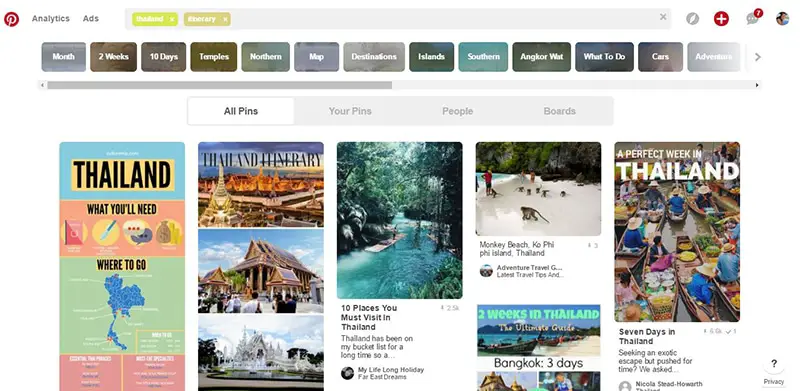
6. CREATE A SCHEMATIC OUTLINE OF YOUR TRIP
Don’t book your flights just yet. Even if you are tempted by a special offer. And even if that offer is time-sensitive. Create a rough outline of your itinerary first. Once you know where you’re going, when you’re heading there, and how much it will cost, the next step is to plan your route through the country.
Will you be staying in the same location for the duration of your trip or are you wanting to visit several cities/regions/countries whilst you are there? When Gary and I plan a two-week trip we always aim to get a good overview of the country and its various regions. Rarely do we stay in the same place for more than three days. But that is our particular travel style. What is yours? Do you suffer from FOMO as we do?
To help you create a rough outline of your trip, you might want to visit the following three websites:
- Pinterest : just search for the country you are planning to visit. Typically lots of pins leading to suggested itineraries and places to visit will pop up. Create a board and pick out the top places you like the look of. There is no point in reinventing the wheel.
- Instagram : Type #country into the search bar to find loads of inspiring images and places you’ll definitely want to visit
- Trip Advisor : This website has created guides of The Top Things to Do for almost every destination. Whilst these are generally based on overall consensus and often do not match up with our own travel style, it is nonetheless worth taking a look at these guides to make sure you haven’t missed anything
Decide what cities/regions/countries you absolutely need to visit. Figure out which ones you have the time and budget to get to. Now determine how much time you will spend in each place.
7. FIND HOTELS FOR EVERY CITY OR AREA YOU ARE PLANNING TO STAY IN
Your next step is to find a hotel that fits your budget for each city/ region/ country that you are planning to visit. You do not want to create a detailed itinerary before you know for certain that you can afford accommodation in each location.
You could of course simply book a room at the local Hilton and be done with it. But I would suggest that you do a little more research than that. You never know you could find some really interesting lodgings that are almost as exciting as the attractions you are planning to visit. Keep your eyes open for historic castles, tiny bed and breakfasts, houseboats, eco-friendly hotels, or organic farms. Budget travellers take note: Vacation rentals, homestays, farm stays, and house-swapping are accommodation options that can be shockingly affordable … or even free. My favourite search engine for finding a place to stay is booking.com , because it includes brand hotels, small hotels as well as guesthouses and B&Bs.
I also always check reviews for the hotels I have in mind. My go-to website for this is TripAdvisor . Look at the average amount of reviews in each category. If the majority of reviews are excellent or good this is a good sign. Next check the terrible and poor reviews. Most of these you can ignore, however, there might be a reoccurring theme. Finally, read some of the good and average reviews. These are generally the most honest ones. I also try and find any blog reviews of the hotel (Type the name of the hotel into the search bar + blog review). Blog reviews generally have the best “unaltered” pictures.

8. DETERMINE HOW YOU WILL TRAVEL FROM ONE PLACE TO THE NEXT AND HOW LONG THIS WILL TAKE YOU
After you have created a rough itinerary and checked that you can afford accommodation in each place you want to visit, you will need to determine how to travel from one area to another.
Pop all your chosen destinations into Google Maps to determine how close to one another they are located. This will also allow you to make any amendments to the chronology of your itinerary if needed.
The size and proximity of each location should also help you determine which places to base yourself in and which places you can travel to and from in a day trip. Gary and I, for instance, were based in Tokyo when we visited both Hakone and Kamakura. And we were staying in Kyoto when we visited Nara.
You will need to determine how long it will take to travel from one location to another and what the best means of transport will be. Not only will this affect your budget (you might need to prioritise one location other another), it will also inform you of how much time you should spend in each location. In my experience places can look misleadingly close to one another on the map, but on further inspection take many hours to travel between.
My favourite website for this type of research is Rome2Rio . Just type in both locations and the website will bring up various options (with associated costs) on how to get from one place to another by public transport or by car. You can also check travel forums for advice from other travels. Just beware travel advice from 2009 might be slightly out of date!
Your means of transport will vary from one country to another. In Japan, the quickest and most affordable way to travel from one city to another was by bullet train. And we were in luck because Japan issues special Railpasses for tourists, which make train travel relatively affordable. In contrast, in Thailand, the cheapest way to travel from one city to another was by hopping on an internal flight.
In certain countries, a rental car might be your best bet, especially if you’re travelling to locales that can’t be easily reached by rail or plane (such as the Irish countryside). Be mentally prepared to drive in a foreign country, which can be a frightening experience when faced with incomprehensible traffic signs, narrow streets or sheep roadblocks.
Incorporating walking tours, bike tours, camping and adventure tours is another interesting option of getting from one place to another worth considering.
If travelling from one place to another means you need to change transport several times, make sure you have those schedules organised with military precision. Whether you’re taking a plane, train or automobile — always leave yourself more than enough time to get where you need to be and have all of your arrival and departure times saved in several different, easily accessible locations.
And don’t forget to download the apps for the local public transportation systems — they will make your trip so much easier.
9. FIND SITES AND ACTIVITIES, GROUP THEM BY AREA AND START FILLING OUT YOUR TRAVEL ITINERARY
Your itinerary is slowly starting to take shape, but now it is time to fill it out in more detail. Once you know what places you will be visiting and how long it will take you to get from one place to another, you can fill the rest of your itinerary with exciting activities and sites to visit.
Creating a detailed trip itinerary for your dream vacation can be as simple as writing down everything you know about your destination in a travel notebook. Jot down the places you want to see, activities you want to try, and things you want to do.
Visit Pinterest, Instagram, Tripadvisor , and Like A Local , to get a list of all the key attractions you want to see.
Your list doesn’t have to be limited to popular tourist spots though, focus on anything that sparks your interest. Local cooking classes can be fun or perhaps you would like to learn a craft from that area.
I even tend to jot down restaurants that take my fancy . Furthermore, I like to find unique tours of an area or city. GetYourGuide is a great resource for this.
I always recommend checking multiple sources. This is a great way to cross-examine whether somewhere is genuinely worth visiting or an overhyped tourist trap. And don’t forget to ask friends who have traveled to the same country. They know what you will enjoy the most.
Once you have your list, you can start to figure out if it’s realistic and doable within your timeframe.
Prioritise your list of activities and sites based on your itinerary, budget, and how much time you have.
Repeat step 8 (above) for every area or city you want to visit.
Then start filling out each day of the itinerary with things to do in the morning, afternoon, and evening. Note that in order to save time and unnecessary costs, I like to group sites and activities by proximity. During this process, I also tend to create a more precise budget. In my itineraries, I like to include a rough daily cost of transport, food, accommodation, tours, day trips, entry fees, and spare spending money. This ensures that I do not arrive somewhere, realise I have massively underestimated the cost, and am going to have to count the pennies for the entire trip. It put my mind at rest but might feel a little OCD for others.
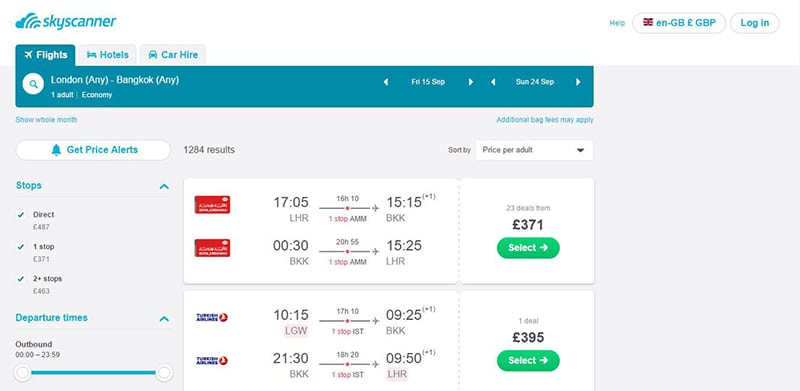
10. BOOK YOUR FLIGHTS
Because airfare is generally the most expensive part of your trip, as well as the most time-sensitive, you will want to book your flights first. Book your flights before you book your hotels. You need to remain flexible with the dates. There might be a special offer too good to ignore.
Don’t book your flight directly with the flight company. Shop around. There are many websites that offer flights at a reduced cost. In fact, I often book my flights, together with the hotel we are staying at the longest, through Expedia . Their package deal often saves me a lot of money. Another one of my go-to websites is Skyscanner . Their prices for flights are generally unbeatable. Other good flight search engines include Kayak and momondo Momondo .
There are a ton of guides written by other bloggers on how to secure the cheapest price for flights. These are a couple of my favourites:
- http://thriftynomads.com/booking-cheapest-flight-possible-anywhere/
- http://www.nomadicmatt.com/travel-tips/how-to-find-a-cheap-flight/
- http://www.neverendingfootsteps.com/how-to-find-cheap-flights-around-the-world/
11. BOOK YOUR HOTEL(S)
Next, you should book your hotel(s). As is the case with pretty much everything you book for your trip, the earlier you make arrangements, the better — especially during high season.
Go back to the list of hotels you made previously for each location in your itinerary. Do check however if there are any special offers that day before you book anything. These deals change on a weekly and sometimes daily basis.
Shop around. Do not book your room directly through the contact form of the hotel. There are plenty of websites that offer far better deals. If you are planning a trip in the UK or Europe I would personally suggest you book the room through Expedia or Booking.com . However, if you are traveling to Asia you might be better served by Agoda .
12. CONSIDER BOOKING LOCAL TRANSPORTATION AND ACTIVITIES
You might also want to consider booking local transport ahead of time. Especially if you are planning to use internal flights or need a rail pass.
Whether you book tours and entry to certain attractions before your trip, really is based on common sense. Are you planning to visit the attractions in high season or is there a risk that the tour might be booked out by the time you get there? As a rule of thumb, Gary and I have found that securing local transport almost always saves us money, whilst waiting to book tours until we are in the country allows us to negotiate on the price.
Really it also depends on how happy you are to leave certain things up to chance. I feel a lot less stressed if I know my accommodation, flights and local transport have been booked. On the other hand, I feel less stressed about not making it on a certain tour and am happy to remain a little flexible.
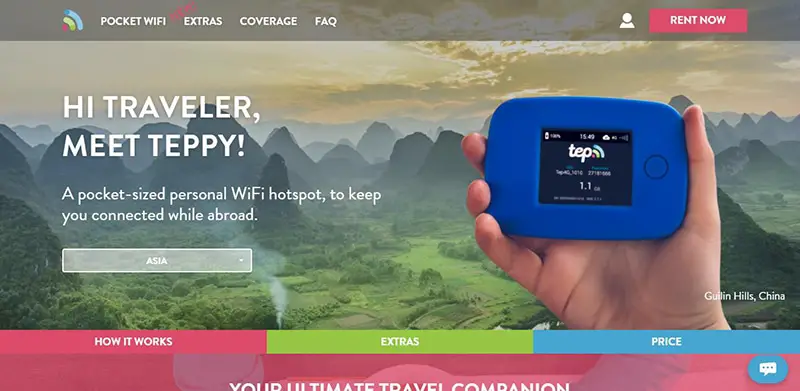
13. THINK ABOUT CONNECTIVITY IN YOUR CHOSEN DESTINATION
Most of us (and that includes me) are glued to our phones. But texting, making calls and browsing the internet can be very expensive when you are abroad. Of course, hotels often offer free internet, but that still means that you will be without a means of communication for most of the day.
Does your cell phone plan allow you to make calls overseas, and if so, how much will it cost you? Thankfully there are many cheap alternatives to roaming. Many cell phone companies offer temporary international plans that you can purchase for the month you’re travelling. While you may be tempted to leave the phone at home and really “get away from it all,” it’s smart to have an emergency phone with you if you’ll be travelling by car, or hiking or biking long distances.
Gary and I almost always get some type of rental pocket wifi. This is a small device that holds a sim card. In effect, it is a wireless modem with a private network that connects with WiFi-enabled devices to the internet. Think of it as a Wi-Fi hotspot, but the difference is that you can bring it with you. One of our favourite rental companies for pocket wifi is TEP Wifi
Other travellers prefer to swap their mobile’s sim card for a local one. To do this you need to ensure that your mobile phone is unlocked and that it is compatible with the sim cards of that country.
here are some additional t ips on how to prepare your mobile device before taking a trip .
14. CONSIDER GETTING TRAVEL INSURANCE
It is always a good idea to get travel insurance , especially if you are travelling far away. You never know what might happen and I like to be prepared for all eventualities.
There are several kinds of travel insurance you might want to consider: trip cancellation insurance, flight cancellation insurance, medical insurance, etc.
The best time to buy any type of travel insurance is right after you booked your flights and prepaid for your hotels. At this point, you know how much you have spent and what sum you need to ensure if you choose to do so.
Many airlines offer insurance as an add-on. However, always make sure to read the fine print on the airline’s policies and to compare with other travel insurance policies before you make your purchase. Through experience, Gary and I have found that insurance policies offered as an add-on do not tend to be quite as comprehensive as travel insurance bought through specialist providers.
Check your medical insurance coverage to see if you’re covered overseas. If not, you may want to purchase supplemental medical insurance to cover situations like the cost of transportation back home for emergency care.
15. GET YOUR DOCUMENTATION IN ORDER
Once everything is booked, it’s a good idea to keep all of those details, booking confirmations, and tickets in one place. Personally, I feel more comfortable when I over-prepare. In addition to having an Excel and Word file with all of my info, I also like to keep the hard-copies.
You never know when technology could fail you. So I have a travel wallet that holds everything I could need — transport tickets, public transport cards, foreign currency, booking confirmations, Sim cards, passport, visa.
There are also apps such as Google Trips and TripIt that can help you keep everything in one place. Some airlines, such as Qantas, are also offering similar app services. If you’re looking for something a little lower key, such as simple itinerary apps, you might want to try something like Trip Planner.
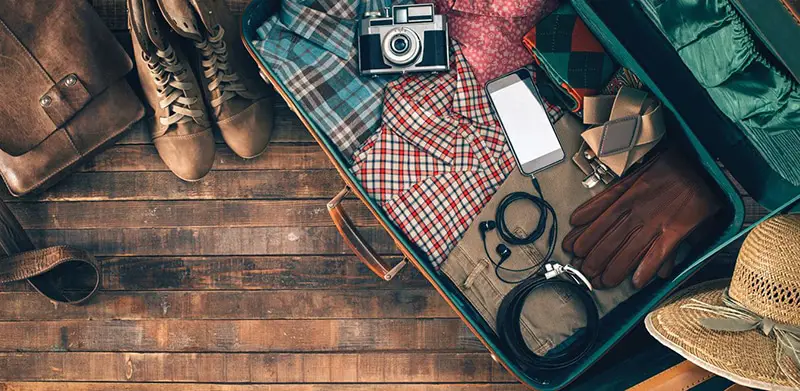
16. CREATE A PACKING LIST
Avoid packing the day before your trip. Instead, make a packing list and think about what you need to bring, at least a week in advance. It is more than likely that you will need to purchase a couple of additional accessories, such as a raincoat, suntan lotion or mosquito spray.
You might even need to reconsider what luggage you are taking. Are you going an adventure trip, perhaps you need a backpack? Check your suitcase. Re its wheels still working, does it fit into the airline’s size policies, and is it big enough?
The chance that you forget to pack something essential increases the longer you put off packing. So start thinking of it sooner rather than later.
If you are travelling with your kids, this is a great time to teach them how to pack their own luggage – a very valuable life skill.
17. DETERMINE HOW TO GET TO YOUR DEPARTURE AIRPORT
Depending on how far away you live from your nearest airport, you might need to plan on how to get there.
While driving to the airport is always an option, parking fees for an extended trip can be very expensive. Some airports offer economy parking of course. If you are thinking of going down this route, do check how long it takes to get from the park and ride to the actual airport. Allow yourself plenty of time to check-in and to get through security to avoid stress. Do factor in the fact that you might miss the shuttle and will need to wait for the next one.
If you live in London, you will probably be hopping on public transport. Check that all the tubes are running the night before and leave yourself plenty of room for unplanned closures.
If you are flying early in the morning you might need to take a cab. It’s often cheaper to pre-book a minicab or Uber. Do this a couple of nights before your departure date.
You might also want to think about how you are going to get from the arrival airport to your hotel. Plan this before you leave, it will save you from experiencing a lot of stress when your plane lands. Whilst you can often save money by flying to a more out-of-the-way airport, do weigh up thrift against travel time and inconvenience. Sometimes it is worth paying a little more.
18. READ UP ON CUSTOMS AND SCAMS IN THE COUNTRY
After our itinerary is planned and all the paperwork is in order, I like to read up on particular customs in the country, as well as scams.
For instance, in order to visit temples in Thailand, tourists need to be suitably dressed. Knowing that Thailand is a hot country, I made sure to pack light trousers that nonetheless covered up my legs. Furthermore, in Japan, noise on public transport is frowned upon. Gary and I came prepared with books that we could read on the hour long journey.
It is also a good idea to read up on scams. Most countries have re-occurring scams that most tourists fall for. Some of these scams might inconvenience you, whilst other will leave you high and dry. Best to be prepared and recognise a scam when it comes at you.

19. CONSIDER EXPANDING YOUR VOCABULARY
I always make a point of learning a couple of words in the native language of the country I am visiting. Not only does this reduce potential stress, through experience I have found that locals are generally friendlier if you try and engage with them in their own language.
Think about which words you’ll be using most on a daily basis during your trip and focus on learning those. A good starting point is:
- Hello and Goodbye
- No, and Yes
- 1, 2 , 3, 4 , 5
- How are you
- I am from …
- I only speak a little (insert language)
- Another beer, please
If you have any special requirements, it is also worthwhile learning how to express those. Are you a vegetarian? Gluten-Free? Do you have any allergies? Do you take prescription drugs?
I would also advise that you buy a little translation book. Keep this on hand and it might help get you out of a sticky situation.
Finally, if you are ready to dive a little deeper, Babbel is my favourite website to learn a new language
20. TACKLE LAST MINUTE LOGISTICS
You are not quite done yet, there are still a few things that need taking care of.
A few weeks before your departure date think about getting your money exchanged, hiring a house-sitter, or even a pet-sitter (if you need one). I generally ask a friend or a colleague to pop into our flat and check on the fish, when we are gone for longer than a week.
You should also call your credit card company to let them know that you are going to be travelling abroad. You wouldn’t want them to block your card whilst you are in a different country. Whilst you are at it, you could also ask them if you are going to be charged a fee for using your card overseas. It is also a good idea to research the location and availability of ATMs in your destination. In Japan, for instance, only ATMs in 9/11 take European cards and Japanese society is still very reliant on cash.
21. ENJOY THE TRIP AND REMAIN FLEXIBLE
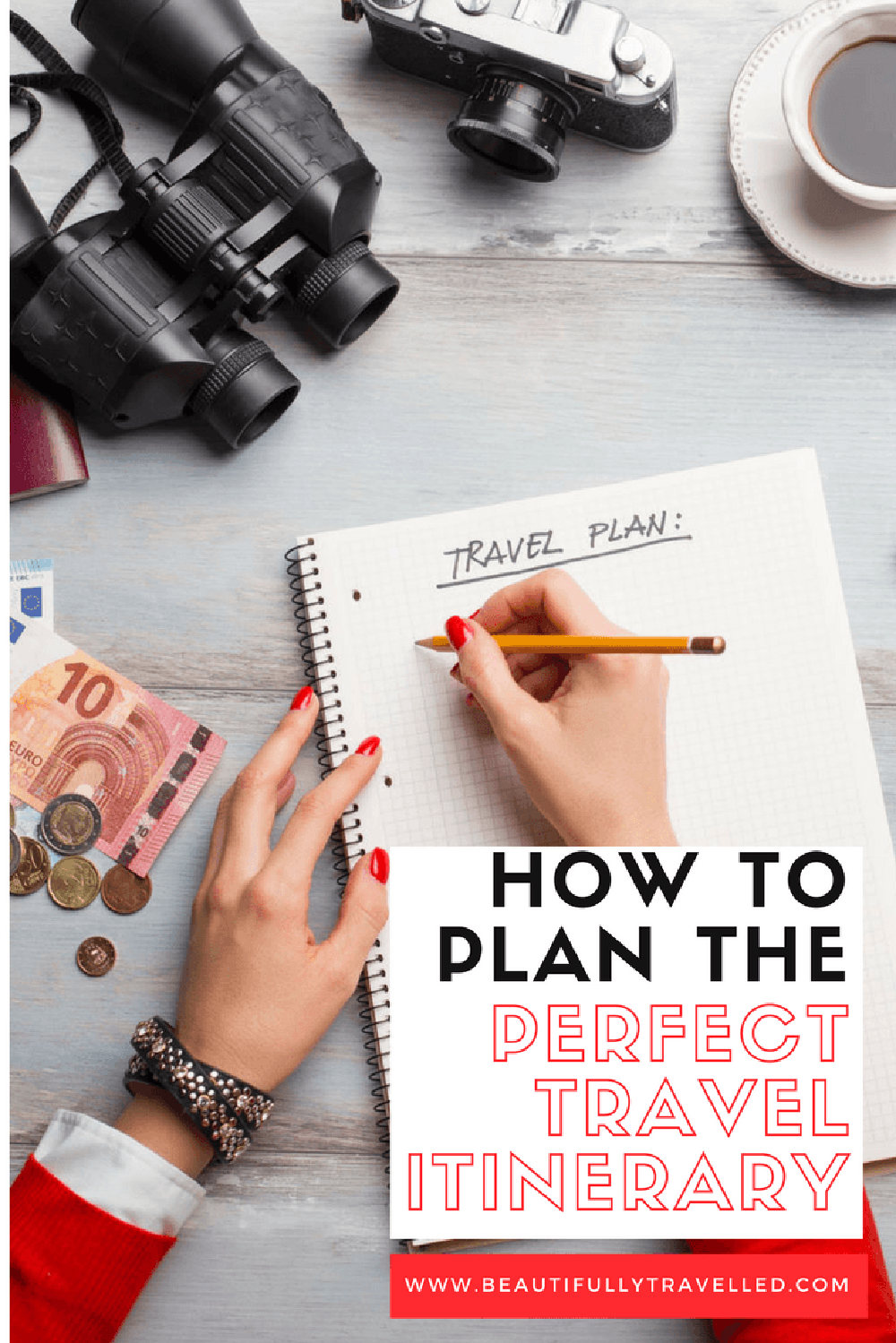
Being organised is great, it will reduce your stress levels and will allow you to fully enjoy the destination. As the old saying goes, failing to plan is planning to fail.
However, one of our biggest travel tips is to avoid planning everything down to the last detail. A little bit of flexibility adds spice to any itinerary. Sometimes our most memorable experiences are those that were utterly unplanned.
Trust me, I am a control freak. And I know that it can be difficult to let go. But remember your itinerary is not a binding contract. It is a rough draft, an outline of your holiday. Things will go wrong. Restaurants and attractions might be unexpectedly closed. You might miss your bus and your flight could be delayed. Your partner might get sick. Don’t let this stress you out, instead be prepared for a bit of spontaneity.
It is always a good idea to leave a little room in your itinerary for exploration. It is likely that you will hear about an attraction you didn’t know about, whilst you are on holidays. You might even find yourself wanting to stay a little longer in a certain place. Get off the beaten track, explore the side streets and eat what the locals do. This is the best way to transform yourself from a tourist into a traveller. After all, isn’t experiencing something new what travel is all about
PLANNING A TRIP
BOOK YOUR FLIGHTS
Book your flight now through one of our favourite search engines. We love all three of these because they search the entire web for the best prices and deals. Alternatively, book your flight and hotel in a package directly with Expedia, this could be the cheapest option.
BOOK YOUR ACCOMMODATION
Check out the latest hotel prices in Germany right now. Our personal favourite hotel booking website for Europe, is Booking.com, since they consistently return the cheapest rate for hotels and guesthouses. Expedia is another good option if you are planning to book your hotel in a package with your flight and car.
BOOK YOUR ACTIVITIES AND TOURS
We like to use GetYourGuide to book our activities and tours, ahead of arrival at a destination. This means that we can skip the queue and save time at our destination.
DON’T TAKE OUR WORD FOR IT!
We like to read the reviews before booking a hotel or including a restaurant or attraction in our itinerary. And in our opinion the best place to find independent reviews is:
PLEASE NOTE: This post contains affiliate links, which means that if you click on some of the links in this post and purchase something, we might receive a commission. This is a good thing! There is no additional cost to you and we make a tiny bit of money to help fund this website!
PLANNING A TRIP?
HERE ARE SOME OTHER POSTS YOU MIGHT FIND INTERESTING.
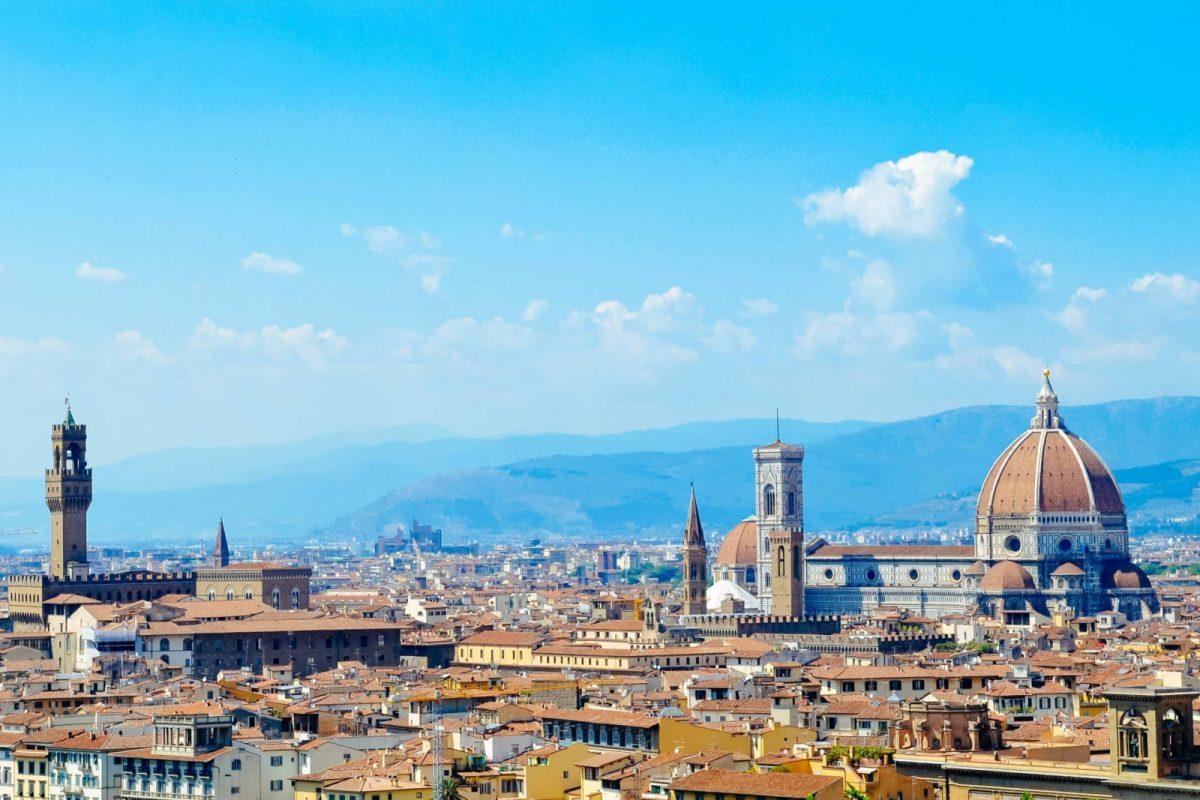
Do you prefer to plan your own travel itinerary? Share your best tips in the comments below!
Did you Enjoy this article?
Share it with your friends and family on FACEBOOK, TWITTER AND PINTEREST

ABOUT KATHARINA
Katharina is the founder, editor, photographer and the main travel writer at A Life Beautifully Travelled. She created this British family travel blog in 2017 to document her adventures around the globe with her husband. Born in Munich, Germany she has since lived in Dusseldorf, Paris, Glasgow, and London. She currently resides in Yorkshire with her family.
Katharina started travelling in her early teens and has explored over 4 continents, 16 countries, and 87 cities. Growing up trilingual and having graduated from an international school, she has a strong interest in other cultures. When she isn’t gallivanting around the globe or busy in her 9-to-5 job as an architect, she can be found exploring the UK (the country she currently calls home). There isn’t much Katharina, her husband and their son Finn love more than a fun family weekend getaway.

How to spend 5 days in Bangkok – A Detailed Itinerary
Fresh Fish & Sticky Ribs – A Review of the Fire Stables in Wimbledon

23 thoughts on “How to plan A Travel Itinerary On Your Own: A Step by Step Guide”
Your words evoke an expanse of emotions. Your unique insights add color to the discussion. Thank you for sharing your thoughts and contributing to this vibrant exchange.
Granted, there are countries and regions that require one to be vaccinated prior to entry. However, singling out “Africa” is perpetuating the old, out-dated, and downright offensive idea that Africa is uncivilised and a cesspool of disease. Having travelled to a number of African countries myself, I enjoyed unforgettable scenery, the most opulent hotels and resorts and warmth from all of the locals. We need to be more mindful and sensitive in how we portray developing lands.
Thank you Phoebie for your comment. I agree with you that there are many African countries that are definitely worth visiting. In fact my trips to Namibia and Kenya were some of the most memorable ones in my life. That being said I don’t see anything wrong with pointing out that you should get additional vaccinations before you visit. This does not in anyway insinuate that African countries are “cesspools of disease” (in your words. But a European might encounter diseases in these countries that they haven’t been previously vaccinated for and being foreign are more susceptible to. As I said Africa is just one example. There are many countries that you have to / should get vaccinated for. The reason I mentioned Africa, stems simply from my personal experience. I haven’t personally travelled to any other country yet, that requires specific vaccinations or meds. But needing to get vaccinated and take malaria tablets, in no way took away from my fabulous experience there.
I’m chiming in very late, but just wanted to say how unnecessary this comment was. In no way is the author insinuating that Africa is uncivilized and a cesspool of disease by naming it as a place where travelers should consider additional vaccinations. Yes, it boasts gorgeous scenery, amazing accommodations, and warm hospitality from the locals. That doesn’t change the fact that travelers coming from the western world should take health precautions when traveling there moreso than other common travel destinations. These two things are unrelated, and your feelings about it reflect more on you than the author. Thank you, Katharina, for writing this post. I learned a lot from it!
Awesome write-up. I’m a regular visitor of your web site and appreciate you taking the time to maintain the excellent site.
Simply wanna input that you have a very nice internet site, I love the layout it actually stands out.
Preparing language might sounds unimportant for some people when they just visit the country as a tourist. For me, it is one think I found it very important and fun. I remember how I made new friends with local people just at the border, and when I met someone on my flight. Local finds it interesting when foreigner try to speak their tongue.
This post is extremely useful for at least those people who don’t travel that often. In fact, I too follow a lot out of these. Pretty useful and detailed post.
Wow you’re so organized! I have to admit that the more I travel, the less I plan. I do love to look at blogs for inspiration though, and to get an idea of what the place looks like and what it has to offer!
Wow, you seem to have thought a lot in creating this plan. I barely plan and go with the flow. But then this is mostly because I tarvel within my own country. Visiting another country will take more effort it seems.
This is a very detailed list which a new traveller will im sure find exceptionally helpful. I thought I was relatively organised but you definitely beat me.
Thanks for a nice breakdown on planning a trip. I usually mix it up a little as in I will have a couple of destinations in mind and will check which one has the cheapest flights, and then from there take on the rest. But this really helps and is quite handy when planning.
Leave a comment Cancel reply
This site uses Akismet to reduce spam. Learn how your comment data is processed .
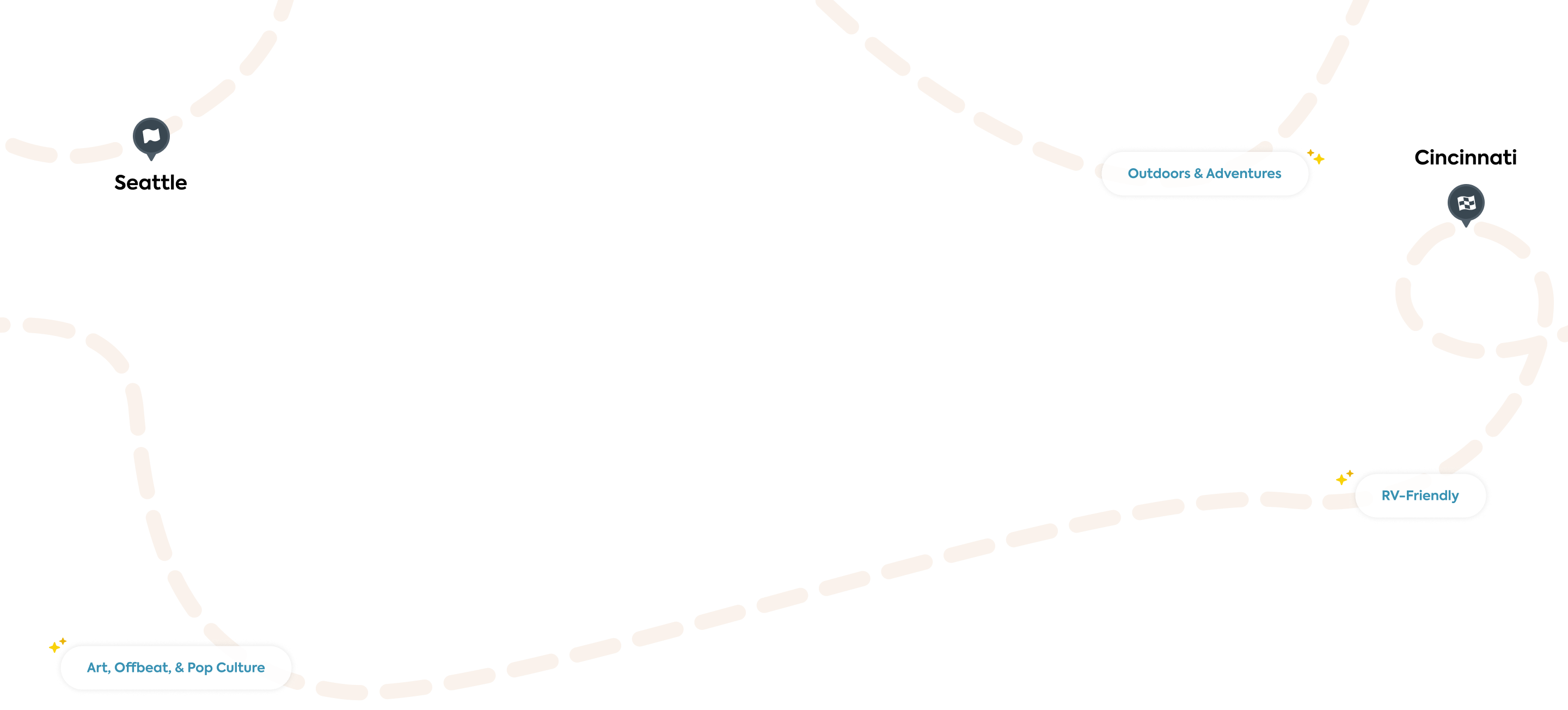
A road trip planner that plans your trip for you
Roadtrippers Autopilot™ creates your itinerary based on what we’ve learned from over 38 million trips. You’re never more than a few clicks away from your next great adventure.

- Auto Travel

Let Autopilot take the wheel planning your next road trip, scenic drive, RV journey and everything in between. Then enjoy the ride while uncovering hidden gems along the way.
Get real-time traffic updates and access to wildfire smoke maps to stay informed and connected throughout your journey.
Collaborate
Share your itinerary with your copilots so they can help with the finishing touches.
Let Roadtrippers be your guide, navigating the twists and turns as you roam the open roads with confidence and ease.

Exclusive Access To Autopilot
Roadtrippers offers an automated road trip planner. Let us do the planning for you! Enter in a few key details and we’ll craft a custom tailored trip just for you.

Choose the right plan for you—and try it free for 7 days
Premium planning.

RV-Friendly Tools

Overnight RV Parking

Start free for 7 days
Then $35.99 (that's only $2.99/month), then $49.99 (that's only $4.17/month), then $59.99 (that's only $4.99/month).
† RV-Friendly routing features (including routing warnings for vehicle hazards and propane restrictions) are available in the U.S. only.
Free 7-day trial
Test drive the best features of Roadtrippers Premium for free! Eligible users will get exclusive access to all the tools needed to plan the perfect road trip.
Create a Roadtrippers account to start your 7-day free trial.
Already have a Roadtrippers account?
We need your email address
Before we can sign you up for Roadtrippers, we need your email address. Click the button below to go to your profile.
Plan your next adventure with a Roadtrippers Premium account
Due after 7-day free trial
Thank you for signing up for a Roadtrippers Subscription
Get started planning your next trip now!

Good news...you already have Roadtrippers!
Thanks for being one of our most dedicated users.
- Sign up Log in Sign out
- Log in Sign out
Plan your journey, find amazing places, and take fascinating detours with our app.
If you used to sign in with Roadpass, you should now use the same username and password to log in directly with Roadtrippers above.
We couldn't find an existing Roadtrippers account using that service. Please try signing in with another option.
We need your email address to send you trip itineraries and other updates.
How do you want to plan your trip?
With just a few questions, our newest Premium feature, Autopilot, will plan your next adventure.
- PRO Courses Guides New Tech Help Pro Expert Videos About wikiHow Pro Upgrade Sign In
- EDIT Edit this Article
- EXPLORE Tech Help Pro About Us Random Article Quizzes Request a New Article Community Dashboard This Or That Game Happiness Hub Popular Categories Arts and Entertainment Artwork Books Movies Computers and Electronics Computers Phone Skills Technology Hacks Health Men's Health Mental Health Women's Health Relationships Dating Love Relationship Issues Hobbies and Crafts Crafts Drawing Games Education & Communication Communication Skills Personal Development Studying Personal Care and Style Fashion Hair Care Personal Hygiene Youth Personal Care School Stuff Dating All Categories Arts and Entertainment Finance and Business Home and Garden Relationship Quizzes Cars & Other Vehicles Food and Entertaining Personal Care and Style Sports and Fitness Computers and Electronics Health Pets and Animals Travel Education & Communication Hobbies and Crafts Philosophy and Religion Work World Family Life Holidays and Traditions Relationships Youth
- Browse Articles
- Learn Something New
- Quizzes Hot
- Happiness Hub
- This Or That Game
- Train Your Brain
- Explore More
- Support wikiHow
- About wikiHow
- Log in / Sign up
How to Make a Travel Itinerary with Google Maps
Last Updated: August 16, 2024 Fact Checked
This article was reviewed by Stan Kats and by wikiHow staff writer, Nihal Shetty . Stan Kats is a Professional Technologist and the COO and Chief Technologist for The STG IT Consulting Group in West Hollywood, California. Stan provides comprehensive technology solutions to businesses through managed IT services, and for individuals through his consumer service business, Stan's Tech Garage. Stan holds a BA in International Relations from The University of Southern California. He began his career working in the Fortune 500 IT world. Stan founded his companies to offer an enterprise-level of expertise for small businesses and individuals. There are 8 references cited in this article, which can be found at the bottom of the page. This article has been fact-checked, ensuring the accuracy of any cited facts and confirming the authority of its sources. This article has been viewed 102,090 times.
If you’re planning a trip, you might be wondering how to figure out where to go and in what order. Luckily, Google has a free tool that you can use in order to get a better sense of your travel plans. We’ll walk you through how to make a travel itinerary with Google Maps through its My Maps feature. In a few easy steps, you can master an excellent organizational tool that’ll help you plan the best trip possible.
Setting Up Your Map

- Unfortunately, as of October 2021, Google no longer supports the “My Maps” app on phones. If you’re on mobile, you’ll have to use your phone’s web browser to access the site while on the go. [2] X Research source
- If you don’t already have a Google account, setting one up is a quick process. A Google account gives you a number of benefits, including a new gmail address. Check out this link to start the set-up process: https://accounts.google.com/signup/v2/webcreateaccount?flowName=GlifWebSignIn&flowEntry=SignUp

- For instance, your might name your map something like “California Summer Trip 2022,” and you could enter a description like, “Places to see and eat during two-week California road trip.”

- For example, for a California road trip, you might enter “Golden Gate Bridge” into the search box. My Maps will automatically direct you to its location.

- For instance, if you’ve searched for “Golden Gate Bridge,” there will be a white box that offers some information on the location, and even a rating from other users. Click on the “Add to map” button to send it to your saved locations.

- For example, you might fill in the description to the “Golden Gate Bridge” box with something like, “Spend at least 1 hour here—must-see location.”

- You might consider changing the colors of your pins to match how important each location is to your trip. For example, must-see locations could be red pins, your housing spots could be green pins, and optional places to visit could remain as blue pins.
Creating an Itinerary and Planning Routes

- For example, you might have a layer titled “Places to see,” one titled “Places to eat,” and one titled “Places to sleep.” You can then put sightseeing destinations, restaurants, and hotels you want to stay at in their respective layers.

- You can add more than one location to a single route. For example, if you wanted to plot a route from Big Sur to the Golden Gate Bridge, and then to Palo Alto, you can add all three locations to your route layer and create a multi-stop path. [11] X Research source
- By clicking on the three dots next to the layer with your travel route, then selecting “Step-by-step directions,” My Maps will create a set of directions for your travel. Handy!

- For example, by using My Maps, you might notice that seeing the Golden Gate Bridge, walking around San Francisco, and eating at a restaurant in Berkeley are close enough to all be doable in one day, while visiting Big Sur might be better saved for another afternoon. My Maps can help you plan out the most efficient trip possible, so you can enjoy your travels even more.

- When sharing your map, you can also choose the option that allows others to edit the map as well. With this option selected, your friends can pick places that they’re interested in as well, so you can have them all on the same document. [13] X Research source

- Although My Maps can’t be viewed offline, you can download an offline map of any areas you’re interested in on your phone. Using the Google Maps app, type in a location into the search bar, tap the name of the location, then navigate to the option “Download offline map.” [15] X Research source
Expert Q&A
You Might Also Like

- ↑ https://support.google.com/mymaps/answer/3024925?visit_id=637744367666134651-2428484219&p=lite_addplaces&rd=1
- ↑ https://9to5google.com/2021/07/20/google-my-maps-android-shutdown/
- ↑ https://support.google.com/mymaps/answer/3024454?hl=en&ref_topic=3024924
- ↑ https://support.google.com/mymaps/answer/3024925?visit_id=637744500327517491-717751493&p=lite_addplaces&rd=1
- ↑ https://support.google.com/mymaps/answer/3024925?hl=en&co=GENIE.Platform%3DDesktop
- ↑ https://support.google.com/mymaps/answer/3502610?hl=en&ref_topic=3024924
- ↑ https://support.google.com/mymaps/answer/3109452?hl=en
- ↑ https://support.google.com/maps/answer/6291838?hl=en&co=GENIE.Platform%3DiOS
About This Article

- Send fan mail to authors
Did this article help you?

Featured Articles

Trending Articles

Watch Articles

- Terms of Use
- Privacy Policy
- Do Not Sell or Share My Info
- Not Selling Info
Don’t miss out! Sign up for
wikiHow’s newsletter
Organize your trip today
Create an itinerary, map your route, and organize your travel plan. Start your next adventure with confidence and leave the hassle behind.
Where are you starting?
Bring your plan together
Organized trip planning.
Update your itinerary without rebuilding your calendar and trip map - everything works together.
Plan with friends & family
Share with others or collaboratively build a trip in real-time with live updates.
Everything in one place
Gather the pieces of your plan: itinerary, budget, & important documents.
Plan That Trip is here to take the hassle out of your trip planning process.
We eliminate the clutter of traditional planning methods by combining various planning aspects into one intuitive interface.
You're in good company
Check out these examples, utah outdoors.
Explore the diverse and stunning natural wonders that Utah has to offer.
Ireland Sightseeing
Traverse Ireland, see must-visit destinations, and experience classic Irish charm.
Italian Adventure
Embark on a journey through Italy's rich history, vibrant culture, and breathtaking art.
Your ticket to efficient planning
Skip the data entry.
Automatically add flights to your trip itinerary from confirmation emails or other documents.
Plan on your terms
Access anywhere, anytime. Export a PDF for convenient offline access, or use our mobile-ready web app.
Kick-start your research
City-level information about locations. Find out average temperatures during your visit, currency, time zone difference, and more.
Collect your ideas
Keep track of all the possibilities of your trip before committing to an itinerary. Move your ideas into your plan when you are ready. No more losing track of your options!
Budgeting made simple
Easily manage your travel expenses. Track spending, split costs among travelers, and view a comprehensive breakdown of expenses to keep within your budget.
Your travel documents, organized
Access all your trip-related documents. From tickets to hotel bookings, keep everything in one secure, accessible place. Forward confirmation emails to a synced address, and we'll include them with your trip-planning documents.
How it works
Gather your ideas.
Organize your ideas and decide what you want to do.
Chart your course
Plot your destinations and build your itinerary.
Fill in the details
Add your stays, activities, travel documents, and notes.
See your plan come together!
Can i plan trips for free.
Yes! Our free plan offers you everything you need to plan a trip. Trips with itinerary, calendar, and map views are saved for a year. You can also track expenses and attach notes. However, there are no sharing or collaboration tools with the free plan.
Can I share my trip plan?
Absolutely! Plan That Trip allows you to invite friends, family, or colleagues to collaborate on your travel plans. They can view, edit, and add to the itinerary in real-time, ensuring everyone involved has the latest information. Collaboration and sharing require a Premium plan.
How do I add flights?
Plan That Trip lets you add flights in lots of ways. You can specify the destination and arrival location, or flight number and date. With the Premium plan, you can automatically load flights from any document.
Can I track my spending and budget?
You can assign a cost to any part of your itinerary, and we'll tracks all expenses across the entire trip. Cost splitting lets you determine who owes what for various activities and is a good way of keeping tabs on individual expenses.
Is my data secure with Plan That Trip?
We take your data security very seriously. All your information, including personal details and travel documents, is stored securely and is only accessible to you and those you choose to share your itinerary with. We also give you the ability to download your data or delete your account, so you are always in charge.

Want to learn more?
- Work with us

How to Plan a Trip: A Detailed Travel Planning Guide
Last updated on November 30th, 2023
Looking for the best tips on how to plan a trip? Our step by step travel planning guide goes through our exact process of planning our trips, including our travel itinerary template, so you can plan your next trip easier!
It’s no secret that we love planning trips! We love researching for hours upon hours, digging into everything a city has to offer, learning tons, picking spots we want to check out, and crafting the perfect itinerary.
We are definitely itinerary-based travelers vs spontaneous travelers (although we’re trying to leave more time for spontaneity during our trips!) and we’ve found that putting in the work to plan a trip beforehand can dramatically change the outcome of a trip.

There’s no wasting time wondering “where should we eat?” or driving all around town from spot to spot because we didn’t realize how far things were. Instead, we show up with a plan and get to enjoy where we are. Granted, things don’t always go according to plan, but we definitely feel like it sets us up for success!
We originally created this blog to help eliminate some of your headaches when you plan a trip. It can be daunting to figure out how to fit an entire city, state, country, etc into X days.
Our travel guides in particular are perfect for those who want a solid list of things to do, places to eat, etc. already organized into a well thought out itinerary. Our goal is to do all of the research for you so you can plan your perfect trip without spending hours and days scouring the web.
However, we haven’t been to every city in the world, so we may not always have a travel guide for you. So we wanted to create a travel planning guide, with our step by step list of how to plan a trip, including our travel itinerary template , so you can plan an epic trip and make the most of your time in any destination!
Looking for more travel planning tips? Check out these posts:
- How We Afford to Travel: Our Top Travel Budgeting Tips (+ Budget template!)
- Our Favorite Travel Credit Cards
- Fly for Less: Tips for Finding Cheap Flights
Step 1: Choose your destination
Step 2: make a travel budget, step 3: track and book flights, step 4: book your accommodations, step 5: book your transportation, step 6: research, research, research, step 7: google maps, step 8: make your itinerary (with our travel itinerary template), step 9: book any tours, activities, and reservations, step 10: have a pet find a sitter, step 11: prepare for your trip, step 12: pack for your trip, step 13: have a blast .
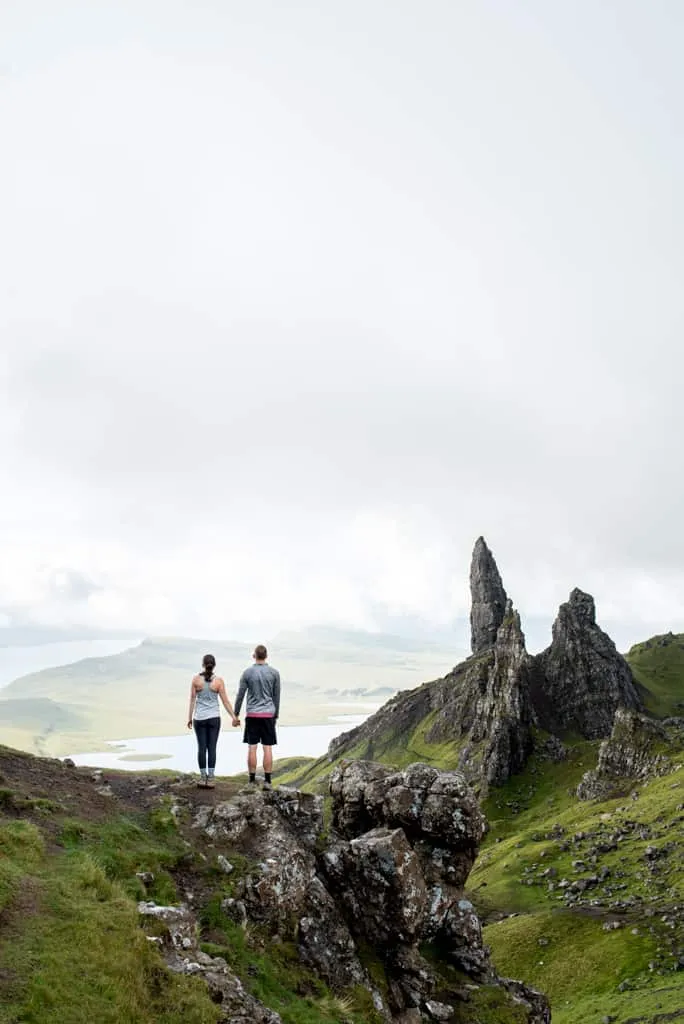
The first decision when you plan a trip is often the hardest: where should you go?! If you’re like us, we want to visit as many new places as we possibly can, but we also love visiting places that are special to us. Trying to make the decision of where to spend our precious vacation time and limited travel budget sometimes feels impossible!
While we don’t have all of the answers of how to decide where to go, here are a few things to consider.
Type of trip
What kind of trip are you looking for? Do you want to be in a big city? Hang out at the beach? Go for tons of hikes? Or all of the above? Our first task when figuring out where to go is to think about the activities and vibe we are looking for during our next trip.
If you’re having a hard time deciding, some of our favorite destinations are:
- The Dolomites: The Dolomites are full of adorable small towns, hikes, and epic scenery! It’s absolutely gorgeous and we hear it’s cheaper than the Swiss Alps.
- Matera, Italy: The smaller town, less tourists and crowds, unique cave dwellings, and crazy history made Matera one of favorite spots in Italy!
- Vancouver, BC: We used to visit Vancouver all the time when we lived in Seattle. The city is beautiful and there are so many outdoor activities just minutes from downtown.
- Scotland: We visited Edinburgh and the Isle of Skye and think they are some of the most underrated destinations. Both were jawdroppingly beautiful and have tons to see and do!
- Seattle : Seattle is our favorite city in the US! We lived here for three years and loved it so much. There are so many things to do, including hikes, lakes, beaches, city activities, and delicious food!
- Hawaii: It’s no secret that Hawaii is one of our favorite places in the world! We have been to all four major islands, some more than once, and each one is amazing!
- US National Parks: Want to see some of the best nature in the US? Visit a National Park ! Some of our favorites have been Yosemite , Zion , Grand Teton , Yellowstone , Big Bend , Olympic , and North Cascades .
Is there a certain time of year that is easier for you to travel for work or other reasons? For us, it’s the summer and winter, which can influence where we go. If we don’t want to be cold in the winter, we’ll use that time to go somewhere tropical, and on the flip side, if we want a break from the heat in the summer, we would head to somewhere a bit cooler (or below the Equator).

Peak Season vs. Shoulder Season
Some destinations have very clear peak seasons. If crowds are not your thing, try looking for destinations that will be having their shoulder season (the months between the busy season) during the month you want to travel. The weather may not be as perfect during “shoulder season, but you can save a ton of money (and headaches!) by traveling during the off-peak times.
Flight Deals
We will share some of our tips for finding flight deals in Step 3, but one thing to consider when deciding where to visit is to see where you can get a decent flight deal. We have sometimes made last minute trip decisions and visited somewhere we didn’t plan to visit so soon because we got a good flight deal.

Specific Attractions or Events
Is there a specific thing you want to see or do in a destination? For example, do you want to attend a music festival in a specific city? See the cherry blossoms in the spring in DC? Want to drive the Going-to-the-Sun Road in Glacier National Park?
Sometimes planning a trip around a specific attraction or event can make the decision a bit easier since you have a limited time to take part in that activity.

After we have an idea of where we want to go, our next step is to make a travel budget. We try to think of every expense we will have on that trip, from flights, lodging, a rental car, dog sitter, food, activities, gas, and more. This helps us get an idea of how much we will spend and to see if we can realistically afford the place we want to visit. It also keeps our wallet in check when actually on that trip!
We have a travel budget template that we use to not only plan out individual trips, but our trips for the entire year. This helps us see how much we want to spend on trips vs. how much we will be saving to travel.
To see how we afford to travel + our tips to save money to travel and while traveling, check out this blog post !

Once we have a good idea of where we want to go and how much we want to spend, we start trying to find cheap flights! We have a few favorite tools we use to find flight deals, which we’re sharing below.
To get a more detailed look into how we find affordable flights, including a tip we used for our Italy trip to save us over $1,000, read our Fly for Less: Tips for Finding Cheap Flights blog post!

Google Flights
We love Google Flights ! This free tool lets you plug in where you will depart from and where you want to go and see lots of flight options from tons of different airlines. You can then track specific flights that work well for your schedule or airline preference. You’ll be notified anytime the flight goes down or up in price, which can help you have a better idea of when it’s time to pull the trigger.
If you’re still stuck in Step 1 and unsure where to go, their explore destinations tool is very helpful to see what destinations are cheapest to fly to from your home airport on specific dates!
If you’re feeling more open on when and where you want to travel and just want a great deal, our favorite paid tool is FareDrop , which allows you to pick the departure airports you want to be alerted about, which destinations you want to travel to, and which months you want to travel.
FareDrop costs $47.88/year (if you use our link you’ll get 2 months free!), which seems a bit pricey, but we get tons of deals weekly! We have yet to pull the trigger on them, but hopefully soon!
Another tool we have used a lot in the past is Hopper . Hopper is a tool that helps predict flight costs and lets you know when the right time to book is. Nothing is worse than when you buy a flight and then the next week it has gotten a lot cheaper!
Scott’s Cheap Flights
Scott’s Cheap Flights is both a free and paid tool ($49/year) that will alert you about deals and mistake fares (when an airline accidentally publishes the wrong fare). Similar to FareDrop, you choose your home airport (and neighboring airports) and get deals from those airports. Or you can see deals worldwide! We only use the free tool of Scott’s Cheap Flights and we get pretty great deals! If you pay for their Premium version you supposedly get even better ones. 🙂
Skyscanner is another very popular tool for finding cheap flights. We have seen flights cheaper on Skyscanner than most other websites. Once you find a cheap flight, you book it through one of their travel partners. The only downside for us is that we typically cannot get that price with our credit card point s , which we would rather use to book travel (since it’s free!).
By far our favorite way to book flights is with our credit card points ! We have saved thousands of dollars by using credit card points and the best part is that we earn these while making our usual transactions, like the grocery store, bills, or coffee. The points add up fast depending on which card you have, so it’s not too hard to get free flights!
We currently have 4 travel credit cards : Chase Sapphire Reserve, American Express Platinum, Capital One Venture Card, and the Alaska Airlines Card and each one has its pros and cons.
For more details on our favorite travel credit cards, the best benefits, and how to pick the right one for you, check out Our Favorite Travel Credit Cards blog .
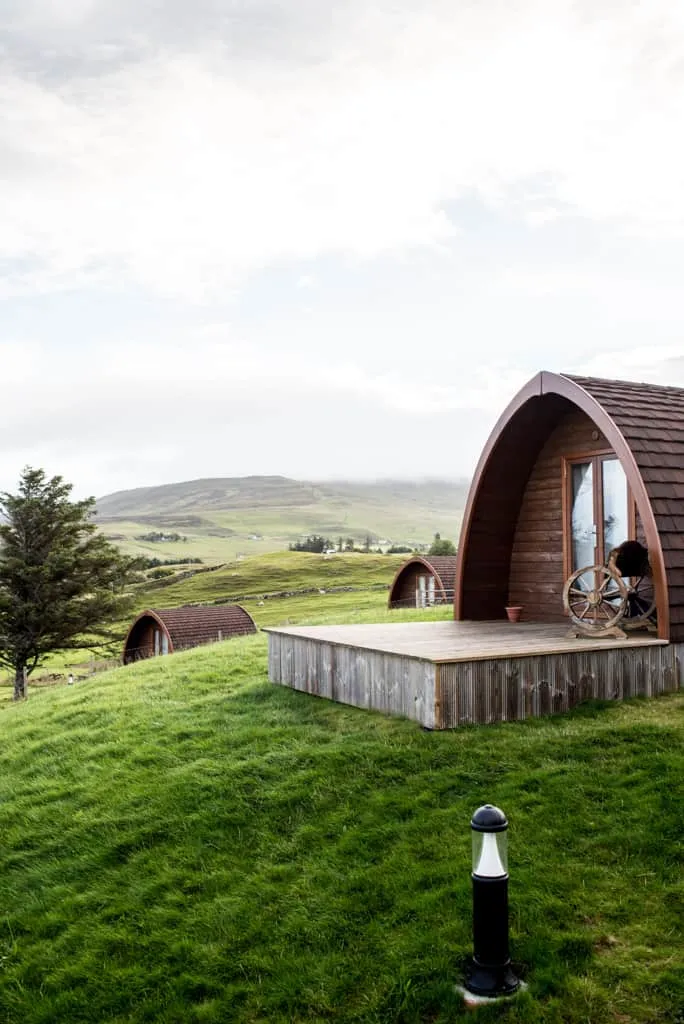
After figuring out flights, it’s now time to find a place to stay! Once we have a general idea of the dates we plan to travel, we start looking for Airbnbs and other accommodations, saving any spots that catch our eye, and then as soon as our flights are booked, we book our lodging. Here are a few sites we love for finding accommodations!
We are huge Airbnb fans! We probably stay in Airbnbs 95% of the time when we travel. We love getting to stay in more local areas, having more space, being able to cook, and it’s usually cheaper than a hotel!
Tripadvisor
Tripadvisor is our go-to site for hotel reviews! It has helped us make the decision of where to stay (or where not to stay) many times.
Booking.com
Booking.com is our favorite website to book hotels. Their prices are usually some of the best out there! Another really cool thing about Booking.com is that they have vacation rentals (like Airbnb) as well. So if you want a one stop shop to browse hotels and rentals, they’ve gotcha covered!

Depending on where you’re visiting, you may need to book additional transportation.
For rental cars, we typically book through rentalcars.com . They have a price match guarantee, so if you find a better price somewhere else, they’ll match it!
We also have used Costco to book rental cars before. Their prices tend to be the best out there, but you do have to be a member or have access to a member’s account. It’s okay if the name on the car is different than the member’s name, so if you have a family member with a Costco membership, ask them if you can use it!
Note : our travel credit cards give us rental car insurance around the world, so we do not opt into the additional insurance when renting a car. Make sure to check in advance to see if you’re covered! Also, make sure to book an automatic car in Europe if you don’t know how to drive a manual. 🙂
For public transportation , like trains, subways, and buses, purchasing in advance varies depending on where you’re going. During our Italy trip, we booked most of our trains and buses from city to city in advance to take advantage of a lower price. But in most US cities, like NYC, you just get your tickets at the station before boarding your mode of transportation.
When looking for trains, subways, and buses , we typically start our search with Google Maps to see the routes and find out which company runs that route. Then we go to that company’s website to see fares, schedules, and to see how to purchase tickets.

Our next step when we plan a trip is to research like crazy! We spend days and even weeks reading blogs, watching vlogs, and scouring the internet for as much information as we can about a destination, including where to eat, things to do, and any helpful tips! As we research, we create a Google Doc and write down the spots we find by category (food, coffee, landmark, activities, etc).
This part can be a bit overwhelming because there is tons of information out there and it can be hard to figure out what to prioritize for your own trip. We like finding a mix of popular spots with thousands of reviews, as well as more local spots with maybe less reviews overall, but very positive ones. And if we see a recommendation mentioned on multiple blogs and websites, that spot usually goes higher up on our “must-do” list.
There are a handful of tools that we use every single time we plan a trip, each for slightly different reasons.
Our first step when finding things to do is almost always to do a quick Google search. We like to search for things like “best things to do in ____,” “unique things to see in ____,” “where to eat in ____,” and “X days in _____” to find blog posts (like the ones we write!) for different destinations, which always give us tons of ideas!

Pinterest is an amazing resource for travel planning. It’s a massive search engine and a great way to quickly find tons of blogs about a destination you’re going to and to see what real people recommend. We typically create new boards for a country or region and then fill it up when we start to dream about a trip we want to take.
Once it comes time to actually plan it, we will head to that board and open all of the blogs we saved, write down common things people recommend and then research some of the lesser known options.
If you’re not already following us on Pinterest, come hang out with us here . We love to share pins from all over the world!
Tripadvisor, Yelp, and Google Reviews

Okay, these are definitely the most obvious, but they are high on our list when researching different cities! We know that some people are leery of review sites, but we personally love hearing from regular people about their experiences at a restaurant, attraction, etc.
We think that if you look at a wide variety of reviews for a place, the good and the bad, you can usually feel pretty confident (or not confident) in making it a stop on your trip. Tripadvisor also has forums where people can ask questions and others can answer and these can be really helpful to read, especially if you have questions that others have already asked.
One thing we have noticed is that Yelp is big in the US for restaurants, but Tripadvisor and Google Reviews are much bigger abroad. For our Mexico City trip, we relied heavily on Google Reviews, as the other two sites hardly had any reviews for restaurants. So make sure to look at all three sites to get a better idea of what a restaurant or attraction is like.
YouTube Vlogs

YouTube is our new favorite way to research for trips. It’s like reading blogs, but actually getting to see the experiences! Some of our favorite travel vloggers to watch are: Kara and Nate , The Endless Adventure , and Mark Wiens for awesome food videos! We watch travel vlogs every night and always mark down good spots to check out whenever we go to those destinations in the future.
If you want to follow along on our adventures, you can subscribe to our YouTube channel here !
AllTrails and Hiking Websites
We love hiking during our trips and one of the best resources we have found for trails is AllTrails . What we love about AllTrails is that it has trail information, such as miles and elevation gain, as well as hiker reviews, for trails all over the world!
We have used AllTrails for hikes all around the US, as well as in Italy and Canada, and it has always helped us gain a better understanding of what to expect on the trail, as well allowed us to follow our progress on the trail map.
There is a free version, but we recommend paying for the AllTrails Pro app ($30/year) to have guaranteed offline map access, off-route notifications, and family and friend notifications.
Beyond AllTrails, we love finding local hiking websites. When we lived in Washington, we used the Washington Trails Association website for every hike. Similar to AllTrails, it has reviews, photos, and hike information, but it is typically more detailed.

Instagram has opened our eyes to sooo many places in this world! The popularity of the app is both a good thing and a bad thing, as some places are becoming Instagram famous and are definitely being visited too much and/or disrespected, but it is also showing us how beautiful some lesser known places are.
Similar to Pinterest, you can bookmark posts on Instagram and even organize them into different collections. We use this feature to save spots that look cool to visit in the future. However, we love Instagram more for the ability to see places in real time.
When we know we are going to visit a place, we will look up the locations on Instagram (both posts and stories) to see what it currently looks like, crowds, and to try to find cool photo spots. We did this a ton in Washington to plan our hikes and to see if there is still snow, what the hike looks like in different weather conditions, etc. It’s also helpful to find out if a specific spot is under construction *cough* Big Ben *cough*.
Don’t follow us on Instagram yet? Head on over to our Instagram page to see even more adventures!
Family and Friends
If you have friends or family members that have visited the destination or live in the destination you’re heading to, ask them what their favorite spots are! These recommendations can often be the best, especially if you know and trust that person’s taste.
One of the best food recommendations we ever got was from one of our best friends. She told us we had to go to La Romana for gelato while in Rome, which wasn’t originally on our list, and it ended up being our favorite gelato during our entire two weeks in Italy! We owe her a scoop (or two) of gelato for that recommendation!

After we make a big list of all of the restaurants, landmarks, activities, and tours that catch our eye while researching, our next step when we plan a trip is to look at Google Maps to see where everything is in relation to each other.
We try to structure our days in a way that we don’t have to travel all over town, but instead stick to a general area so we can maximize the time we have to explore. We suggest making a map on Google My Maps so you can pin all of the locations and then start to group together the things that make sense to do together. This will help you big time with Step 8!

So you’ve done your research, written down some spots, and have seen where they all are on a map…now what? Our next step when we plan a trip is to start organizing all of our must-do and must-eat places into an itinerary.
Our friend Callie created the most detailed, helpful travel itinerary template in Google Sheets that has helped us SO much with our last few trips. We told her we were going to have to share it on our blog because it was very useful and would help so many people, so a BIG thank you to Callie for creating this!
We like creating an itinerary because typically our trips are short and we want to maximize the time we have in every destination. We realize not everyone likes to have as structured of a trip, so feel free to modify the template to fit your needs better! We always recommend being a bit flexible in case the weather is bad one day, you are exhausted and need more rest, or things just don’t go according to plan (which happens often when traveling)!

With this travel itinerary template you can list out the activities for your day in order, write down addresses, add notes (such as: arrive before X time to avoid a line, how to get somewhere, note that it’s cash only, etc), add helpful links, keep track of costs, have a rough estimate of timing for each stop, etc.
It’s also great for collaborating with others! We have used it for our couples trip to Arizona to make comments back and forth and decide what we want to do.
You can download our travel itinerary template here . Note: To use the sheet, please go to “File” and then “Make a Copy” to create your own version! We included an example as well so you can see how we would fill it out.

Once you have a good idea of your itinerary, start locking down any tours, activities, and meal reservations for a time slot that works best for you!
Tours + Activities
When we were in Italy, we booked our tours and entrances to museums in advance to save a little bit of money. While we typically had to commit to a timeframe, it helped us structure our days better and ensure we had a tour to go on.
For attractions where you can get early admittance (like the Vatican) or they get busy during specific times, booking ahead of time can also help you beat the crowds.
Not sure where to find tours? We’d recommend looking on Tripadvisor and Airbnb Experiences !
Want to save some money on a tour or experience? Book on Tripadvisor and use our code APLUSK10 for 10% off!
Reservations
If during your research you find that a reservation is heavily recommended for a restaurant, set a reminder on your phone for a month or so beforehand to give them a call and secure a table. When you have limited time to explore on a vacation, the last thing you want to do is wait in line for a restaurant, especially if you’re hangry. 🙂

One big thing to consider when traveling are your pets! We travel full time with our pup Kona, but there are some times where she cannot go with us on a hike, to a park, or if we are flying to a destination. For any flying trips, Kona will stay with Kathryn’s parents in Austin, but for road trips, National Parks, and other domestic destinations, here is a detailed guide to how we travel with Kona, and where she is if she is not with us. Note: if traveling during holidays or peak season, try to book a sitter far in advance!

Depending on your trip and where you’re going, there are a few extra things to consider looking into before you travel.
Book luggage storage
The only downside about staying in an Airbnb vs. a hotel is that sometimes you’ll arrive before check in or have time to explore after check out and have nowhere to put your bags. We have used Luggage Hero or Bagbnb to find safe places to leave our bags while we explore before or after checking out.
Get travel insurance
We highly recommend buying travel insurance for any international trip. We recommend using SafetyWing , which is travel medical insurance that will cover you outside of your home country for however long you need it. We have purchased their Nomad Insurance plan for international trips, which not only gives us travel medical insurance, but also provides coverage for lost baggage and travel delays. We hope to never have to use it, but it gives us great peace of mind to have it!
Look into driving rules
In Italy, we had to get an International Driving Permit. You can get this from AAA for only $20. We aren’t sure how many countries have this rule, so definitely check the road rules beforehand to avoid getting a ticket or having issues getting your rental car.
Find out if you need a Visa
Depending on where you are visiting, you may need to get a Visa to enter. This website shares the Visa requirements for US citizens for both business and personal trips for every country! We suggest checking this right after booking your trip to see what the requirements are and how to obtain one.
Check vaccine requirements
Some countries require that you have certain vaccinations before your arrival. You can search the destination you are visiting and see if it requires you to get a vaccination on the CDC’s website . We suggest checking a couple months in advance, as different vaccines have different timeframe requirements to get them.
Get local currency
If you’re traveling to another country, make sure you look into the local currency. We typically will order some foreign currency from our bank before our trip (try to do this at least a week before you leave, as it takes a few days) just to make sure we have some on us when we land.
After we land, we will try to find somewhere to get additional currency during the trip. Make sure to research where the best place is to get this currency. In Italy, for example, the best place to get Euros was from bank ATMs—the ones in actual banks, NOT the ones just on the street in the big cities, as those will charge you massive fees.
You may also need coins for restrooms in some countries, so plan to have coins, as well as bills, handy for your trip.
Also, let your bank know you’re traveling abroad to avoid them thinking there is fraud with your card.
Learn the local culture and etiquette
It’s important to understand the culture in a different country or region, especially if something that is considered inoffensive in your home country is considered offensive elsewhere.
Tipping is another important thing to look into. In the US, tipping 20% is pretty standard, but in Europe, tipping is not common at all.
Figure out your internet plan
If traveling abroad, we highly recommend getting an an eSIM card with Airalo ! This is a SIM that you can download to your phone. It saves the hassle of having to get a physical SIM in every country you visit! You can get an eSIM for a specific country or for an entire region, making it extra easy to use if you plan to hop between countries. But before you get an eSIM, make sure you truly need one! Our Verizon plans give us 2 GB of data everyday in Mexico and Canada, so we do not need an eSIM for those destinations.
We also suggest downloading offline Google Maps so you can use maps without eating up data.
Download Google Translate
Google Translate has been a lifesaver when traveling internationally! We used the conversation feature to communicate back and forth with our Airbnb host in Italy and it not only was so much fun, but it allowed for us to converse even with a huge language barrier!
Let someone know your plans
Make sure a family member or friend knows your plans just in case something were to happen. We always send our parents our flight info, as well as our itinerary, just so they are aware of what we’ll be up to during our trip.

Do you pack in advance or are you a last minute packer? We used to start packing days in advance, but lately we procrastinate big time! Regardless of when you pack, figuring out what to bring on your trip, while also not forgetting anything important, is hard!
Check out our top travel items and packing list to see which items we cannot travel without and to download our packing list, which includes common items and some easy to miss items, that you won’t want to forget!
Our most important packing tip: Don’t forget your passport and make sure you have an adapter if traveling abroad! We love this one !

After all of your hard work, it’s time to enjoy the trip! We hope that you found this travel planning guide helpful and that it’ll make it easier to plan a trip in the future!
Ready to plan a trip?
Pin this step by step travel planning guide to make planning your next trip a whole lot easier!

get the behind the scenes scoop!
3 thoughts on “ how to plan a trip: a detailed travel planning guide ”.
Love your enthusiasm. Many carefully thought out ideas. When you post a photo on your blog, it covers up what you wrote. For instance I can only read one Credit card, Chase, the other three are covered by the happy photo of you two. Your three how to plan a trip guides cover up what ever your conclusion/close suggestions? Hope you can fix this as you seem to be very thorough…. I don’t have this problem with my other sites I read regularly. Just thought I would mention.
Also, you should always have a photo copy of the your passports and front and back of credit cards with your parents In case of problems… You can ge it all replaced many hours /days quicker than without…
I am so sorry you’re having issues reading our site. Everything looks normal on our end, so that’s very odd and we’d love to figure out what went wrong. What internet browser and type of device are you using? We will look into this to make sure no one else has issues like this.
And thats a great tip about passports and credit cards!
Nice! I loved This blog.
Leave a Reply Cancel reply
Your email address will not be published. Required fields are marked *
© 2023 Adventures of A+K. All Rights Reserved. Website built with love by Dreamworthy Design . – Stock Photos provided by our partner Depositphotos
Privacy Policy

Travel Planning Checklist: How to Plan a Trip from Start to Finish + PDF
Share this article
As someone who has traveled to over 30 countries , I often get asked, how do you even begin planning a trip?! I still remember planning my first week-long international trip, a cruise , and trying to keep track of everything! So, instead of stressing over your trip, here’s my travel planning checklist.
In this post, we’ll talk about how to plan a trip from start to finish to ensure everything goes well on your trip! Plus, this travel planning checklist is available as a PDF for free for anyone who subscribes and wants to keep track of things ongoing.
Table of Contents

Step 1: Research and Choose a Destination
Before you click book, research where you’re hoping to take a trip. Check on things like visa requirements, average costs, and things to do there. Just because something is gorgeous on Instagram doesn’t mean it will fit your travel vibe.
My favorite way to research for things to do in a destination is by using travel blogs (like mine!) and Pinterest . TikTok and Instagram can be good as well, but I often find the same five things being recommended over and over on Instagram so I tend to avoid it as my main source of trip planning. I’m on all of these platforms as a creator and promise there are good creators out there, though, too!
For example, if you want an island adventure, Anguilla might not be the best option. It’s known for quiet beaches and resorts so it might not fit your vibe. On the other hand, Saint Martin, which is close by, has tons to do and you could fly there for much cheaper!
Also, consider the time of year you want to go and the weather for the destination before deciding. For example, San Diego is warm year-round, but May and June are known for being gloomy. So check when you want to go.
Here are a few questions to ask yourself:
- What do I like to do on vacation? Does this destination offer those types of activities?
- What time of year am I taking my trip? Is that a good time of year to visit that destination?
- How much would it cost to visit? Would that match my budget?
- Is it good for solo/couples/families? (depends on your type of trip)
- What are the travel requirements? Visas? Vaccines? Paperwork? “Learn About Your Destination” page of the US State Department website is a great resource.
- Is my passport valid for those dates?

Step 2: Set your budget and flight alerts
Now that you have average costs and have done some research on the destination, set your budget. A budget is going to be important because it’s easy to overspend if you aren’t keeping track of things! I highly recommend using a trip budget template to keep track of expenses, compare costs, and keep track of what you decide to book!
Before actually booking the flight, set up flight alters. I am including this in step two because I think it fits into setting your budget and thinking ahead for what expenses are to come! Setting a flight alert can help you know when prices are a good deal.
I always use Hopper to set flight alerts because they send you notifications via their app when the flights drop and will let you know how likely flight prices are to drop or not. If they aren’t going to drop, go ahead and start booking. If they are really likely to drop, I’d wait.
I use Google Flights after a Hopper alert to check there isn’t a cheaper option. More on how to save on flights and, even better, saving by using travel credit card points !
I like to use a vacation cost calculator to keep track of the budget and what I’ve spent and compare costs. It’s a great way to keep track of things!
- What is a realistic budget for my trip? (review your research from step 1)
- What is considered a good price for the flight?
- Do I have flight alerts set up for my dates?

Step 3: Book the flight and complete paperwork
Once you get that flight alert that prices have dropped, its time to book the flight and obtain any necessary visas. Every destination and every airline is going to be a little bit different so you will want to make sure you’ve checked over the airline and their rules.
For example, Play Airlines, which flies from North America to Europe, does not include bags in their flight prices. You will either want to pack with just an under the seat bag, or pay extra fees. Also check requirements for proof of return flights if booking one way tickets.
- Do I have a valid passport? (check expiration date 6 months out)
- Have I completed any required visas?
- Do I want travel insurance (health, trip cancellation, etc.)? If yes, make sure you book it!
Step 4: Research and Map It Out
Now that you’ve booked your flight, it’s time to plan out the itinerary! I love doing this in Google Sheets in my trip itinerary sheet ( subscribers get this, too), but you could also create a Google Map. It’s definitely helpful to have maps pulled up as you do this in general because you want to know about distances and locations.
In this step, instead of planning out every little detail, we’re looking at what I like to call the anchor activities. Essentially, the things you cannot or do not want to miss on your trip! For example, when I was in Munich, an anchor activity for me was Neuschwanstein Castle . I planned everything else in Munich around, making sure I got to visit.
Plan out your anchor activities and map out your trip for where you’ll spend each day. I like to map things out my day 1 city 1, day 2 city 2, etc.
Also, you need to check how far in advance things need to be booked. For example, many national parks in the US require timed entry passes like Glacier National Park and Yosemite. Tickets must be reserved three months in advance, so you need to plan far ahead! There also may be specific days that activities are closed, so make sure to note those, too.
- What are the top activities for this destination?
- What are my must-do activities for this trip?
- What city/area would I need to stay in?
- Are there any days that the activities are closed?
- Do I need to book the activity in advance? Do I have enough advanced notice for it? (add the dates to your calendar so you can book in time)

Step 5: Book Hotels and Rental Car
Now that you have things mapped out and know where you want to be on what day, book your hotels and any rental cars . The best deals on hotels are often more than three months out.
It’s best to get to this point earlier in the trip planning phase if you can, especially for the locations where you need reservations, which we discussed in step four! You want to make sure there will still be affordable places if that’s important to you.
When choosing a hotel , consider things like proximity to activities, public transport, facilities onsite, any additional fees (like resorts or parking), and check-in/check-out time.
You should also book your rental car at this stage. Make sure you check on any fees and international permits/licenses you might need. Many countries require one when renting a car. You’ll also want to make sure you know what side of the road they drive on and how comfortable you are with that. Last, think about additional fees and the hold on your card while traveling.
The last thing to consider with a rental car is that you need to pay attention to insurance and any additional fees you might have to pay for. In Mexico (where I’ve rented a car twice), they require additional insurance on top of the car insurance, and many rental car companies will take a $2000 USD hold on your card (removed after returning the car). This is not necessarily a problem, but more something that could shock you when you arrive.
You should also add these to the trip planning template you are using to make sure you keep track!
Here are a few questions to ask yourself about hotels:
- Is this hotel within my budget?
- What facilities and activities are nearby? Is it a convenient location for the activities I have planned?
- What are the fees? (cancelation, resort fee, etc.)
- Check-in/out time?
Here are a few questions to ask yourself about rental cars:
- Am I comfortable driving there? Could I use public transit instead?
- Do I need an international driver’s permit?
- What will the hold on my credit card be?
- Do I need to budget for additional insurance?
- Are there additional fees to consider?
- What side of the road do they drive on?
- Pick up/drop off times?

Step 6: Decide Tours vs. What to Do on Your Own
You’ve researched activities and maybe even booked some specific bucket list activities at this point if they are needed far in advance, but at this stage, decide on everything else. Certain things on a trip are more fun to do with a tour guide, and others you can easily do on your own.
It’s time to decide what you’d like to do with a group and book it! For this, it really is up to personal preference, but of course, I have a few questions to help you out below.
I always like to use Take Walks , Go City , GetyourGuide , Viator , Airbnb Experiences , and EatWith for tours and activities. You should also add these to the trip planning template you are using to make sure you keep track!
- Would this activity be more fun with a group?
- Is the cost of going with a group worth it vs. doing it on my own?
- Would it be stressful to try and do it myself?
- Is this a historical site I would be able to read about on my own, or would I do a self-guided audio tour? Would I benefit from a guide?
- Have I added all of these to my trip planner?
Ready to start booking your trip?
Here is a snapshot of some of my favorite tools.
Booking.com : for booking hotels with great prices and affordable options!
Hopper: app for tracking flights and getting a good deal. (code "meghan" for discount)
GetYourGuide: tours and excursions, unique activities at destinations around the world.
Go City: Discover top attractions in cities around the world with savings of up to 50.
Walks Tours : Unique tours, expert guides, and a great way to meet fellow travelers
Airlo: eSIMs with a digital data pack for over 200 countries/ regions and to connect fast around the world.
Some of these are affiliate links - thanks for supporting my website!

Step 7: Reserve Restaurants & Learn about Local Foods
Now that activities are decided, it’s time to reserve any restaurants and learn about the local food you want to try. Every destination has foods they are known for. Make sure you know where to eat and what! If there are any special restaurants you want to try, make a reservation.
- What are the foods this area is known for? Where can I try them?
- Are there any famous or special restaurants I want to try? (book them)

Step 8: Create a Packing List
Whether you need an international packing list , are headed to the beach, or are going on a city trip, craft the perfect packing list (I have several if you need help)!
Another important thing is to plan out your outfits if you’re the planning type or tend to overpack. Planning outfits helps make sure that you have what you need but not too much.
I suggest going by item type and narrowing down what you need from there. The major buckets are:
- Electronics
- Misc (purse, accessories, etc.)
- Documents (visas, copies of passport, reservations, etc.)
- Cash (make sure you have local currency)

Step 9: Final Trip Prep and Airport Arrival
We’ve made it to the home stretch! You’re about to leave for your trip, and you’re in the final planning phase. You want to make sure you arrive on time, plan your transportation in advance, and have your bags packed.
I suggest that you arrive an hour and a half early for domestic flights, three hours for international flights. Depending on the airport, you may need to arrive even earlier or get away with less time. For example, if you have TSA pre-check/Global Entry (which I highly recommend), you typically can arrive just an hour early, which is fine for domestic flights.
ALWAYS research ahead of time and be conservative, though. You don’t want to miss a flight because of lines or traffic.
There are a few other things to consider as well like having extra copies of your documents in a different bag or saved on your Google Drive. It’s best to share a copy of your itinerary with someone you trust too just in case! Last, make sure your house or apartment is ready for travel too, especially if you’re taking a lot trip. Consider giving a friend or family member a copy of your keys just in case it’s needed.
Last but not least, make sure your finances are accessible. Check for any international fees on cards and have some cash on hand just in case. Many credit cards charge international fees, while many others have zero international fees. Check this ahead of time!
- How will I get to and from the airport? (make sure to book rides in advance)
- What time do I need to arrive to the airport?
- Do I have copies of important documents ready? (passport, visa, insurance, etc.)
- Have I shared my itinerary with someone I trust who is not on the trip? (for safety/awareness, also great if someone needs to check on your house/aparment)
- Is everything packed from my packing list?
- Is my apartment/home ready for travel? (pet sitter, lights, water, keys safely stored in bag)
- Which cards can I use without fees on my trip? Do I have some cash on hand ready for the trip?
Subscribe now to download this editable travel planning checklist for free!

And then, ENJOY! I hope that this post has taken some of the stress out of planning for a trip and you have what you need to feel ready to plan for your trip. This trip planning checklist is something I’ve used to plan dozens of trips now and hope it helps you too!
Related posts

First Solo Trip: Guide to Make your First Solo Trip a Success

How to Make Friends Traveling Alone (from a frequent solo traveler)

Is the Go City Sightseeing Pass Worth It? Honest Review from a Frequent Traveler
Leave a reply cancel reply.
Your email address will not be published. Required fields are marked *
Save my name, email, and website in this browser for the next time I comment.
This site uses Akismet to reduce spam. Learn how your comment data is processed .
Great post!
It’s always interesting to see how different people plan. I do a lot of the same as you – but I also normally save things right onto google maps (and download maps to be viewable offline) as well as find local hikes and download them on alltrails.
I should be better at booking restaurants in advance – that is one thing I am terrible at!!
Very thorough! Such a helpful post!
Great recommendations! I think everyone does this a bit differently. I typically will check flights and accommodations before booking my flights. That way I can ensure that the lodging I want is available for those dates.
This is such a perfect guide! Step by step, totally agree.
Awesome tips! I always get travel insurance for my trips. BTW, I have the same Lululemon belt bag in brown fleece. Also have one in black that is waterproof. It’s perfect for travel!
Travel planning is one of my favorite and least favorite things to do hahaha . Love it !
Read our Privacy Policy
© 2024 Meghan The Traveling Teacher | Design by Life in Color Designs

Master the Art of the Open Road: How to Plan a Perfect Road Trip Itinerary
- Learn to design a road trip itinerary with our comprehensive guide
- Understand why road trips are so popular in the U.S
- Discover the secret behind Route 66's appeal
- Be inspired by Aaron Lauritsen's insights on the joy of road trips
- Gain pro insider tips from experienced travel journalist, Flora Goodwin
The Lure of the Open Road: A National Phenomenon
There's something quintessentially American about a road trip. According to a survey by AAA, nearly 100 million Americans, or 4 in 10 U.S. adults, planned to take a family vacation in 2019, with 53% of them planning a road trip. That's over half of vacationing families electing the open road over other vacation alternatives.
Why this love affair with the open road?
The answer may lie in the quote by Aaron Lauritsen : "The freedom of the open road is seductive, serendipitous, and absolutely liberating." Americans crave the freedom and spontaneity a road trip offers – the chance to control their own journey, explore unseen territories, and immerse themselves in diverse cultures and landscapes . Not to mention the allure of the most popular road trip in the United States, Route 66, stretching from Chicago, Illinois, to Santa Monica, California, covering a total of 2,448 miles of pure Americana.
Creating Your Road Trip Itinerary: A Step-By-Step Guide
As Flora Goodwin , seasoned travel journalist, often says, "A well-planned itinerary is the secret to a successful road trip." So let's dive into her insider tips on creating a road trip itinerary that guarantees a memorable experience.
Creating a road trip itinerary is more than just a list of places to visit - it's a roadmap to adventure. Follow this comprehensive guide shared by the experienced travel journalist, Flora Goodwin, to craft a perfect itinerary.
1. Dream, Then Scheme
First and foremost, let your imagination run wild. Create a list of all the places you've dreamed of exploring. Maybe it's the vast Grand Canyon, the lush Shenandoah Valley, or the bustling streets of New Orleans. Once you've penned down your wish list, it's time to turn these dreams into reality. Start scheming your route considering the distances, travel times, and how many days you would like to spend at each location . Take advantage of digital mapping tools like Google Maps or RoadTrippers to help you visualize and plan your route.
2. Find Your Lodging
Next, consider your lodging. From motels to campsites, there's a myriad of options. Consider the proximity to attractions, availability of parking, and amenities.
3. Plan Your Activities
Research attractions and activities at each stop. Mix it up with outdoor adventures , historical sites, food experiences, and local events to keep it exciting.
2. Secure Your Accommodation
Next, research and secure your lodging ahead of time. The options are endless - from quaint bed and breakfasts and roadside motels to luxury resorts and rustic campsites. When choosing your accommodation, consider factors such as proximity to attractions, parking availability, cost, and amenities. Remember, after a long day on the road, a comfortable place to rest can make all the difference.
3. Dive into Activities and Attractions
Now, for the fun part. Start researching attractions and activities at each stop. Look beyond just the major tourist spots - discover local favorites, hidden gems, and off-the-beaten-path excursions. Balance your itinerary with a blend of outdoor adventures, historical sites , culinary experiences, and cultural events to keep your trip diverse and exciting. Use travel guides, online reviews, and social media to find unique experiences that will enrich your journey.
4. Budgeting Your Journey
One aspect often overlooked in the excitement of planning is the budget . Estimate your costs for fuel, accommodation, meals, activities, and any unexpected expenses. Keep in mind, the best part of road trips is the unexpected surprises, but those surprises can sometimes come with a price tag.
5. Be Flexible
While planning is crucial, equally important is maintaining flexibility . The beauty of road trips lies in the spontaneity and freedom they offer. Leave room for unplanned detours, exciting discoveries, and to linger a bit longer in places that capture your heart. The open road is unpredictable, and the flexibility in your plans can lead to the most memorable moments of your adventure.
6. Prepare Your Vehicle
Lastly, make sure your vehicle is road-ready. Check your tires, oil, brakes, and make sure your roadside assistance membership is up-to-date. Nothing dampens the spirit of adventure like car trouble in the middle of nowhere. Remember, the perfect road trip itinerary balances careful planning with spontaneous adventure. So start planning, but also be prepared to throw the itinerary out the window if the open road calls you elsewhere.
What is the best way to plan a road trip itinerary?
Start with a dream list of places you want to visit, then use mapping tools to create a feasible route. Consider lodging options and research attractions and activities at each stop. Finally, always be flexible with your plans.
How long should a road trip last?
The duration of a road trip depends on various factors like the distance covered, the number of stops, and your pace. It can range from a weekend getaway to a cross-country journey spanning weeks or even months.
What should I not forget when planning a road trip itinerary?
Don't forget to account for travel times, rest days, and contingency plans for unexpected events. Also, ensure you have roadside assistance and car maintenance checked off your list.
What tools can I use to plan a road trip itinerary?
Digital mapping tools like Google Maps or RoadTrippers are very useful in planning your route. For lodging, websites like Booking.com, Airbnb, and Campendium can provide numerous options. Websites like TripAdvisor can help you discover attractions and activities.
How can I make my road trip more fun?
Diversify your activities. Include outdoor adventures, historical sites, local food experiences, and cultural events. Also, consider creating a road trip playlist, bringing along board games, or planning a picnic at a scenic spot to add more fun.
What should I pack for a road trip?
Pack essentials like clothes, toiletries, a first aid kit, road maps, and a spare tire. Also pack snacks, water, a cooler, pillows, and blankets for comfort. Don't forget your camera to capture the memories!
How can I save money on a road trip?
Plan and follow a budget, consider cheaper lodging options like campsites or motels, pack your own food to minimize eating out, and find free or cheap attractions to visit.
How do I prepare my car for a road trip?
Check your tires, oil, and brakes. Make sure your insurance and roadside assistance are up-to-date. Also, pack a spare tire, jumper cables, and an emergency kit just in case.
Road trips encapsulate the American spirit of freedom and exploration . As you plan your road trip itinerary, let the road guide you, but remember to have a well-thought-out plan. With our guide, you're well on your way to experiencing the joy of a life-altering road trip.
- AAA, Travel survey
- Lauritsen, A. (2019).
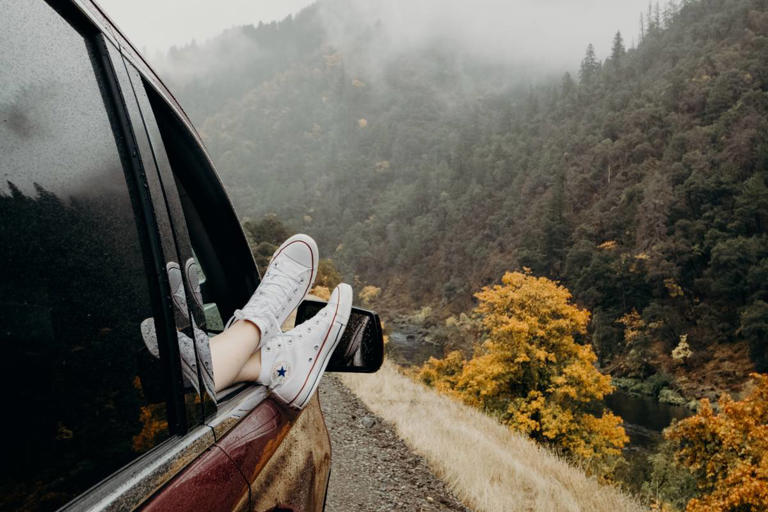
Plan Your Hawaii Vacation for the Best Weather and Prices
HOW TO FIND HAWAII’S BEST HOTEL AND RESORT DEALS, THE BEST ISLAND FOR YOUR PREFERENCES, EXPERT-RECOMMENDED ITINERARIES, AND THE BEST TIME TO VISIT HAWAII FOR GREAT WEATHER
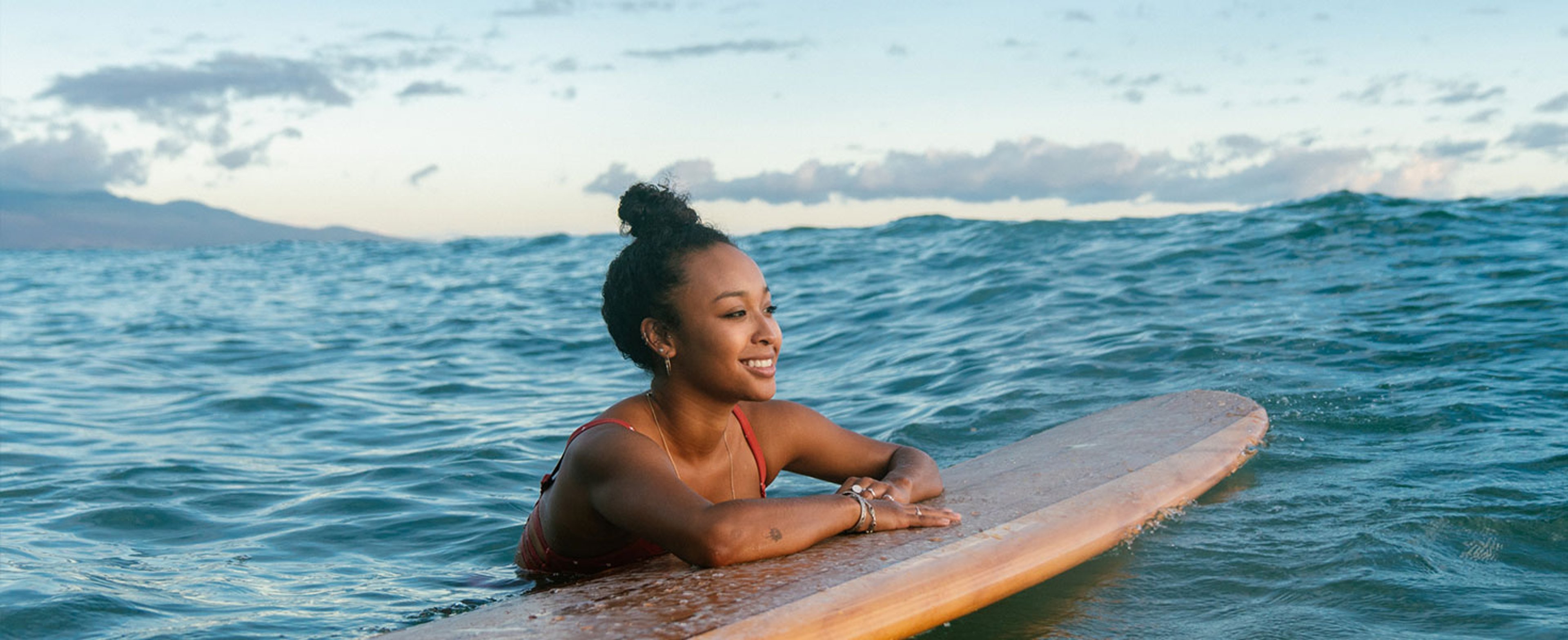
When you think “dream vacation,” what destination comes to mind? If you immediately said Hawaii, you’re not alone. Nearly two million visitors flock to The Aloha State each year for its sun-drenched beaches, vibrant culture, lush landscapes, and world-class dining.
But whether you’re a first-time visitor or a seasoned Hawaii aficionado, there’s a lot to consider when planning the perfect Hawaii getaway. Cost, time of year, and personal preference are all important factors—and that’s just the beginning.
Luckily for you, the travel experts at AAA are here to help. Here are the three essential steps to planning the perfect Hawaii vacation for your unique individual needs, interests, and budget.
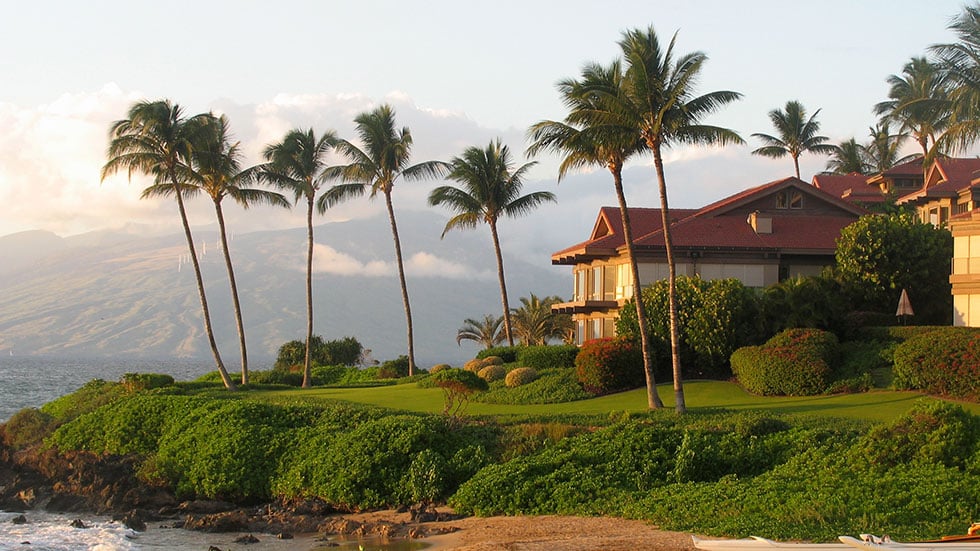
STEP 1: DECIDE WHAT YOU HOPE TO GET OUT OF YOUR HAWAII VACATION
Whether you’re an avid surfer, passionate foodie, marine life conservationist, or certified beach bum, Hawaii has something for everyone. And while it’s not necessary to set your itinerary in stone, you may find it helpful to jot down a few “must haves” for you and your group as you begin planning your once-in-a-lifetime vacation to the Hawaiian Islands.
For example, do you prefer a luxury resort vacation over rustic outdoor adventure? What is your maximum budget? Will you stick to one island or hop around? Are there any school or work obligations that will impact the timing or duration of your trip? Organizing your thoughts this way will make booking and packing decisions easier when the time comes.
AAA Travel Advisors can provide vacation planning guidance to make your next trip unforgettable. Find a Travel Advisor
Need to do a little Hawaii research before you start planning? Check out these “know before you go” tips from the travel experts at Hawaiian Airlines.

STEP 2: CHOOSE THE BEST HAWAIIAN ISLAND FOR YOUR NEEDS
Hawaii is home to 137 islands and atolls, but four attract the lion’s share of tourists each year. The simple reason is convenience, but despite being the most developed and accessible by air and sea, these Hawaiian hotspots boast an identity all their own.
- Wide open spaces and towering volcano trails make the Big Island of Hawaii perfect for outdoorsy roamers.
- Affectionately known as the “Garden Island,” Kauai is famous for verdant landscapes and cascading waterfalls.
- Bump elbows with fellow Hawaii lovers at distinctive Oahu hotels and resorts, from iconic Waikiki to the funky North Shore.
- Where breathtaking scenery meets world-class resort living, Maui features a little bit of all things Hawaii.

STEP 3: BOOK AT THE RIGHT TIME FOR OPTIMAL WEATHER AND COST There’s no “wrong” time to visit the island paradise of Hawaii, but depending on your budget, tolerance for crowds, and other factors, some seasons are undeniably better than others.
For example, Hawaii’s rainy season stretches from November through March. But less-than-perfect weather won’t keep holiday sunseekers and outdoor enthusiasts at bay, so travelers can expect larger crowds in November and December—especially in the tourist-heavy areas of Oahu and Maui’s most popular surfing and snorkeling spots. As a general rule of thumb, travelers can anticipate lower airfare to Hawaii and thinner crowds throughout January, February, September, and October.

Going Awesome Places
Detailed itineraries + travel guides
7 Day Austria Itinerary – Best of Vienna, Salzburg & Innsbruck
Last Updated August 19, 2024 William Tang
You are here: Home » Travel Itineraries » 7 Day Austria Itinerary – Best of Vienna, Salzburg & Innsbruck
What do waltzes, the Hapsburgs, the Sound of Music, Mozart, mountains for days, schnitzel, and dumplings all have in common? Austria is a country that magically weaves between high culture and music, amongst urban old town charm that’s juxtaposed with the vastness of alpine summits and outdoor delights. Use these 7 days in Austria as inspiration and foundation for your future trip to the country. Inside you’ll find advice from someone that’s been there, tips on where to eat, where to stay, what to see, and what to do.
This Austria itinerary picks the best of the 3 cities of Vienna, Salzburg, and Innsbruck that’ll have you humming tunes, dreaming about the mountains, and salivating over Sacher Torte. You’ll be amazed by the beauty of Austria and trust me, you’ll want to come back for more. The hills and so much more are alive here.
In This Article
Highlights from 7 days in austria, day 1 – vienna – grand palaces of vienna, day 2 – vienna – you can have your art and cake too, day 3 – salzburg – all about mozart, day 4 – salzburg – the sound of music, day 5 – salzburg to innsbruck – off to the alps, day 6 – innsbruck – royalty and crystals, day 7 – innsbruck & vienna – nordkette, austria trip planning map, a quick austria travel guide, a magical austria experience, read more about travel in europe, travel resources for your next trip.
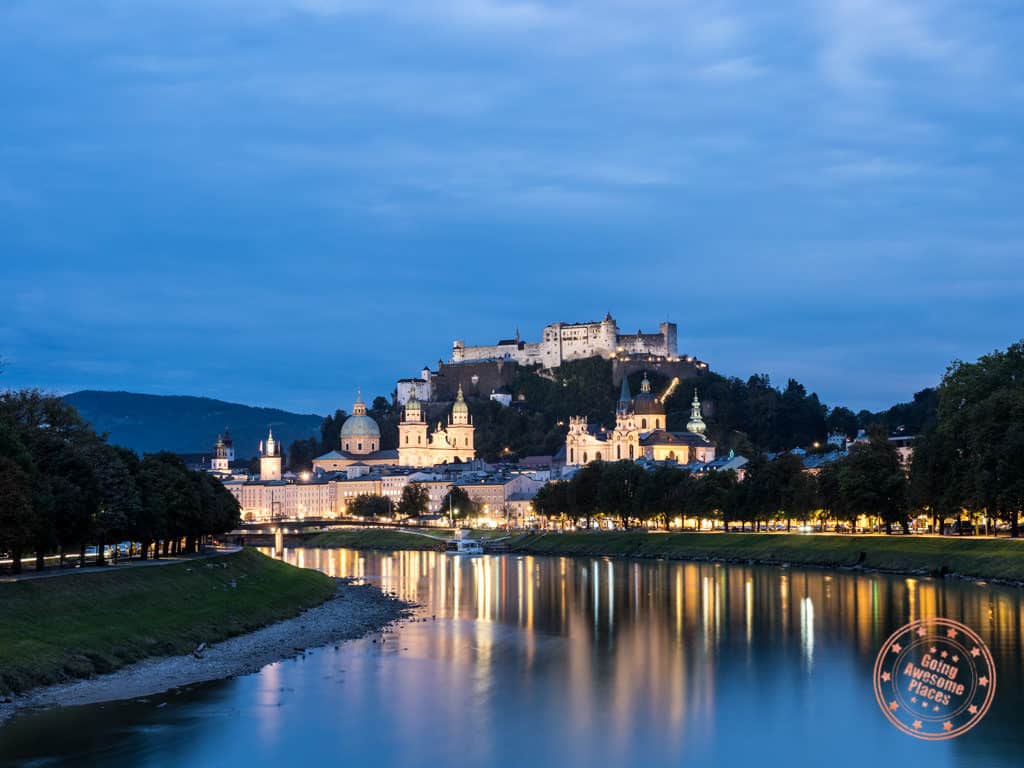
This 7 day Austria itinerary covers the top bucket list items and shows you how you can easily spend a week if not more.
Here are our top 5 highlights of Austria that you can’t miss!
- Mozart Concert Dinner
- Sound of Music Tour
- Swarovski Crystal Worlds
- Belvedere Palace
TOP TIPS FOR TRAVELLING TO AUSTRIA
- Where to stay – We stayed in 4 remarkable hotels in Austria but if I were to pick, the best one out of all of them was The Mozart in Salzburg with its modern take on boutique with an awesome restaurant and close proximity to all the action in the city. We used Booking.com for all of our stays and is great for finding the best deals. Alternatively, you can always see if hotel corporate codes might work for you.
- Car rentals – Save the most money through car rental coupon codes and always start your search with Discover Cars and RentalCars so you know what the best deals are.
- Flights – International flights are never cheap, but with the Skyscanner “Everywhere” feature you can find the best deals. Check how much it would be for you to get to Austria!
- Insurance – Not always required but always recommended! Make sure you’re covered with the best travel insurance .
- Best deals – Bookmark our frequently updated travel deals page .
7 Day Austria Itinerary

Austria is often a country that most will pass through. In fact, our first experience to the country was 6 years ago and we hopped into Vienna and then bounced right out to Prague. Yearning to go back, this Austria 7 day itinerary is a really great introduction to what the country is all about, allowing you to see the three cities of Vienna, Salzburg, and Innsbruck that we can only describe as unexpected and surprisingly incredible .
As we do with all of my other itineraries, this is a travel guide that’s meant to provide a detailed walkthrough of how you can plan your own trip if you only have 7 days to work with. We’ll describe what each of your days is like and also summarize it below for each day. We’ll also be making key recommendations and tips that we learned along the way.
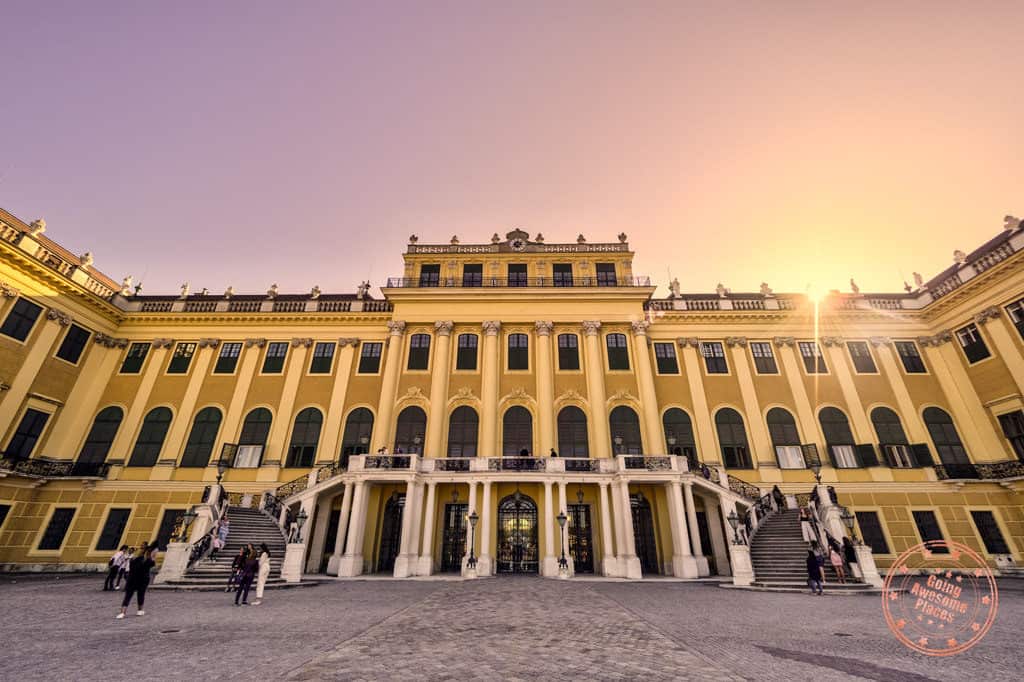
Vienna is a lesson in imperial history, one where the Hapsburg monarchy is ever so present and with your first day in the capital of Austria, you’ll be going all-out by seeing some of the most important residences that’ll rival most other cities in Europe.
If you’re coming from North America like I was, brace for a long day because many flights arrive early in the morning and you’ll need to have the endurance to last.
Once you arrive, there’s one thing you’ll need to do. Head over to the tourist info booth at arrivals and pick up your Vienna City Card . For your two days in the city, order the 48 hour card and this’ll cover you for all local transit and more than 210 discounts to attractions all over the city. Once you’ve done that, take your private airport transfer which I recommend because it’s affordable and convenient and have them drop you off at your accommodation for the next 2 days. We were lucky with the Gratzlhotel in Karmelitermarkt because my room was ready by the time we arrived in the morning.
Don’t lie down though because there’s much to do on your first day!
To get things started, a great way to get situated is by doing either a larger group city tour or go with a private tour with a local guide so you can get to know the neighbourhood you’re staying and also the core which is known as District 1.
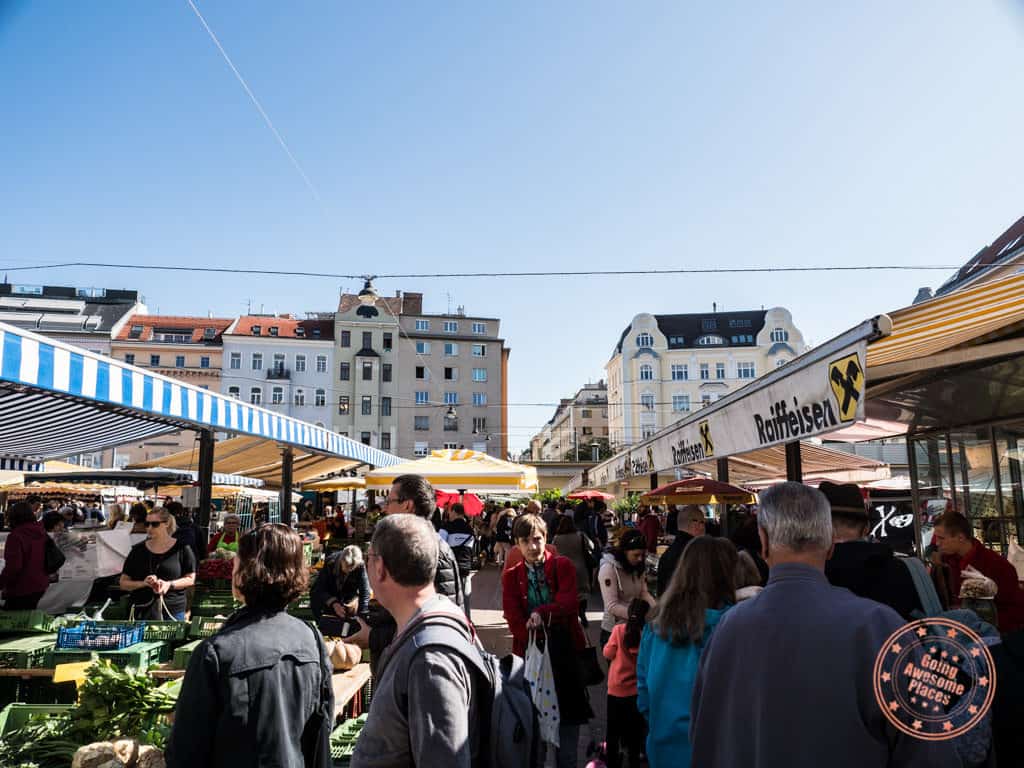
The tour will cover quite a bit of ground but if it’s a private one and you’re staying in District 2 like I did, make sure to stroll through the buzzing Karmelitermarkt , spot where Johann Strauss lived, drink a typical Viennese drink known as a melange (shot of espresso with foamed milk), and see the revitalized Danube canal .
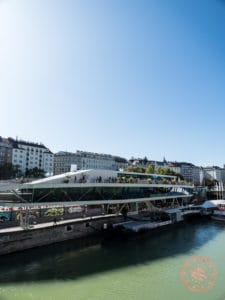
Say goodbye to your guide at your lunch spot which should definitely be at Motto am Fluss , a trendy restaurant perched right above the canal which has a prime view of the water way and the mix of new and old architecture of District 2. Here you can try Austrian classics or dive into their excellent breakfast items while sipping on fresh lemonade.
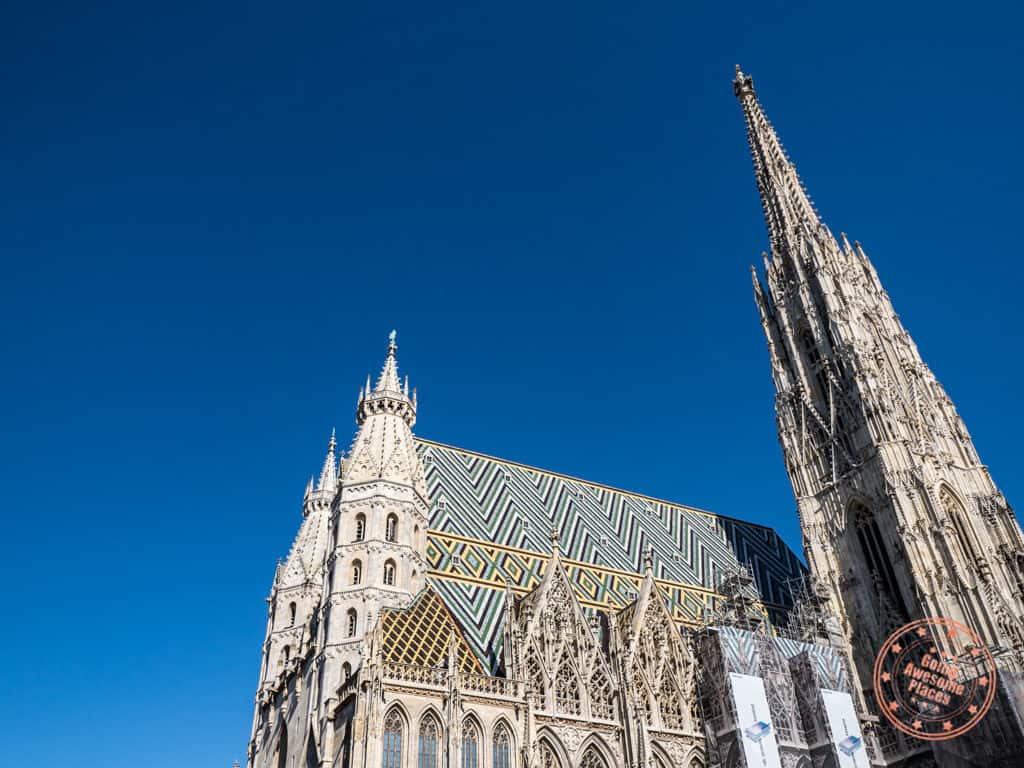
The tour might’ve taken you into the core but now is your time to explore the city on your own. Make your way to St. Stephen’s Cathedral and marvel at the mosaic roof and the incredible detail you can see when you enter the church. It’s free to walk inside the church but if you’re looking to do a guided tour or see the catacombs.
Once you’re here, there’s a maze of winding and wide promenade of pedestrian shopping streets. You’ll be back tomorrow so no need to do it thoroughly. Make your way over to the Karlplatz U-Bahn station .
This’ll be the first time you take the metro so make sure you validate your Vienna City Card by inserting it into the little blue boxes that are typically right before the escalator down to stamp the back of it with the date. Don’t validate it until you actually want to start using your card.
PRO TIP: If you plan it right, you can stretch your 24 hour Vienna City Card over multiple days. For example, you can start it at noon and you’ll be able to use it until the next day at 11:59AM. Don’t validate your card until you actually need to use it.
Vienna City Card

One thing that you’ll notice quickly about Austria is that all major cities have their own city card. The Vienna City Pass is excellent and a must-have if you’re spending even just 1 day in the city. There are too many benefits to describe but here are the key features that matter:
- All local transit is included in the city.
- Discounts to almost all major attractions including the Hofburg, Schönbrunn, Leopold Museum, Belvedere, Albertina, and tons more.
- 1 day starts at 17 EUR. A 24-hour U-Bahn ticket is already 8 EUR. Savings for attractions range from 2-5 EUR. Hit up 3 attractions a day and you’re golden!
- There are also advanced passes that include hop-on hop-off busses, and transfers from the airport if you need it.
- The pass doesn’t start until you validate it at a metro station machine.
Purchase your card
Take the U-Bahn all the way to Schönbrunn station.
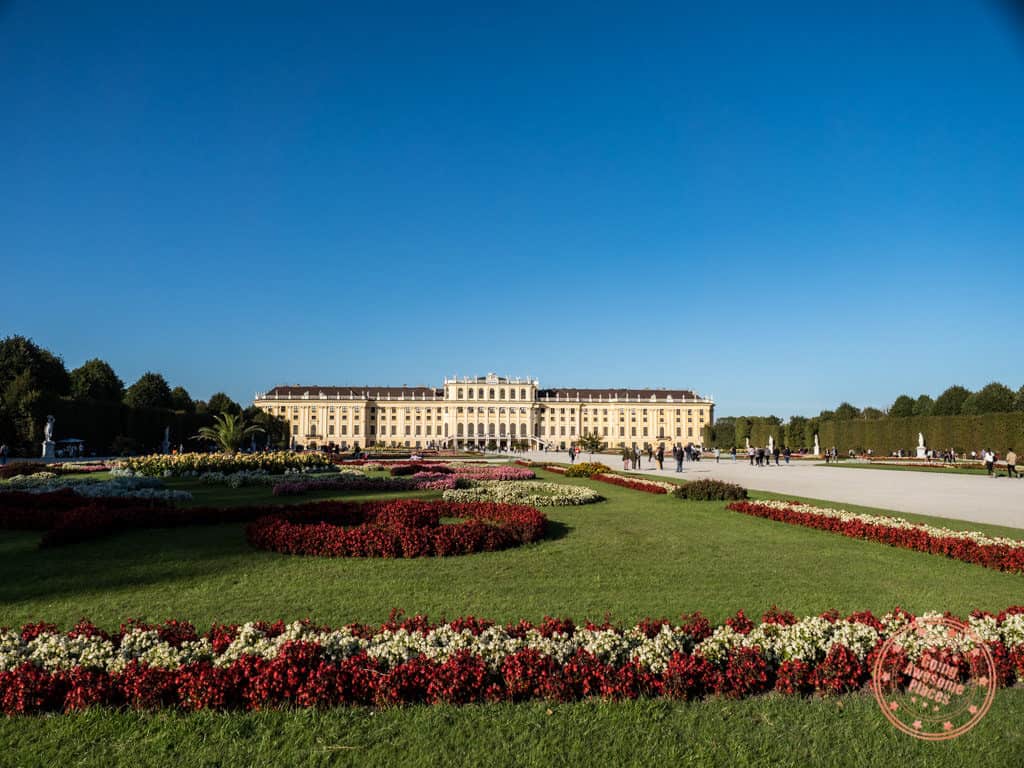
Schönbrunn was the Hapsburgs’ summer palace and is an opulent example of court life, the pinnacle of architecture from the 18th century, and the melding of art and design in the gardens that sprawl all around the grounds.
Take your time to explore Schönbrunn. Depending on your interests you can do the tour of the palace , special side attractions, or you can walk right into the grounds and walk the gardens free of charge.
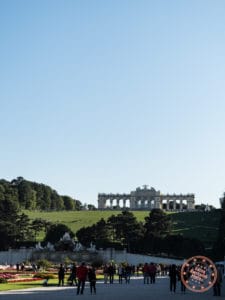
You need to know that the grounds are massive and so you’ll need to plan your time well. Besides the palace itself, the labyrinth is worth it and so is the Gloriette viewing terrace that’s all the way on the other end of the gardens. The Cafe Gloriette is a great place to rest your feet and take in the spectacular view.
WHAT YOU NEED TO KNOW
Address: Schloß Schönbrunn, 1130 Vienna
Hours: The hours vary quite a bit throughout the year and is also different between the palace museum and the gardens. In general, the palace opens at 8AM and the gardens open at 6:30AM. The full breakdown of hours can be found here . Note that in the winter season (November and onwards) many attractions are closed.
Price: There are a ton of attractions and combination passes at the Schönbrunn Palace. The below are adult ticket prices. Concessions/discounts are available. The discounts with the Vienna City Card are indicated in red .
- Imperial Tour (22 rooms) – 16 EUR
- Grand Tour (40 rooms) – 20 EUR
- Classic Pass (5 attraction combination) – 26.50 EUR ( 22.50 EUR )
- Classic Pass Plus (same as the above but includes the zoo) – 40 EUR
- Sisi Ticket (includes Grand Tour, Hofburg, and Imperial Furniture Collection) – 34 EUR ( 31 EUR )
- Gloriette – 4.50 EUR ( 3.50 EUR )
- Maze – 6 EUR ( 4.50 EUR )
- Privy Garden – 4.50 EUR
- Orangery Garden – 4.50 EUR
- Children’s Museum – 9.50 EUR ( 7.50 EUR )
Do they accept credit card?: Yes
Tips:
- You actually don’t need to pay anything just to walk the main grounds of the gardens and to look at the palace from the outside.
- If you buy your tickets online through the official site is you can purchase them in advance and not have to queue at the ticket office in person. That said, there is no discount for purchasing online.
- The advantage of purchasing skip-the-line tickets Imperial Tour from Viator is that a guide is included. Official tickets for the Imperial Tour are self-guided.
- When you purchase tickets, you need to pick a time slot and these selections are binding. If you show up late, your ticket is invalid. That’s one reason for purchasing tickets in-person if you’re not sure about timing.
Buy the Imperial Tour
From Schönbrunn, take a combination of the U-Bahn and S-Bahn to Quartier Belvedere Station .
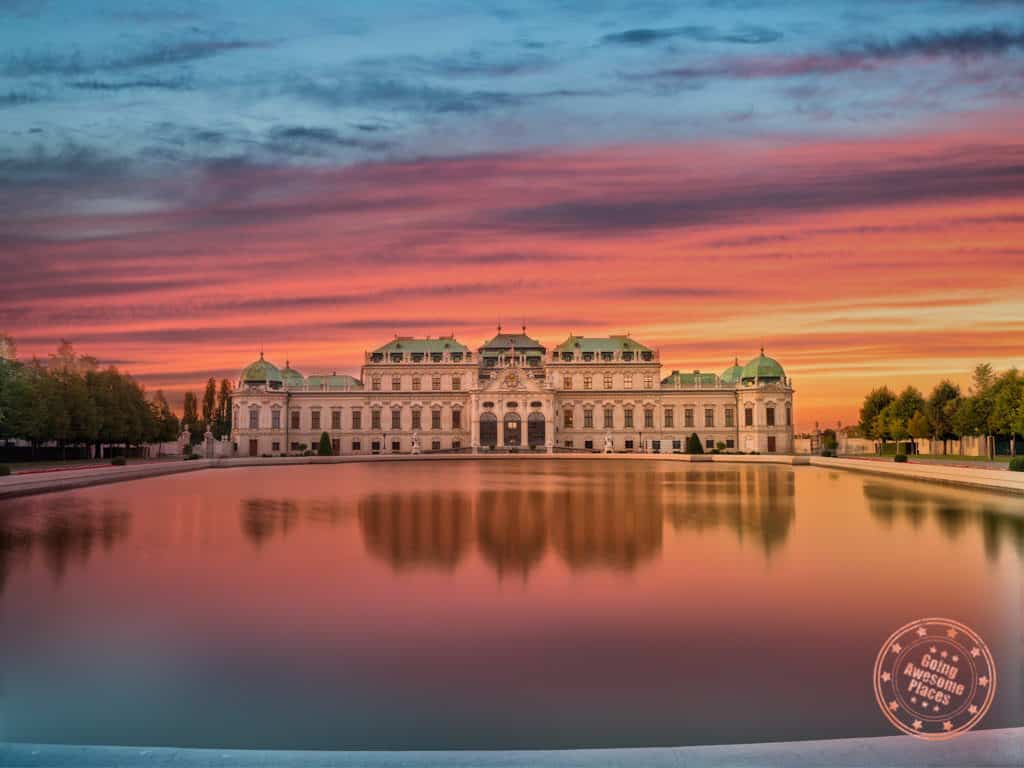
Belvedere may not have the scale of Schönbrunn but it is just as striking and beautiful in its own right. This is a baroque masterpiece at one point belonged to Prince Eugene of Savoy who was the commander-in-chief of the Hapsburgs which was gifted to him after his successful campaigns against the Ottoman Empire.

Consisting of an Upper and Lower Belvedere, the Palace Stables, and gardens in between, there’s much to see here with all buildings now part of the Belvedere Museum. In the Upper Belvedere , you’ll find famous Austrian painter Klimt’s best known work “The Kiss” and many other highlights from Monet, van Gogh, and more all housed in an incredible Baroque palace. The Lower Belvedere is an art exhibition of Prince Eugene’s period. Lastly is the Palace Stables which has treasures from the Middle Ages. There’s also the newly built Belvedere 21 across the street on the north side which is an icon of post-war Modernism and houses international art, film, and music in the contemporary style.
You might only have time to breeze through one of these or if you’re near closing time, it’ll be worthwhile just walking the grounds and catching the sunset from the large pool of Upper Belvedere or the palace gardens.
Address: Upper Belvedere, Prinz Eugen-Straße 27, 1030 Vienna
Hours: The hours are different for each of the buildings so it’s worth heading to the Belvedere Visit page . In general, all the museums close at 6PM except on Fridays when they open late to 9PM.
Price: Like Schönbrunn, there are many attractions here and different packages. The below are adult ticket prices. Concessions/discounts are available. The discounts with the Vienna City Card are indicated in red .
- Upper Belvedere – 16 EUR ( 14.50 EUR )
- Lower Belvedere (includes Palace Stables) – 14 EUR ( 12 EUR )
- Belvedere 21 – 8 EUR ( 6 EUR )
- Klimt Ticket (Upper and Lower combo) – 22 EUR ( 19.50 EUR )
- On July 1, 2019 a time-slot ticket system is being introduced for the Upper Belvedere. This means that you need to book a specific entrance time for your visit and like Schönbrunn, you need to be there for your slot.
- You can bypass the above by buying a ticket online through GetYourGuide which has a general ticket. You show up with your printed voucher at the group cash desk to receive your time slot ticket when you get there.
Buy the Upper Belvedere Ticket
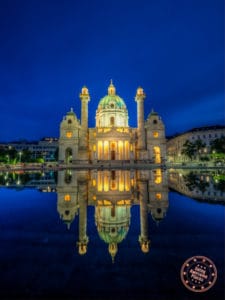
To close out the night, call an Uber over to Karlsplatz where you’ll be able to see the magnificent Karlskirche (St. Charles Church) illuminated by light and reflected by the pool of water in front. Pay attention to the design of the church which many say is an architectural curiosity because it is such an eclectic mix of styles of Greek, Roman, Byzantine, Baroque, and Renaissance all in one.

Dinner is right next door at the Heuer Am Karlsplatz . This is located right in a local corner park which means a lovely outdoor terrace in the summer. Inside is always buzzing with energy, frequented by locals chatting about their week, the sizzling from the kitchen, and fresh ingredients displayed on wooden racks. This is a refreshing restaurant that gives you a look into what the modern culinary scene in Austria is like.
Day 1 Summary
What you’ll see:
- St. Stephen’s Cathedral
- Schönbrunn Palace
- Belvedere Museum & Gardens
- Karlskirche
What you’ll do:
- Vienna city walking tour or private walking tour
Where you’ll eat:
- Lunch – Motto am Fluss – Situated right along the Danube canal, you have prime views of the waterway and transition from District 1 and 2.
- Dinner – Heuer Am Karlsplatz – A modern eatery with Austrian classics. Super trendy spot that is popular for its beautiful outdoor terrace, ambiance with DJ music, and solid drinks.
Where to stay:
As with my all of my trips, I was able to find everything I needed through Booking.com because of their massive inventory and variety in terms of types of accommodations.
Here, I share with you where I personally stayed but also recommended alternatives that I think you’ll like based on different budgets. For a full breakdown, make sure to read the best area to stay in Vienna .

I STAYED HERE
GRÄTZLHOTEL KARMELITERMARKT
A urban accommodation concept in Vienna where former side-street bars have been transformed into ground-floor studio apartments. These large spaces are fabulously furnished and complete with small kitchenette.
TripAdvisor
Booking.com

BUDGET APARTMENT
STANYS HOTEL & APARTMENTS
Extremely affordable apartment/hotel that’s located 5 minutes from Westbahnof. Rooms are spacious and Viennese breakfast provided every morning in their self-service lounge.

BY HAUPTBAHNOF
MOTEL ONE WEIN-HAUPTBAHNOF
New as of 2015, if this is anything like the Motel One I stayed at in Hamburg, you’re going to blown away by this property. Their breakfast are legendary, rooms are modern, and location superb.

UNIQUELY MODERN
HOTEL DANIEL
I stayed at the end of the trip and was impressed with this quirky property that has a boat hanging on the edge of the roof and doesn’t take itself too seriously. Their breakfast is amazing and their rooms open-concept modern.

Your second day in Vienna is going to be packed with culture and sweets so get ready!

To start your morning, head to Vienna’s MuseumsQuartier which is an area within the city’s Ringstrasse that can only be described as a complex near the Imperial Palace that is hive of artistic and cultural activity that includes museums, studios, schools, cafes, and shopping. Sit in one of the many purple chaises in the neighbourhood’s sprawling courtyard and feel the creative energy fill in.
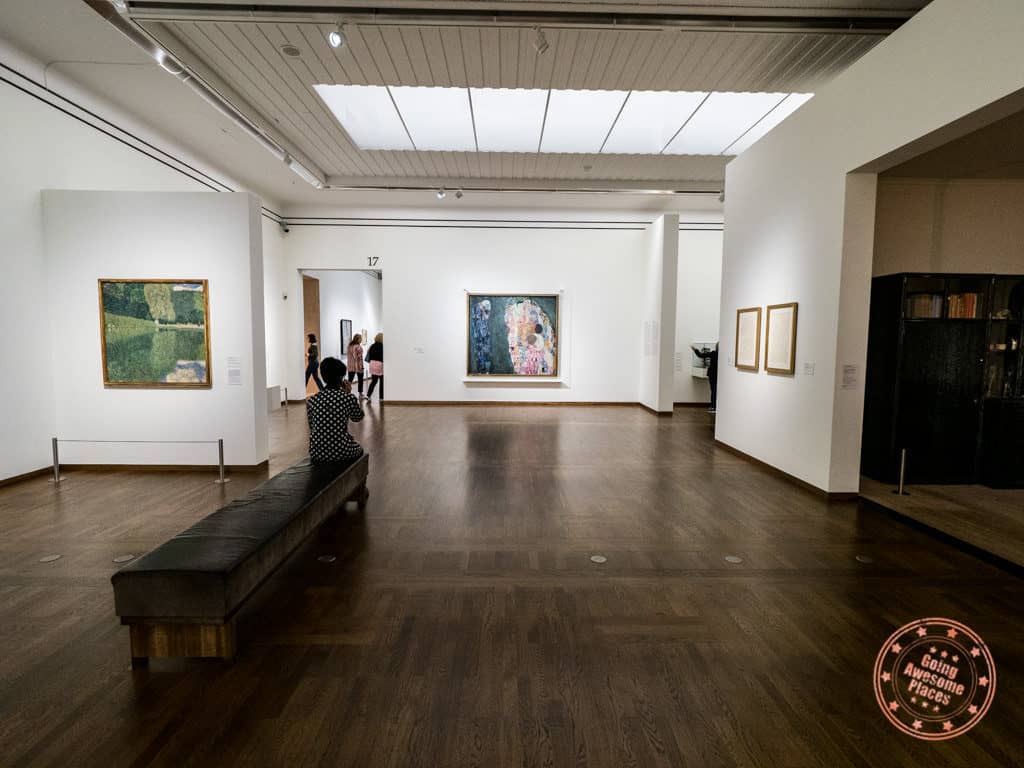
Among one of the highlights of MuseumsQuartier is the Leopold Museum . From the outside, you’ll see a bright sandstone cube building but inside is one of the most important collections of modern Austrian art. You’ll find the incredibly impactful work of Egon Schiele, Gustav Klimt, Oska Kokoschka, and designers of the Weiner Werkstätte.
I highly recommend that you try to do one of their public guided tours to maximize on your experience at the museum so you can pick up on all the small details of Viennese Art Nouveau, Vienna Workshop, and Expressionist Period.
Address: Museumsplatz 1, 1070 Wien, Austria
Hours: Daily except Tuesday: 10PM to 6PM. Thursdays: 10AM to 9PM. Closed on Tuesday.
Price: The discounts with the Vienna City Card are indicated in red .
- 14 EUR for regular admission (12 EUR)
- 10 EUR for reduced ticket
- Audio guides are 4 EUR
Website: Leopold Museum
Public guided tour: The schedule for the tours vary quite a bit so it’s recommended to contact the museum in advance. The price of these tours is 3 EUR.
- The museum does not allow large backpacks inside the museum so you’ll need to either use their lockers (coin deposit required) or the use of the coat check (1 EUR).
SKIP THE LINE TICKET
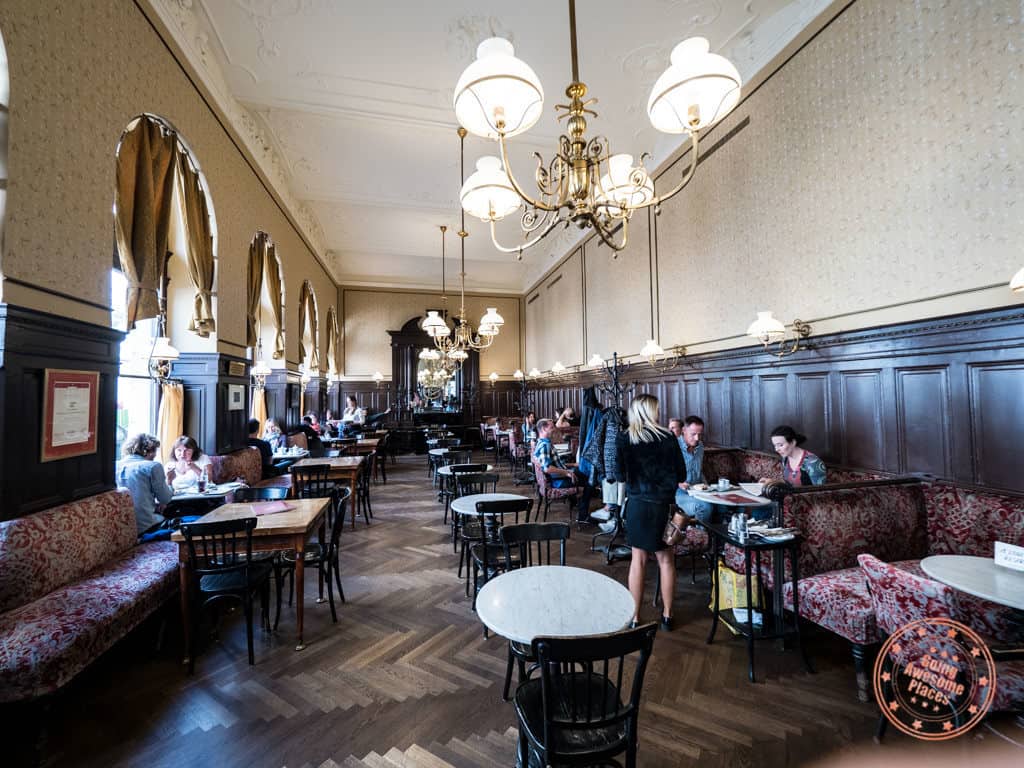
Vienna’s coffee culture is something you might not’ve known of before but it’s time to dive right in to an integral part of the city’s social experience.
The story goes that when the Turkish invaders were pushed out by the Polish-Hapsburg army in the late 1600’s, they left behind many sacks of small brown beans. Not knowing what they were for, they experimented on them until the birth of the country’s premier beverage.

Today, it’s an absolute staple to go to one of the city’s grand cafes that feature high ceilings, cultivated interior decoration, and an air of elegance. Here the practice of drinking coffee is one of the city’s most coveted traditions as they lay one of many claims to the invention of the addictive brown beverage.
If you’re looking for one of the city’s best coffee houses for that elevated experience, look no further than Café Sperl . With grand tall ceiling, opulent decorations, cosy booths, and unhurried air, the 1880 cafe is the perfect place to grab lunch, their incredible strudel, people-watch, and of course sip on a coffee.

If you’re looking for food recommendations, take a look at these on the menu:
- Melange – mocha with foam that is close to a cappuccino except with a bit more foam
- Beef soup with thin-sliced pancakes
- Sausages with mustard, horseradish, roll – Classic Austrian appetizer
- Apple strudel

After lunch, make your way over to one of the most historically important buildings in Vienna – the Vienna State Opera House which is also known as the Staatsoper.
Open in 1869, this opera house has graced the presence of celebrities, state officials, and world-class artists including Wolfgang Amadeus Mozart.

Even if you don’t get a chance to see a performance here, the behind-the-scenes tour of the venue is a must-do in Vienna. Given in a number of different languages, you’ll get to see the world’ largest repertory theatre, learn about its history, architecture, how it operates, and see many of its salons, state rooms, and backstage.
Address: Opernring 2, 1010 Wien, Austria
Hours: See the tour schedule as it varies quite drastically because of the opera season and other operations that might be happening at the opera house. Normally tours are conducted at 1PM, 2PM, and 3PM.
Price:
- Adults: 9 EUR
- Seniors: 7 EUR
- Children and students (up to 27): 4 EUR
Website: Vienna State Opera House
- Tours are given in German, English and Spanish at all times but if you are looking for tours in Italian, French, Russian and Japanese, you’ll have to call.
- You can’t purchase tickets in advance. For the tour time that you’re interested in, show up 20-30 minutes in advance. There’ll be a large overflow of people outside because the ticket purchasing process is slow. Once you’re in, they’ll slot you into language sections and there’s almost a continuously flow of groups that go in so the tour times aren’t exactly at one slot per say. They limit group sizes to roughly 20 and they keep alternating between the languages until everyone gets through.
READ REVIEWS
Once you finish at the Vienna State Opera, you’ll be in prime location to start your own mini-adventure. You have a few choices – you can walk through the pedestrian streets of Vienna around St. Stephen’s Cathedral or you can do what we did which was go on a cake hopping extravaganza.
The first spot deserves a bit of attention because of how popular it is and the rest I’ll list off and I’ll leave it to you to decide whether you want to visit or not.
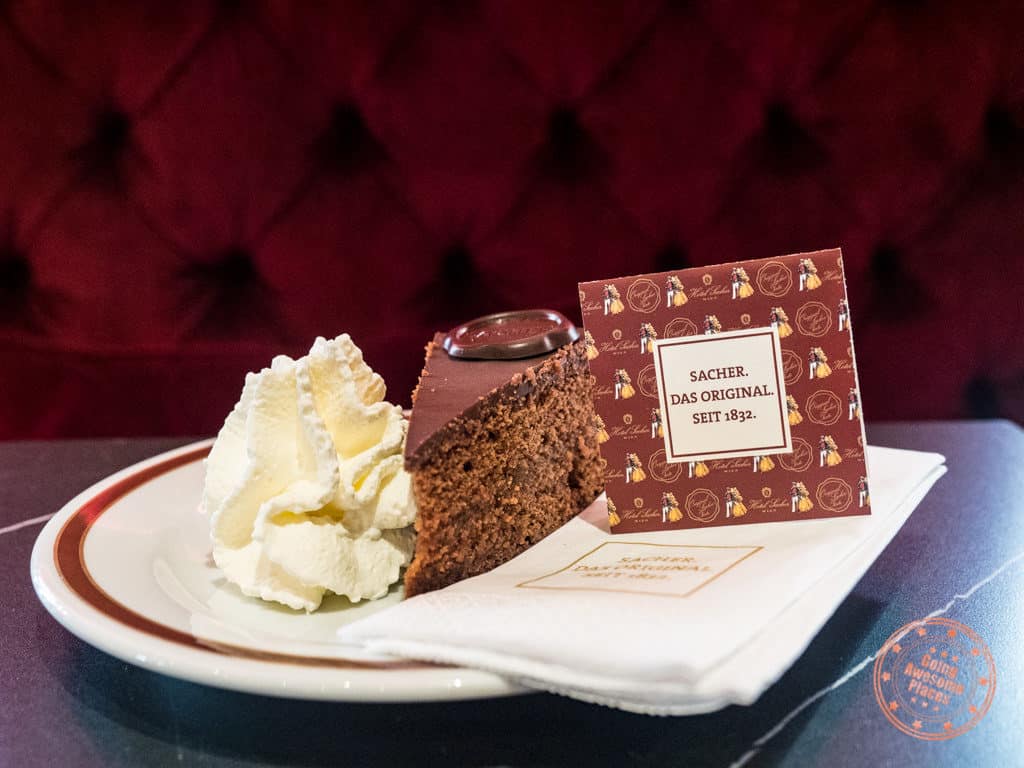
The cake you’ve undoubtedly read about or have had a friend tell you about is the Sacher Torte . This is an elegant and refined combination of chocolate flavours with a truly Austrian apricot jam, chocolate icing, and of course a mandatory dollop of whipped cream.
This national culinary specialty was invented by Franz Sacher for Prince Metternich in Vienna. Franz’s eldest son eventually took over the business and opened a boutique hotel. Today, this tasty triad of chocolate, whipped cream, and apricot jam is truly symbolic of Vienna and a mandatory stop to make sure you can try the “Original Sacher Torte”.

Business is booming because right across from the Vienna State Opera house is not one but 3 different Sacher cafes. So which one do you go to? Well the truth is any will go but if you’re looking for the newest, I’d recommend that you try to line up for Sacher Eck Vienna . The queue may look long but it moves pretty quickly. In no time you’ll get a spot in the velvet padded cafe.
PRO TIP: If you’re looking for the shortest line, don’t be afraid to scope out the other cafes along the street parallel to the opera house. Tourists are always drawn to the longest line but most don’t realize that they all serve the Sacher Torte.

The other cafes that you can weave into your tour of Vienna are:
- Cafe Central
- Cafe Imperial

For dinner, you’ll be eating at a hyper-local establishment. Recommended by locals in-the-know, Gasthaus Ubl is where you’ll get a chance to eat a superb selection of Austrian dishes including veal schnitzel, Viennese boiled beef, pork & sauerkraut dumpling, and liver dumpling soup. A heads up that they only have hand-written German menus here so you may have to get some help from the servers there.
Day 2 Summary
- Leopold Museum
- Vienna State Opera House
- Breakfast – MQ Daily – The perfect cafe in the museum district.
- Lunch – Café Sperl – The classic Viennese coffee house that has many Austrian classics and one of the city’s best strudel.
- Dessert – Sacher Eck Vienna – Newest of the 3 cafes by Hotel Sacher that serves the famous Sacher Torte.
- Dessert – Cafe Central – Another classic Viennese cafe that has a wide selection of cakes. Expect lines here.
- Dessert – Demel – A historic cafe in the middle of Vienna’s pedestrian zone. Not many seats here but has excellent cakes.
- Dessert – Aida – There are multiple locations and this is more of a casual dessert shop in the city. Great place to take a break while exploring the city.
- Dessert – Cafe Imperial – Located at one of the city’s most prestigious hotels, their Imperial Torte may not be as famous as the Sacher Torte but is quite amazing in my opinion.
- Dinner – Gasthaus Ubl – German-only menus shouldn’t dissuade you from coming here as they are a classic example of an Austria eatery that is frequented by locals and serve the best of the traditional dishes.

With two days in Vienna completed, it’s sadly time to say goodbye but don’t worry, there’s a ton ahead as you make your way to the city of Salzburg.
From your hotel, grab an Uber to the central Hauptbahnof train station in the city. Once here, you’ll have a ton of opportunities to pick up some breakfast including either the popular cafe/bakeries Ströck or Anker.
If you haven’t yet, purchase an ÖBB Railjet that’ll take you from Vienna to Salzburg in 2.5 hours as the train tops 230 km/h.
Upon arrival in Salzburg, hop on another cab to your hotel for the next two days, The Mozart . This is really the perfect place to stay while in Salzburg. It’s a new boutique hotel that’s got that European modern decor but with an added spunk of art and Mozart. Location wise, it’s conveniently located not far from the main pedestrian street north of the river so everything is walkable. Their included breakfast is superb and their lunch is quite excellent as well.

In fact, it’s at the hotel’s restaurant, Mozart Bistro , where you’ll be having a modern tapas take on Austrian food.
Since it’s quite early, you won’t be able to check into your rooms so leave your bags in storage and meet your city guide for a tour around this city which you’ll soon find to be much more compact, easily explorable, and packed with charm.
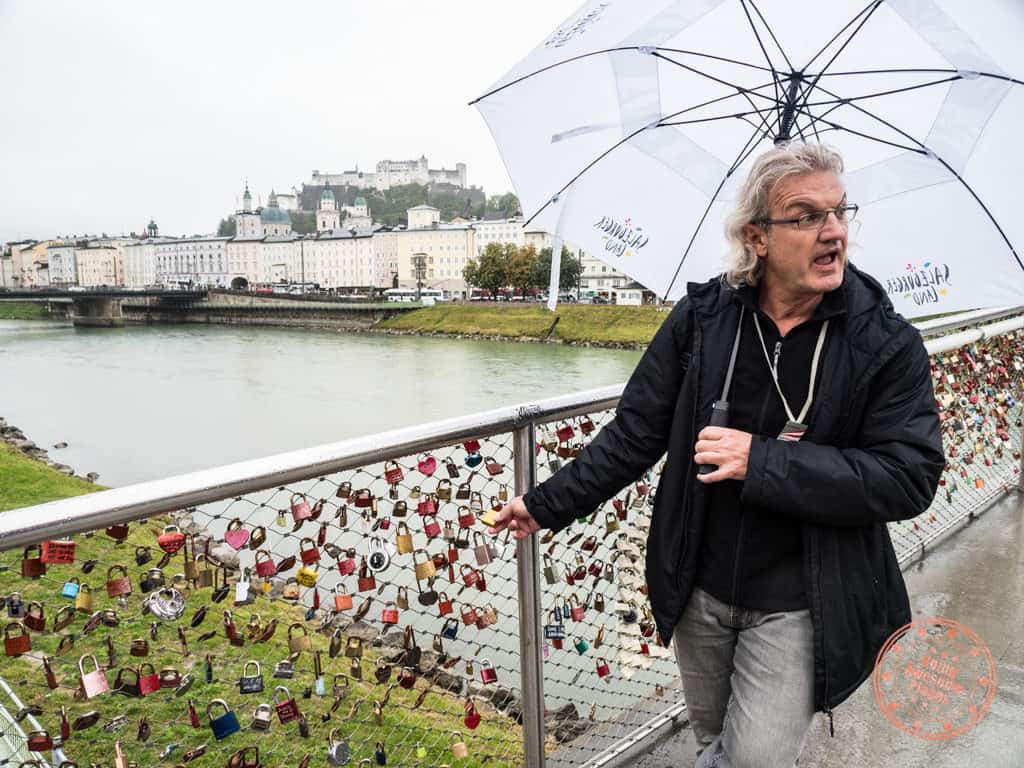
There are a number of historical walking tours of Salzburg such as this one but we ultimately went with a private English-speaking tour with Christian of Salzburg Smile Tours .
About Guides
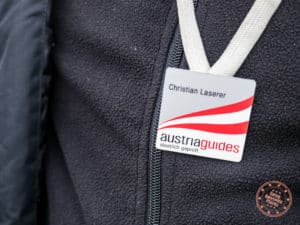
In order to become a guide in Austria, you need a professional license. This is why you’ll see the governing body, “Austria Guides”, appear on most websites. This is actually a good thing because this means that the country is regulating the industry and ensuring a standard of service and quality.
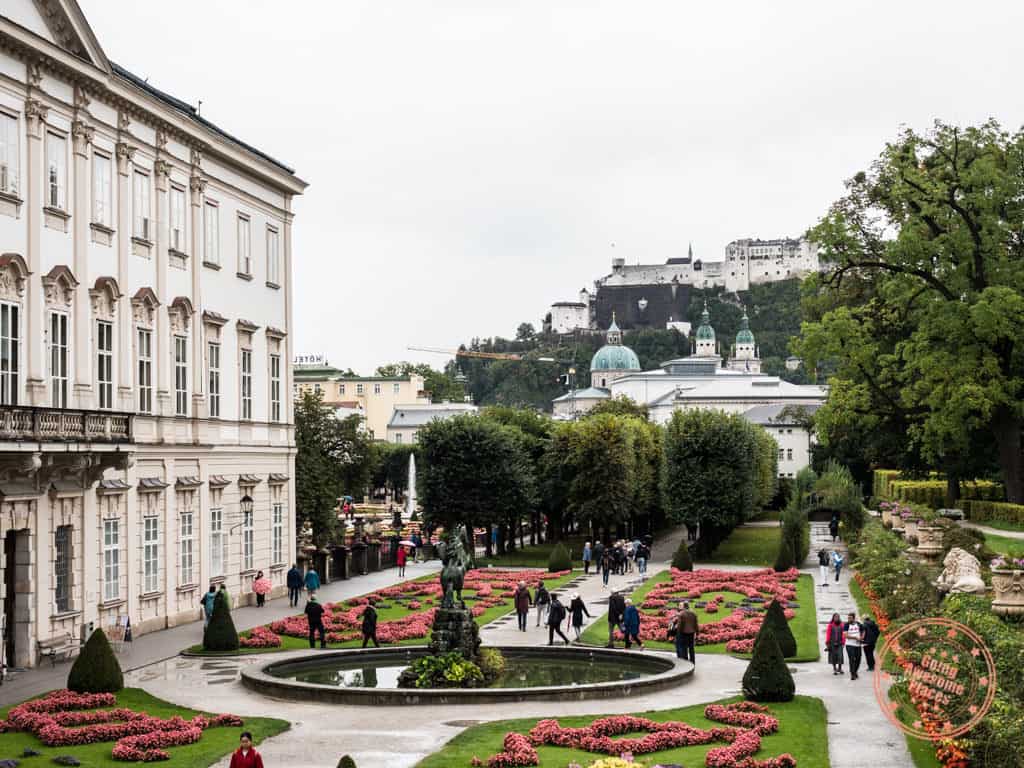
The 2 hour tour starts in the stunning Mirabell Gardens and Palace . For those that are Sound of Music fans, this should bring back memories of ‘Do-Re-Mi’ so don’t be surprised to see people hopping on the steps or marching around the fountain. It’s here that you’ll learn more about Salzburg’s Walk of Modern Art and how sculptures can be found all over the city. Pass by the Mozart Residence and then cross over the River Salzach on the famed bridge that is filled with locks.

This brings you into Old Town where you’ll be able to roam the pedestrian streets of Getreidegasse that is lined with popular shops, hidden alleys, and charming streets. There are some brilliant examples of medieval, gothic, and baroque styles here and there’s a story behind all of them. Your guide will point out key features that you’d normally pass and also explain the history of Mozart Balls (Mozartkugel), show you the best cafes, and show you the original family behind all of the iron-wrought signs.
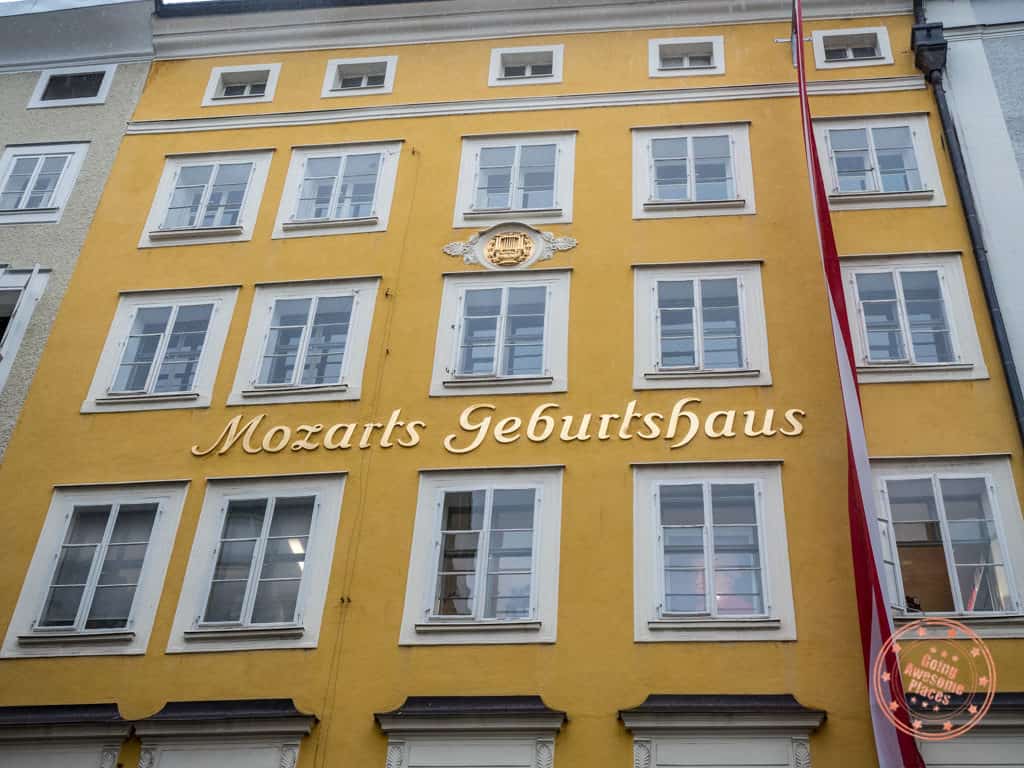
In the middle of it is Mozart’s Birthplace . Using your Salzburg Card, you’ll gain access to building where the famous composer spent most of his early life in. It’s here that you’ll be able to see the room where Mozart was born, artifacts and recreated room of the time when they lived in a small humble section of the building, to the full story of his career, the family, and rise as a legend.
Salzburg Card

Salzburg has its own version of a city card and it has incredible value with completely free access to almost all the attractions in the city including Fortress Hohensalzburg, St. Peter’s Monastery, Mozart’s Birthplace, Salzburg City Cruises, Hellbrunn, Salzburg Museum and more. What made it extra convenient was that for most locations that had turnstiles, all you have to do is skip the line, tap and go. You also get free public transit throughout the entire city.
During low season (Jan – Apr, Nov – Dec) it’s 26 EUR for 24 hours and high season (May-Oct) it’s 29 EUR for adults.
Purchase your card online and pick it up at either Mozart Square or at the Salzburg Hauptbahnof.
Buy Your Card

Continue your tour where you’ll pause at Salzburg Dome Cathedral , St. Peter’s Monastery , and learn about Fortress Hohensalzburg beside the golden sculture dubbed “Sphaera”.

As you make your way back to the hotel, make sure to drop by Cafe-Konditorei Fürst which is in fact the creator of the beloved Mozart Balls or Mozartkugel. What you learn quickly about Salzburg is that the balls are everywhere and all of them look kind of the same with Mozart front and center. Through our tour, we learned that almost all of them are machine made is replicas of the original created in 1890 by Paul Fürst. There are only 3 shops in town so if you want this handmade treat of marzipan and pistachio surrounded by nougat and dark chocolate, make sure you drop by. They’re 1.40 EUR each, 8 EUR for 5, 10 for 15 EUR, or 15 for 23 EUR.
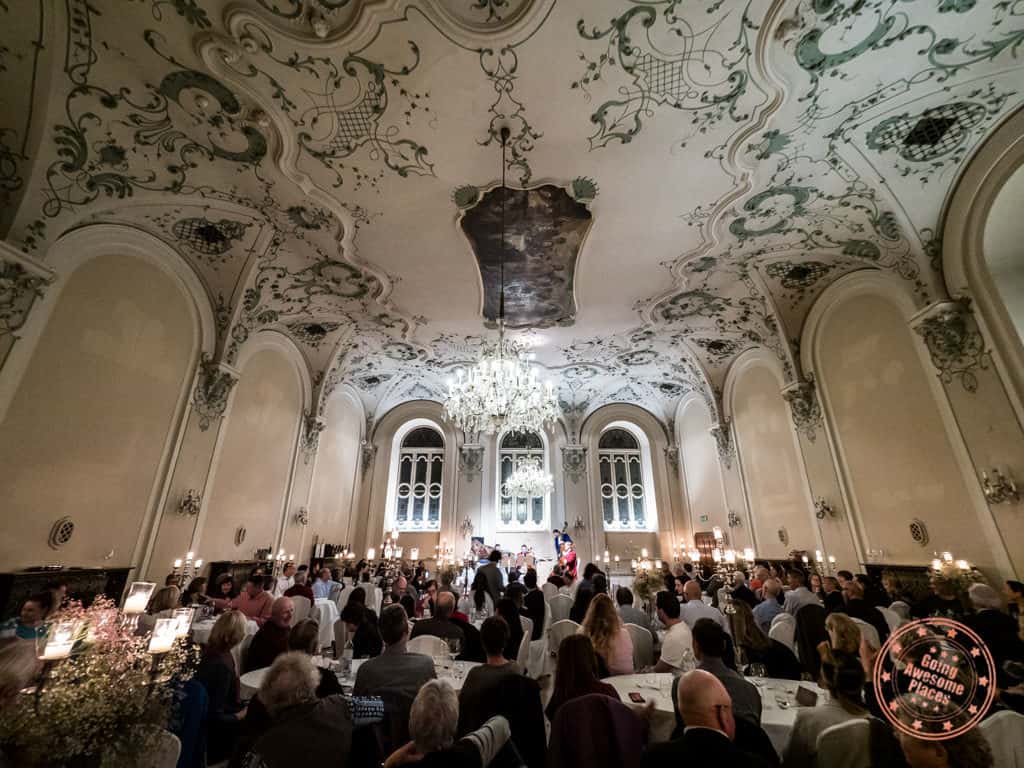
It’s time to change and snazzy up because you’re in for a treat this evening at the Mozart Dinner Concert . Grab an Uber and make your way back to St. Peter’s Monastery and the adjacent restaurant. The venue of the concert is actually one of the world’s oldest, dating back to the year 803.

Whether you’re a fan of Mozart or not, this is a delightful evening where you’ll hum to the music of 3 of Mozart’s greatest operas while also having a candlelit dinner in a beautiful hall that’ll transport you back to the 1790’s. You’ll be treated to a multi-course meal created from original historical recipes while listening and watching arias and duets performed by two opera-singers and chamber ensemble, all while wearing authentic period costumes.

What impressed me the most about this experience is that it’s done in a way that you can enjoy the music and meal thoroughly because the food is served during the performance intermissions. This way, you’ll be able to finish one course as a break to the performance before it begins again which keeps you engaged and refreshed instead of one continuous performance while you’re eating.
You might not know it all but you’ll be sure pick up on famous moments from “The Magic Flute”, “Don Giovanni”, “The Marriage of Figaro”, and “A Little Night Music”.
Address: Stiftskulinarium St. Peter Restaurant: St.-Peter-Bezirk 1/4, 5020 Salzburg, Austria
Hours: Performance starts at 7:30PM and doors open at 6:30PM, 7 days a week however depending on the time of year, there are periodic days off so make sure to check the schedule.
Price: 66 EUR Adults, 51 EUR Youth (14-26), 43 EUR Children (<14)
Website: Mozart Dinner Concert
- Dark rye bread with butter
- Lemon-chicken broth with a curd cheese and rosemary dumpling
- Stuffed roasted chicken breast in a red wine and herb jus with potato gratin and homegrown vegetables
- Wild honey parfait with 2 different kinds of fruit sauce
- If vegetarian, vegan or allergy-free alternatives required, let them know and they will aim to accommodate
- Drinks are extra (including bottled water)
- Reservations – This is not a large hall and so performances do fill up quickly. It is highly recommended that you reserve this several weeks ahead of time.
- Photography – Flash photography is not allowed but you’re definitely allowed to take photos from your dinner table.
Day 3 Summary
- Mirabell Gardens & Palace
- Mozart Birthplace
- Salzburg Historic Walking Tour
- Mozart Dinner Concert
- Breakfast – Ströck – One of the large franchises of bakeries in Austria that you’ll find at Hauptbahnof which is great for food on-the-go.
- Lunch – Mozart Bistro – Newly opened that does this modern twist of Austrian traditional dishes in tapas form.
- Dessert – Cafe Konditorei Fürst – The place of the original Mozart Balls.
- Dinner – Mozart Dinner Concert – Amazing music and dinner experience that you have to do while you’re in Salzburg.

THE MOZART HOTEL
Newly opened that takes European modern and adds a funky artistic and Mozart twist. Rooms are fabulously furnished, there may be a creepy Mozart bust, bathroom floors are heated and their breakfasts are to die for.

AFFORDABLE BY MIRABELL
HOTEL IMLAUER & BRÄU
Surprisingly affordable for its location and rooms. This is a traditional hotel in Salzburg steps away from Mirabell Palace that you can often find under $100. There’s free wifi throughout and is eligible for 10% Genius discount with Booking.

GREAT LOCATION
ALTSTADT HOTEL HOFWIRT
This building dates back to 1878 and right by the pedestrian zone of the centre of Salzburg. All rooms have been renovated to have a modern feel while retaining its traditional roots. Free wifi is available and breakfast is included.
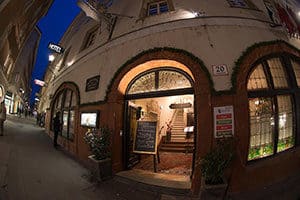
CLASSIC LUXURY
ALTSTADT HOTEL STADTKRUG
Perfectly located on Linzergasse Street north of the river, this is a 700 year old building that is conveniently located to explore all of Salzburg. Rooms are clean and spacious. Reviews of this hotel are excellent including “this hotel is without doubt the best property we stayed in.” Amazing free breakfast is included.
Looking for deals?
Before you head out, make sure to check out all of the current travel deals that we have curated. You never know, you might find some good ones to save you heaps of money . Current Travel Deals
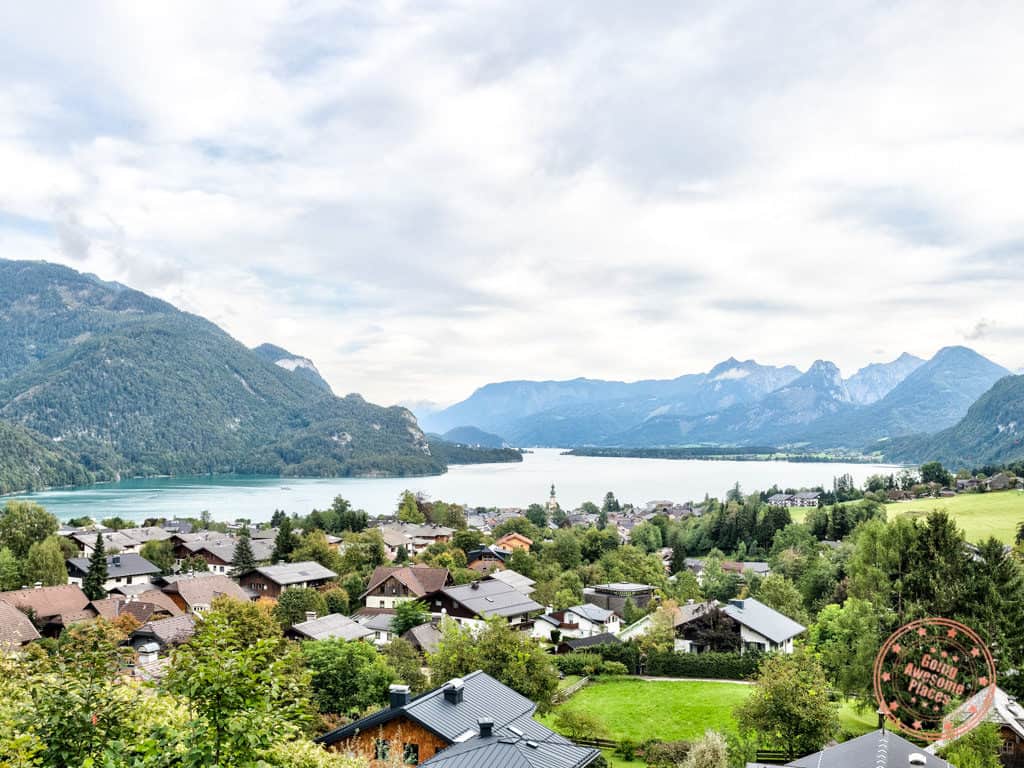
You can’t come to Salzburg and not re-enact your favourite scene from The Sound of Music. It’s one of those things that many of you may have grown up with and have spent multiple Christmases huddled around the TV watching.
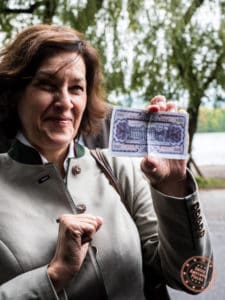
Regardless of your level of fandom, much of the beauty of Salzburg and the whole province is tied to the iconic landscapes featured in the movie so on your fourth day in Austria, you’ll be spending your day with Salzburg Experience and the esteemed Michaela Muhr who is extremely well reviewed .
Now one thing I have to set straight because this is hilarious ironic is that most Austrians haven’t watched this movie and don’t know about the hype. The reason is that this was purely a Hollywood creation and so if you come to Salzburg expecting all the locals to be crazy about The Sound of Music, you’ll be in for a surprise.
Website: Salzburg Experience
- Salzburg’s Favourite Things – This is run by Michaela Muhr and covers the most important historic sites but avoid the big tourist crowds as much as possible. You will also see several famous Sound of Music film locations and a few hidden gems. This is a private tour.
- Driving Tour of Salzburg’s Favorite Things – A Michaela Muhr tour that spends a day covering the best sites of Salzburg city and Salzkammergut region including the go-to spots for Sound of Music as a private tour.
- The Original Sound of Music Tour – These guys are the only ones that can be named “Sound of Music” because of legal rights so they’re probably the best known. This is on a large coach bus and will take you to all of the main filming locations for the movie. It’s 4 hours long and is quite affordable but will not take you to some of the smaller sights that a full day tour will afford you.
- Private tour of Austrian Lakes and Mountains – The focus here is more on the lake region outside of Salzburg but as a private tour you can request to see more Sound of Music sights.
- Private Sound of Music Tour with Breakfast at Leopoldskron – This is a 6 hour long tour capped at 9 travellers that is very similar to the Salzburg Experience tour and exclusive to Viator.
BOOK A TOUR
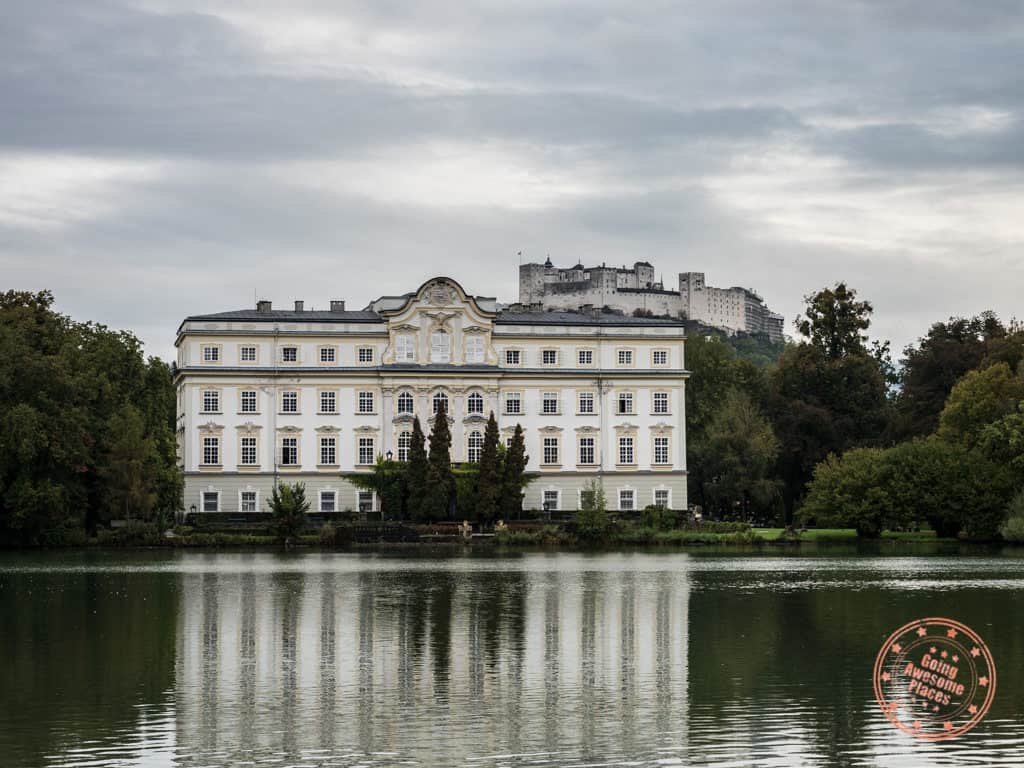
The Sound of Music tour starts with Leopoldskron which you’ll immediately recognize from the rowboat scene near the beginning of the movie. The larger tour busses aren’t able to come through here because the neighbourhood that runs up to the lake consists of small narrow streets. From here you get an amazing view of Schloss Leopoldskron, the lake, and Fortress Hohensalzburg in the distance. Today, the castle is a hotel and conference centre. You’ll also learn that the gazebo built for the movie was filmed here but because of the unwanted attention and traffic that it resulted, it was later moved.
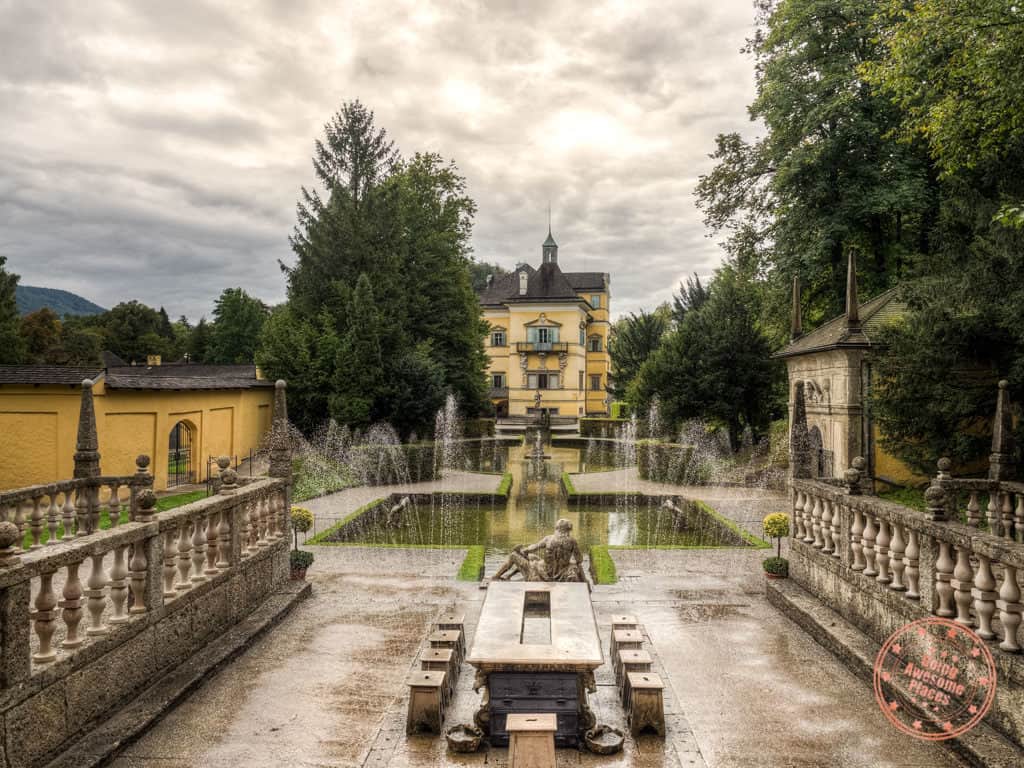
Where the gazebo is currently standing is at Schloss Hellbrunn . While you may be here for a twirl in front of the iconic gazebo, what you’ll actually remember are the trick fountains of this palace. Built by prince-archbishop of Salzburg as a summer palace, Hellbrunn is filled with mysterious grottos, water-spewing stags, hidden water jets, and hydraulic powered figures. Take a tour of the enormous grounds to see all of the behind-the-scenes water “tricks” and water playground.
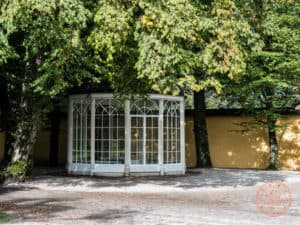
At the end of the tour you’ll find the famed gazebo where the lovesick Liesl von Trapp sang ‘Sixteen Going on Seventeen’. Normally, the gazebo is closed to visitors but with an official Austria Guide, they’re able to grab the key for you to take a twirl inside.
To really solidify the Sound of Music connection, you’ll get to stop at Hotel Villa Trapp which was the actual home of the von Trapps which is today turned into a B&B hotel.
For lunch, you’ll be heading to Schloss Fuschl that sits perched on the idyllic Lake Fuschl. Have lunch on the beautiful terrace of Marriott Luxury Collection property restaurant which serves a high-class fusion of Austrian and French cuisine.

In the afternoon you’ll drive through the mountain passes and lakes that this region is so well known for. Along the way you’ll pass by the Red Bull headquarters which you’ll be surprised to hear is Austrian, a gorgeous lookout of the town, St. Gilgen , which is used in the opening helicopter shots of the movie. Finally, close out with a visit of St. Michael Basilica where Maria and Georg von Trapp marry in the movie.
You’ll have free time in the afternoon to explore the rest of the old town of Salzburg.
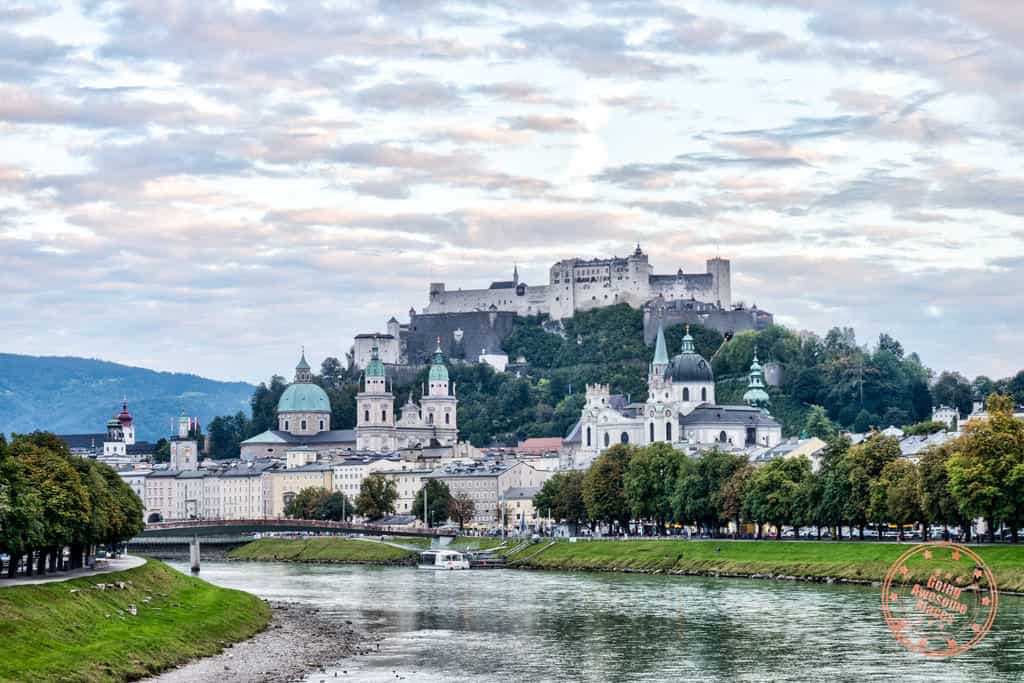
If you’re a photographer and want that perfect shot of the city, I highly recommend that you take a look at the Trip Planning Map above where I mark the spot where you’ll get the best view of Fortress Hohensalzburg, the river, and flanking sides of the city. During my research, it wasn’t obvious where I could get this shot but after talking to locals and doing my own scouting, I learned that it was this pedestrian bridge (not the one with the locks) further north along the river that I needed to be on.

For dinner, head to the historic Pitterkeller . On the outside it might not look it being below a modern office building/hotel but down below is Salzburg’s oldest beer cellar. A popular meeting spot for locals, this traditional restaurant has an extensive selection of popular Austrian dishes and first-class brews. This is also your chance to try the traditional Salzburger Nockerl which is an exquisite dessert that is light and fluffy, meant to evoke the memories of Austria’s snow capped-mountains.
Day 4 Summary
- Schloss Leopolskron
- Schloss Hellbrunn
- Schloss Fuschl
- St. Michael Basilica
- Breakfast – The Mozart Hotel – Included buffet breakfast.
- Lunch – Schloss Fuschl – This Luxury Collection hotel has a high-class restaurant that has a gorgeous view of the lake from the terrace.
- Dinner – Pitterkeller – Traditional Austrian restaurant located in Salzburg’s oldest beer cellar.
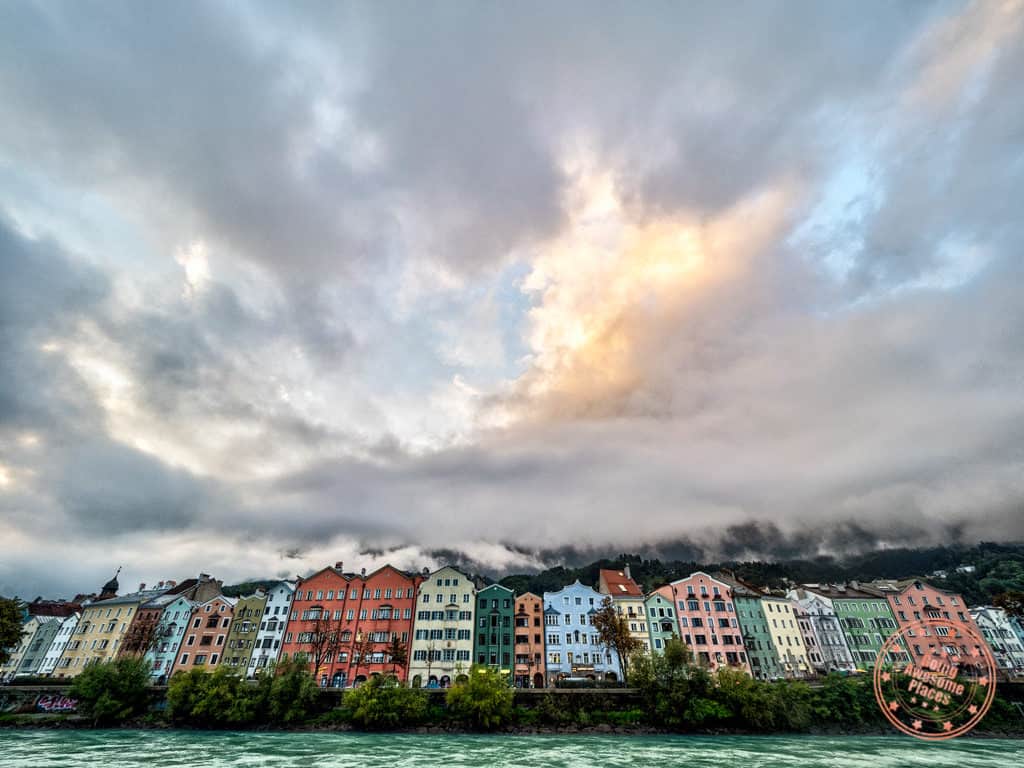
There’s one big thing that you haven’t been to explore yet and that’s the giant fortress that you’ve been looking at your whole time in Salzburg.
Start your morning early with another amazing breakfast at The Mozart Hotel.

As you make your way over, there’s a really great viewpoint that overlooks the old part of Salzburg and the fortress as well and again I’ve marked that on the Trip Planning Map as Kapuzinerkloster. There are hidden steps located on Steingasse that lead upwards. Keep going up and you’ll see the beautiful lookout.
If you want more details, the city of Salzburg has actually created a couple of curated walking tours including the Instagrammable Salzburg Footpath which is where I got the inspiration to do this.
When you’re back down, cross the river and make your way past the golden ball sculpture, Sphaera, and to the bottom of the hill where the funicular for Fortress Hohensalzburg is located. Thanks to your Salzburg Card , you’ll be able to bypass any line and head straight to the turnstiles where you tap you card and enter.

Depending on how much time you have, there is a million of things you can do once you’re in the castle. Beyond taking lots of photos once you get off the funicular, there’s the Fortress Museum, the apartments, Marionette Museum, the Altes Zeughaus for the castle’s arsenal, as well as the Museum of the Rainer Regiment. If you’re short on time though, you might only be able to head up to Observation Tower which has awesome 360 degree views of the castle, city below, and the countryside.
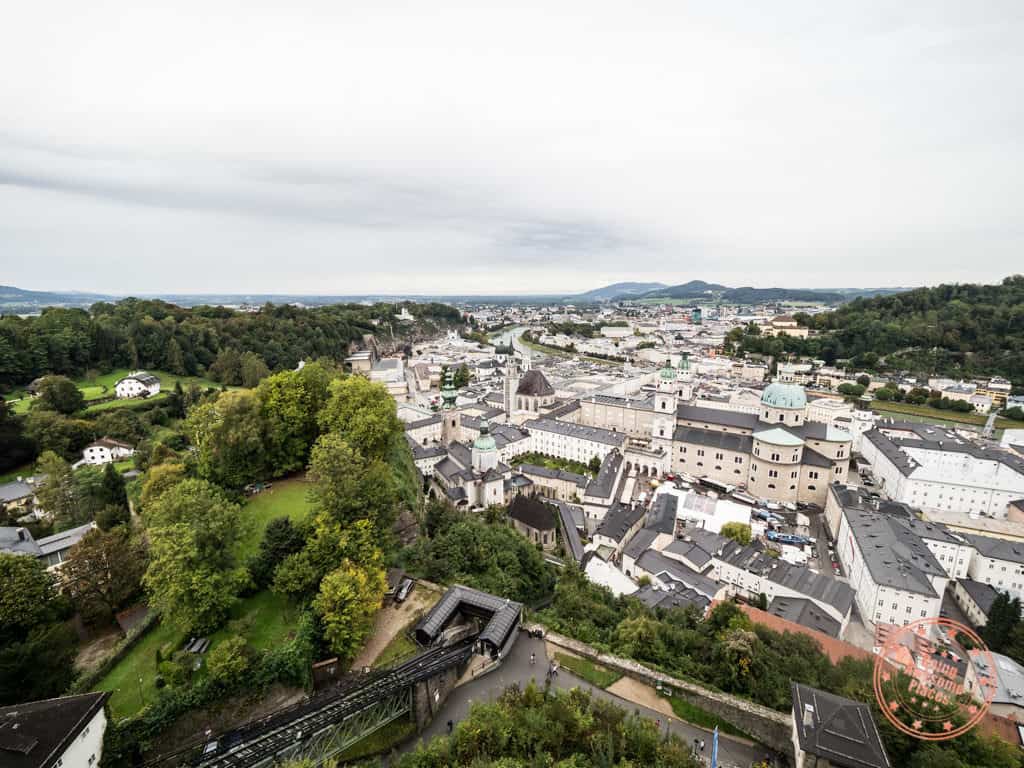
Check out of your hotel and cab back to the Salzburg Hauptbahnof to catch your 1 hour 45 minute train ride to Innsbruck. For lunch grab something quick at another favourite in the station, Anker.
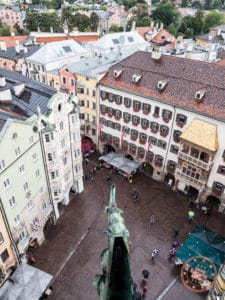
You’ll arrive in Innsbruck in the mid-afternoon which will be just enough time to check into your hotel and do a quick tour of the city which is quite walkable. There’s just enough time to climb up the twin-helix circular staircase of Stadtturn Town Tower which is a great orientation of town, see the Golden Roof of Innsbruck that you’ll come back to the next day, and also head to the river where you’ll see a row of colourful houses in the foreground to the giant mountains towering behind.
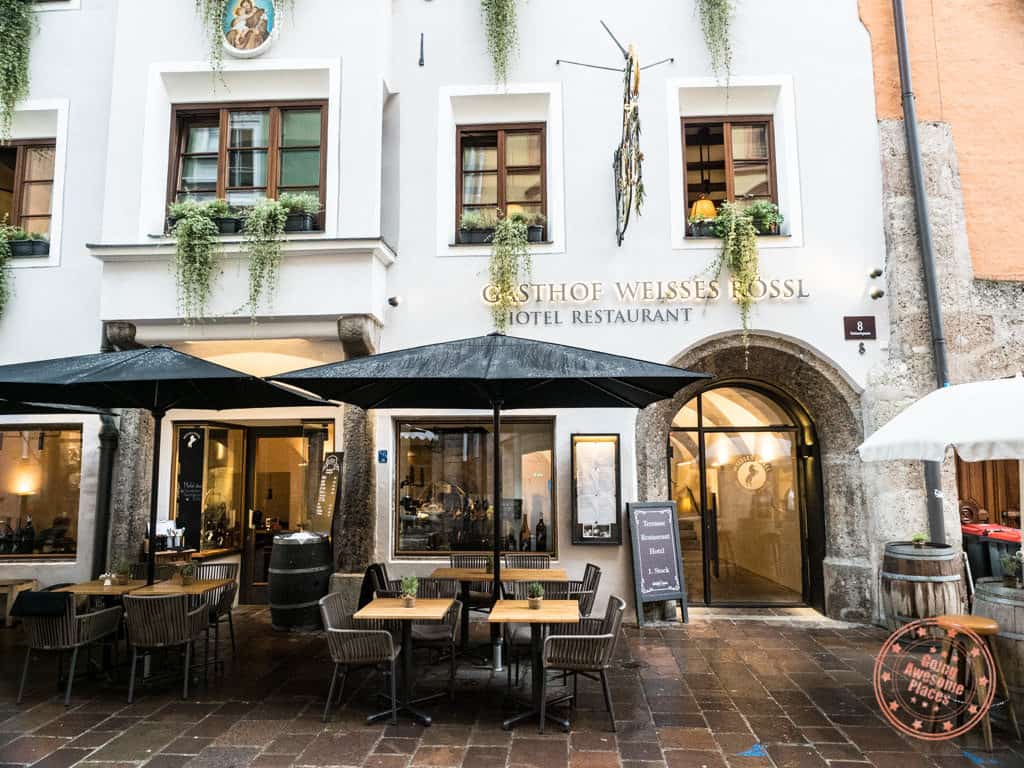
On your walk around of the city, make sure to stop by Tomaselli Gelateria which has a number of stores scattered around and the perfect little snack to stroll with.
A top restaurant that you must to try Innsbruck is Gasthof Weisses Roessl . Serving traditional Tyrolean dishes, this has to be one of my favourite ones from the whole trip for their service, quality, and ambiance. The dining rooms give off a homely cottage ambiance with their cedar wood decor and hunting trophies. You can tell that there’s a strong emphasis on authentic cuisine using fresh ingredients. Dishes you should definitely try are the Speckknödel (dumplings), spicy Tiroler Gröstl (sautéed meat and potatoes), sweet Kaiserschmarrn (famous minced pancakes), and Cordon Bleu (get the spicy one if they have it available). Also, we learned that there’s a Tyrolean cola here that’s quite unique called Tirola Kola.

Day 5 Summary
- Fortress Hohensalzburg
- Stadtturn Town Tower
- Golden Roof
- Colourful houses of Innsbruck
- Lunch – Anker – Grab a few pastries at the train station.
- Dessert – Tomaselli Gelateria – Superb gelato in Innsbruck.
- Dinner – Gasthof Weisses Roessl – Highly ranked Tyrolean cuisine restaurant in the heart of the city.

ADLERS HOTEL INNSBRUCK
Located a short walk from the train station, this hotel has superb views of the mountain from the panoramic windows. It’s modernly furnished and extremely spacious. Breakfast is extra but is quite amazing. Despite being closer to the train station, it is still quite walkable to the core and main attractions.

DAXBURG APARTMENTS
This is an Airbnb like apartment that have units that comprise of a sofa, dining area, fully equipped kitchenette including cooking appliances, private bathroom, and free wifi. Ski storage space is available on-site. Location is walking distance to all the major sights in town.

AC HOTEL INNSBRUCK
This is an incredibly central hotel 5 minutes away from Old Town. The hotel has panoramic views of the mountains as the city’s highest building, free wifi, and spacious rooms. This is also a Marriott property. “The room was larger than expected, well appointed and the staff were just delightful.”

HOTEL INNSBRUCK
Located on the bank of the river, you’re only 5 minutes away from Congress Centre and the cable car. This luxury hotel is known for their modern rooms, 2 spa areas, pool, and breakfast. “Really nice hotel, clean modern rooms with all comforts. Breakfast was really good. Staff very friendly and accommodating of all our needs.”
Innsbruck is mostly known for its winter sports being at the gateway to the Austrian Alps but there is plenty more to see that you might not make a direct connection with.
Armed with your Innsbruck Card, you’ll be able to take all local busses including the Sightseer line . This essentially operates like a hop-on-hop-off bus except it’s operated by the city. From Hauptbahnof, it’ll take 40 minutes to get to Bergisel Ski Jump while getting a nice bus tour of the city.
Innsbruck Card
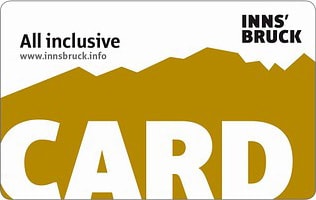
You shouldn’t be surprised that Innsbruck also has a card. Their card is quite robust as well in terms of its offerings of activities and transportation. The card gives you access to almost everything you’ll want to see in the city including the City Tower, Swarovski Crystal World, Bergisel Ski Jump, Imperial Palace, and Golden Roof. In addition, the biggest value comes from it also including the funicular and cable cars that’ll take you up the Nordkette mountain, the Sightseer bus, and all other public buses.
They are available in 24 (43 EUR), 48 (50 EUR), and 72 hours (59 EUR).

Bergisel Ski Jump is one example of star-architect’s Zaha Hadid work in the city. The newest iteration of the ski jump has a prime panoramic view of Innsbruck and if you’re lucky, you’ll be able to watch ski jumpers training here which is quite the delight. There’s a funicular that takes you to the base of the tower and from there an elevator up to the top. What makes this unique is that it’s quite rare to get this up close to the actual ski jump but as visitors you can get right up to the ramps themselves from the observation deck and cafe.
Address: Bergiselweg 3, 6020, Innsbruck
Hours: 9AM – 6PM June to October, 10AM – 5PM November – May. Closed at certain times for special events so check the hours .
Price: 9.50 EUR for adults, 8.50 EUR for seniors, 4.50 EUR for children 6-14. With the Innsbruck card, this is free.
Website: Bergisel Ski Jump
- During the summer (May to November), there is a ski jumping show at 10AM-12PM and 1-3PM (if weather and wind conditions allow).
SKIP THE LINE

Back in the city thanks to the Sightseer bus, it’s time to grab lunch at Stiftskeller . There’s a ton of history and tradition here as part of the Emperor’s palace and where royalty used to frequent. Inside you’ll find many charming features including frescos in the knights room, and another room that has the crests of all the nearby towns. While you’re here, try out the “national drink of Austria” which is called Almdudler – an alpine herbal soft drink that is kind of like ginger ale.
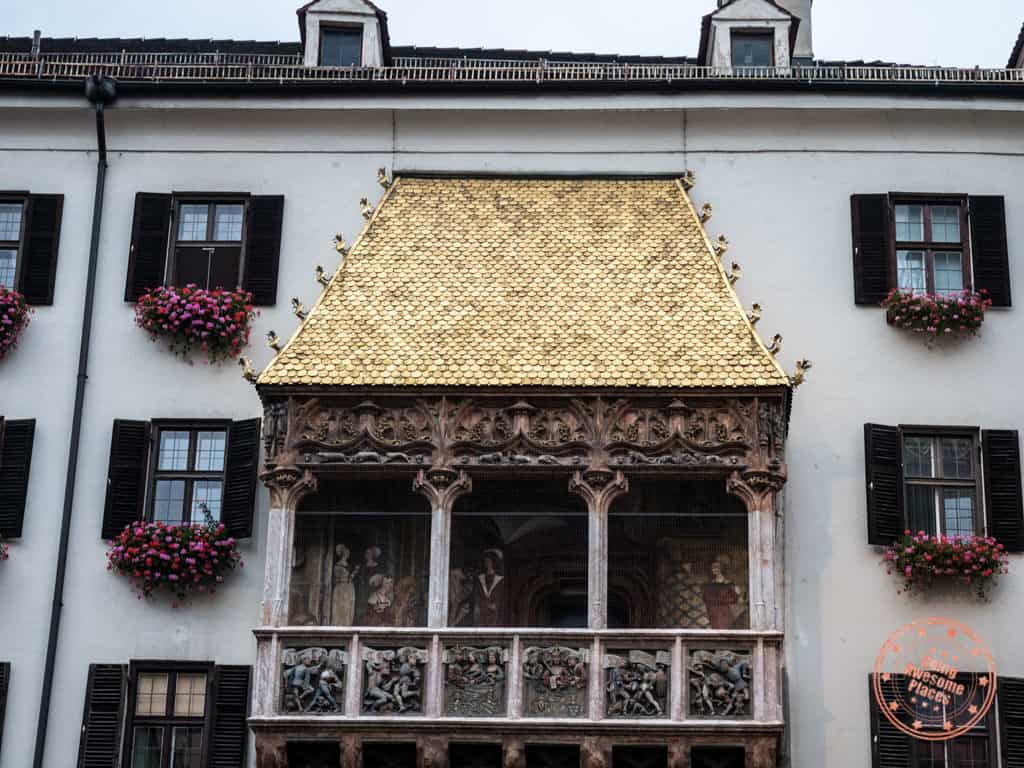
After lunch, this’ll be your chance to visit the Golden Roof museum, Hofkirche , and the Hofburg Imperial Palace . Through visits, you’ll begin to understand Emperor Maximillian’s importance to the city of Innsbruck and what makes him so adored and well-remembered.

The Hofkirche is a special gothic church that houses the emperor’s cenotaph. Also known as the Court Church, it was built from 1553 to 1563 after Emperor Maximilian I died in 1519. It’s one of the finest examples of royal court churches with the ornate black marble tomb, incredible detail in the reliefs, and also the flanking giant marble figures of the family and historical figures that pay their respects to him. When here, make sure to watch the multi-room presentation that tells the story of Maximillian.
Address: Universitätsstraße 2, 6020 Innsbruck
Hours: Mondays to Saturdays 9AM – 5PM, Sundays & Holidays 12:30PM – 5PM
Price: 7 EUR for adults, 5 EUR reduced price, children under 19 are free. No discount for Innsbruck Card.
Website: Court Church
READ THE REVIEW

Hofburg Imperial Palace stands alongside Schönbrunn Palace and the Imperial Palace of Vienna in terms of importance and impressiveness. Extensive work has been done to restore the interior and it shows with the chance to walk through the Giant’s hall, Empress Elisabeth Apartment. You really get a sense of the splendour and wealth of the Hapsburg dynasty with examples of furniture, tapestries, and art as you walk through the palace.
Address: Rennweg 1, 6020 Innsbruck
Hours: 9AM – 5PM everyday with last admission at 4:30PM
Price: 9.50 EUR for adults, 7 EUR for reduced admission. Free if you have the Innsbruck Card.
Website: Hofburg Innsbruck
- No photography allowed inside at all.
- Backpacks can be brought inside but you will have to wear it on your front.
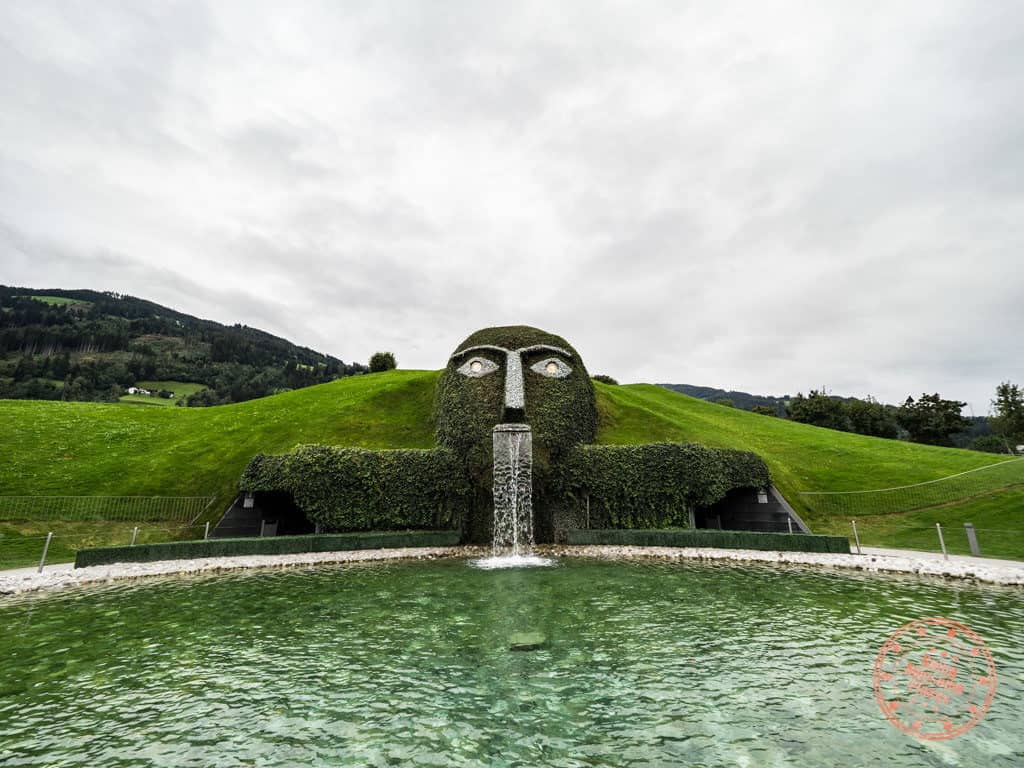
For the rest of the day, Swarovski takes centre stage. I certainly didn’t know this before coming to Austria but yes, Swarovski is Austrian and has its headquarters only 20 minutes outside of Innsbruck. Not only are the crystals made here but there is an entire world made from Swarovski bling.

When it comes to Swarovski Crystal Worlds (Kristallwelten) , think amusement park meets modern art museum. As you may have guessed, everything here is made with crystal. With the Tyrolean mountains as the backdrop, this is a wonderland that is unlike anything else I’ve seen.

There are two parts – the outdoor park and the indoor Chambers of Wonder. Outside, you’ll find a number of giant (pun intended) art installations. Front and centre is “The Giant” where the gaze of the crystal eyes of the mythical mountain creature greets you with a spouting of water from its mouth and into the pond. Outside you’ll also find a collection of pools, mazes, and mystical sculptures that’ll transport you to another land. The key highlight here is Crystal Cloud where 800,000 Swarovski crystals float in the sky like whisps of cloud and reflect down on a black Mirror Pool. This is also the perfect place for kids with their Play Tower.

When you delve inside to the Chambers of Wonder, you’ll encounter room after room of insane crystal artwork and installations by many well-known artists that’ll blow your mind. My favourites are the Crystal Dome, Into Lattice Sun, Transparent Opacity, and El Sol. Each room has a special message, is interactive, and contains many ways to interpret the work.
Inside you’ll also find Yayoi Kusama’s only permanent piece named “Infinity Mirror Room”.
Address: Kristallweltenstrasse 1, 6112 Wattens, Austria
Hours: Daily 8:30AM to 7:30PM (last entry at 6:30PM). In the winter (Nov 29 – Jan 6), hours are extended from 8:30AM – 9PM.
Price: 19 EUR for adults, 7.50 EUR for children 6-16) , free for children up to 5. Free with the Innsbruck Card.
Website: Swarovski Kristallwelten
- They offer a new audio guide that is location intelligent. As you walk into various areas of Crystal Worlds, audio will play. The cost is 2 EUR.
- Shuttle busses are available from Innsbruck with pick ups at Hauptbahnof and Congress/Hofburg. Check the full schedule . Cost is 9.50 EUR for round trip or 5 EUR one way. Children under 16 are free. The shuttle is free if you have an Innsbruck Card.
- Crystal Worlds is free if you’re just interested in visiting The Giant in front, the souvenir shop, or to have dinner at Daniels Kristallwelten.
- Combo tickets that include shuttle and admission can be purchased here in advance.
BUY TICKETS
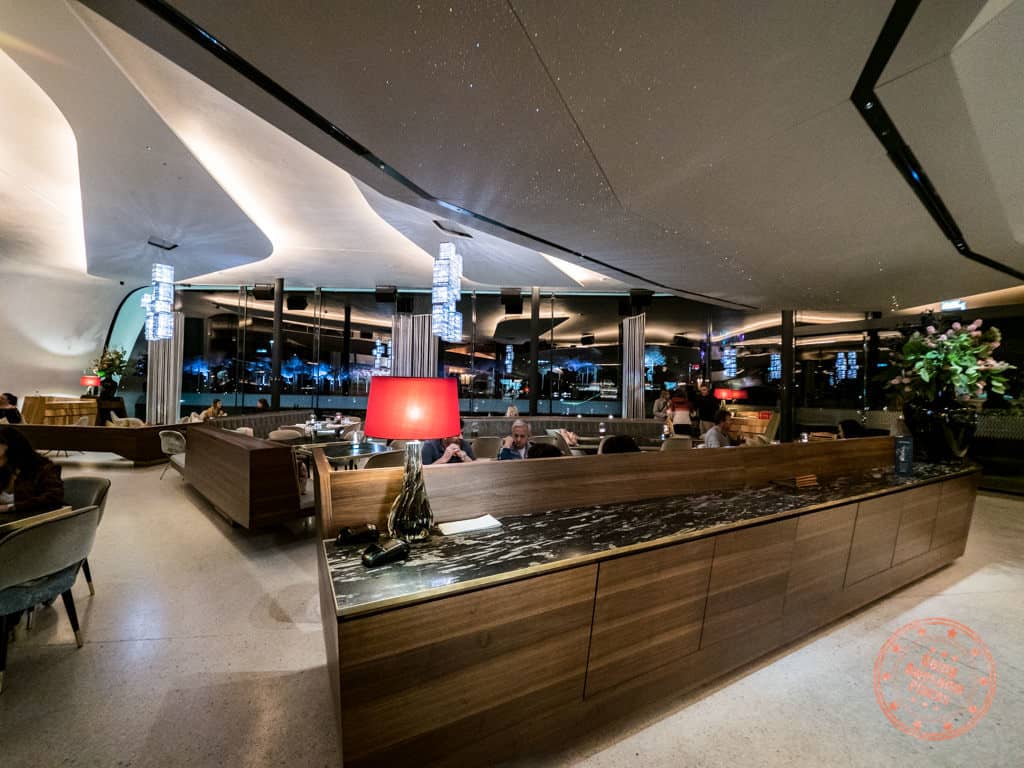
Crystal Worlds also has its own on-site restaurant, Daniels Kristallwelten , and they are well-known for their gourmet cuisine and a perfect pairing after you’ve explored the grounds. They serve a combination of international, regional, and fresh seasonal cuisine plus they make their own pastries. On Thursdays they also have DJ night which made for quite the ambiance amongst the crystal-themed restaurant.
Day 6 Summary
- Bergisel Ski Jump
- Hofburg Imperial Palace
- Breakfast – aDLERS Hotel – Buffet breakfast.
- Lunch – Stiftskeller – Traditional Austrian restaurant entrenched with history. Their Spaetzl (Austrian mac & cheese) was excellent!
- Dinner – Daniels Kristallwelten – International restaurant right on the grounds of Crystal Worlds.
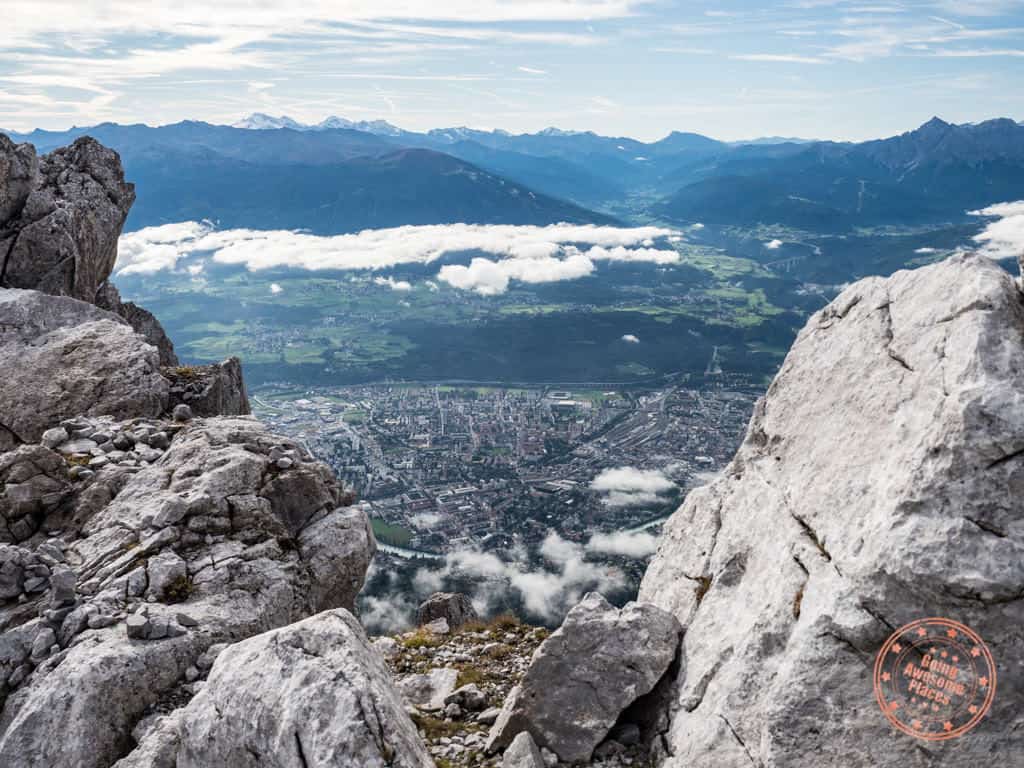
So far you’ve done most of the main sights in the city but you have yet to make your way up to the mountains that you’ve been staring at for the past few days. Today’s the day to head up to the Nordkette which has almost a cult status amongst locals and visitors because of its mesmerizing beauty and dynamic contrasts from the ground below.
Mere minutes away from the downtown core, you can get away from the city and ascend above the clouds into a colourful array of greenery, sharp rock faces, and visibility as far as the eye can see. It’s where the urban meets the outdoors.
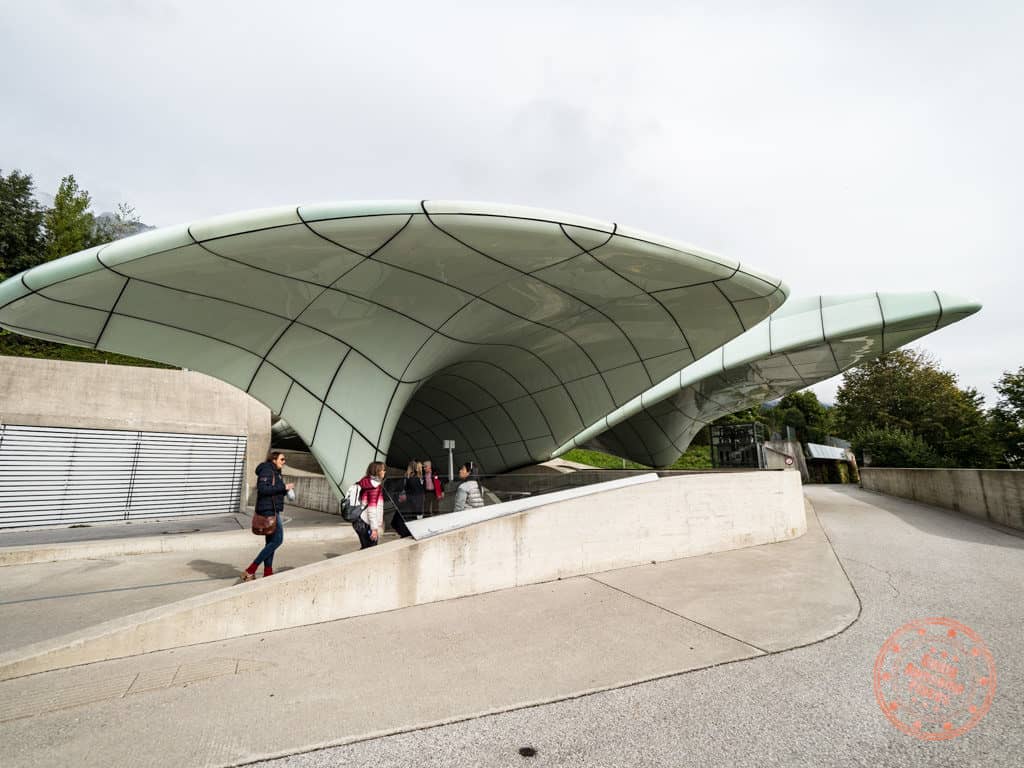
What’s most impressive is how easy the city has made it to get from ground to peak. Right in the city is the station and next to the Hofburg and Congress Center is an underground station which is the start of the Hungerburgbahn funicular. There are 4 stops in total and this takes you across the river, over the Alpenzoo, and eventually to the final Hungerburg stop. This is the first phase.

From here, you switch over to the Seegrubenbahn cable car/gondola. This takes you up to 1,905 metres above sea level at a midway point called Seegrube. Here you’ll find a restaurant, general facilities, the way to the Path of Perspectives hike which ends in a gorgeous cantilevered viewing platform that juts out from the mountain. This is second phase.

For the final phase, you’ll need to connect onto the Hafelekar cable car and go all the way up to 2,556 metres. It’s here that you’re finally near the top of the Nordkette mountains. There are view points galore here. On one side you can look down and see the entire city below. Go to the back side and you’ll see a dazzling depth of mountains that start with rugged rock faces and alpine trees below. To one side of the range you can make your way to the Hafelekar ski-run which is one of the world’s steepest in the world. This is also the start of a via ferrata route and you might catch a few people making their way up. On the other side is a short hike to the very peak of the mountain and should only take you 10-15 minutes.
Address: Congress Station – Rennweg 3, 6020 Innsbruck, Austria
Hours:
- Hungerburgbahn – Weekdays 7:15AM – 7:15PM, Weekends 8AM – 7:15PM, departs every 15 minutes
- Seegrubenbahn – Daily 8:30AM – 5:30PM, departs every 15 minutes
- Hafelekarbahn – Daily 9AM – 5PM, departs every 15 minutes
Price: These are round trip tickets from the city to Hafelekar – 38 EUR for adults, 34.20 EUR for seniors and students, 30.40 EUR for youth 17-19 and 22.80 EUR for children 7-16. Children 6 and under are free. However, if you have an Innsbruck card, this is all free.
Website: Nordkette
- Is the hiking strenuous? – No, if you’re not doing any of the long hikes and sticking to the peak of Hafelekar and Path of Perspectives, you won’t have too much of a challenge. I’d say it’s for low to medium fitness levels.
PURCHASE TICKET

After your mountain adventures, head back to your hotel and you have just enough time to grab lunch at the aDLERS Hotel restaurant. From there, walk to Innsbruck Hauptbahnof and catch the Railjet back to Vienna which should take 4 hours and 15 minutes.
Upon arrival in Vienna, catch an Uber over to your hotel, Hot e l Daniel , and settle in.
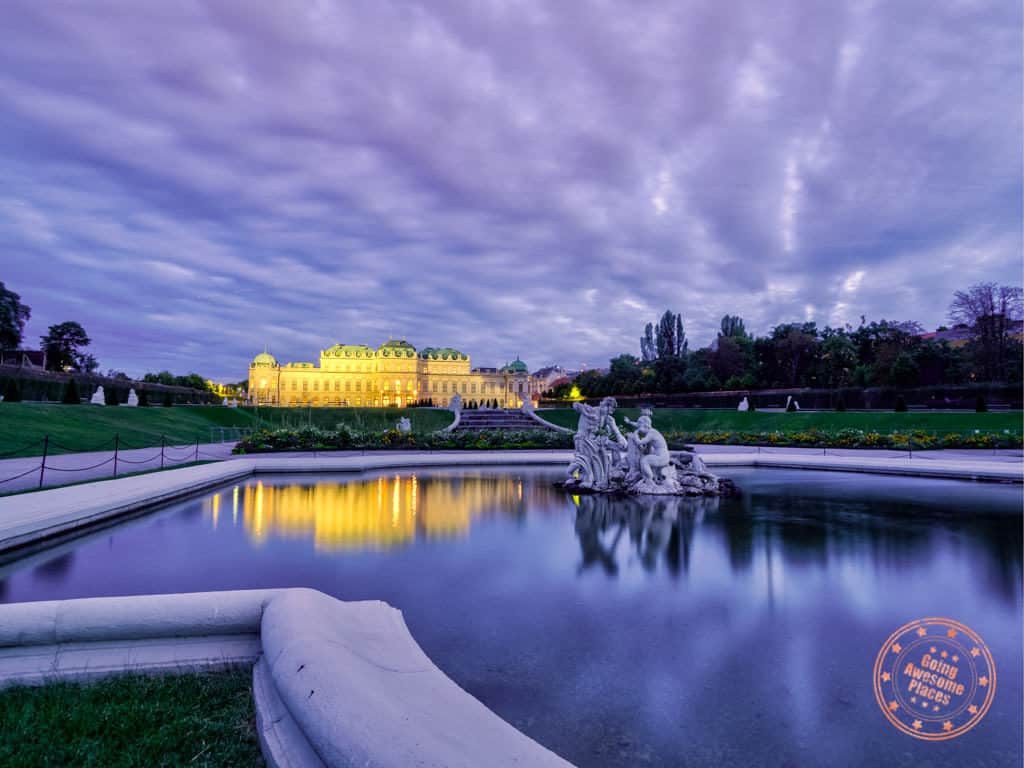
Since it’ll be perfect for sunset, you’re located perfectly to visit Belvedere Palace one last time. Take sunset photos here and either walk or take a cab over to your dinner spot.
So far you’ve had a lot of amazing traditional Austrian foods but one thing you haven’t done yet is have that epic-sized schnitzel. Now many guide books will tell you to go to Figlmuller but all the locals told us that it’s way too touristy there. That’s why we ended up at the snazzier Meissl & Schadn where actual local Viennese go to for their schnitzel.
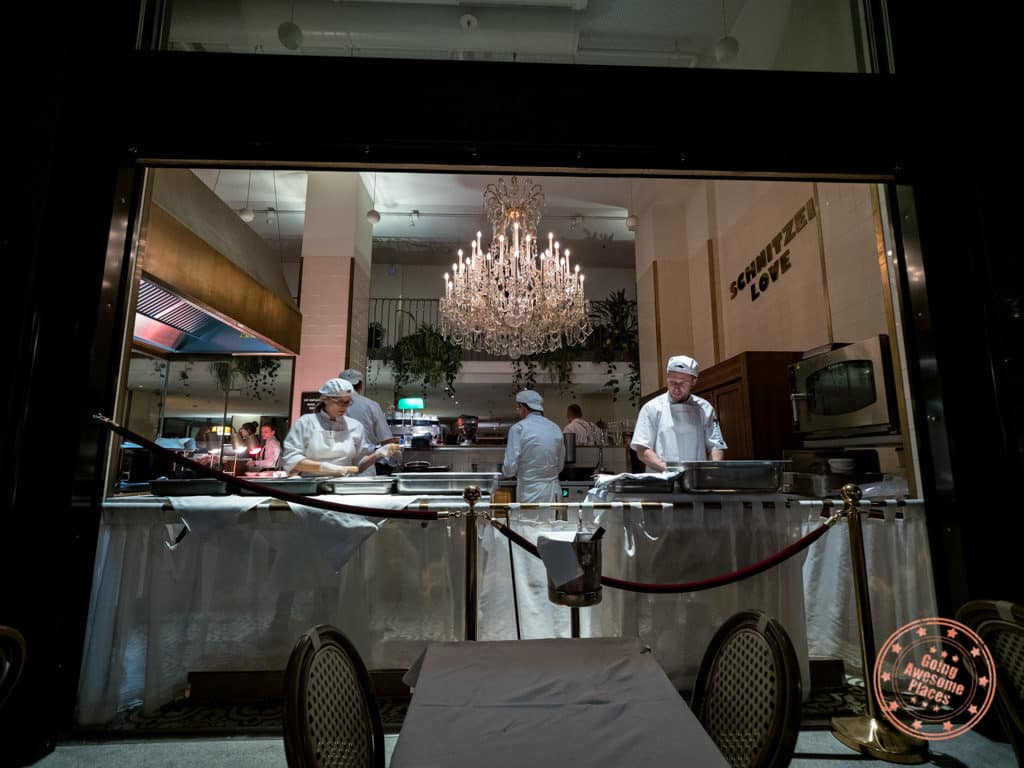
With #SchnitzelLove as their motto, I was quite amused that from the street you can watch the chefs pound and prepare the veal before dunking it in egg yolk and smothering it with batter. Okay fine, it’s a little bit touristy but once you’re inside you definitely don’t get that feeling.
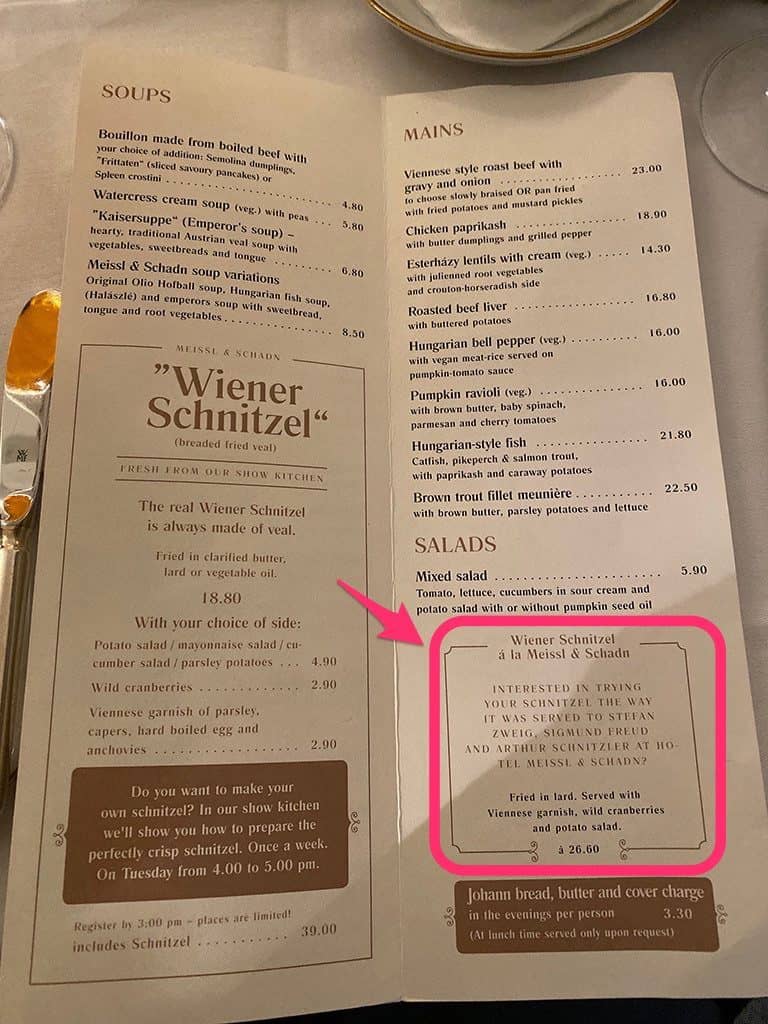
While there is quite the selection on the menu, ultimately the thing to order here is the wiener schnitzel prepared the way Sigmund Freud had it all those many years ago. What is unique at this restaurant is that you can actually choose what type of oil you’d like your schnitzel fried in and also choice in side. The full Sigmund Freud combo gives you all the sides and is fried in lard (when in Vienna right?).
Holy moly this schnitzel is massive and is literally the size of my face, if not larger!
Head up stairs at the same hotel and have a drink (or two) at the Grand Etage Rooftop Restaurant where you’ll be able to lounge on comfy couches in the open air to reminisce how incredible your trip to Austria has been.
Day 7 Summary
- Breakfast – aDLERS Hotel – Buffet breakfast
- Lunch – aDLERS Hotel – They offer a set-menu lunch here that is very good and affordable.
- Dinner – Meissl & Schadn – One of the top restaurants to have gigantic schnitzel in Vienna.
- Night cap – Grand Etage Rooftop Restaurant – Superb rooftop bar in the same hotel that Meissl & Schadn is located.
If you’ve seen my 14 Day Greek Islands Itinerary , 3 Day Niagara Falls Itinerary , Richmond BC 4 Day Itinerary , or Best Ramen in Tokyo , you’ll know that I’m a big fan of trip planning maps especially for when I’m on the road. I always have one prepared before I travel so that I can quickly pull them up for reference. With this trip planning map, you’ll be able to take this to go and have it ready for you on your phone or use it as part of your itinerary planning.
PRO TIP: View the Austria 7 Day trip planning map in full screen and create a copy (this step is key) for yourself. Make tweaks for your own trip and in Google Maps, you’ll be able to view it by going into the menu, selecting “My Places” and the “Maps” tab.
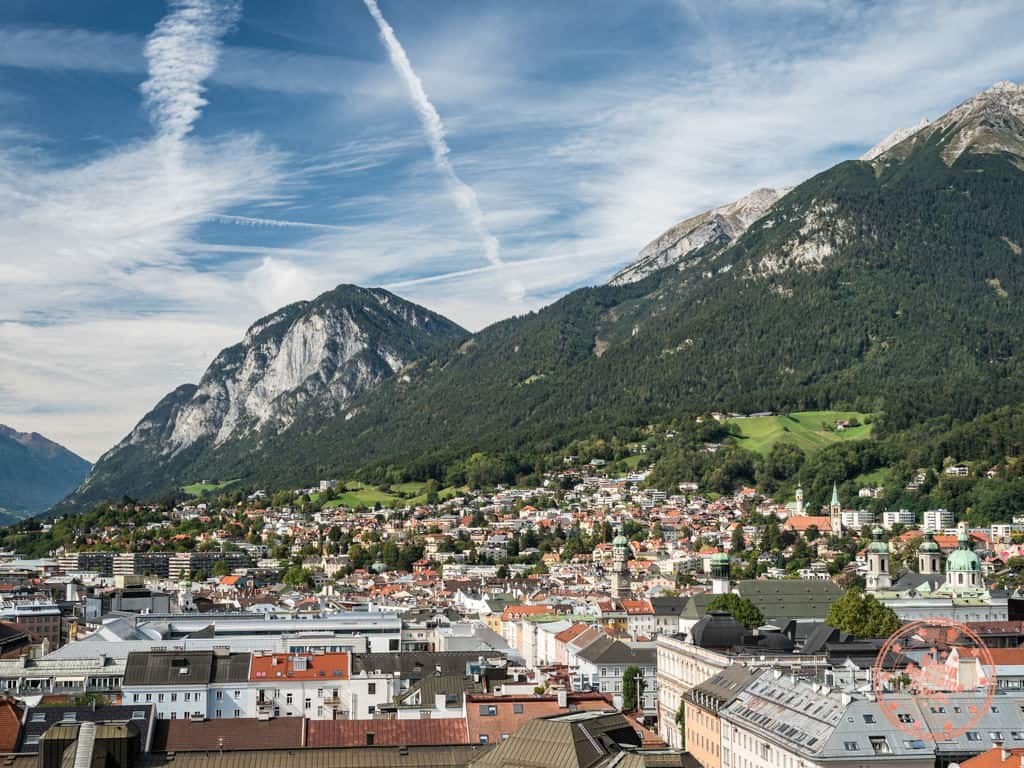
Money – Credit card is widely accepted all around Austria as you’ll find very few places that only accept cash. ATMs and moneychangers are also accessible in each city but the usual caution applies in terms of making sure you don’t ripped off by the exchange rate for Euros. Loose change is certainly useful for things like tips. Normally in European cities, coins are good to have for bathrooms but did not any that were paid on this particular trip.
When is the best time? – The best time to go to Austria will largely depend on the type of activities that you want to do in the country. For instance, if you’re looking to take advantage of their wealth of mountains and use Innsbruck as a launching pad for skiing or snowboarding, the winter months between December – March are amazing. If you’re coming to Austria for hiking, city exploring, and great weather, come when it’s not as hot and the crowds aren’t as thick so that would be in the shoulder months between May – June and September – October .
Getting here – The primary way into the country is through the capital of Vienna (VIE) where most international flights will arrive in which is why it’s the perfect place to start your trip. Salzburg (SZG) and Innsbruck (INN) have their own airports but are served regionally but may be worth looking into if you’re coming in from another European city. The European rail network is also an option and is quite efficient if you’re continuing your trip from one of the neighbouring countries (Italy, Switzerland, Germany, Czech Republic, Hungary, Liechtenstein, Slovakia, and Slovenia). For budget travellers, you may want to look at Flixbus as well.
How do I get around the city? – All three cities visited in this itinerary are very similar so I’ll speak to them as a collective. There’s a fairly comprehensive bus network that’s handy to use when visiting the city but not absolutely necessary and the main reason for that is because everything is quite walkable in Vienna, Salzburg, and Innsbruck. When tight on time, you can always take a taxi or Uber but walking is the best way around. Vienna has more sprawl naturally so luckily they have a local train system you can take to get to farther reaching places like Schönbrunn. In all cases, they all have their own city card ( Vienna City Car d, Salzburg Card , and Innsbruck Card ) and each one covers all transportation for the number of hours that you purchased the cards for. Renting a car isn’t necessary in these cities unless you’re doing a road trip because exploring within the city is easy and going between cities is convenient by rail.
Where should I stay? – The most comprehensive platform for bookings based on personal experience was Booking.com . They had everything from hotels, hostels, and guesthouses and we always managed to find an awesome place for a great place. As an alternative, there’s also Expedia and Airbnb .
Do I need travel insurance? – As always, travel insurance is highly recommended. My philosophy is that you want to make sure you’re covered in case the unknown happens. Make sure to read our guide on choosing the right travel insurance for you. Overall, HeyMondo has the best balance of price and coverage.

From start to end, my trip to Austria truly opened my eyes. If I’m being candid, the general feeling I get from people when I ask about Austria is that there’s always the thought of “we’ll go there someday” or “isn’t it like Germany?”. This couldn’t be further removed from the truth and I got to see this first hand.
First, Austrians are fun, friendly, and have some spunk about them. What I mean by that is that you come here expecting it to be like Germany (My German friends, hopefully you don’t take this the wrong way!) which is very serious, orderly, and Vulcan if that makes sense. Austrians have a little bit of that and of course they speak German but whether in mannerism or culture, or food, the only way I can describe it is that they’ve brought in a little bit of Italian, Hungarian, Czech, Swiss, Slovakia, and Slovenia. They’re Germanic but with attitude and spunk.
I then think about each of the cities we visited and they were so incredibly dynamic and different and each with its own surprises. With Vienna, there were the grand palaces, incredibly art galleries, and heartbeat of music but I didn’t expect the coffee houses or their love for cakes. In Salzburg, we saw a lot of Mozart and the Sound of Music of course but I didn’t expect to find a via ferrata in the city or the trick fountains Hellbrunn. Then we have Innsbruck which I knew to be a place for winter sports but I didn’t expect to learn about Emperor Maximilian, Tyrolean culture, and Swarovski.
Austria may not be on the top of your list but it really should be. The whole country deserves at least 7 days if not more because I didn’t even get to go to places like Hallstatt or delve into the mountains to do more of the outdoor adventure stuff I love doing.
What you need to prepare before you go:
- Buy a Vienna City Card or Vienna Pass if you really want to maximize your time in the city
- Book your Mozart Dinner Concert way ahead
- Buy a Salzburg Card
- Buy an Innsbruck Card
- Make sure you have your hotels booked through Booking.com and train tickets via ÖBB .
Austria is a trip you’ll never forget.
Got questions for your own trip to Austria? Let me help by simply dropping a comment down below !
- Where to stay in Vienna
- Best SIM card for travel in Europe
- Cheapest way to travel Europe on a budget
- Best photography spots in Prague
- 2 days In Athens – itinerary for what to do and where to stay
- All of our Austria articles
If you’re in the process of planning your trip and putting together your itinerary, these are genuinely the best resources that the Going Awesome Places team stands by 100% .
Credit cards: Don’t get burned by hidden fees on top of terrible exchange rates. When we travel now, we use the Wise Card . Simply load it with the currency you need before you go and use it as a regular VISA or their digital wallet card. Use their free app to track how much you have and top up when you need to.
Flights: Of all the booking search engines, Skyscanner is the most helpful and easy to use thanks to their Everywhere feature . Kayak is also another that’s we will often check as well.
Car Rental: If you’re looking to save money, these car rental coupon codes will be a true game-changer. Otherwise, DiscoverCars and RentalCars are great places to start.

Airport Parking: You’ll need a spot to leave your car at the airport so why not book a spot at a discount. Use code AWESOME7 to get at least $5 off at Airport Parking Reservations or Park Sleep Fly packages.
Wifi Hotspot: We’ve been a huge fan of wifi hotspot devices such as PokeFi (use code GAP24300 ) because their rates are are hard to beat and it works globally. Solis is another that we recommend. Pros are that you can share the wifi with your whole group but cons are that you have to invest in a device and you have to charge it every night.
eSIM: Lately, we’ve really loved using eSIMs. The one we find using the most is Airalo . Save money by getting region-specific eSIMs and use referral code WILLIA9500 to get $3 USD credit on your first purchase. Ubigi is another one that we’ve had success with where they uniquely offer 5G coverage. Use code AWESOME10 to save 10% on your first order. The newest eSIM we’ve tried is KnowRoaming that sneakily has great rates on unlimited plans. We’ve partnered with them to give you a custom code GAP10 to save you 10%.
Hotels: Our go-to is Booking.com because they have the best inventory of properties including hotels and B&Bs plus they have their Genius tier discounts . Expedia is also worth using especially with their One Key rewards program which is basically like cash. The exception is Asia where Agoda always has the best prices. Always do a quick check on TripAdvisor as well.
Vacation Rentals: Your first instinct will be to check Airbnb but we always recommend checking VRBO as well if you’re looking for a vacation rental (now eligible for One Key ).
Tours: When planning our trips, we always check both Viator and GetYourGuide to at least see what’s out there in the destination that we’re going to. They often have different offerings and prices so check both.
Travel Insurance: Learn how to buy the best travel insurance for you. This isn’t something you want to travel without.
- HeyMondo – Popular insurance provider for frequent travelers and comes with great coverage and special perks.
- RATESDOTCA – Search engine Canadians looking for the cheapest insurance including multi-trip annual policies.
- SafetyWing – A perfect fit for long-term nomads.
- Medjet – Global air medical transportation.
- InsureMyTrip – Best for seniors, families, and those with pre-existing conditions.
If you need more help planning your trip, make sure to check out our Travel Toolbox where we highlight all of the gear, resources, and tools we use when traveling.
This trip was in collaboration with Advantage Austria , Vienna Tourist Board , Salzburg.info , and Innsbruck Tourism but all opinions are our own.
- Facebook 29
- Pinterest 393
About William Tang
William Tang is the Chief of Awesome behind the award-winning Going Awesome Places which is focused on outdoor adventure, and experiential travel. His true passion lies in telling stories, inspiring photography and videos, and writing detailed itineraries and travel guides. He is a member of Travel Media Association of Canada (TMAC), Society of American Travel Writers (SATW), Adventure Travel Trade Association (ATTA), and Travel Massive. He has also been featured in publications such as Reader's Digest, Entrepreneur, Men's Journal, and Haute Living. Make sure to learn more about William Tang to find out his story and how Going Awesome Places started.
Find us on social media
- Today's deals
- Search travel guides

7 Days in South Korea Itinerary: Exploring the Best Domestic Travel Destinations
If you’re considering a trip to South Korea , you’re in for an unforgettable adventure! From the bustling streets of Seoul to the tranquil beauty of Jeju Island , South Korea offers a blend of modernity and tradition that you won’t find anywhere else. This 7-day itinerary will help you discover the best domestic travel destinations in South Korea, ensuring you get the most out of your visit.
Let’s dive into an organized, efficient, and enthralling journey!
Day 1: Arrival in Seoul
Your adventure begins in Seoul , South Korea’s vibrant capital. Upon arrival at Incheon International Airport , take a moment to soak in the modernity and pace of this dynamic city. Check in at your preferred accommodation and start exploring the heart of South Korea.
Highlights of Day 1:
- Gyeongbokgung Palace: Begin your journey with a visit to Gyeongbokgung Palace, the largest and most iconic of Seoul’s Five Grand Palaces. Explore the stunning architecture and take part in the changing of the guard ceremony.
- Insadong: Head over to Insadong for a mix of tradition and modernity. This area is known for its array of antique shops, art galleries, tea houses, and street food.
- Bukchon Hanok Village: Wander through this traditional Korean village and get a glimpse of how Koreans lived during the Joseon Dynasty. The preserved hanoks offer picturesque views and a cultural experience.

Day 2: Exploring More of Seoul
Dedicate your second day to discovering Seoul’s modern side and visiting some of its top attractions.
Highlights of Day 2:
- N Seoul Tower: Take a cable car up to Namsan Mountain to visit N Seoul Tower. Enjoy panoramic views of the city, especially at sunset.
- Myeongdong: Dive into shopping heaven at Myeongdong . This bustling district is perfect for cosmetic shops, fashion boutiques, and delicious street food.
- Dongdaemun Design Plaza: Stop by the iconic Dongdaemun Design Plaza (DDP) , a major urban development landmark. Explore its futuristic design, exhibitions, and events.
Day 3: Day Trip to Suwon
On the third day, take a short trip to Suwon, which is about 30 kilometers away from Seoul. Suwon is known for its historical landmarks and unique attractions.
Highlights of Day 3:
- Hwaseong Fortress: Visit the majestic Hwaseong Fortress, a UNESCO World Heritage site. Walk along the walls and learn about its historical significance.
- Korean Folk Village: Experience traditional Korean culture and lifestyle at the Korean Folk Village. This open-air living museum showcases reconstructed traditional houses, and you can participate in traditional crafts and activities.

Day 4: Discovering Jeju Island
Jeju Island, also known as the “Island of the Gods,” is a must-visit. A short flight from Seoul will take you to this beautiful volcanic island renowned for its natural wonders.
Highlights of Day 4:
- Hallasan National Park: Hike to the summit of Hallasan National Park, South Korea’s highest peak. The trail offers stunning views and a chance to explore unique volcanic formations.
- Seongsan Ilchulbong (Sunrise Peak): Visit this UNESCO World Heritage site and hike up for spectacular sunrise views. The crater, formed by a volcanic eruption, is a sight to behold.
- Manjanggul Cave: Explore the longest lava tube in the world at Manjanggul Cave. The cool, dark tunnels are filled with interesting volcanic features.
Day 5: Jeju Island Continued
Continue your exploration of Jeju Island with more of its unique attractions and scenic spots.
Highlights of Day 5:
- Jeongbang Waterfall: Visit Jeongbang Waterfall, one of the few waterfalls in Asia that falls directly into the ocean. It’s a breathtaking spot for photography.
- Loveland: Explore the quirky and unique Jeju Loveland, a park showcasing erotic sculptures and exhibits. This adult-themed park provides a fun and memorable experience.
- Jeju Folk Village Museum: See traditional Korean village life at the Jeju Folk Village Museum. The museum features authentic thatched-roof houses and a glimpse into Jeju’s history and culture.

Day 6: Adventure in Busan
Return to the mainland and head to Busan , South Korea’s second-largest city. Known for its beaches, temples, and seafood, Busan offers a mix of relaxation and adventure.
Highlights of Day 6:
- Haeundae Beach: Relax at Haeundae Beach, one of Busan’s most famous beaches. Enjoy sunbathing, swimming, and water sports.
- Haedong Yonggungsa Temple: Visit the stunning Haedong Yonggungsa Temple, set on a cliff overlooking the sea. This Buddhist temple is known for its beautiful coastal views.
- Gamcheon Culture Village: Explore the vibrant and colorful Gamcheon Culture Village with its maze-like streets, murals, and quirky art installations.
Day 7: Concluding Trip in Busan
Conclude your South Korean adventure with another day in Busan, hitting some last-minute spots before heading back.
Highlights of Day 7:
- Jagalchi Fish Market: Dive into a sensory experience at Jagalchi Fish Market, the largest seafood market in South Korea. Sample fresh seafood dishes and enjoy the bustling atmosphere.
- Yongdusan Park & Busan Tower: End your trip with a visit to Yongdusan Park and ascend Busan Tower for panoramic views of the city. It’s a perfect spot for reflection and relaxation.
- BIFF Square: Walk around BIFF Square, the Busan International Film Festival area, bustling with street food vendors, theaters, and shops.
You may also like

Uncover the Best Things to Do in Kuala Terengganu: A Complete Travel Guide

Discover the Best Time to Visit Istanbul: A Seasonal Travel Guide for an Unforgettable Adventure

Nighttime Wonders in Taipei: Exploring the Best Spots After Dark

Discover the Spiritual Essence of Sensoji Temple: A Complete Travel Guide to Tokyo's Most Famous Sanctuary

Discovering Mecca: Top Things to Do in Islam's Holiest City
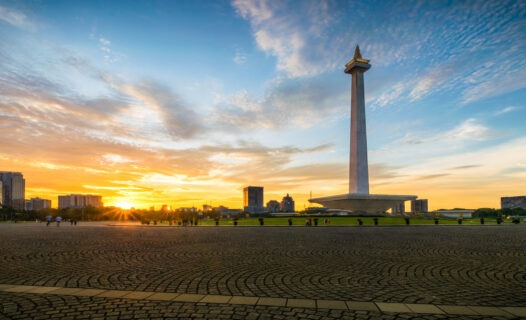
Unleashing Jakarta: The Ultimate Guide to Crafting Your Dream Tour Package

Unveiling the Tranquil Oasis: A Complete Travel Guide to Meiji Shrine in Tokyo

Exploring Japan at High Speed: A Comprehensive Travel Guide to the Tokaido Shinkansen

Discover Unmissable Things to Do in Thailand: A Complete Travel Guide

Uncover Rome's Wonders: Top Attractions and Hidden Gems You Must Visit

Discover the Magic: Top Must-Visit Destinations in India for an Unforgettable Journey
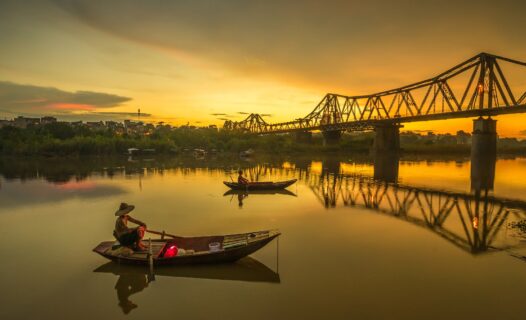
7 Days in Northern Vietnam Itinerary: Explore the Wonders of Hanoi, Halong Bay, and Sapa

Discover Abu Dhabi on a Budget: Top Free Things to Do in the City of Rich Heritage and Modern Wonders

Exploring InterContinental Bangkok Sukhumvit: A Premier Destination for Luxury Stay and Urban Adventure

Exploring Kuala Lumpur's Next-Gen Theme Parks: Thrilling Reviews and Must-Visit Spots

Exploring Joshua Tree: The Ultimate Guide to Adventure and Serenity in California's Desert Oasis
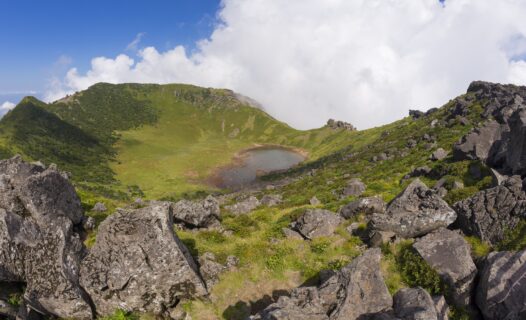
Exploring Jeju Island: A Seasonal Guide to Jeju's Temperatures and Weather
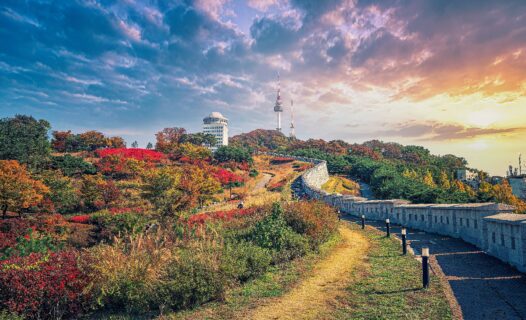
Discovering Seoul Forest: A Serene Urban Escape in the Heart of Seoul

Uncover Indonesia: A Traveler's Guide to Authentic Souvenirs and Unique Keepsakes

Top Must-Buy Souvenirs and Unique Finds in Penang

Discover vibrant attractions, hidden gems, and local culture with our comprehensive travel guide to Kuala Terengganu. Perfect for every traveler.

Find out the best time to visit Istanbul in this comprehensive travel guide. Learn about Istanbul's weather by month, top tourist attractions, and seasonal highlights to plan your perfect trip.

Explore Taipei's vibrant nightlife with our ultimate guide to the best spots after dark. From bustling night markets to rooftop bars, discover what makes Taipei a must-visit after dark.

Discover the Spiritual Essence of Sensoji Temple: A Complete Travel Guide to Tokyo's Most Famous Sanctuary
Explore Sensoji Temple in Asakusa, Tokyo. A complete travel guide covering the temple's history, architecture, festivals, nearby attractions, and visitor tips.

Discovering Mecca: Top Things to Do in Islam's Holiest City
Unveil the top attractions and activities in Mecca, from visiting the Kaaba and Masjid Al-Haram to exploring local markets. Your ultimate travel guide to Mecca.

Explore the best of Jakarta with our comprehensive travel guide. Discover top attractions, hidden gems, and expert tips for a memorable vacation.

Discover the serene beauty and rich cultural history of Meiji Shrine in Tokyo. This complete travel guide offers practical tips, historical insights, and must-see attractions.

Discover the excitement of traveling on Japan's Tokaido Shinkansen. This comprehensive guide covers routes, stations, tips, and must-see destinations to enhance your journey.

Explore the top attractions, activities, and must-see places in Thailand. This travel guide offers insights into Thailand's adventures, culture, and more.

Uncover Rome's Wonders: Top Attractions and Hidden Gems You Must Visit
Explore the best things to do in Rome from iconic landmarks to hidden gems. Our guide covers top attractions, hidden treasures, and travel tips to make your visit unforgettable.

Discover the magic of India with our travel guide. Explore top must-visit destinations, unique cultural experiences, and natural wonders for an unforgettable journey in India.

Explore the best of Northern Vietnam in 7 days with our detailed itinerary. Discover Hanoi's vibrant culture, cruise Halong Bay, and trek Sapa's stunning landscapes. Plan your adventure now!

Explore the best free things to do in Abu Dhabi, including cultural landmarks, parks, and more. Discover how to enjoy this city without spending a dime!

Discover the luxury and urban adventure at InterContinental Bangkok Sukhumvit. This guide provides everything you need to know for a memorable stay, from dining and amenities to local attractions.

Exploring Kuala Lumpur's Next-Gen Theme Parks: Thrilling Reviews and Must-Visit Spots
Discover Kuala Lumpur's top next-gen theme parks with our guide. Get reviews, tips, and must-visit attractions for a perfect family day out!

Exploring Joshua Tree: The Ultimate Guide to Adventure and Serenity in California's Desert Oasis
Discover the best activities, attractions, and travel tips for visiting Joshua Tree National Park. From hiking trails to stargazing spots, plan your ultimate adventure in California's desert oasis.

Exploring Jeju Island: A Seasonal Guide to Jeju's Temperatures and Weather
Discover the best time to visit Jeju Island by exploring its seasonal temperatures and weather conditions. Plan your perfect Jeju adventure with our comprehensive guide.

Explore the wonders of Seoul Forest with our ultimate travel guide. From picturesque pathways to engaging activities, find everything you need to plan your visit.

Uncover Indonesia: A Traveler's Guide to Authentic Souvenirs and Unique Keepsakes
Discover the best souvenirs to bring back from Indonesia. From traditional handicrafts to modern art, find out what makes Indonesian keepsakes truly unique.

Discover the top must-buy souvenirs and unique finds in Penang. Get insider tips on the best gifts, local products, and where to shop in Penang.
Last Updated: August 20, 2024
Current language
All languages.
Snowy peaks and hot springs: A Fairbanks-Denali-Anchorage road trip

Most of Alaska can be rugged and impenetrable by car, but the 360-mile road trip between the state's largest cities of Anchorage and Fairbanks is a breeze.
As you drive the well-maintained George Parks Highway, you'll visit the breathtaking wilderness of Denali National Park — home to the highest mountain peak in North America — and the spirited small town of Talkeetna.
Fairbanks and Anchorage lay claim to a couple of the best museums in the state. Plus, they offer easy access to nature, whether your passion is hiking, kayaking, biking or fishing.
You can easily continue your journey south from Anchorage through the alluring natural scenery of the glacially sculpted Kenai Peninsula.
Southcentral Alaska road trip planning
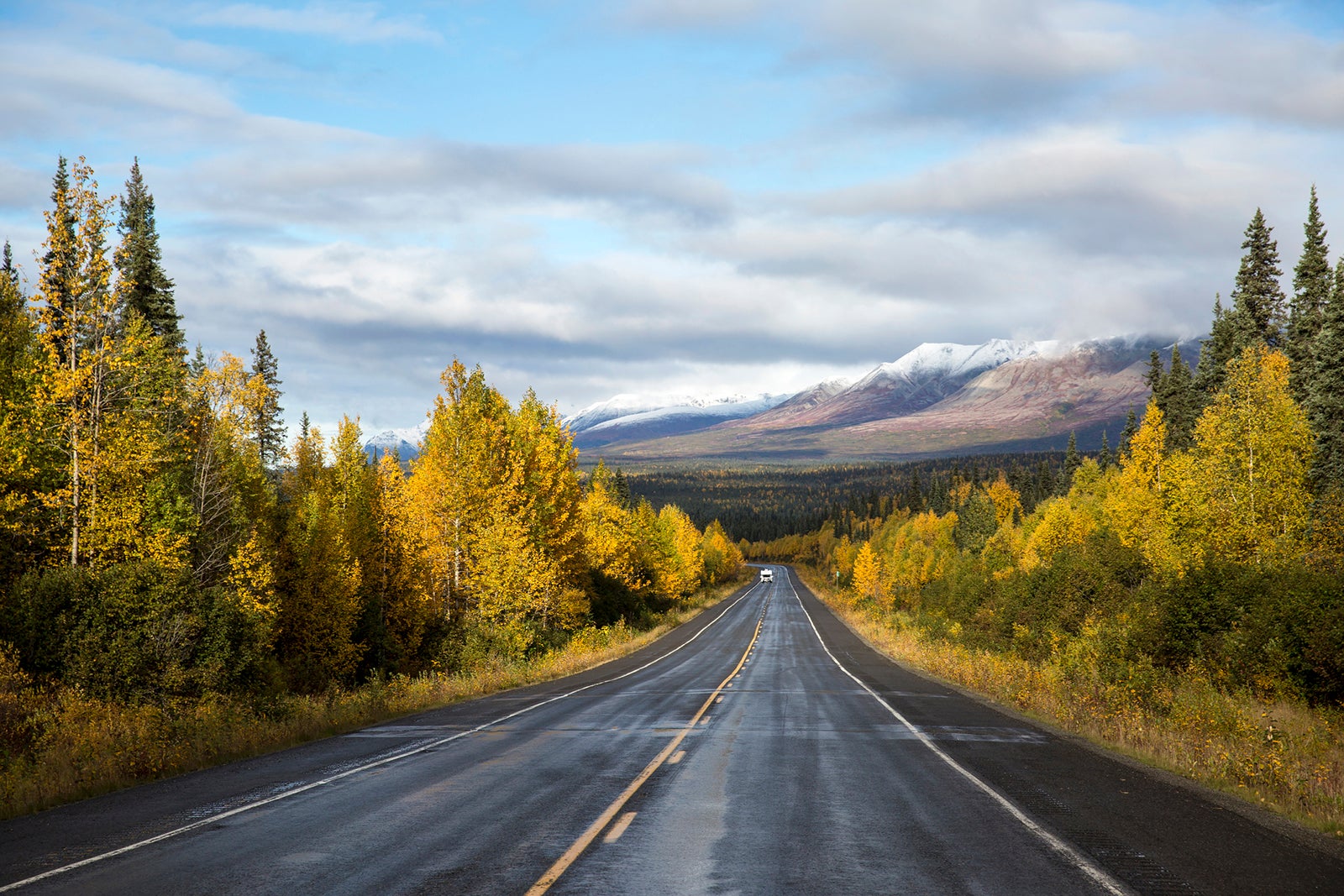
The main stops on this scenic journey are at roughly two-hour intervals along two of the state's principal thoroughfares: the George Parks Highway and the Glenn Highway (closer to Anchorage). The mostly two-lane (and four-lane in and around Fairbanks and Anchorage) roads are labeled Highway 3 and Highway 1, respectively, on maps. Alaskans never speak of highway route numbers, so refer to them by their proper names to avoid receiving blank stares from locals.
Although there are very few towns on the northern stretch of this route, you'll rarely be more than 40 miles between gas stations. Keep your tank above a quarter full, and you'll be fine. Wildlife, including moose and bears, are commonplace; stay alert, stick close to posted speed limits and heed "animal crossing" signs. Cell service is spotty north of Talkeetna, so download maps in advance.
Car rentals are expensive in Alaska during the high season (late spring to early fall). One-way, one-week rentals in Fairbanks and Anchorage start around $1,500. The price drops by as much as 50% if you pick up and drop off at the same location, so consider adding an extra day to this trip to return to where you started. Without stops, the drive between Anchorage and Fairbanks is six hours.
DIY versus an organized tour
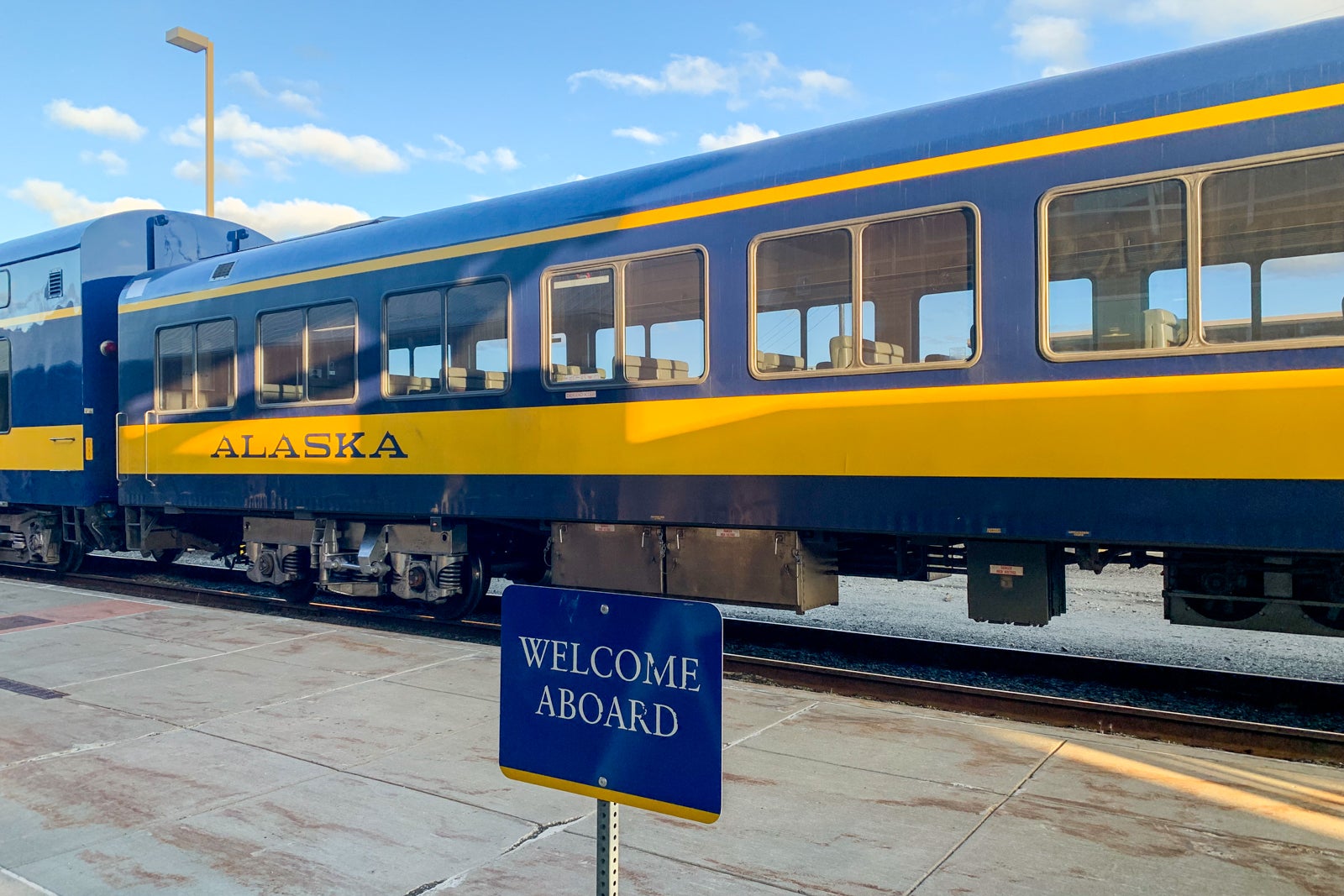
For road trip fans, exploring Southcentral Alaska by car is a joy. You can go at your own pace, choose cozier and quirkier restaurants and accommodations, and pull off to snap a photo of a moose or bald eagle at whim.
The vast majority of visitors to this part of the state travel by way of a glass-domed or picture-window train tour on the scenic Alaska Railroad, a luxury motor coach tour or some combination of the two. All major cruise lines with itineraries that start or end in Whittier or Seward offer these as pre- or post-trip excursions, typically spanning two to five days.
You can also book these trips directly through popular companies like Alaska Tours (from $1,759 per person, double occupancy, for five nights by motor coach and train) or directly through the Alaska Railroad . The latter offers several packages that cover Anchorage, Denali and Fairbanks, usually in combination with Seward or Whittier (from $3,795 per person, double occupancy, for seven nights by train).
Given the steep cost of rental cars and hotels in summer, you won't save money traveling on your own versus taking a group tour. The prices are similar for comparable levels of comfort. But a do-it-yourself road trip is easy to plan thanks to this region's tourism-friendly infrastructure. So, if you prefer the freedom of hitting the open road at your own pace, free from a group, an independent road trip is the right option.
Budgeting your time
At a brisk pace, you can see the major attractions on this trip in five days and four nights. For a more relaxing experience, allow a week.
Getting to Fairbanks or Anchorage
This itinerary begins in Fairbanks, the largest city in the upper half of the state. You could also drive it in reverse, beginning in Alaska's largest metropolis, Anchorage.
Fairbanks International Airport (FAI) is served by most major airlines, with direct flights at least once daily from northern and western Lower 48 hubs. Ted Stevens Anchorage International Airport (ANC) offers many more flights and connections, including several direct international routes.
The best months to visit central Alaska
The best and only practical time period for this trip is mid-May through early October. There are great reasons to visit Fairbanks and Anchorage in winter — like seeing the northern lights and watching dog-sled races — but road-tripping isn't one of them. Driving conditions can be hazardous during this time, and services in or near Denali National Park are extremely limited in winter.
You'll encounter the biggest crowds and steepest hotel rates from mid-June through Labor Day, but this is also when you're likely to experience the best weather. You'll find partly sunny skies with some rain possible; temperatures are mild, with average highs in the 60s. Fairbanks in mid-June can be a lot of fun when you experience the true midnight sun. All summer, the region's long days provide more time to hike and avoid driving in darkness.
Fairbanks to Denali National Park
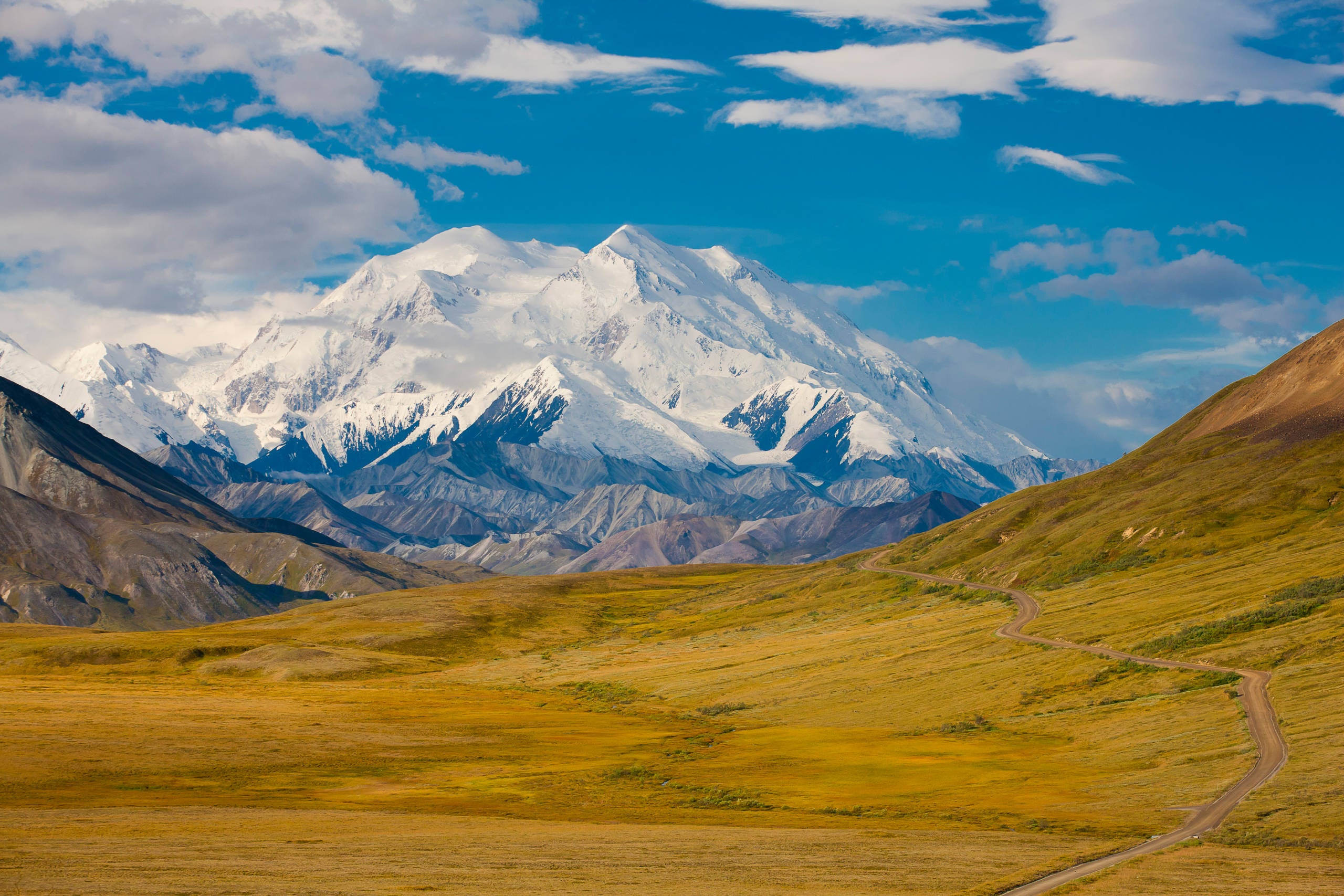
Alaska's second-largest city (with a population of around 32,000), Fairbanks is a friendly, slightly sprawling expanse of gently undulating woodland. It's bisected by the snaking Chena and Tanana rivers. The city is about 120 miles south of the Arctic Circle, and it's the first large community visitors reach when driving to Alaska from Canada via the legendary Alaska, or Alcan, Highway.
Visit the sleek, contemporary Morris Thompson Cultural & Visitors Center downtown. As with any visitor center, you can pick up brochures and ask the staff for sightseeing advice. However, the building also contains a superb (and free) museum about human and natural history. Walk through the series of life-size dioramas that touch on Native Alaskan culture, local flora and fauna and archaeology. Then, go outside to the walking path flanking the Chena River to snap a selfie beneath the Moose Antler Arch, fashioned from more than 100 antlers.
Then, stroll west along the river and then south a couple of blocks into the heart of downtown and grab breakfast or lunch at the locally beloved Crepery or dinner at refined Lavelle's Bistro .
The city's other must-see attraction is the Museum of the North , set in a striking, angular building on the hilltop flagship campus of the University of Alaska Fairbanks. The museum's great draws are the natural history exhibits — which depict seals, caribou and a gruff-looking, nearly 9-foot-tall grizzly bear.
Don't overlook the excellent gallery on the second level: It's filled with works by generations of Alaskan artists. As you climb the staircase, behold the 42-foot-long skeleton of a bowhead whale on one side and the vast panoramas south toward the Tanana River Valley and Alaska Range through the window. The museum shop has an exceptional collection of Alaskan-made art and crafts.
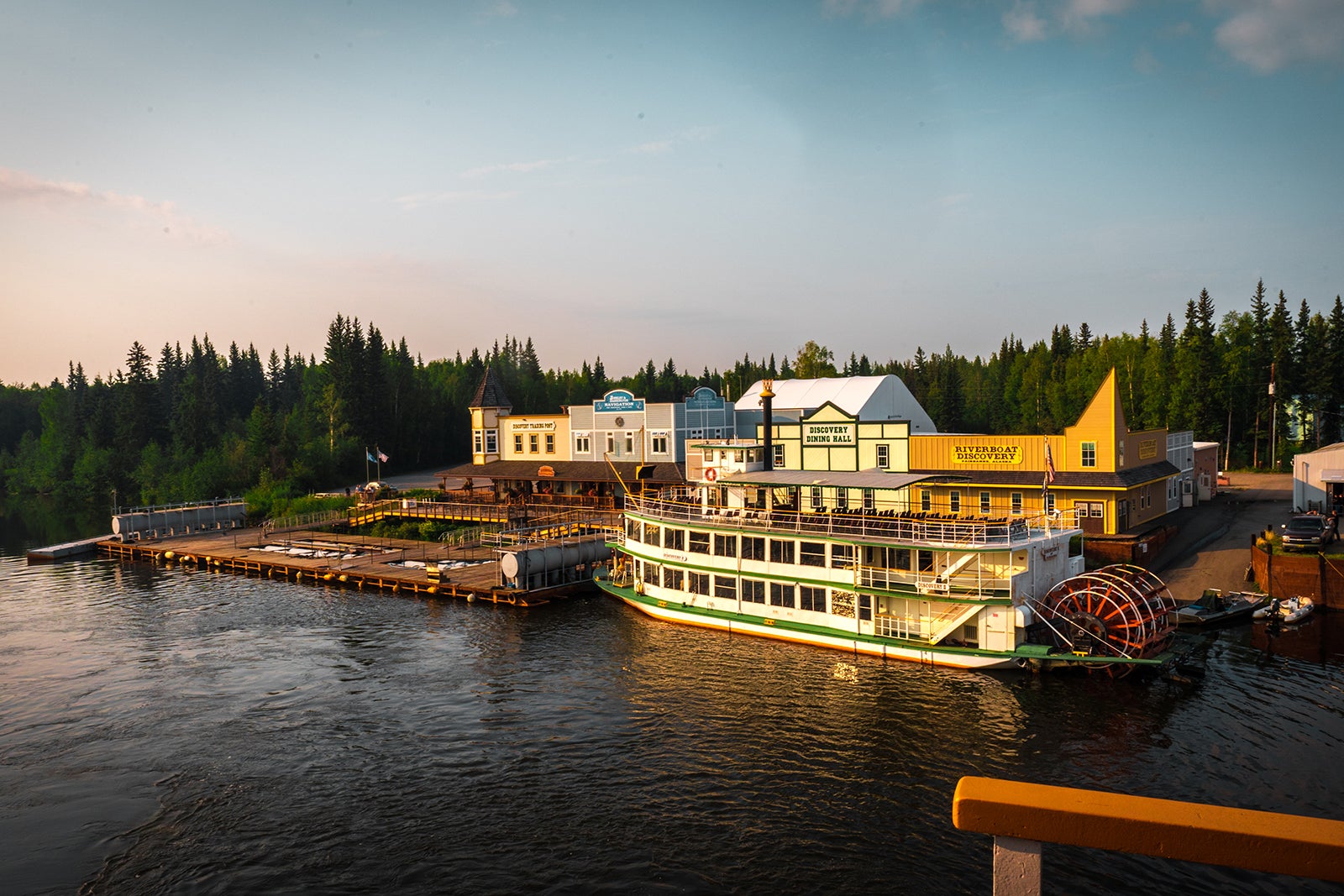
For a different perspective on the landscape, book a three-hour narrated cruise on the Riverboat Discovery , a vintage stern-wheeler that plies the Tanana and Chena rivers. The Tanana Valley Farmers Market — open Wednesday and Saturday in summer — is worth a stop for its bounty of local foods and crafts.
The Fountainhead Antique Auto Museum also stands out. It holds more than 70 vehicles inside — many of them rare. They nearly all date to the pre-1940s and have been meticulously restored. Beside the cars is an equally impressive trove of period fashion, with photos of intrepid adventurers driving their early autos across the formidable Alaskan landscape, often through mountains of snow, on the walls. It's inspiring material for your road trip through the Last Frontier.
The drive to Denali National Park is a straight shot about 120 miles down George Parks Highway. Immediately southwest out of town, the road climbs steadily into the hills before dipping about 60 miles later to cross a dramatic bridge over the Nenana River, where it enters the larger Tanana.
Pull off the highway for a quick look around Nenana village. Stop by the Historic Alaska Railroad Depot, walk along the river, and drop into rollicking old Moochers Bar for an Alaskan beer. It's a little less than an hour from Denali.
Optional side trip to Chena Hot Springs
Before leaving Fairbanks for Denali, consider making this one-hour side excursion in the opposite direction. About 60 miles northeast, Chena Hot Springs Resort is a funky and remote 440-acre resort run entirely on renewable geothermal energy. It's most popular for its indoor and outdoor soaking pools, and in winter, it's a magical viewpoint for the northern lights. It's a pleasure to soak in the two spring-fed pools, which maintain a temperature of 82 to 86 degrees.
At this tranquil property, you can explore the Aurora Ice Museum, book a sled-dog kennel tour or horseback ride, dine in the excellent geothermal greenhouse-to-table restaurant, sip appletinis out of ice goblets, and even spend the night in the simple but pleasant lodgings.
The drive here through mossy forests is super-relaxing until you spy a giant moose bathing in one of the roadside ponds. At this point, you'll want to (carefully) pull over and snap some photos from a safe distance. The odds of seeing these towering ungulates increase early or late in the day as you pass through Chena River State Recreation Area, within about 15 miles of the resort.
Where to stay near Fairbanks
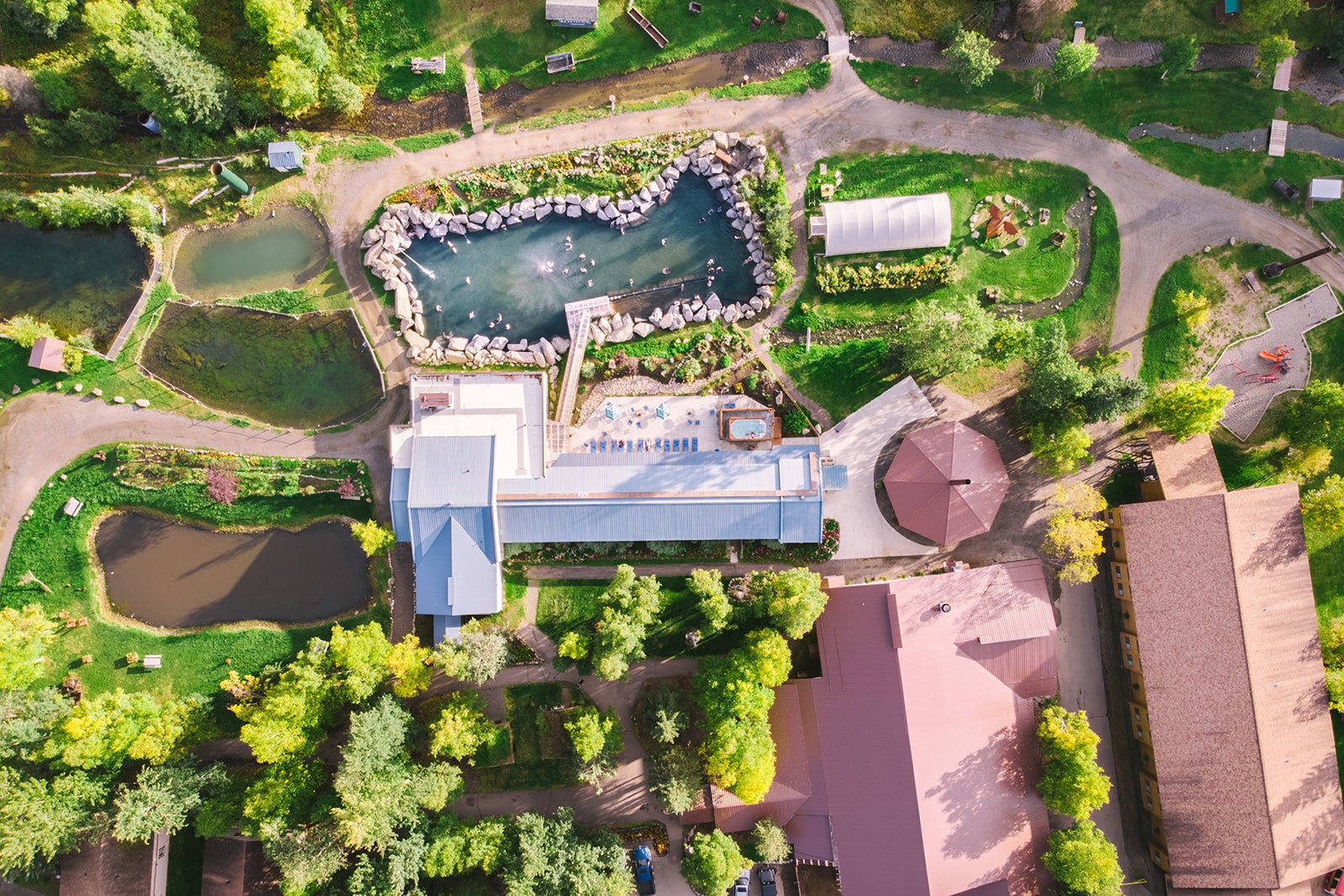
Wedgewood Resort (rates start at $279 per night) is a comfortable option, a short drive from downtown but with a quiet parklike setting. (Fountainhead Antique Auto Museum is on the grounds.)
Close to the airport and set along a pretty expanse of the Chena River, Pike's Waterfront Lodge (rates start at $234 per night) has several distinctive amenities: an aromatherapy steam room and dry sauna, a theater showing films about the northern lights, a speakeasy-style billiards lounge and a very popular riverfront restaurant.
Chena Hot Springs Resort (rates start at $210 per night) has 86 hotel rooms, plus cabins and yurts. If you're not in a rush, it's worth spending a night here. The setting is magical.
Denali National Park to Talkeetna
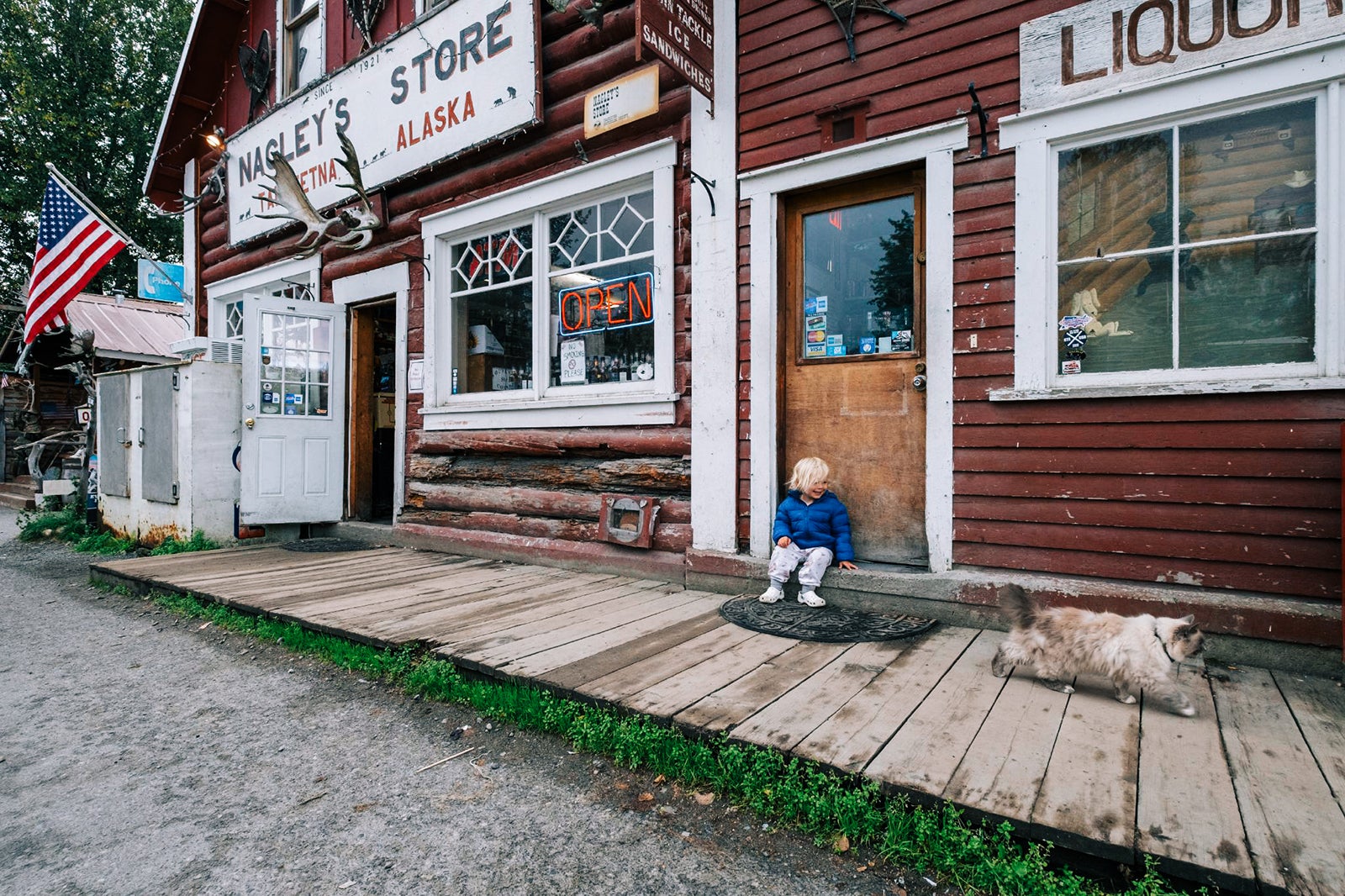
As you approach Denali National Park from Fairbanks, you'll first pass through Healy, a diminutive, laid-back town with several lodging options and restaurants. It's far less commercial than the strip of eateries, tour businesses and hotels 10 miles farther south — just outside the park's main entrance — known as "Glitter Gulch."
Though convenient, Glitter Gulch teems with park visitors. However, it's home to Prospector's Pizzeria & Alehouse — a must-stop for outstanding pies piled with inventive ingredients and an exceptional list of Alaska craft beers.
Set aside a couple of days to explore Denali National Park . The vast majority of this 7,408-square-mile park is untrammeled wilderness, and there are just two ways to explore it in a vehicle.
The most popular way is to book a ride in one of the green school buses that plies Denali's 92-mile park road. Alas, in 2021, the massive Pretty Rock Landslide washed out this gravel byway at mile 43. Until a mammoth rebuilding project is completed around summer 2026, buses can travel only as far as mile 43; the gorgeous and hugely popular Eielson Visitor Center (at mile 66) is closed.
Your other option is to drive into the park, but private autos are permitted only as far as mile 15 of the park road, at the Savage River picnic area. Still, given that the scenery along these first 15 miles is arguably even more beautiful than on the additional 28-mile stretch accessible to park buses, driving your car is arguably the more enjoyable option. You can go at your own pace, and you're guaranteed a good view out your car window. Best of all, you don't have to scramble for a seat on a crowded bus.
The parking lot at Savage River can fill up, however, so try to go when it's less crowded (either early in the morning or late in the afternoon).
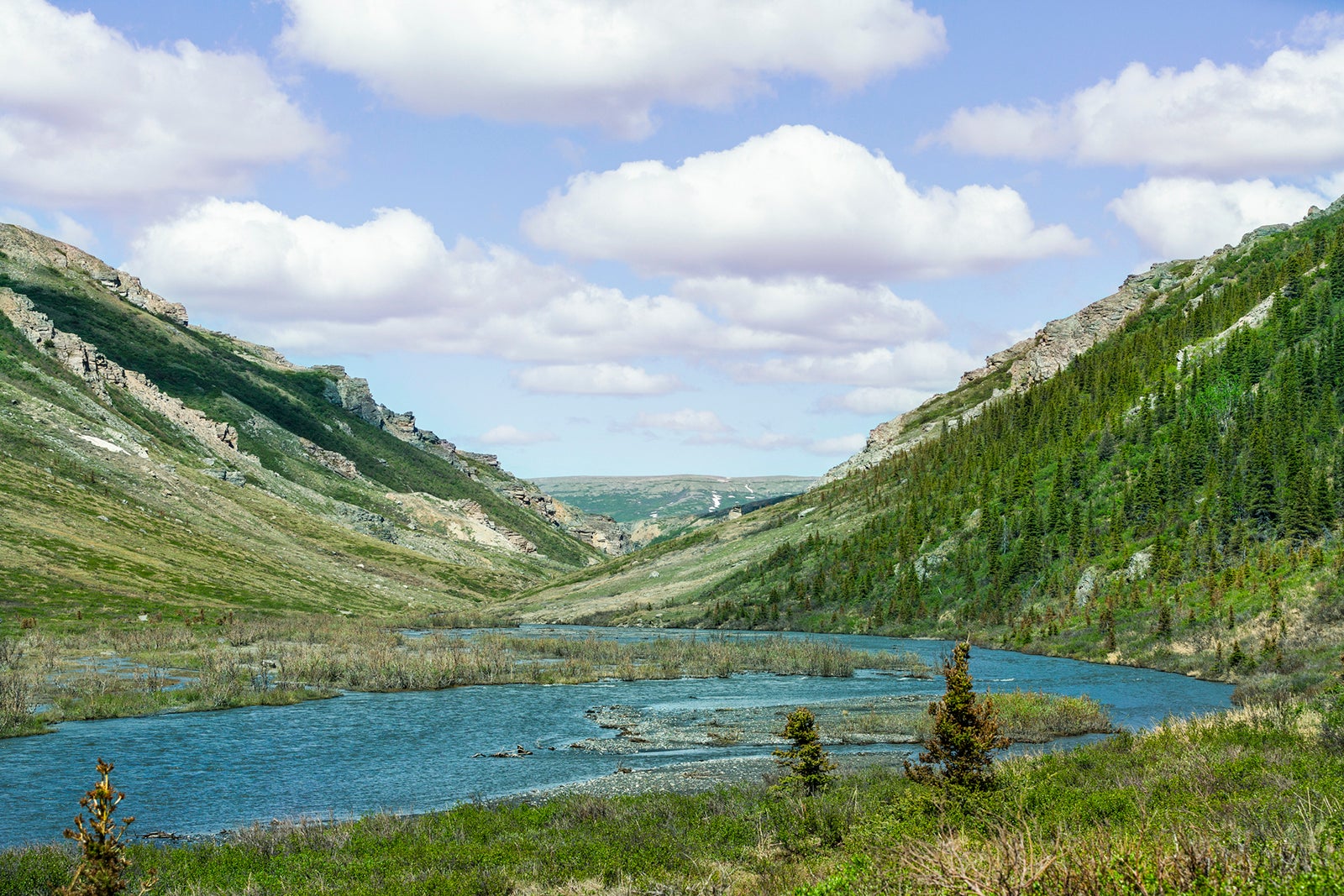
Whether you drive or take the bus, you should visit Savage River. From here, you can access two of the park's best hiking trails. The easy 1.7-mile round-trip Savage River Loop Trail meanders through a breathtaking river valley. Departing from the same trailhead, the moderately challenging Savage Alpine Trail (4.2 miles one-way or 6.5 miles as a loop) climbs about 1,500 feet over a craggy, wildflower-strewn ridge with astounding views before descending to Savage River Campground. From here you can flag down a bus or walk along the Park Road the final 2.3 miles back to where you started.
During your visit, you may glimpse the park's namesake 20,310-foot-tall peak. However, Denali has fickle weather, and the summit is often shrouded in clouds, even when it's sunny at Savage River. The park is about more than just the mountain, though. Near the park entrance, there's a lot to see around the main visitor center, including the sled-dog kennels at the park headquarters and several outstanding hikes. One of the best is the 4-mile round-trip jaunt to Horseshoe Lake.
For the most memorable views of the park, consider splurging on a flightseeing excursion. Several reputable outfitters offer this, like Healy-based Fly Denali and Talkeetna's K2 Aviation , one of Alaska's best and longest-running flightseeing companies.
K2's one- to two-hour tours fly directly over the park's awesome peaks and massive, blue-tinted glaciers, offering eye-popping, up-close views and (weather permitting) a great look at Denali Peak. For an extra charge, you can book a flight that lands on a glacier, where you can hop out for a quick walk.
To get to Talkeetna, it's a 2.5-hour drive from Denali's park entrance, south down George Parks Highway. The final 14 miles are a jag north on Talkeetna Spur Road.
Where to stay near Denali National Park
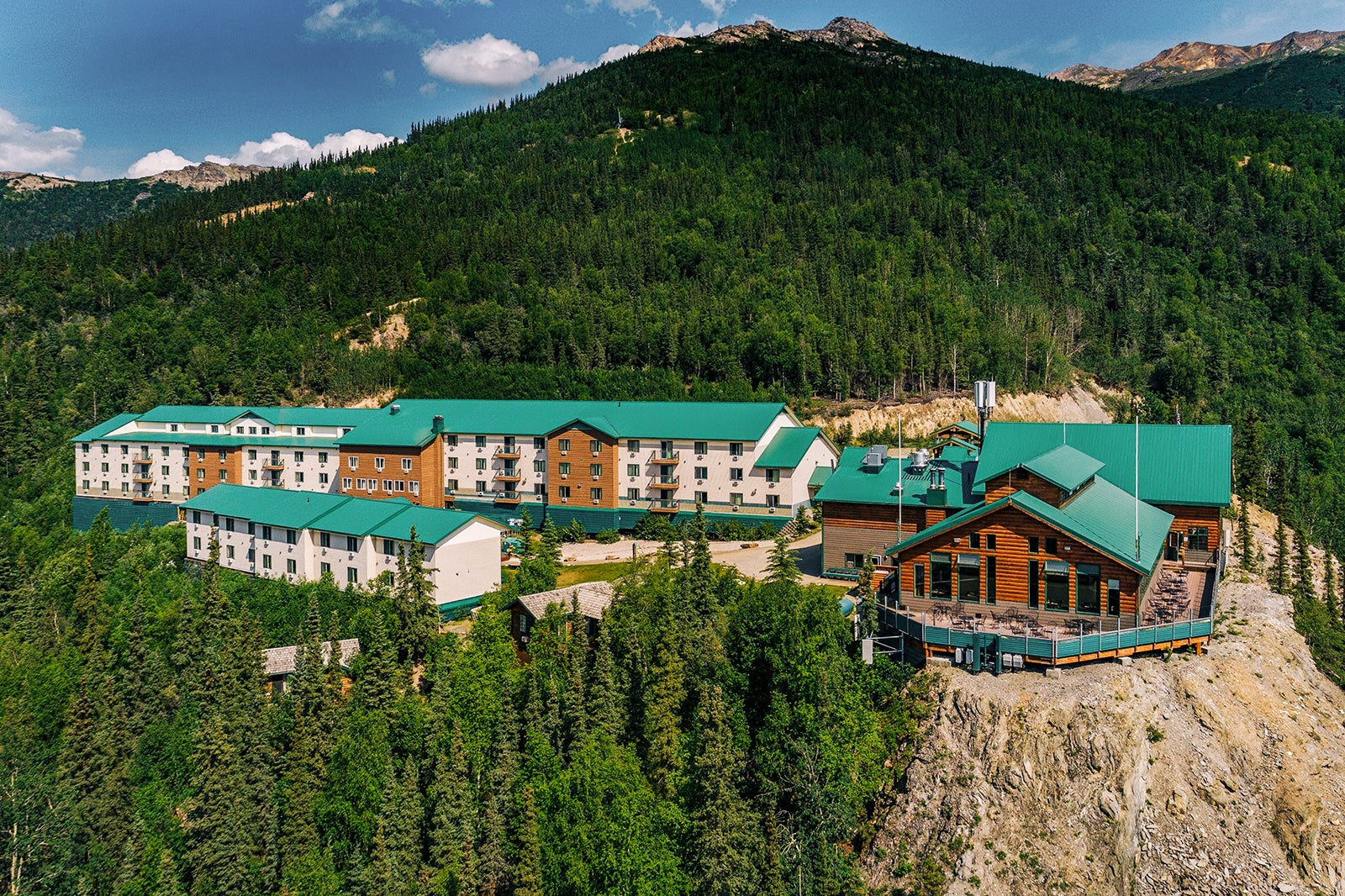
Avoid the crowds from bus and train tours and stay in one of the smaller, slightly off-the-beaten-path accommodations either north of the park in Healy or south of it around Carlo Creek.
A notable exception to this rule is Grande Denali Lodge (rates start at $369 per night). Although it's in Glitter Gulch and is popular with groups, it has a spectacular setting high on a bluff. The lodge is situated away from road traffic and offers fantastic views of the park, including from the terrific Alpenglow restaurant.
About 15 miles south in Carlo Creek, McKinley Creekside Cabins (rates start at $289 per night) is a wonderfully relaxed little compound; it has a cute cafe and bakery and accommodations in 13 cabins and three larger vacation homes.
Talkeetna to Anchorage
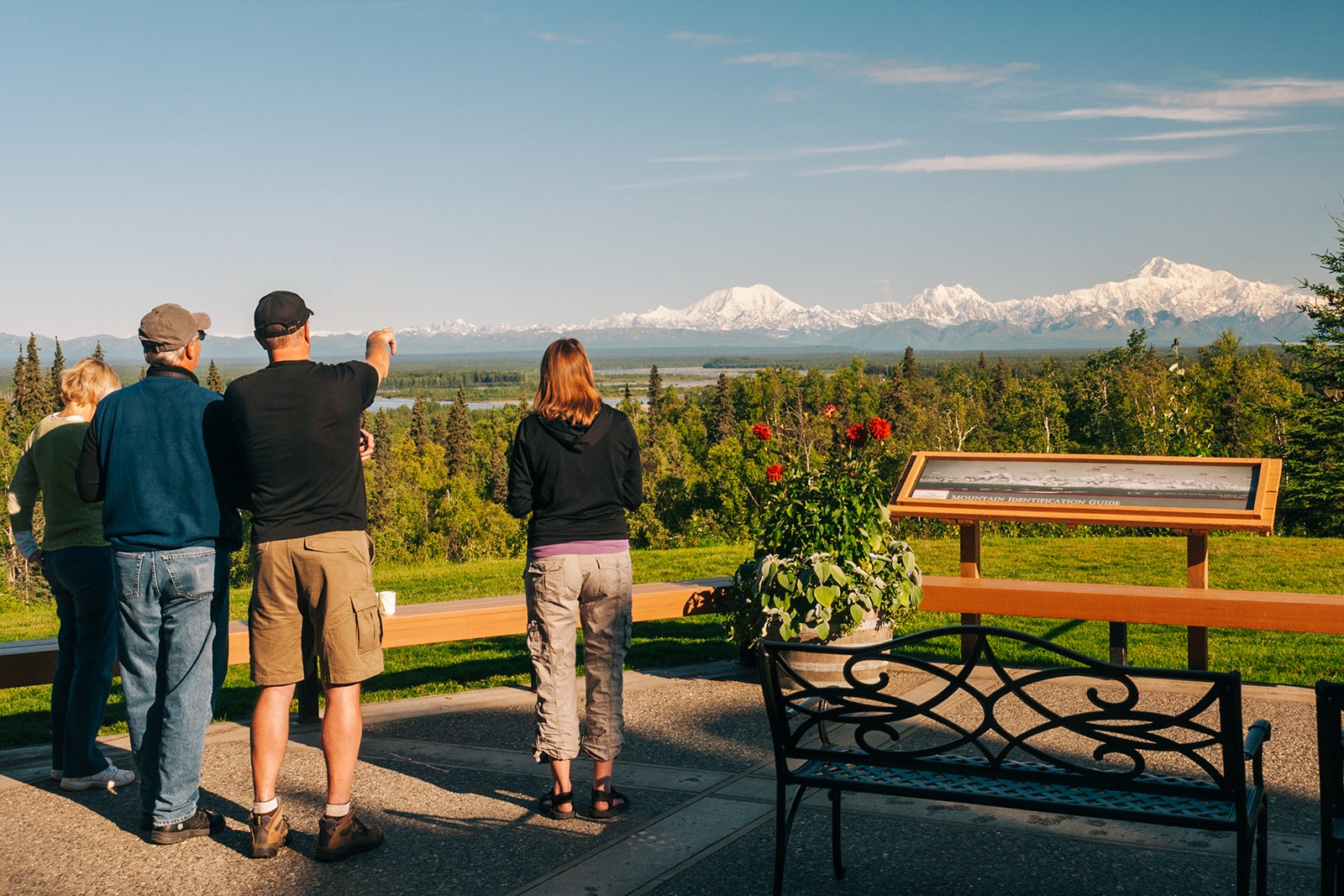
Talkeetna has become a bit more discovered than when it inspired the town of Cicely in the hit '90s TV show "Northern Exposure." It's still endearingly offbeat, though. Its vibe is inextricably linked with Denali National Park, as most who visit the park also spend time here. It's also a popular stop on the Alaska Railroad; when trains come through, the town seems to quadruple in population.
It's an excellent place to spend the night if you're booking one of the town's popular flightseeing tours of Denali, but it's also just a picturesque little town with a fun personality. Also, you stand a better chance of seeing Denali's peak from Talkeetna than you do from the section of Denali National Park nearest to its entrance. Talkeetna Riverfront Park, at the west end of Main Street, is one of the best spots to take in the view.
The town also has an atmospheric 1920s general store, Nagley's, which is the residence of Talkeetna's feline mayor, Denali. (Denali replaced the former mayor, an internationally famous orange manx mix named Stubbs, who passed away in 2017 at age 20.) Talkeetna also has a small but impressive selection of galleries and restaurants. Good bets for a bite to eat include Denali Brewpub for its spacious deck and Homestead Kitchen for its mix of Southern- and Alaska-inspired dishes.
Mat-Su Valley
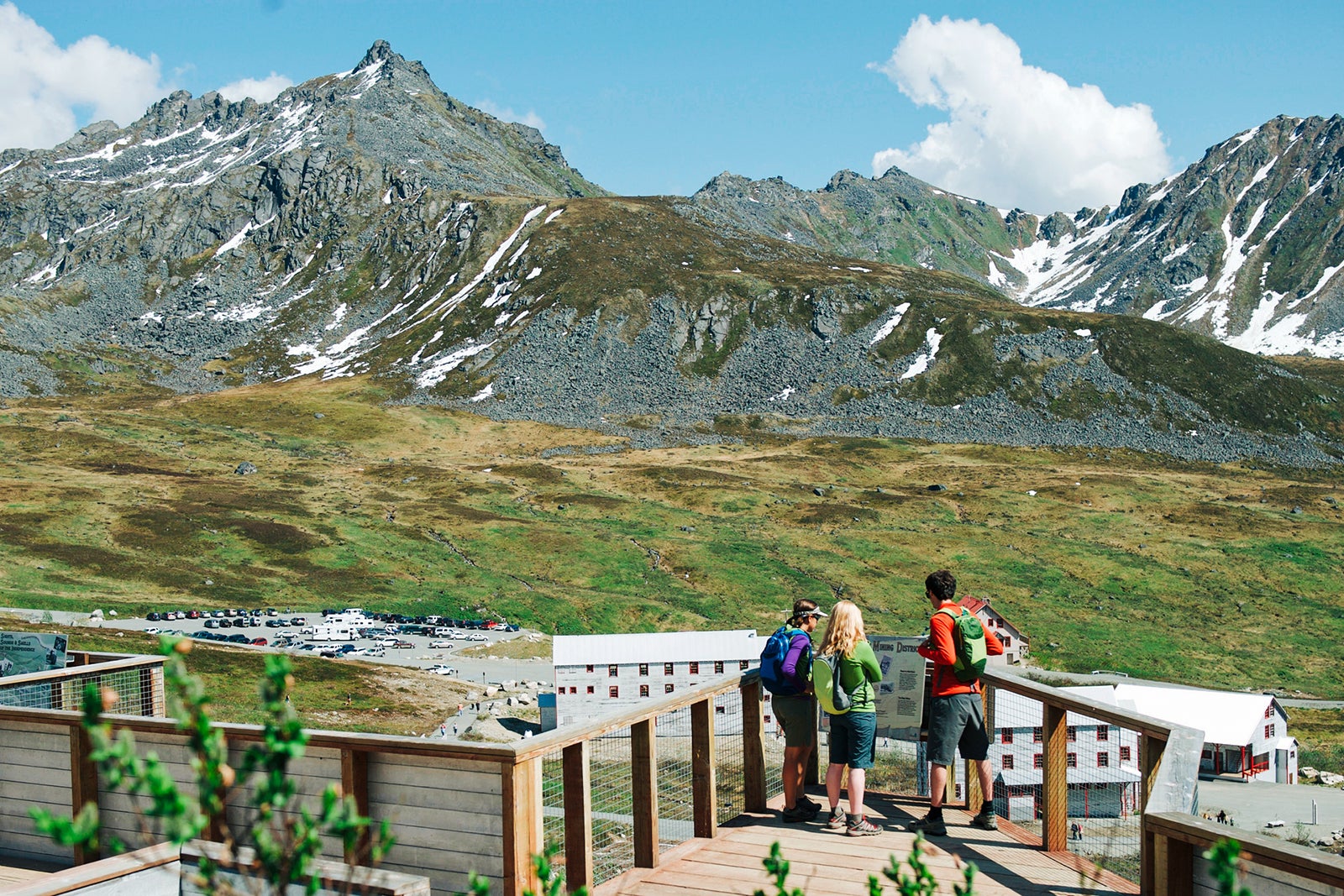
From Talkeetna, after returning to Parks Highway, it's a straightforward drive to Anchorage. It takes about two hours without stops, but there are a few interesting spots to check out en route in the Mat-Su (short for Matanuska-Susitna) Valley. You'll enter the valley about an hour after leaving Talkeetna.
This region is somewhat suburban, especially sprawling Wasilla, which became instantly infamous when John McCain tapped its former mayor and then-Alaska governor Sarah Palin to be his running mate during the 2008 presidential election.
Interesting stops include the Museum of Alaska Transportation Industry and Palmer — a short way up the Glenn Highway past the fork leading to Anchorage. This historic town hosts the Alaska State Fair in late August, which is famous for its humongous produce. (We're talking 138-pound cabbages and 2,000-pound pumpkins.) Alaska's long summer days result in a short but impressive growing season.
Palmer is also home to the Musk Ox Farm , a wonderful nonprofit where you can book a guided "oxperience" to see these gentle and furry Ice Age mammals up close. The Vagabond Blues Coffee House and Palmer Ale House are appealing lunch stops.
Where to stay near Talkeetna
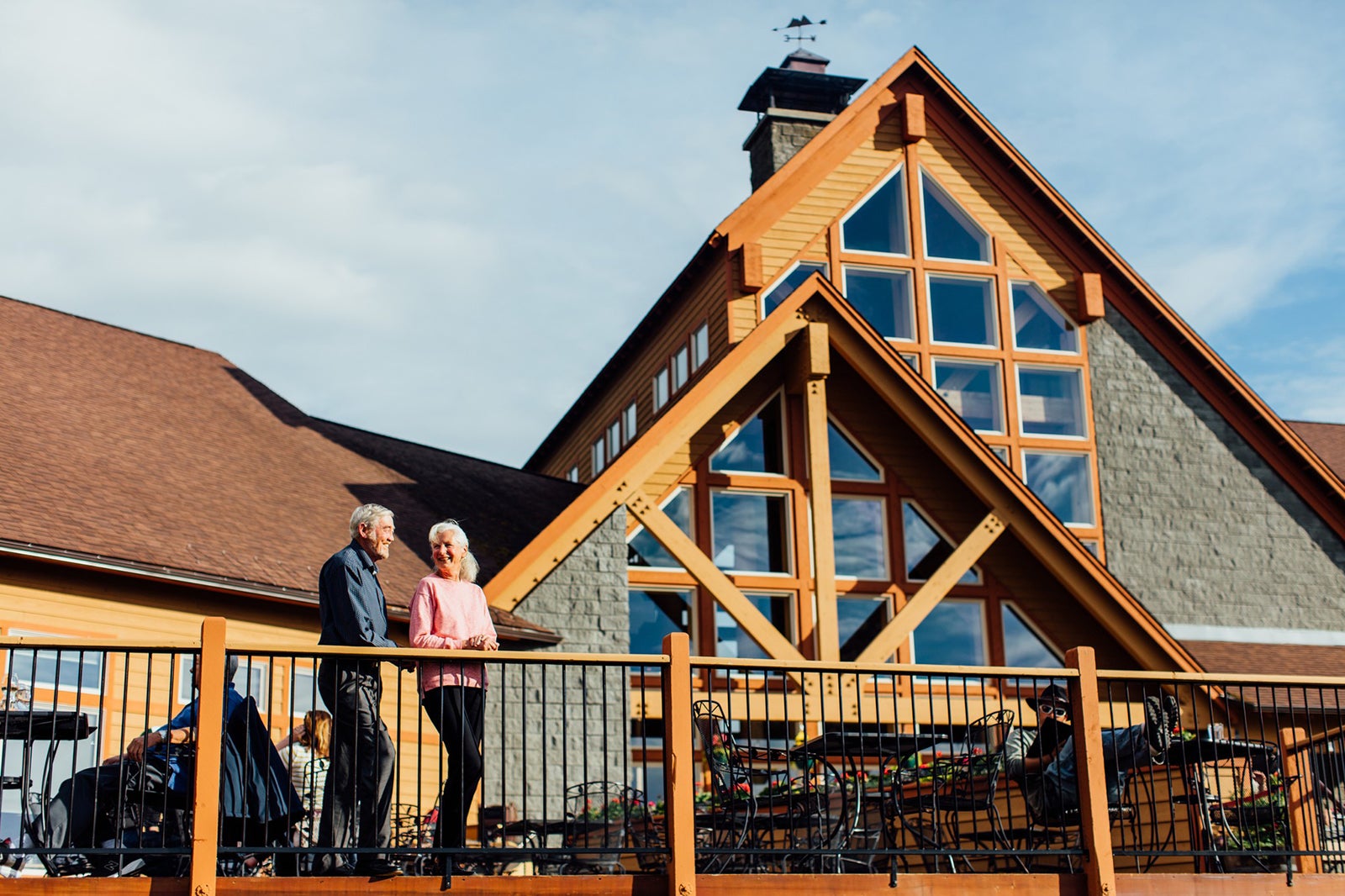
Steps from shops and cafes, Talkeetna Cabins (rates start at $285 per night) is a dapper little complex comprising four modern log cabins and a three-bedroom log house set around a lawn. Each comes with a full kitchen.
It's a few minutes from town and lacks the area's historic funkiness, but Talkeetna Alaskan Lodge (rates start at $299 per night) offers a nice range of creature comforts after a day of driving or hiking (or bouncing around in a tiny flightseeing plane). The property's 212 upscale rooms are set among several buildings. Amenities include multiple restaurants, a gym and a back terrace on a bluff with postcard-worthy views of Denali.
Exploring Anchorage
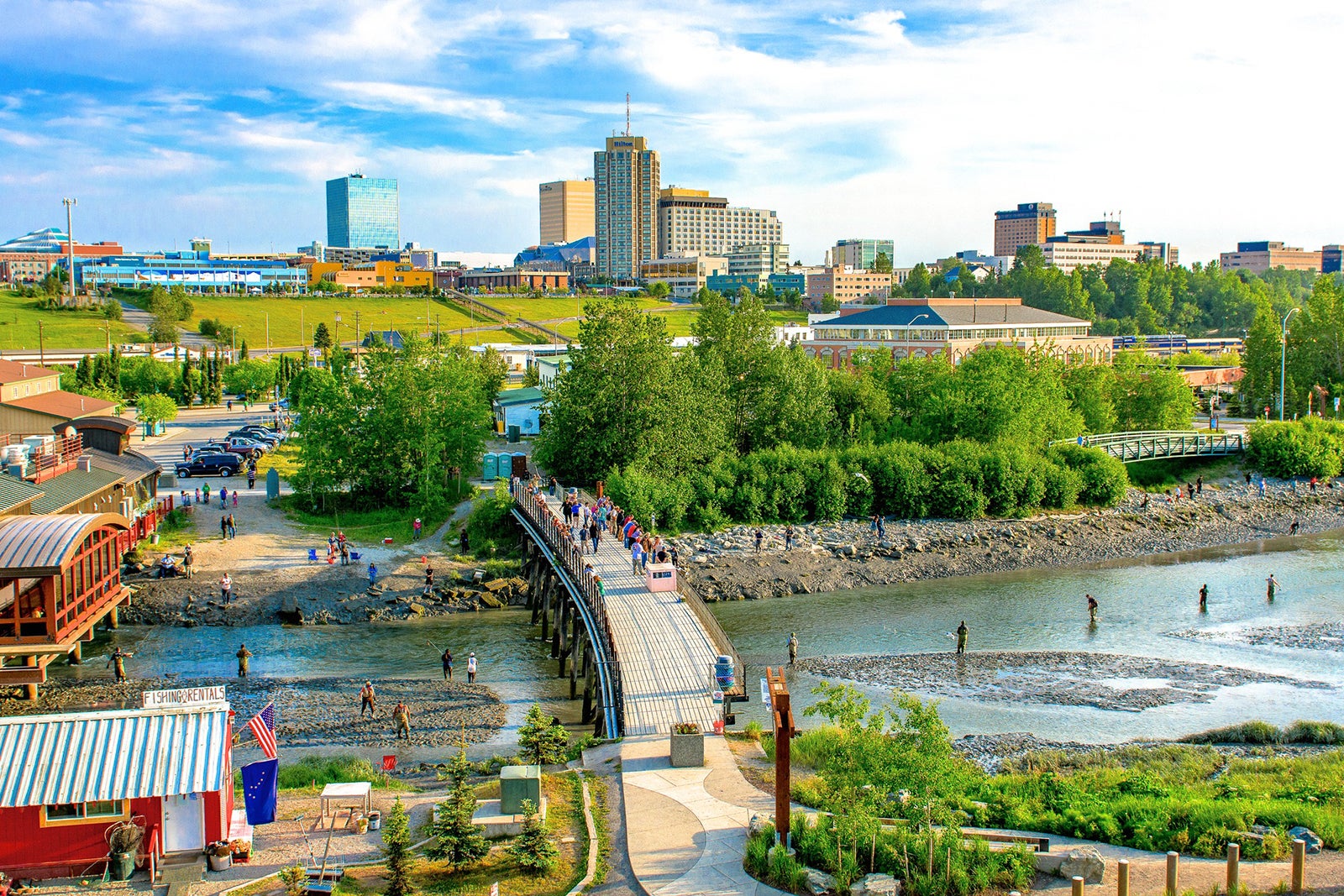
Home to nearly 40% of Alaska's 733,000 residents, Anchorage ranges across nearly 2,000 square miles — an area larger than Rhode Island. With its big-box stores and wide, well-maintained roads, the city can feel oddly familiar and even a bit tame at first. But make no mistake: It's surrounded by rugged wilderness, from the craggy peaks of the immense Chugach Mountain range to the vast waters of Cook Inlet and its Knik and Turnagain arms.
Anchorage is an excellent base for hiking, kayaking, mountain biking and skiing day trips. It's a gateway to the pristine rivers and fjords of the Kenai Peninsula and has a diverse restaurant scene. It's also home to a pair of the state's most impressive cultural attractions: the Alaska Native Heritage Center and the Anchorage Museum.
From Mat-Su Valley, you'll reach the turnoff for the Alaska Native Heritage Center on your way into the city. Opened in 1999, this 26-acre, wooded campus is Indigenous-operated and comprises six village settings that interpret the cultures of the state's 11 Native groups.
Time your visit to watch the engaging demonstrations of traditional games and dances in the central hall. Then, explore the outdoor villages. They are set around a lake and offer the opportunity to converse with tribal members, view crafts demonstrations and listen to stories.
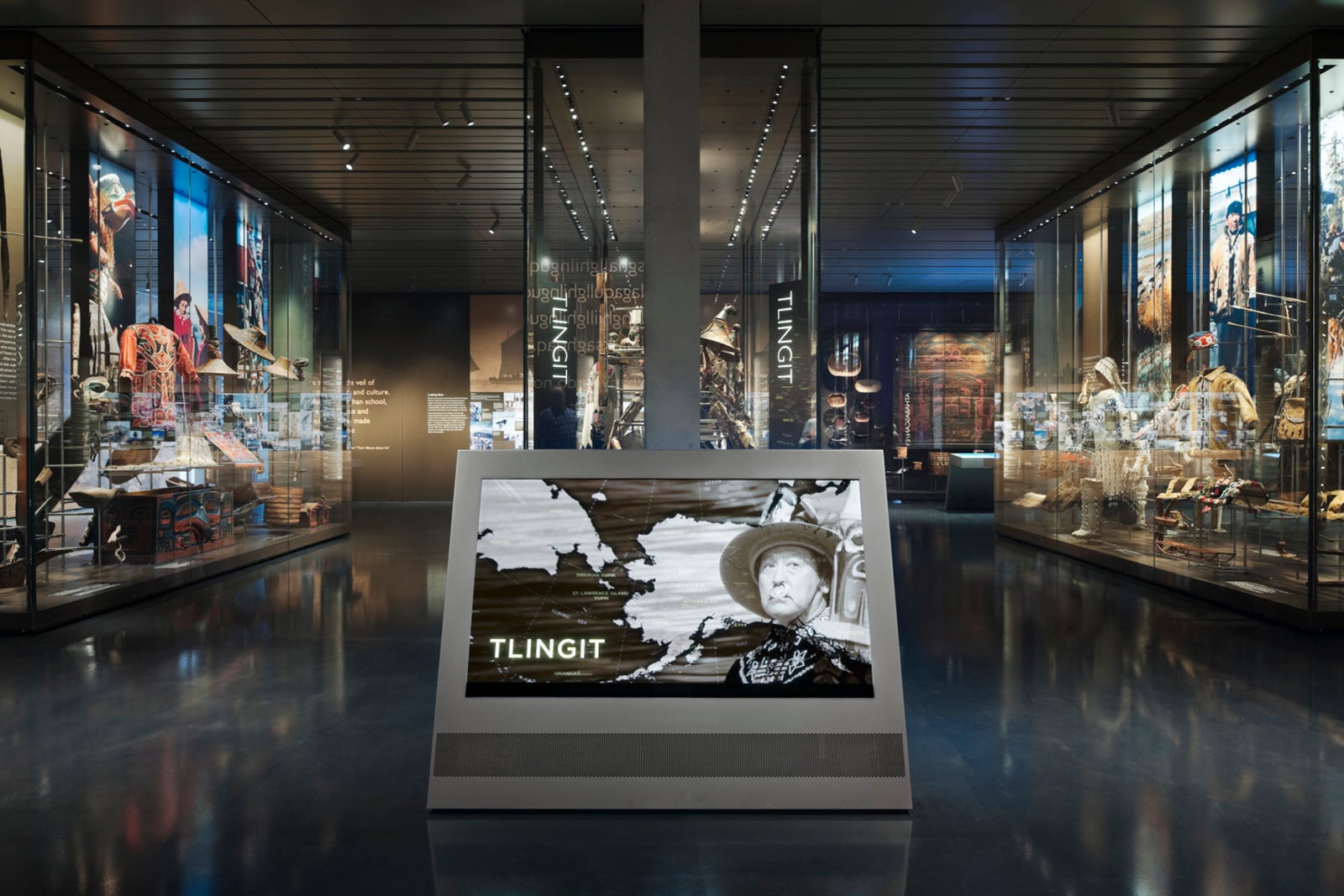
Continue into downtown Anchorage and walk around Town Square Park and along Fourth and Fifth avenues. Pick up a snack from one of the reindeer hot dog carts or have dinner at the trendy restaurant Whiskey & Ramen .
Architecturally, the city is a mishmash. Nearly all of its buildings were constructed after 1964, when the Good Friday Earthquake (which had a devastating magnitude of 9.2) virtually leveled it. The Anchorage Museum occupies a striking glass structure and requires at least two hours to fully explore. It contains the engrossing Smithsonian Arctic Studies Center gallery; it showcases more than 600 Native Alaskan artifacts, including fishing and hunting tools, clothing, masks and wood carvings.
There's also the first-rate Art of the North gallery, a comprehensive Alaska history exhibit, an interactive science and technology center with a planetarium, an always-compelling array of rotating exhibits and an excellent restaurant.
Beyond downtown, two adjacent neighborhoods, Midtown and Spenard, contain many of Anchorage's best restaurants. In the former, duck into Kinley's for inventive modern American fare and Moose's Tooth Pub & Pizzeria for great people-watching.
Spenard notables include Spenard Roadhouse , with its elevated gastropub fare, and Pho Lena , which serves excellent Laotian and Thai food in a modest building that once clearly held a Pizza Hut.
Take in a dramatic view of the city and surrounding Cook Inlet with a climb up to the top of Flattop Mountain, said to be the most climbed peak in Alaska. Although the trail is just 1.5 miles each way, you'll gain about 1,500 feet in elevation.
Where to stay in Anchorage

Within walking distance of many restaurants and attractions, the upscale Marriott Anchorage Downtown (rates start at $391 per night or 43,000 Marriott Bonvoy points per night) rises 20 stories. Rooms on the upper floors have fantastic views of the water and mountains.
In Midtown, Aloft Anchorage is a great choice for road-trippers as it offers free parking and easy access to major roads (rates start at $256 per night or 32,000 Marriott Bonvoy points per night). It's a gleaming four-story property with nice views of the Chugach Range and an inviting lobby bar, a well-equipped fitness room and one of the nicer indoor hotel pools in town.
Related reading:
- Great American road trips for summer 2024
- 6 tips for surviving a road trip with a large family
- How to avoid these 7 mistakes every road tripper makes at least once
- What is the best gas rewards program for saving at the pump?
- 7 best gas credit cards

IMAGES
COMMENTS
Compile all the practical details for each activity, such as operating hours, fees, and booking requirements. Build your itinerary by scheduling must-do activities first and filling in with want-to-dos and nice-to-dos. When planning a travel itinerary, make sure to prioritize your "must-do" sites and activities.
Decide When & How Long You Want To Go For. Set Your Budget. Do Your Research. Make A List Of Activities & Things To Do. Map It Out. Plan Your Transport. Book Your Transport & Accommodation. Create A Calendar. Finalising Your Perfect Travel Itinerary.
3. Write down the dates of your trip under "Dates & Times.". Write each date of your trip on a separate line to create an outline of your travel itinerary. Make a note of any other relevant dates, such as the day you're leaving your home or the day you're moving between cities.
How to Make an Itinerary for Travel. Steps 1 & 2: Choose a Destination & Dates. Step 3: Download an Itinerary Template or Make Your Own. Step 4: Settle on Your Travel Plan & Make To-Do Lists. Step 5: Book Everything in a Careful Order and Fill in the Details. Step 6: Maintain the Itinerary Over Time. Step 7: Travel and Keep the Itinerary Close.
When planning an itinerary, travel times between places are one of the things that people underestimate the most. There can be a difference in what you plan and expect, and reality. To maximize the time of your travels, the starting point of the trip doesn't have to be the same as the ending point. Find the most convenient place to fly into and ...
Step 3 : Create a Travel Budget. The next step in creating your itinerary is to create a travel budget. At this early stage, decide how much you have available to spend on your trip. Grab our free budget planner or make a document with the different categories of trip expenses: transportation, lodging, food & drinks, activities, gear, education ...
Simply put pen to paper or open the Notes App on your phone and get started! Here are the ten steps to creating a travel itinerary: Step #1: Finalize Destination and Time. Step #2: Determine Budget. Step #3: Finalize Dates and Places to See. Step #4: Plan Order of Travel. Step #5: Finalize Dates against Places.
This travel itinerary planning guide and PDF template builds out that vision. Step 1: Research ACTIVITIES and build your itinerary must-dos. Step 2: MAP it out to create a simple trip itinerary. Some travel bloggers recommend booking your flights before deciding on activities or accommodations.
You need a travel itinerary: a plan that outlines the details of your trip. E.g. the dates, times, locations, transportation, accommodation, etc. Travel itineraries include info about flight schedules, hotel booking and tours. A travel itinerary will help you stay organised, keep track of your plans, & ensure you make the most of your time ...
Allocate Time. Assign a reasonable amount of time to each activity, taking into account travel time, visiting hours, and potential waiting times. Be mindful not to overcrowd your schedule, as it may leave you feeling rushed and exhausted. Allow for flexibility and some downtime to explore spontaneously or relax.
The best group itinerary planner. Use Wanderlog to share your itinerary with tripmates, friends, and families and collaborate in real time, so everyone stays in the loop. Plan your road trip or vacation with the best free itinerary and road trip planner. Wanderlog lets you to make itineraries with friends, mark routes, and optimize maps — on ...
Step 2: Go To The Search Section. Once you're logged into your dashboard, go to the menu bar and click on "My Trips". Then, click on "Create a new trip". You can give it a name. Then, you'll see a search section. Click on the button "Show" to search for flights, hotels, and activities.
Here are some important steps to guide you on how to plan an itinerary for your next trip. That way, you get the best of both worlds and can execute it professionally. 1. Pre-Planning. Pre-planning your trip is the key to a joyful journey. You couldn't possibly skip the pre-planning step if you want a seamless trip.
Add your flight numbers, hotel addresses, maps, etc. to your itinerary file for easy access. All my itineraries include this information, plus the currency exchange rate (so I know how much 1 US dollar is worth in the country). It is much easier to look at one file then have to scroll through dozens of emails or check different apps to find ...
Make your ideas list. The first step to making an itinerary is to create your ideas list. Have a travel notebook, or an ideas board or use a travel planner app to make a note of your dream destinations or location wish list. Whether you have a few vague ideas - "Australia", "Europe" or something specific like "seeing the Himalayas ...
1 Week Trip: Base yourself in one destination and explore it well - possibility to include day trips to nearby areas. 2 Week Trip: As above, or select 2 different destinations within the same country and explore them both for 1 week each or, plan a backpack-style trip (moving every couple of days) in a small country.
6. Make a map. A list is great to get an overview of what you want to see, but it's not the best way of planning an itinerary. You want to avoid wasting too much time on needless transportation between places, so setting up your itinerary in an efficient way is really important.
Prioritise your list of activities and sites based on your itinerary, budget, and how much time you have. Repeat step 8 (above) for every area or city you want to visit. Then start filling out each day of the itinerary with things to do in the morning, afternoon, and evening.
Road Trip Planner - Build your itinerary and find the best stops. Roadtrippers offers an automated road trip planner. Let us do the planning for you! Enter in a few key details and we'll craft a custom tailored trip just for you. Choose the right plan for you—and try it free for 7 days. All plans include access to curated trip guides ...
5. Add the locations of any places you want to visit to your map. A white box will appear with some additional information on the location. At the bottom of this box, there will be a text that says "Add to map.". Click on this text, and it will appear on the white box on the left side of your screen.
Everything in one place. Gather the pieces of your plan: itinerary, budget, & important documents. Plan That Trip is here to take the hassle out of your trip planning process. We eliminate the clutter of traditional planning methods by combining various planning aspects into one intuitive interface.
Step 2: Make a Travel Budget. After we have an idea of where we want to go, our next step is to make a travel budget. We try to think of every expense we will have on that trip, from flights, lodging, a rental car, dog sitter, food, activities, gas, and more. This helps us get an idea of how much we will spend and to see if we can realistically ...
Step 4: Research and Map It Out. Now that you've booked your flight, it's time to plan out the itinerary! I love doing this in Google Sheets in my trip itinerary sheet (subscribers get this, too), but you could also create a Google Map.It's definitely helpful to have maps pulled up as you do this in general because you want to know about distances and locations.
As you plan your road trip itinerary, let the road guide you, but remember to have a well-thought-out plan. With our guide, you're well on your way to experiencing the joy of a life-altering road ...
Need to do a little Hawaii research before you start planning? Check out these "know before you go" tips from the travel experts at Hawaiian Airlines.. STEP 2: CHOOSE THE BEST HAWAIIAN ISLAND FOR YOUR NEEDS . Hawaii is home to 137 islands and atolls, but four attract the lion's share of tourists each year.
Travel Resources For Your Next Trip. If you're in the process of planning your trip and putting together your itinerary, these are genuinely the best resources that the Going Awesome Places team stands by 100%. Credit cards: Don't get burned by hidden fees on top of terrible exchange rates. When we travel now, we use the Wise Card. Simply ...
If you're considering a trip to South Korea, you're in for an unforgettable adventure!From the bustling streets of Seoul to the tranquil beauty of Jeju Island, South Korea offers a blend of modernity and tradition that you won't find anywhere else.This 7-day itinerary will help you discover the best domestic travel destinations in South Korea, ensuring you get the most out of your visit.
The prices are similar for comparable levels of comfort. But a do-it-yourself road trip is easy to plan thanks to this region's tourism-friendly infrastructure. So, if you prefer the freedom of hitting the open road at your own pace, free from a group, an independent road trip is the right option. Budgeting your time
Tips to Plan Business Trip Smoothly. Proper business travel arrangements pave the way for a successful and smooth business trip. Follow these three tips to help plan your business trips systematically. 1. Prepare everything in advance. Be grateful if your company already manages the transportation and accommodations, because it is a great ...